- SELF-TIMERS
- FLASH GEAR
- TYPES OF LENSES
- FILTERS
- DARKROOM EQUIPMENT
- PROJECTORS & VIEWERS
- TRIPODS
- MISCELLANEOUS
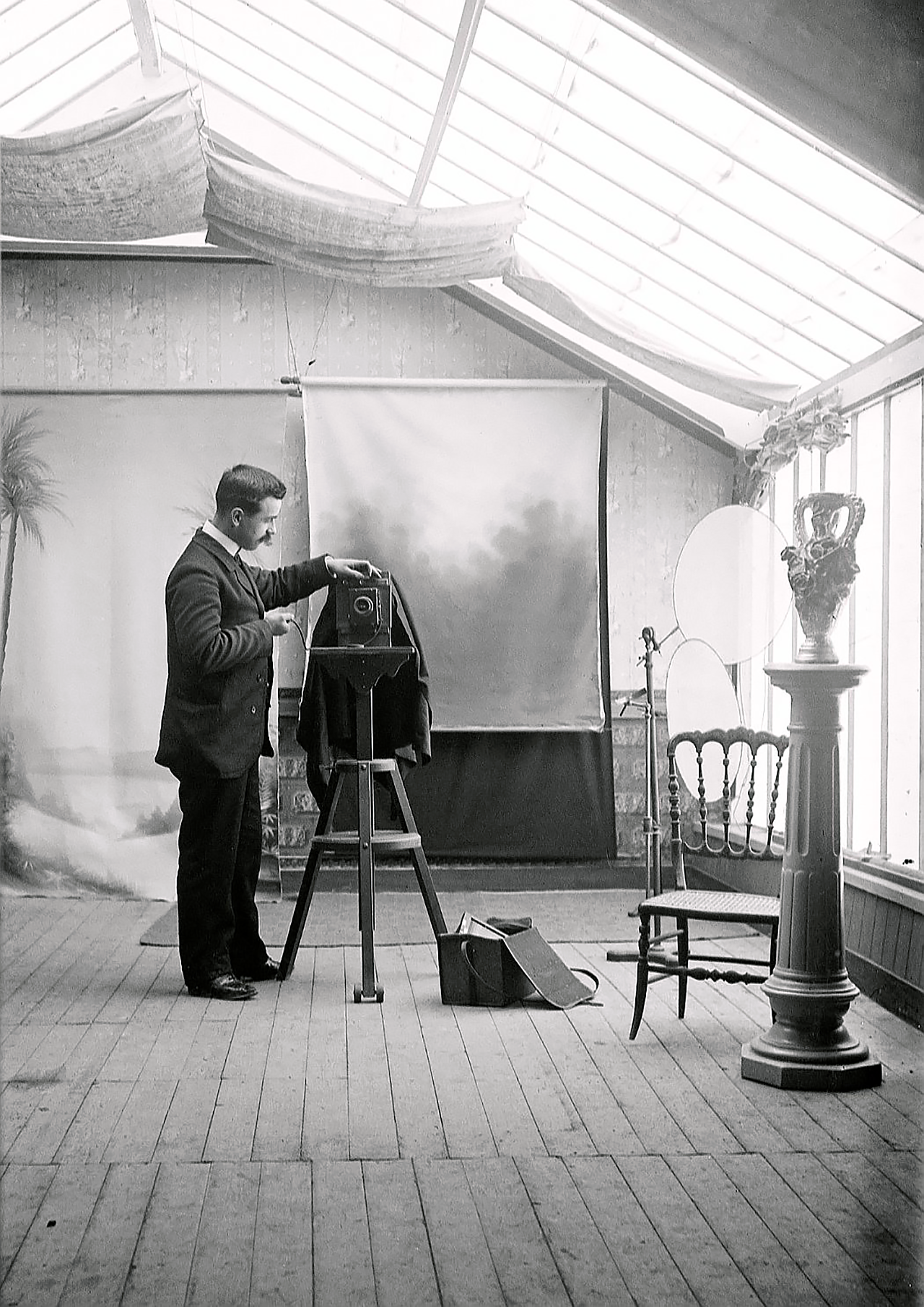
The history of photographic studios and photography dates back to the 1840s with the invention of processes for recording camera pictures, by Henry Fox Talbot and Louis Daguerre. The earliest photographic studios made use of natural daylight to create photographic portraits. As already used by artists, a northern light with no direct sunlight was favoured. The studio of the French photographer Amédé Fleury shows clearly how important daylight was.
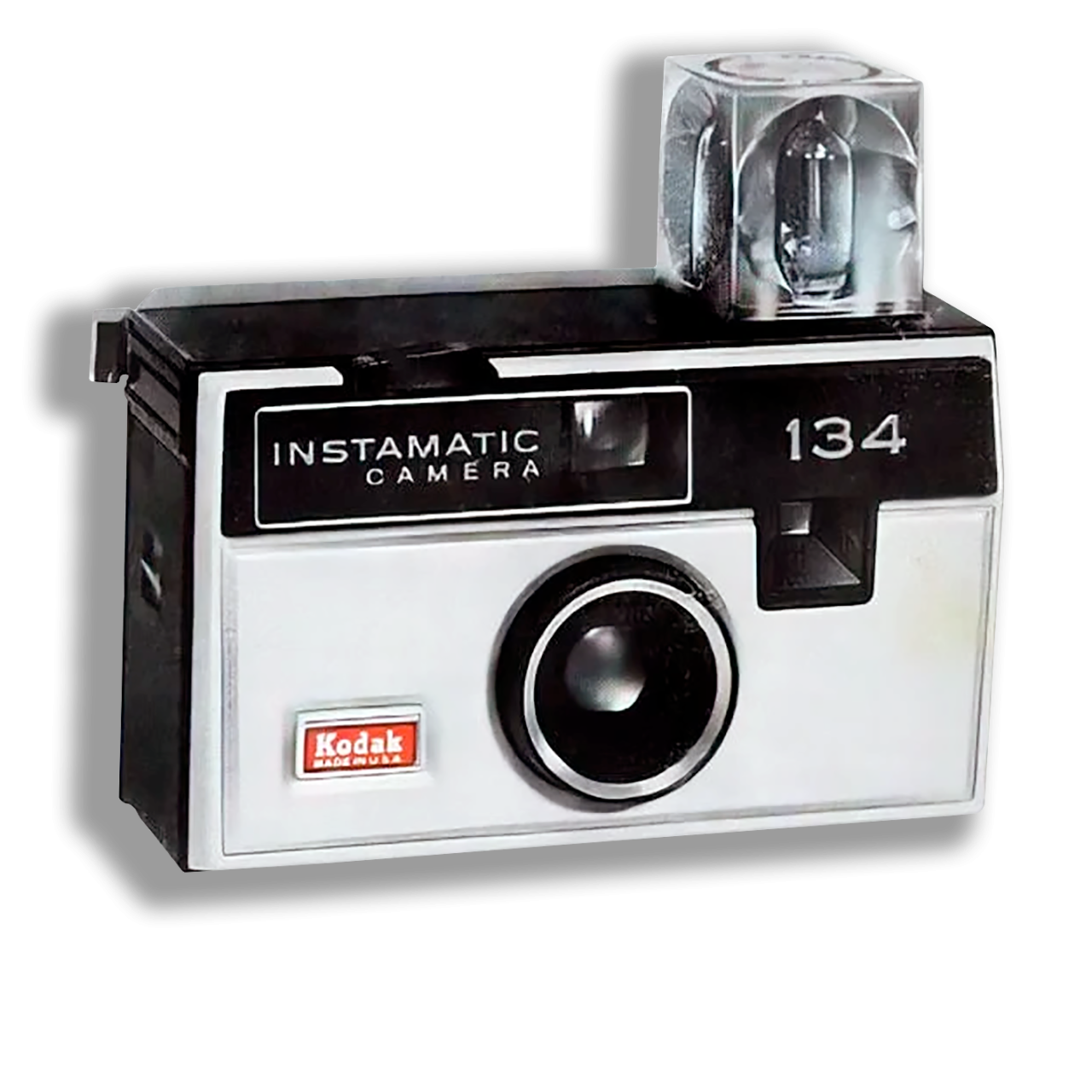
In 1965 the need for greater safety and simplicity urged the Flashcube into existence. The Kodak Flashcube—a rotating cube with a miniature flashbulb incarcerated within each of its four mirrored compartments—made amateur photography of the domestic interior possible from the mid-1960s onwards. It also reduced the risk of injury presented by its forebears. It is shown here on another novelty of the sixties: the Kodak Instamatic Camera.
Many early photographers constructed special rooms with large windows and many reflectors to maximize the light falling on their subject. The development in Manchester in 1863 of the manufacture of magnesium was an early breakthrough and allowed experimenters in the following year to successfully take a photograph in the Blue John Mine in Derbyshire. The Manchester photographer Alfred Brothers took this photograph underground by igniting magnesium.
Using an open pan of magnesium was inherently dangerous. The famous C19 photographer Jacob Riis, for example set fire to his house twice and himself once, so the development of glass bulbs to contain magnesium wire in oxygen during the 1930s was a very big step forward. A little sidestep: Who was Jacob Riis? Jacob August Riis (1849–1914) was a journalist and social reformer in late 19th and early 20th century New York. His innovative use of flashlight photography to document and portray the squalid living conditions, homeless children and filthy alleyways of New York’s tenements was revolutionary, showing the nightmarish conditions to an otherwise blind public.
The development of the flashgun followed, but the guns had to be synchronised to the shutter action of the camera. Camera makers generally had flash guns designed to fit their own cameras, either from specialists or in-house. Kodak in particular eventually produced a wide range of flash guns but many were only usable on their specific models. Eventually the demand for universally usable flash guns developed as mounting shoes and standard connectors became common.
The guns required a reflector for best results, but this made them bulky, so folding interleaf reflectors or folding down reflectors soon followed on. Flash bulbs were gradually reduced in size, bulbs becoming capless during the 1950s and batteries were phased out. Smallness became important. The most compact design was the Tully.
Electronic flash guns were introduced in the 1960s and took over from bulb guns. Eventually the bulbs were abandoned and flash cubes came in. Kodak was at the forefront especially on their Instamatic range. These provided 4 flashes per cube and could be used with a tall fitting for best photographic results. Progress in electronics from the 1960s onward allowed the introduction of built-in flash which eventually became the norm for almost all but the cheapest cameras.
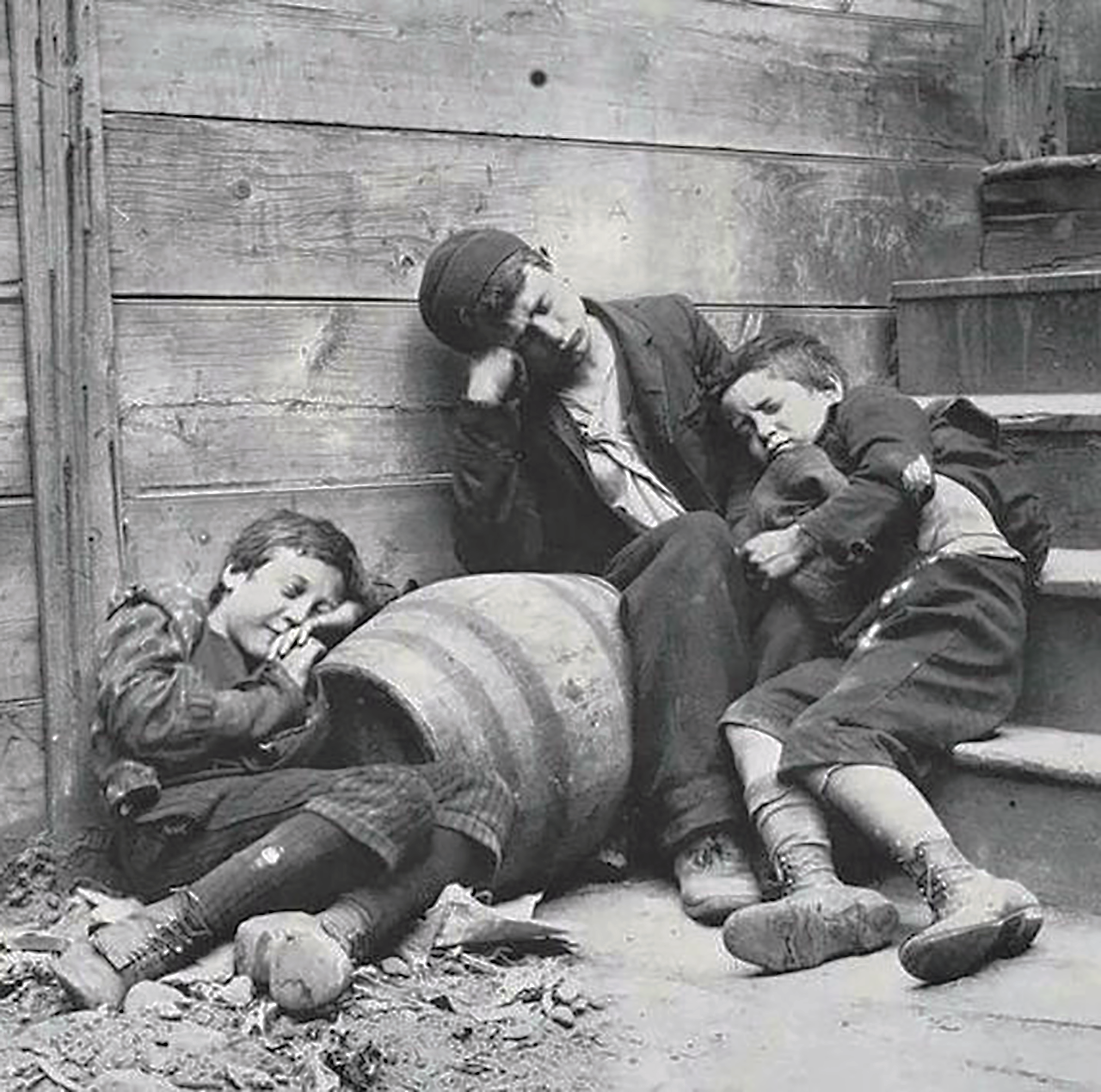
By taking photographs to accompany his newspaper articles, Riis first began documenting the lives of the impoverished and the places they lived and took refuge. With the development of flash powder, he was able to illuminate nighttime images of those living and working in alleyways, tenements, and sweat shops, among other squalid places in the city. His interests in writing about “how the other half lived” grew, and over his lifetime Riis wrote many books about the urban poor that included his photographs.
Feeling that more could be done, Riis gave his first lantern slide lecture (a precursor to today’s digital presentations) featuring his photographs in 1888. He captivated audiences with stories of his experiences and began to tour the country delivering lectures, often in a crusade to advocate and bring about changes for the marginalized.
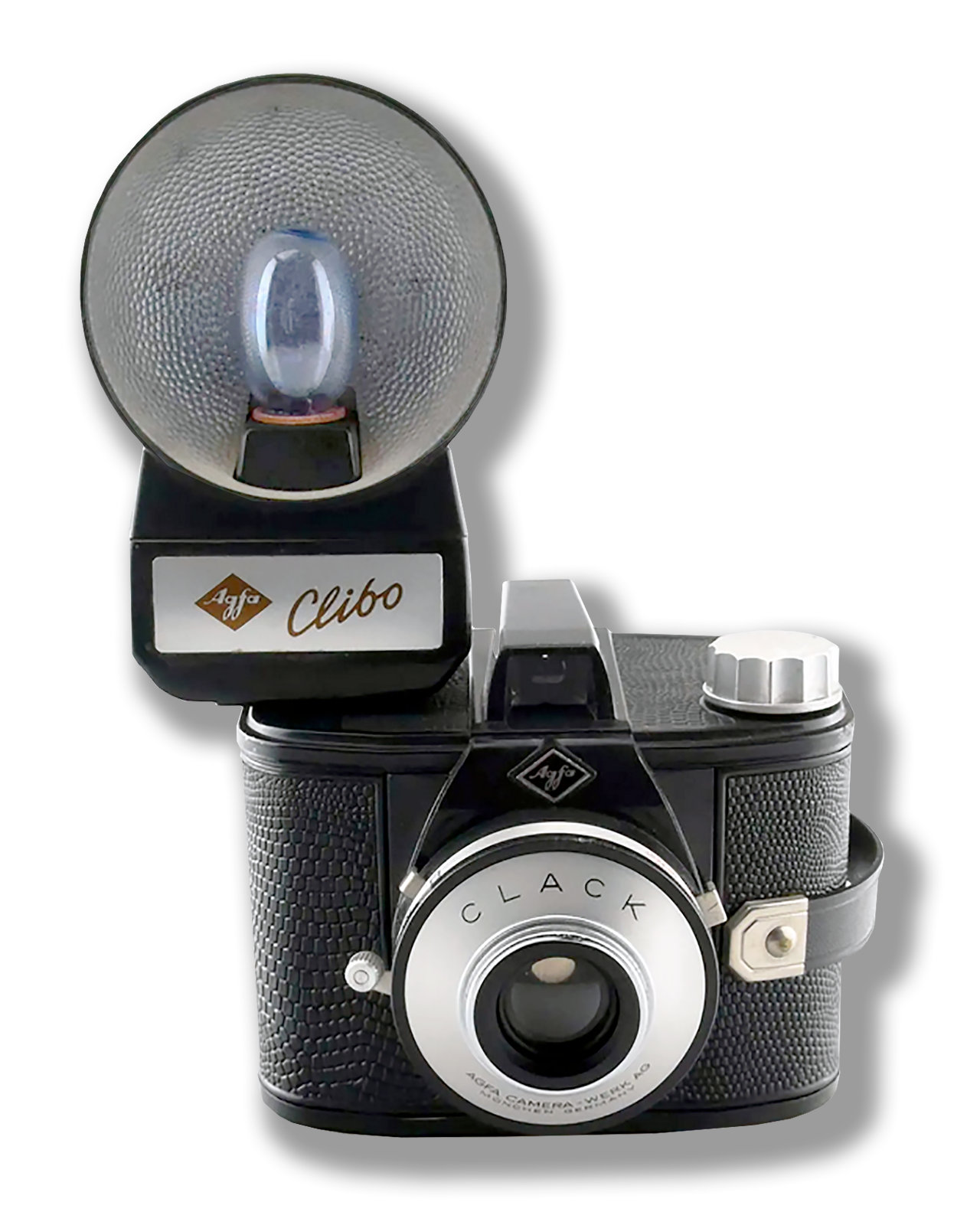
An example of a box camera with a specific connection for its own flash was the Agfa Clack. The accompanying Agfa Clibo light flash only fitted this camera and the Agfa Click I and II. There was a clip on the back of the Clibo flash that allowed the red hot flash bulb to be thrown out.
Here you will find a survey of
Types of Flash Gear
After the brief general historical introduction to the technology of flash described above, there is now space for the appropriate equipment with which the photographic flash could also be achieved by the amateur photographer. The chosen classification includes a chronological sequence and thus also shows the development of the flash units over time.
All different chapters can be reached directly by clicking on one of the headings.
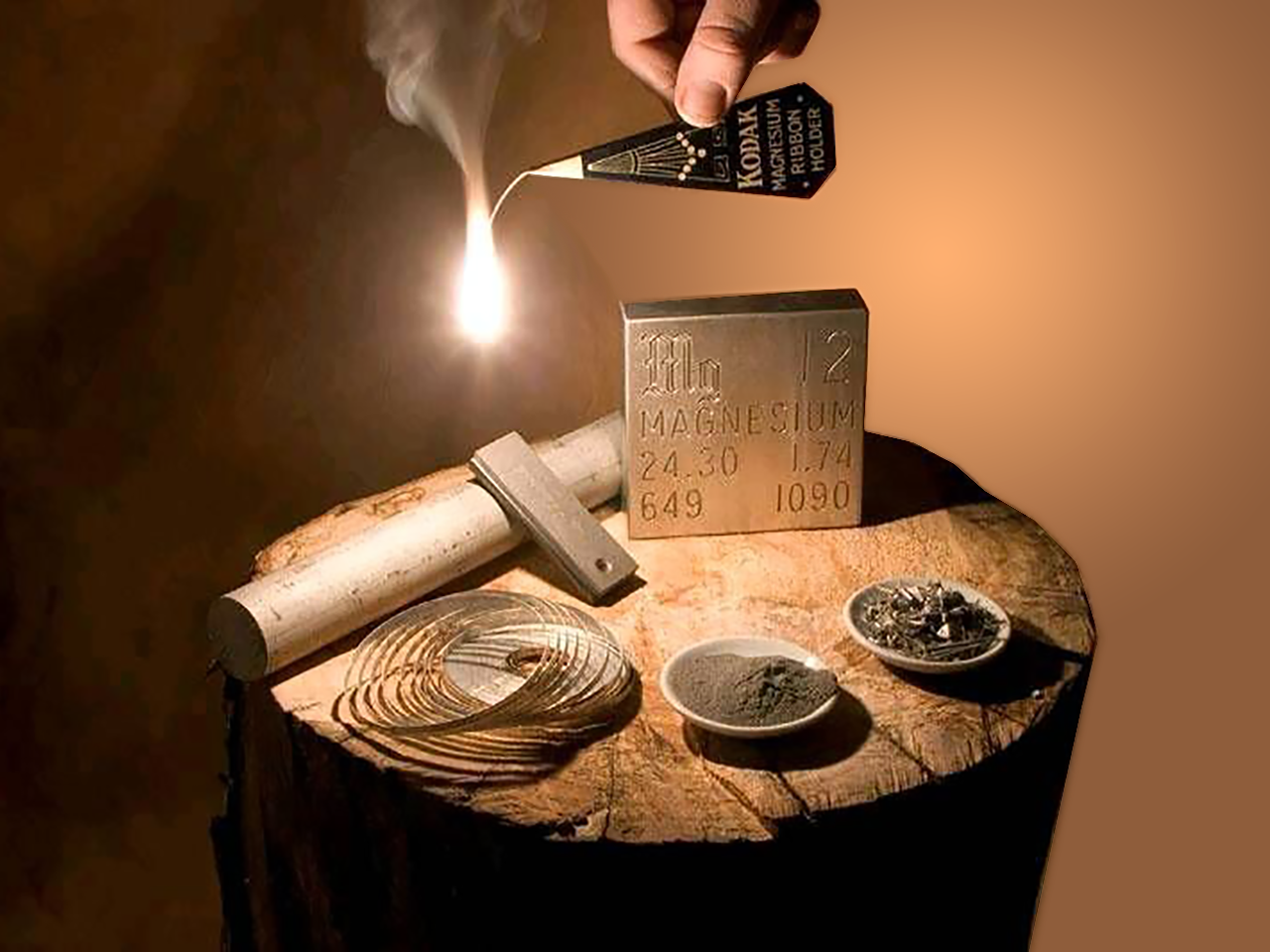
Early use of magnesium and flash powder was limited to fairly specific circumstances such as a restricted location or where a portable light source was required. The smoke and debris produced, as well as the distraction of the flash, prevented their general use in studios where other light sources were used; ideas to burn the powder within a glass container did not materialise.
There were early proposals to synchronise the camera shutter with a magnesium powder flash but usually an ‘open flash‘ was used where the shutter was opened, the flash fired and the shutter closed. Greater use was made from the 1890s when amateurs started using simpler devices.
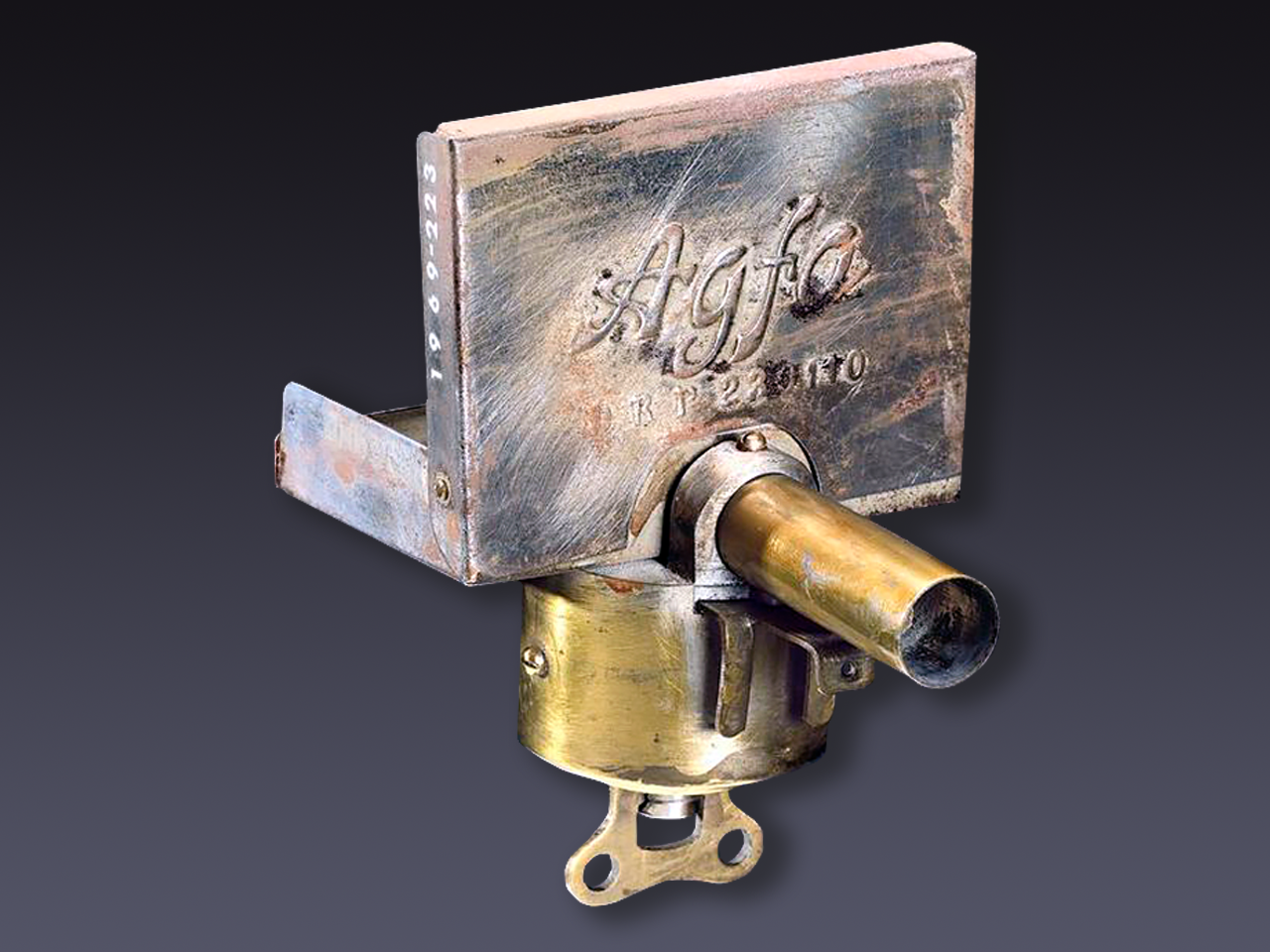
Joshua Lionel Cowen and photographer Paul Boyer introduced a safer flash lamp right before the turn of the twentieth century. The design had a trough that would hold flash powder to then be ignited via electricity from a dry cell battery.
The flash lamp was typically connected to the shutter of a camera, allowing for the flash to be activated as the photographer snapped the photograph. The flash mechanism could be placed on a tripod away from the camera for activation. One could also connect multiple flash lamps to be ignited at the same time when in a series. While the flash lamp was able to make the practice of flash photography a bit safer, it was still a very dangerous object.
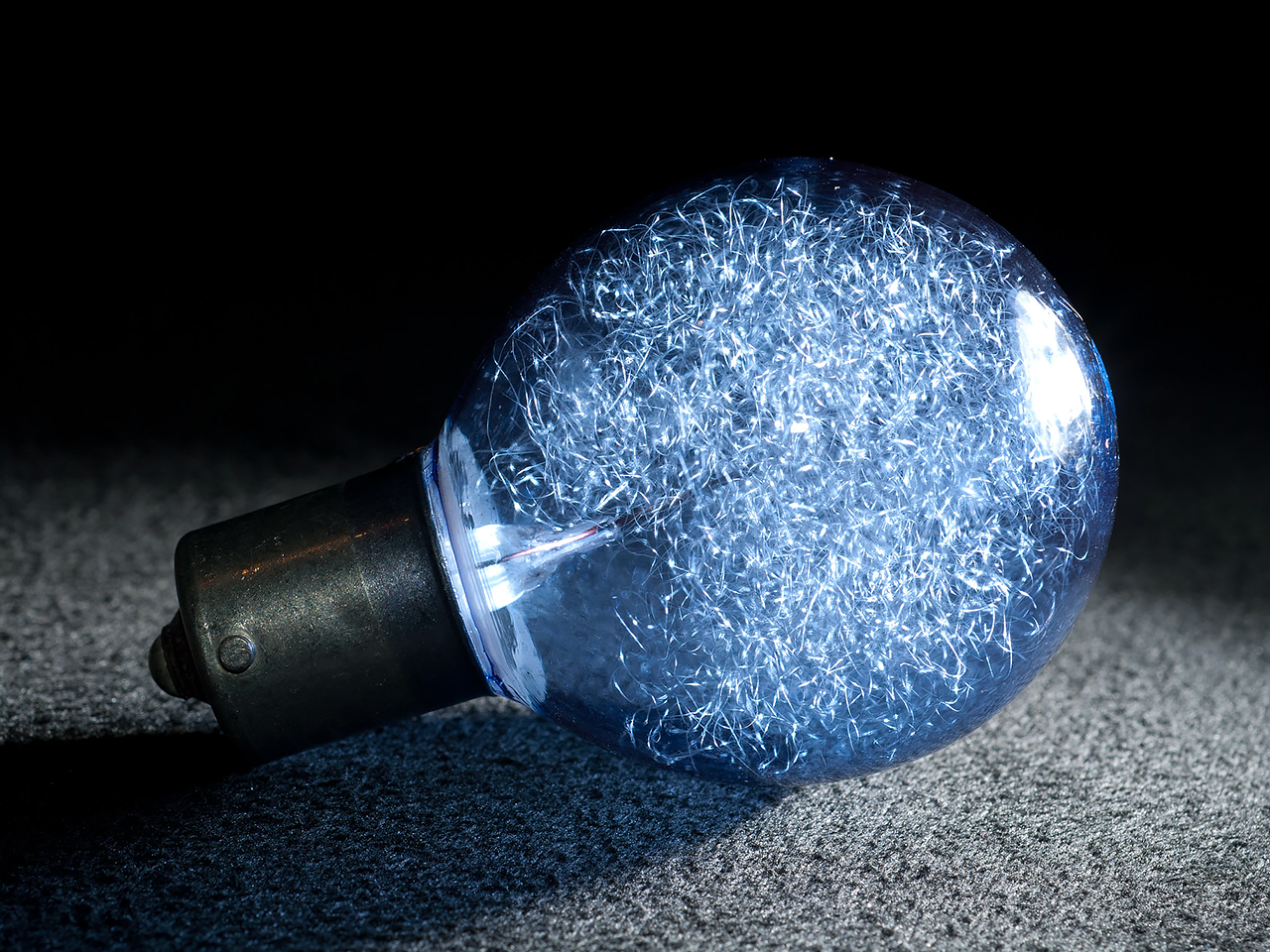
The earliest flash bulbs contained aluminium foil in a bulb of low pressure oxygen. Later wire was used in place of foil. Available from the early 1930s. Flash bulbs are grouped according to the time taken for the bulb to reach its peak output. Later bulbs sometimes have a blue coating to raise the colour temperature to match daylight type colour film.
Early bulbs had ordinary Edison Screw, Miniature Edison Screw or bayonet fittings. Later fittings were U.S. Miniature where the bulb is held in place by a spring in the flash gun engaging a slot in the cap and Single Centre Contact. Capless bulbs appeared in 1955 with Phillips PF1. Later, around 1960, the smaller AG1 size appeared in America.
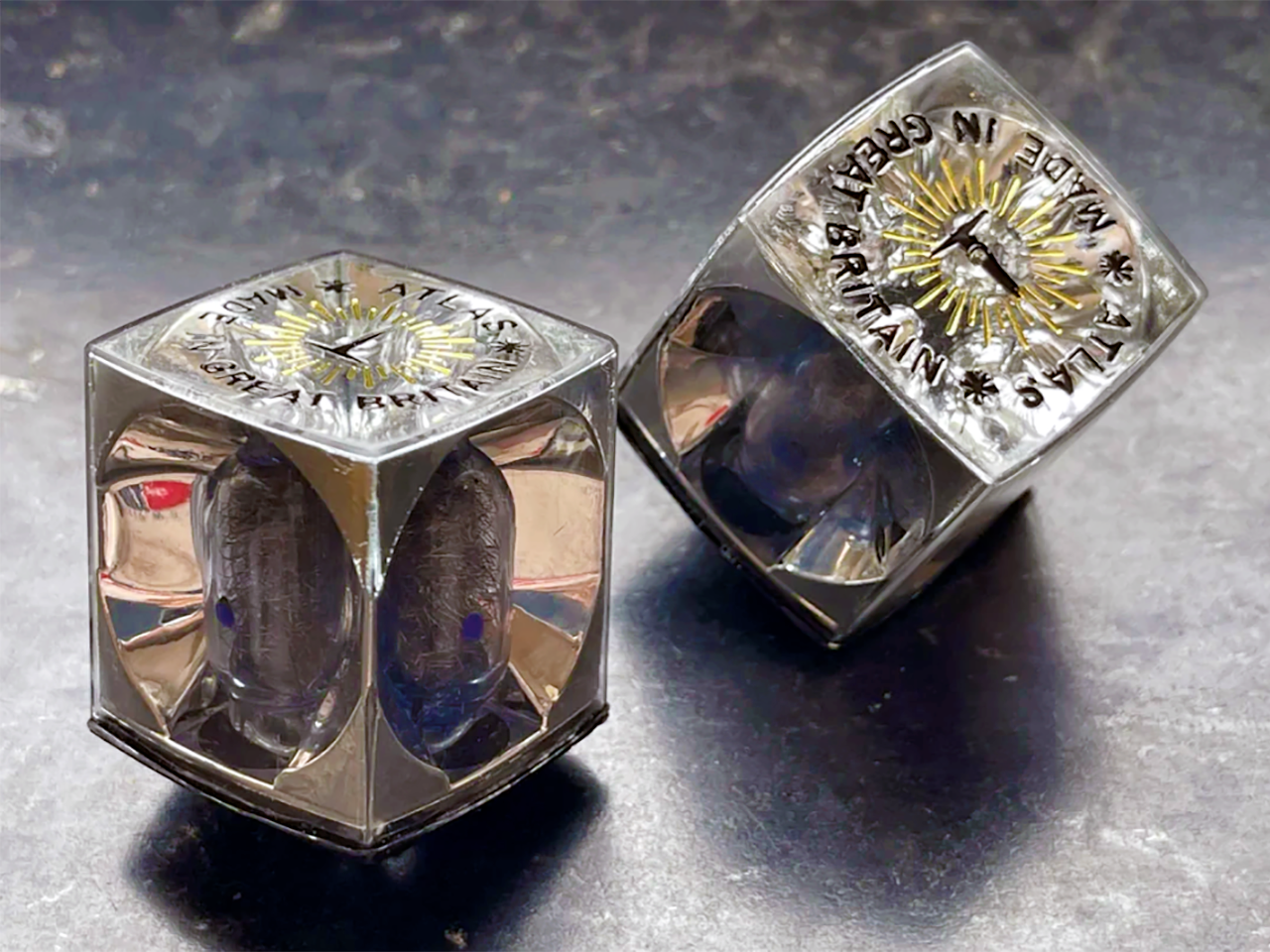
All developments in flash technology clearly showed that the consumer of the 1950s and 1960s needed an option to quickly take multiple flash shots one after the other. A number of manufacturers of flash equipment tried to meet these wishes by developing expensive, complicated rotating and/or sliding constructions or developing a large flashbulb that worked more than once.
But all these developments were relegated to the trash bin when Sylvania came up with their rotating flashcube with four flashbulbs in 1960. These flashcubes were followed over the years by the Magicube, the FlipFlash, the Flashbar and the Topbar. All variations on the Flashcube theme.
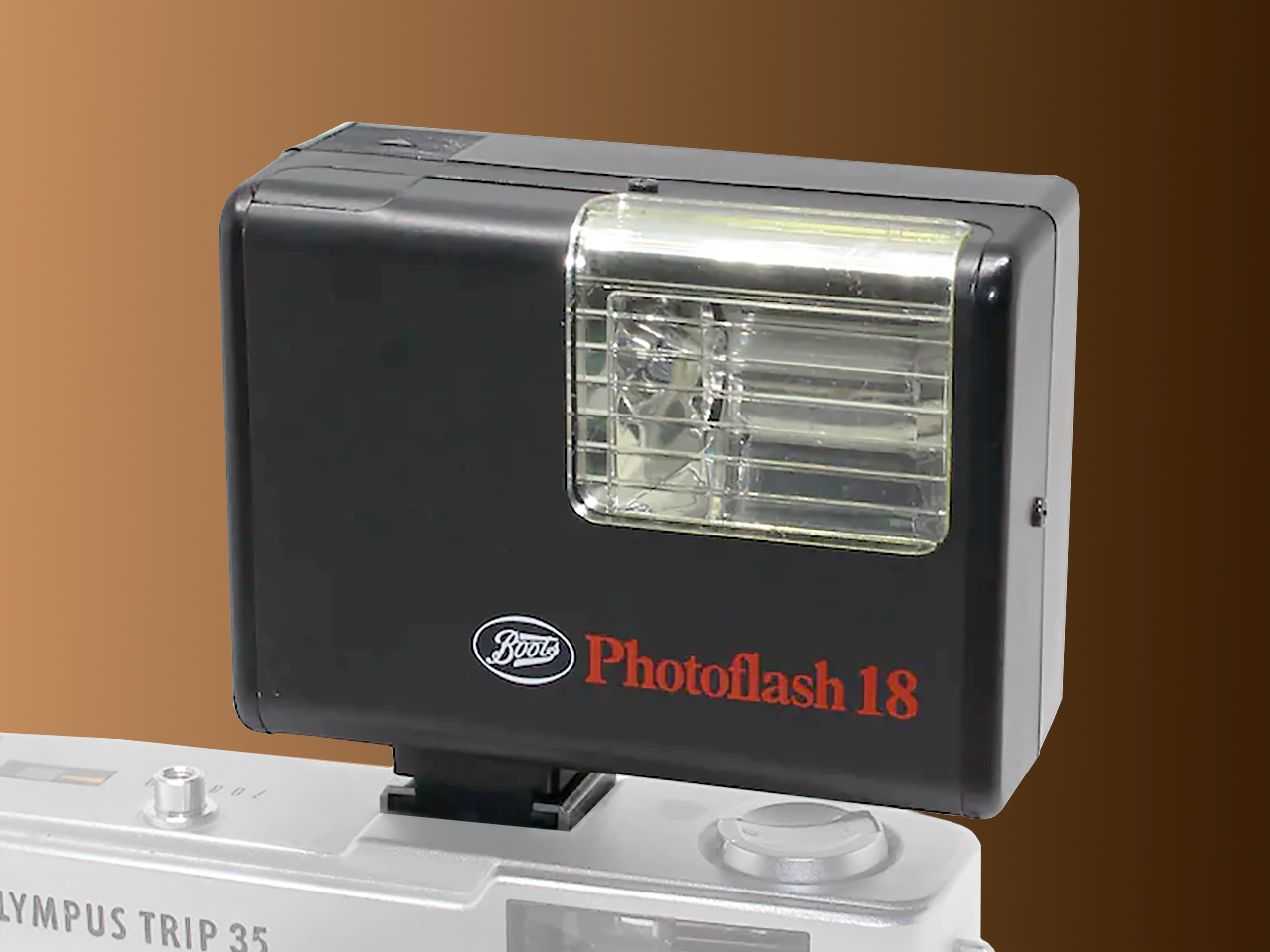
A flashgun (also known as strobe unit, electronic flash, speed-light) is a basic item of photography gear.
Nowadays, most of the cameras, including your smartphone camera, have a flashgun built-in. It is an accessory that adds a quick burst of color-corrected light to an exposure. Thanks to the instant exposure, using the flash can also be effective to prevent camera shake and subject blur.
A flashgun puts out a lot of light in that brief moment, which makes them different from a continuous photoflood that stays on all the time. While you may see large studio strobes in a photographer’s workspace, the term flashgun also implies portability.
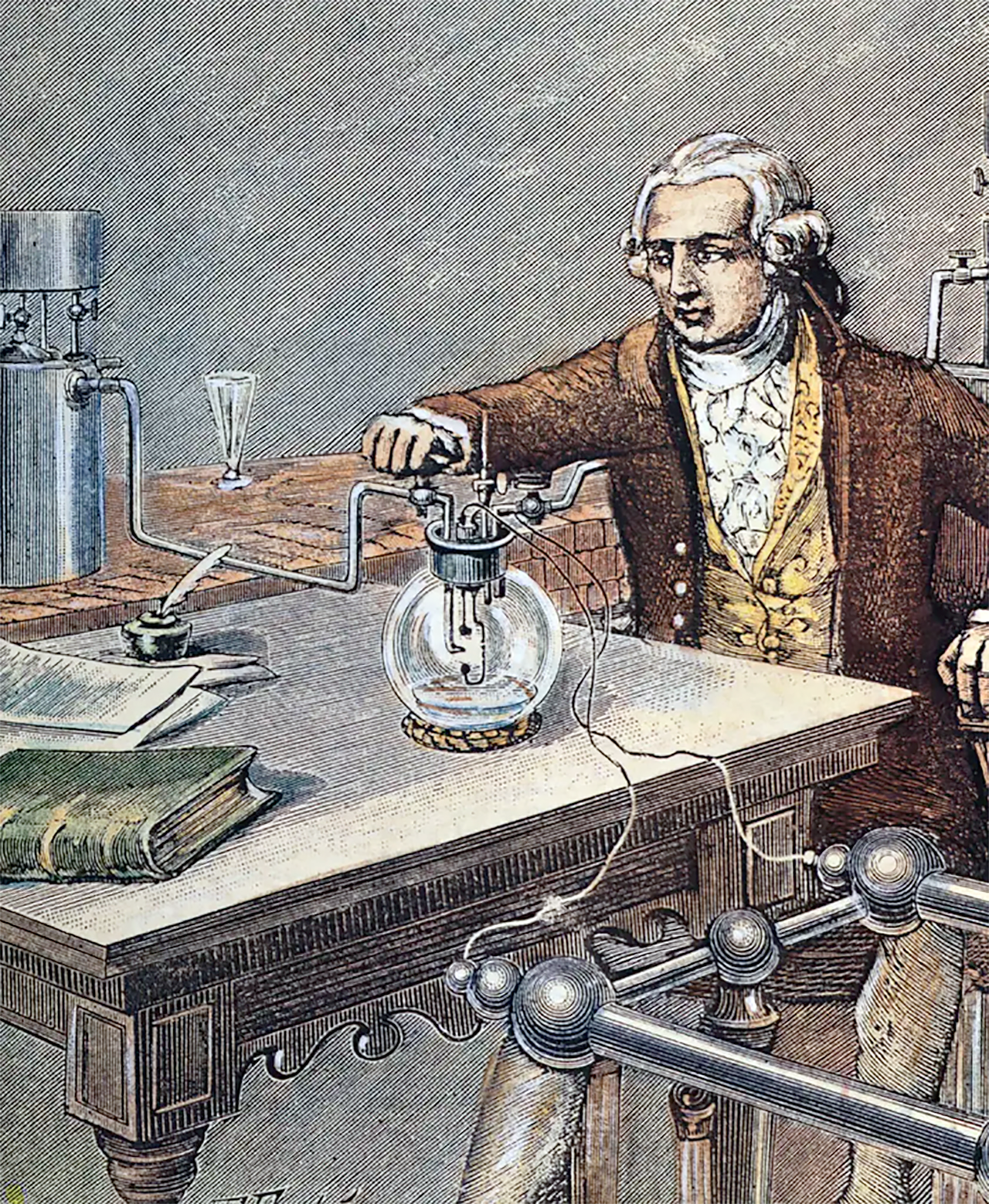
Lavoisier in his laboratory.
Antoine-Laurent Lavoisier was a French chemist who is considered the founder of modern chemistry. He changed the science from a qualitative to a quantitative one. He is noted for his discovery of the role Oxygen plays in combustion.
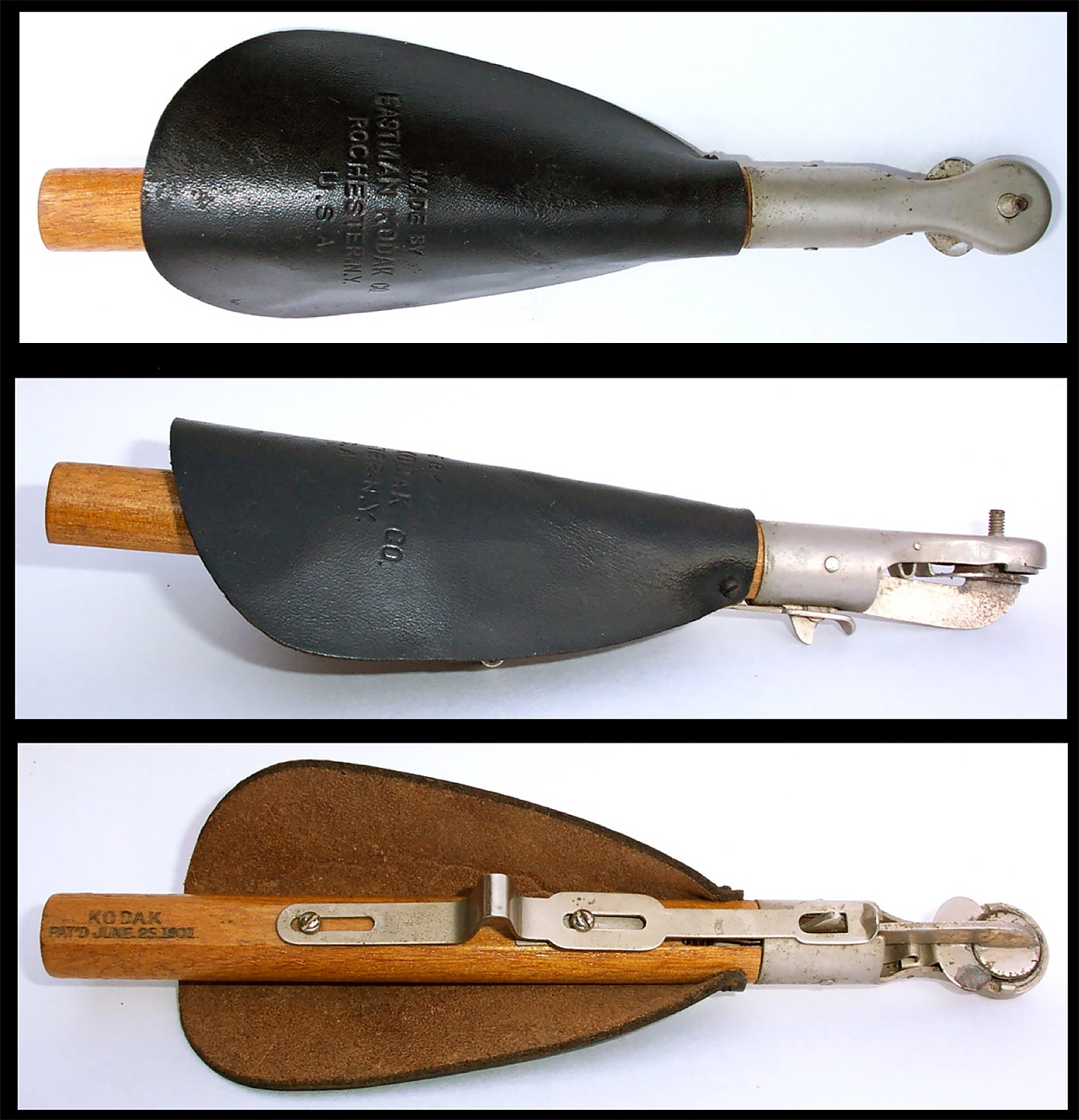
Here we show three projections from the Eastman Spreader Cartridge Flash Pistol. The Flash Pistol was an example of the way flash photography was made a little bit safer. It consists of a Device for the ignition of a flash powder containing cartridge; a Wooden stick; a protective cover of leather. The length was 20 cm. Made by Eastman Kodak Co., Rochester, N.Y., USA. Early 20th century (patented 1901). Its exact way of operation is discussed below in Group-2, “Safer Methods of Igniting Flash Powder”, sub-chapter: “Flint Ignition and Firing Pin Ignition of Flash Powder”.
Group 1
White Fire, Magnesium Powder, Magnesium Ribbon and Flash Powder
In the first years after the invention of photography, no photo was possible without light. Exposure times of several hours were not uncommon; when it got dark, the photo was over.
While almost all types of artificial light that have been tried or used successfully in photography were somehow connected to physics, there was a pyrotechnic mixture that was used exclusively for photographic purposes. In 1857, the English chemist John Maule recommended the mixture of salpeter, sulfur and sulfur arsenic for photographic images.
The substance was ignited in a hexagonal lantern with blue glasses and burned for about 15 seconds. Maules “Photogenic” was inexpensive, and gradually the “White Fire” spread under different names, offered by several manufacturers, in most countries. In addition to the later magnesium light, which burned very quickly in contrast to white fire, these slow-burning mixtures remained on the market. They were still available long after the turn of the century.
Trying to solve the unpredictability of the popular magnesium technique, Charles Piazzi Smyth, experimenting in the pyramids at Giza, Egypt, in 1865, had attempted to ignite magnesium mixed with gunpowder.
The resulting picture was quite poor but the principle of combining magnesium with oxygen-rich chemical resulting in a combustion was developed.
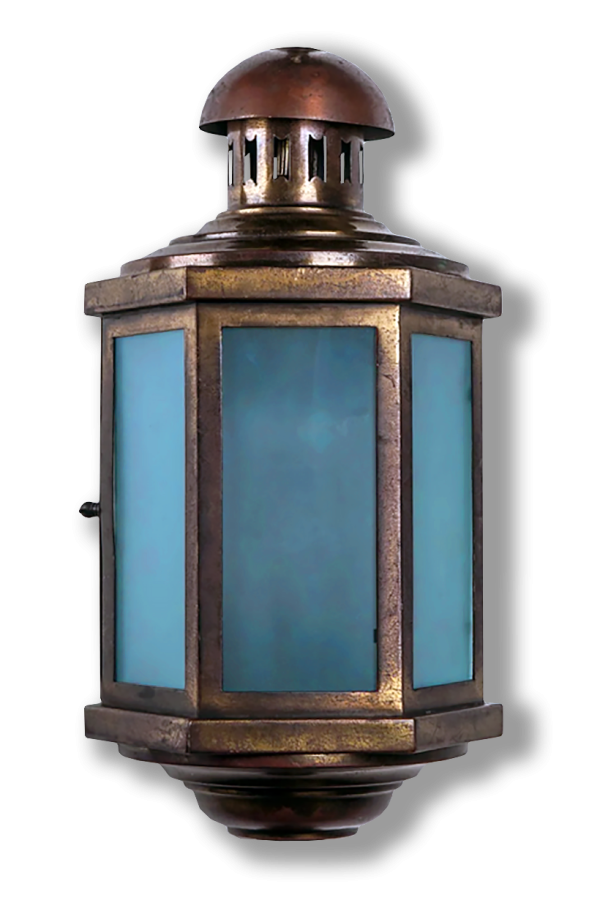
This is what a lantern for burning the mixture of saltpeter, sulfur and sulfur arsenic to create White Fire may have looked like.
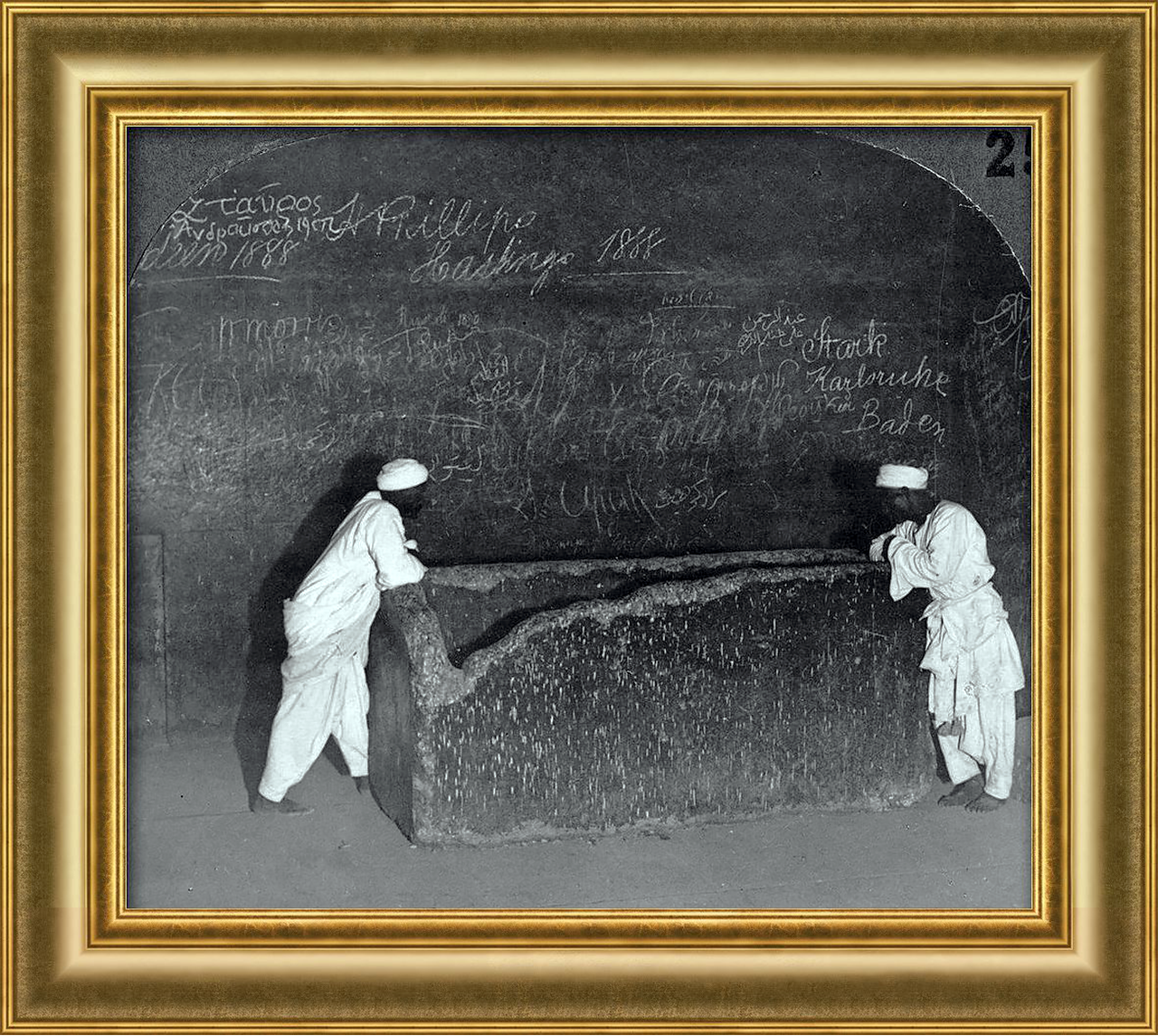
Charles Piazzi Smyth (1819-1900), Astronomer Royal for Scotland, believed that the pyramids were built using a unit of measurement called the ‘sacred cubit’ which was also the basis for the British inch. In order to prove his theory, Smyth began measuring and photographing the Great Pyramid in 1865. Not content with recording the exterior, he also photographed the burial chamber at its heart, using the light given off by burning magnesium – one of the earliest examples of photography by artificial light. Appropriately, he is buried under a tombstone in the shape of a pyramid.

William White demonstrates his magnesium “Puff-Light-Lamp” to the British Association in Birmingham in the fall of 1865.
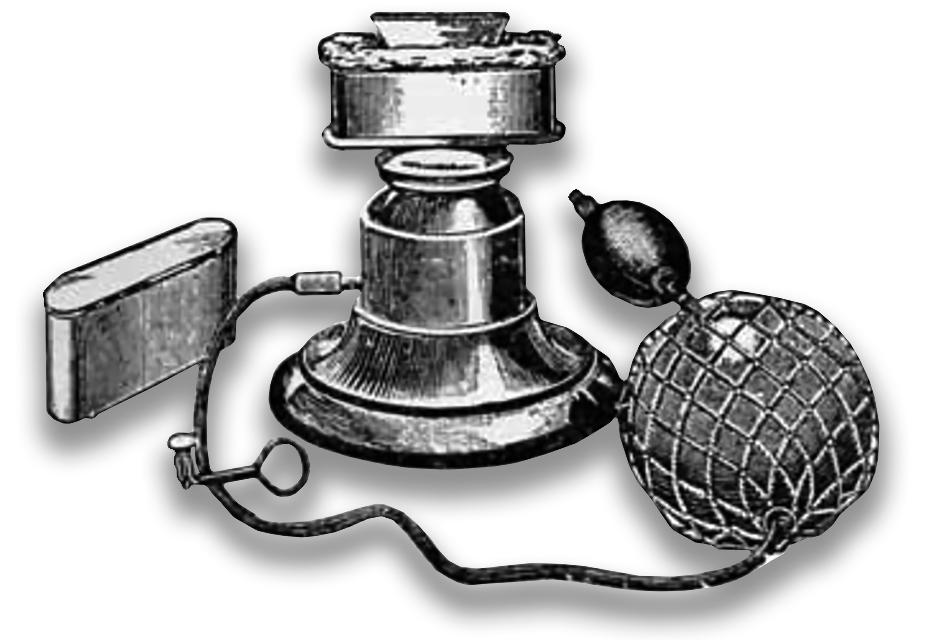
The construction of this Todd-Forett Flash Lamp is definitely “copied” from Paul Nadar’s lamp (see the ad at the right). At a glance, it seems that no expense has been spared except on the actual lamp part, which is considerably less voluminous. The special features of this Todd-Forret Flash lamp are:
- The production at will of an instantaneous or continuous flash;
- Complete combustion of the powder;
- Flash in the form of a large sheet, thus affording a large illuminating surface.
- The Todd-Forret Flash lamp is suitable for interiors, single-figure subjects, small and large groups, copying pictures, etc.
The Junior Todd-Forret lamp … 7/6
The Todd-Forret lamp … 12/6
Illustration and Prices are taken from the Pricelist of the Photographic Department of the Boots Cash Chemist.
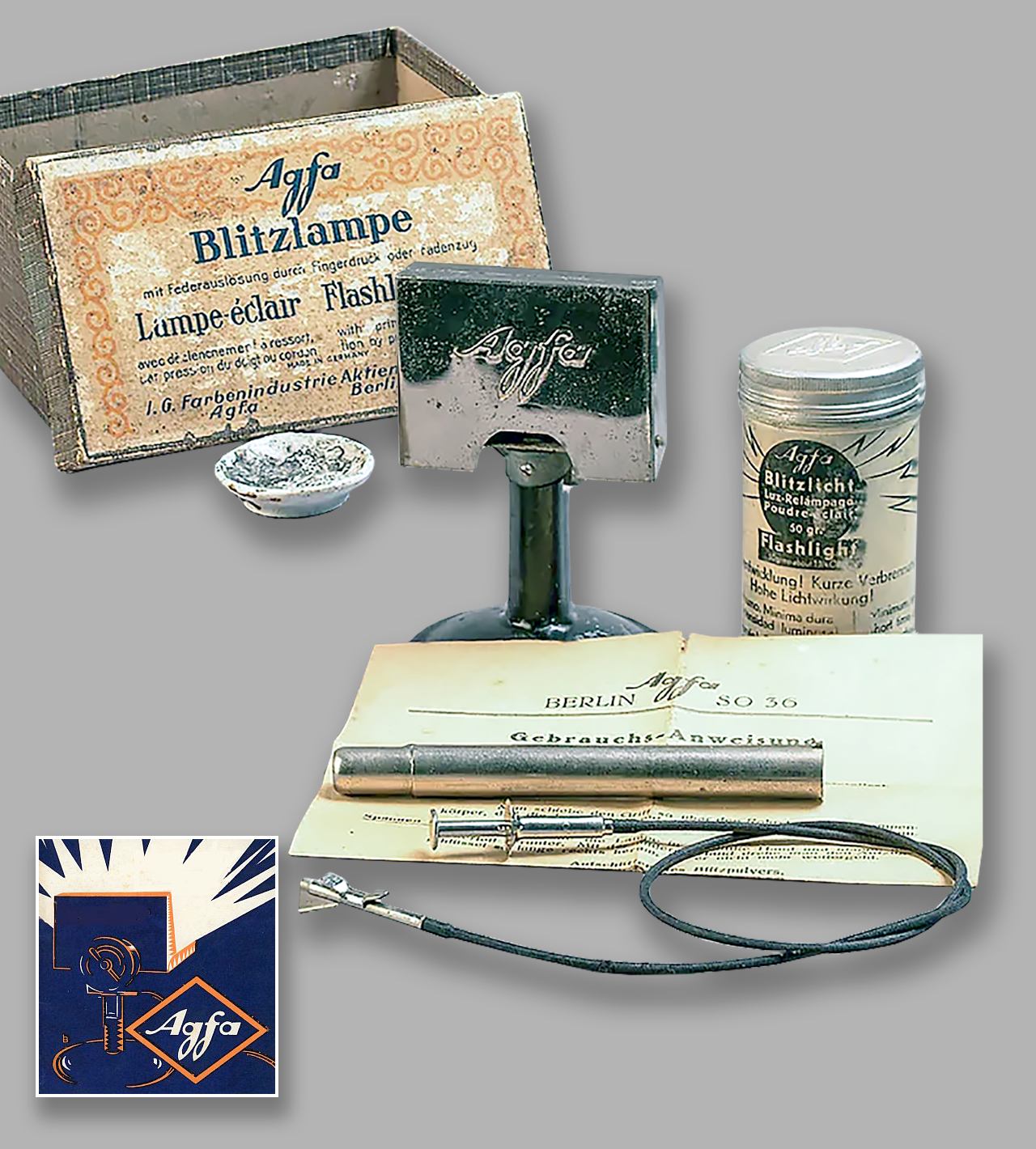
Vintage Agfa Flashlight lamp set, Improved model, 1909
Small tray to hold flash powder, spring driven flint wheel. Removable handle. The original Agfa Flash Lamp used matches to ignite the powder, that method was replaced by a wheel turned by a spring moving against a flint. As well as being used in the hand a small stand could be attached in place of the handle. A version with a larger tray was also produced. The price was 4/9.
Next stop: Magnesium
Further development of pyrotechnic light sources led to magnesium light. Magnesium was discovered by Sir Humphry Davy in 1808. In 1859, Professor Robert Wilhelm Bunsen (1811-1899) and Sir Henry Roscoe (1833 to 1915) discovered the chemical effect of burning magnesium and pointed out the extreme brightness and high actinic effectiveness of this element. In 1861, Eduard Liesegang used magnesium as a light source for the first time when taking photographs. However, the bright light produced when it was ignited was difficult to control.
Since pure magnesium only ignites at high temperatures, magnesium powder was blown into a spirit flame – usually by means of a rubber bulb or a rubber bellows – so that a bright light was created. The duration of the blowing regulated the amount of light, but there was no “flash” of light. Rather, the powder burned more or less uncontrollably. Back then, flash units were called “Puff-Lamp” or “Puff-Light-Lamp”… The well-known Todd-Forrett lamp is of this type.
At Professor Robert Wilhelm Bunsen’s suggestion, a lamp was constructed that burned a magnesium wire in the center of its reflector, which was continuously pushed in using a clock mechanism. Such magnesium wire lamps were soon available from various manufacturers in the most imaginative designs and with the most complex functional mechanisms.
Thanks to new production methods, magnesium became significantly cheaper after 1865. In the same year, John Traill Taylor (1827-1895) produced a mixture of magnesium powder with potassium chlorate, sulfur and sulfur antimony, which burned in a flash under an enormous amount of light.
At the same time, William White invented the magnesium Puff-Light-Lamp and presented it to the British Association in Birmingham in the fall of 1865. Powdered, pure magnesium was blown into a flame, creating a flash lasting about 1/5 second.
The time was not yet ripe for both inventions because the wet collodion plates that were still in use were not sensitive enough. Time passed, John Taylor slowly fell into obscurity, and the Puff-Light-Lamp made a comeback in the mid-1880s, perhaps because of its originality and safe handling.
Puff-Light-Lamps were not always operated with pure magnesium powder. Countless recipes can be found in specialist books from the turn of the century, with references to the dangers of mixing yourself. Accidents often occurred with devastating consequences.
Canned sunlight
While a long burning time for the magnesium was desired for certain photographic tasks, on the other hand the shortest possible lighting time should be achieved, for example when photographing people.
In 1883, the Englishman G. A. Kenyon carried out experiments with a mixture of magnesium powder and pure potassium chlorate. Despite the heavy smoke development, his mixture was generally accepted, partly because of the short burning time of 1/2 to 1/25 second, but also because a special ignition device with flint could no longer be used.
Four years later, Dr. Adolf Miethe (1862-1927) and Johannes Gaedicke (1835-1916) wrote “Practical instructions for working with magnesium flashlights”. Excerpts from it were reprinted in many magazines and contributed greatly to the spread of flash photography.
The composition of the flashlight powder that has now become commercially available was constantly changed, with the aim of achieving low-smoke combustion with highly actinic light development and a reduction in the risk of accidents. For a long time it was also forbidden to send flashlight powder by post.
The flash powder mixtures were carefully guarded secrets and were often only mixed shortly before shooting. Pots or plates served as “lightning devices” and empty food cans were also popular fireplaces. In addition to a clear banging or hissing, fog, smoke and soot accompanied such lightning sessions and in some old photos you can occasionally find black faces caused by the flash powder.
Magnesium powder was available in different packages. Professional photographers usually purchased hundred gram cans, while amateur photographers preferred ten gram packages. This is not least because the powder had to be protected from moisture.
Later on, flash powder was ignited in special burning devices, and the inventors constructed the most imaginative structures for it. Capsule flashes also later came on the market for problem-free amateur use. A paper bag contained about 3 grams of flash powder, which could be ignited using a paper ignition strip. To do this, you hung the capsule flash on a thread somewhere in the middle of the room, turned off the lights, opened the camera shutter, lit the ignition strip, waited for the flash and then closed the shutter.
Flashlight powder was able to hold its own on the market for more than forty years because it was a useful and very inexpensive artificial light source that, apart from a few matches, was energy-independent. For a portrait shot you needed about 1/4 gram, while for a medium group shot you had to waste 2 to 3 grams.
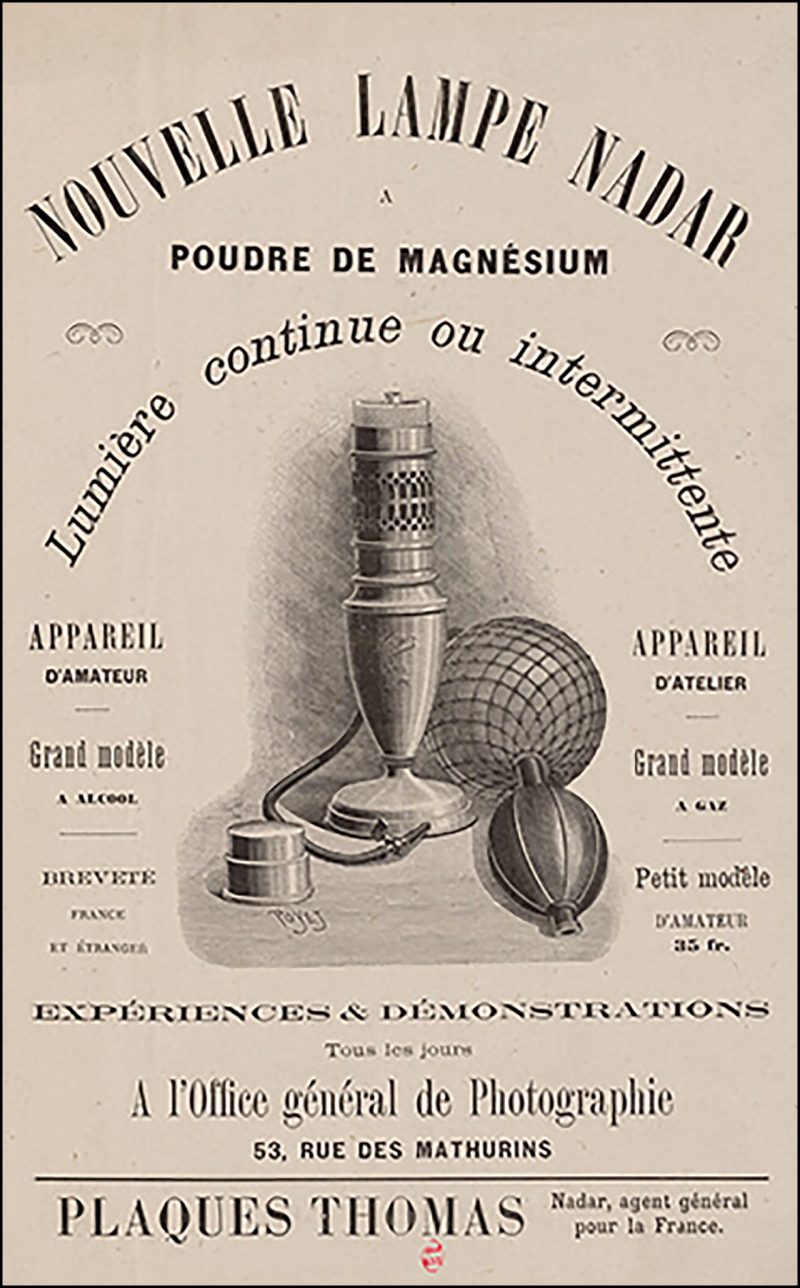
Among the numerous curious constructions was the magnesium lamp of Paul Nadar, Paris. It came onto the market in 1891 and differed from its competitor models in that it was a Puff-Light-Lamp whose design enabled it to burn magnesium powder in a flash, but also emitted a bright light that lasted for 40 to 50 seconds. The lamp had a very large magnesium powder reservoir and two compressed air balls with which magnesium powder could be continuously blown into the spirit flame. The description also included a warning that the lamp should be used under a smoke hood due to the amount of smoke it produces.
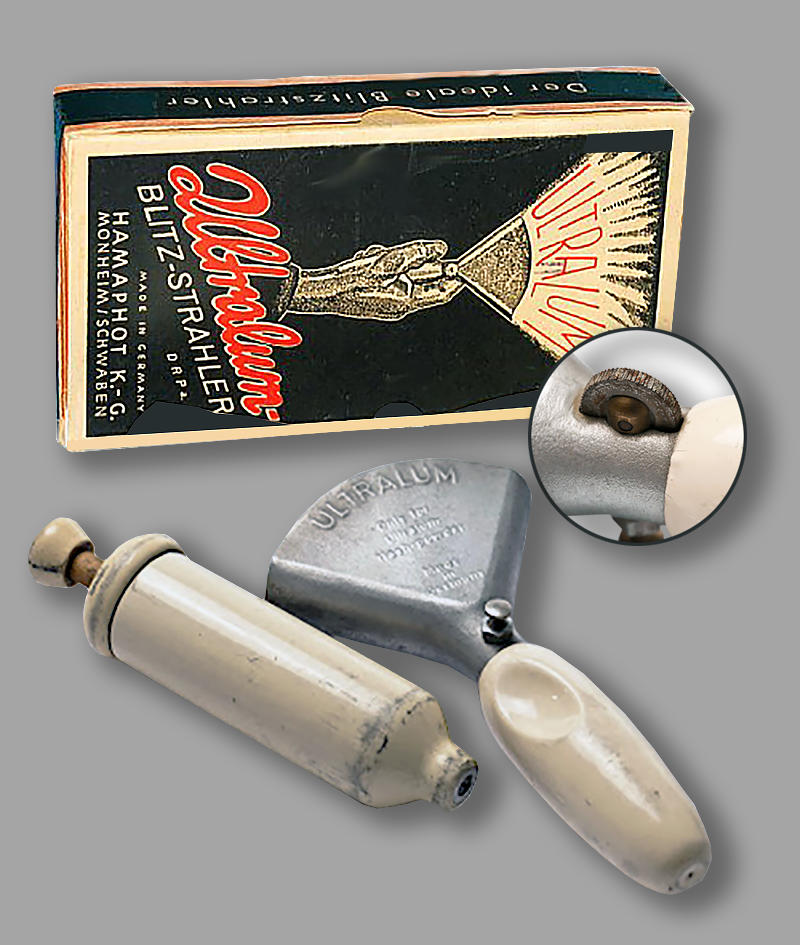
Hamaphot Flash powder Ultralum flash gun with flash powder dispenser
HAMA was also represented in the flash powder business with the “ULTRALUM”. Pushing the spring loaded button on top of the dispenser would release a premeasured amount of flash powder. The inset shows: As with the Seuthelin flash lamp, turning the igniter wheel would create a spark with a flint (like those used in lighters or gas lighters) to set off the flash.
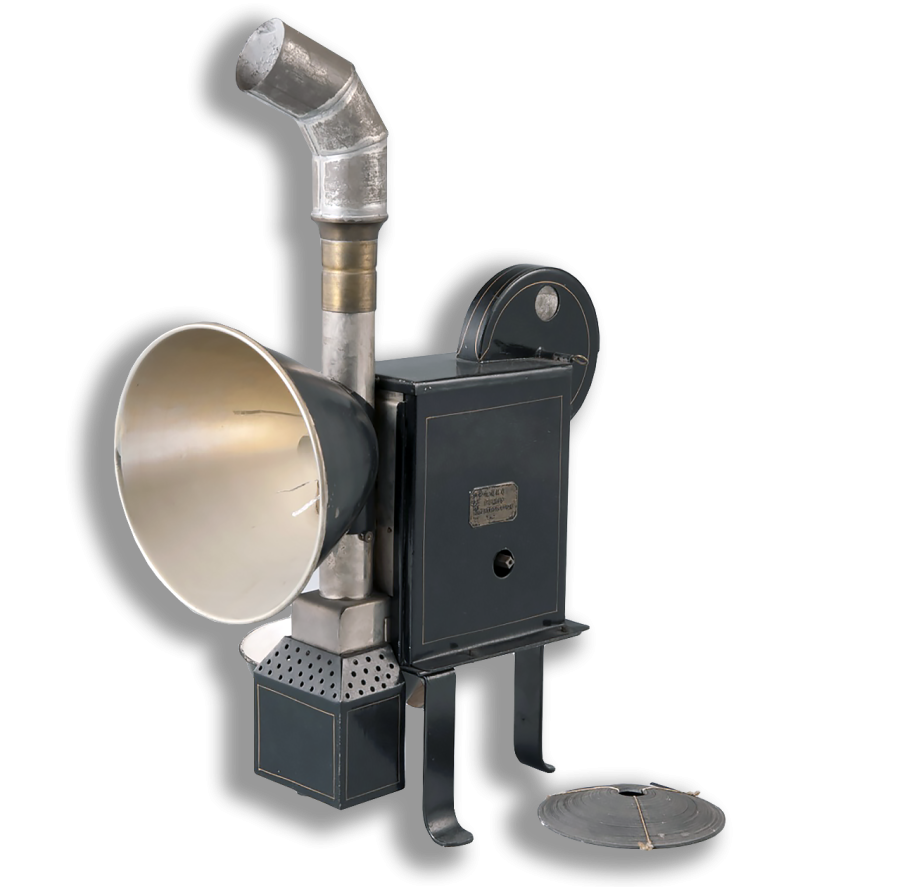
Magnesium Ribbon Lamp with clockwork motor enabling a regular length of ribbon to emerge at a constant speed, thus giving a stable level of lighting about 6 to 8 minutes. This lamp was designed to be used with a reflector. It is essential for taking photos in interiors and all poorly lit places. Price 22.50 francs.
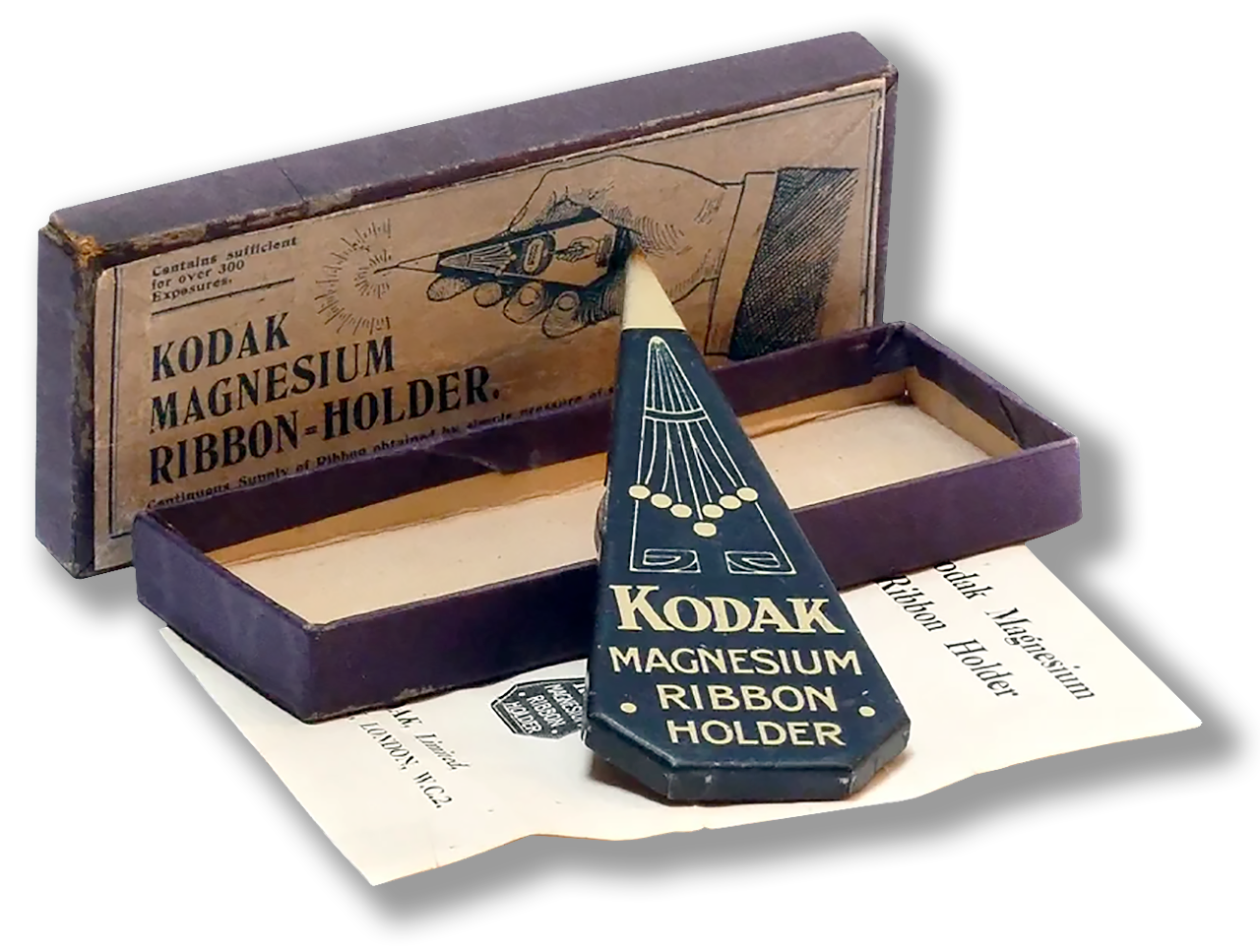
The Kodak Wedge-shaped ribbon holder in black and yellow. Box with yellow label. This is a late version from the 1930s.
Magnesium Ribbon and ribbon dispensers
Studies of magnesium by Bunsen and Roscoe in 1859 showed that burning this metal produced a light with similar qualities to daylight. The potential application to photography inspired Edward Sonstadt to investigate methods of manufacturing magnesium so that it would burn reliably for this use. He applied for patents in 1862 and by 1864 had started the Manchester Magnesium Company with Edward Mellor.
With the help of engineer William Mather, who was also a director of the company, they produced flat magnesium ribbon, which was said to burn more consistently and completely so giving better illumination than round wire. It also had the benefit of being a simpler and cheaper process than making round wire. Magnesium wire was very expensive, but following an extremely successful demonstration in February 1862, where a photograph was produced in a darkened room in only 50 seconds, the highly actinic light proved ideal for photography and became incredibly popular.
The technology of the flat magnesium ribbon wasn’t too complicated. Magnesium was burned as a ribbon twisted into tapers or clockwork lamps with a reflector. There were different lamp designs, each for different use. Despite different ways of using the magnesium, there were no ideal variant for this method.
The Ribbon dispenser
Mather was also credited with the invention of a holder for the ribbon. Generally these consist of a reel of magnesium ribbon which can be moved either mechanically or by hand from a container. They date from the 1860s.
By the 1900s a variety of simple, cheap, magnesium ribbon holders were produced by other manufacturers, such as the Pistol Flashmeter, which incorporated an inscribed ruler that allowed the photographer to use the correct length of ribbon for the exposure they needed.
The packaging also implies that the magnesium ribbon was not necessarily broken off before being ignited. The light produced was continuous, only dependent on the amount of ribbon. The magnesium ribbon was also used in enlarging.
The holders were held in the hand, a length of ribbon withdrawn and then ignited by a match or lighter. Only the exposed ribbon burnt (with a brilliant white ‘actinic’ light), so it was ‘safe’ to hand hold.
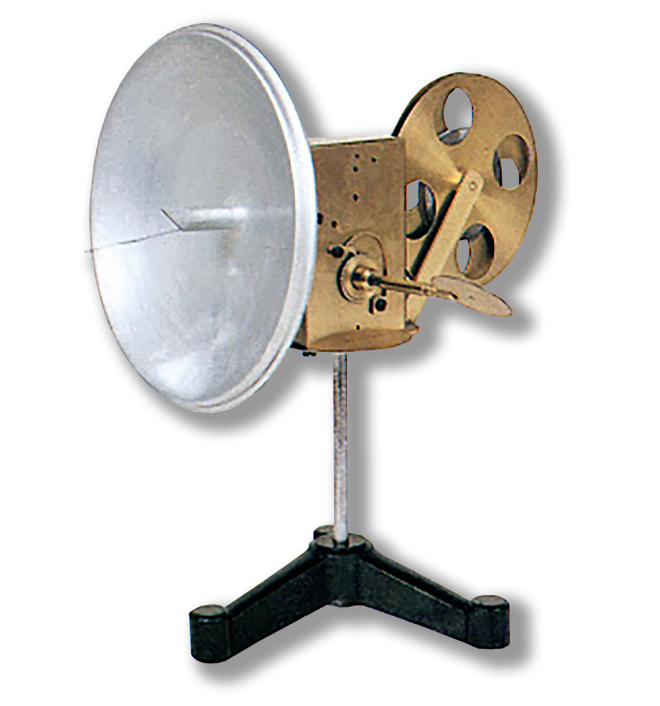
Clockwork-driven magnesium wire lamp
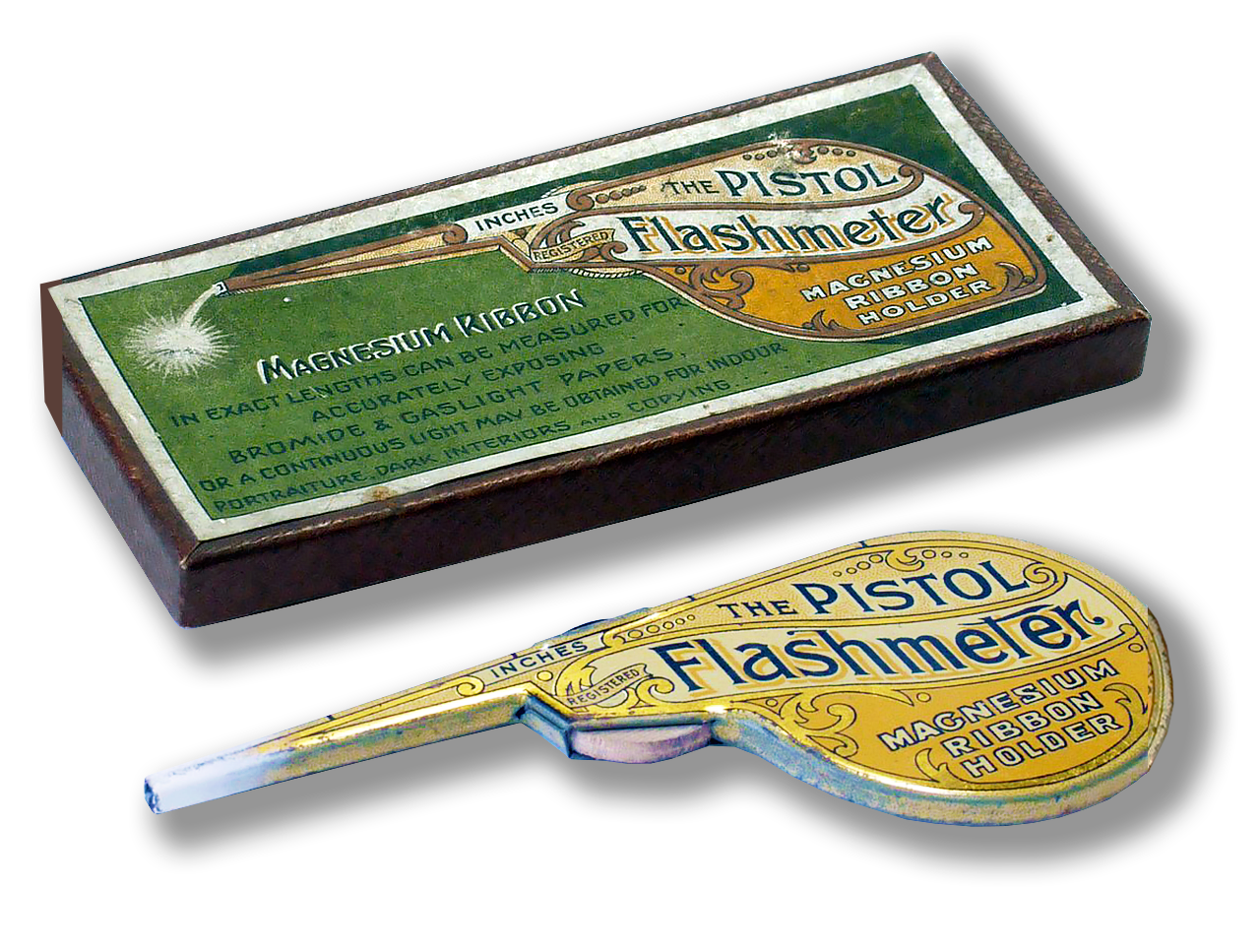
This ‘Pistol Flashmeter’ has a ribbon of 2.5mm size. It was intended as a mobile source of high intensity actinic light for making contact prints on gaslight paper.
Six examples from the pyrotechnic period
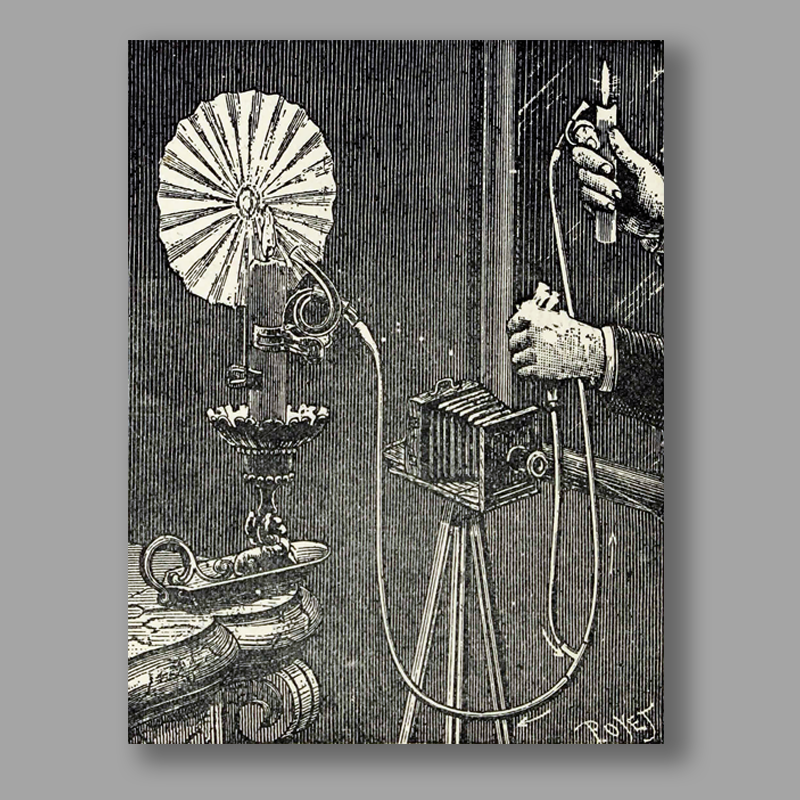
One of the simplest puff light lamps is the version by A. Guebhard from 1889, in which the magnesium powder was blown into a burning candle. Flash powder is a composition of metallic fuel and an oxidizer such as chlorate.
This photographic arrangement consists of a candle and a glass tube bent into the shape of a hunting horn. One end is expanded in a funnel shape, the other has a constriction for pushing on the rubber tube.
The magnesium powder is poured in through the funnel-shaped end. The other end is connected to the rubber bulb via the hose.
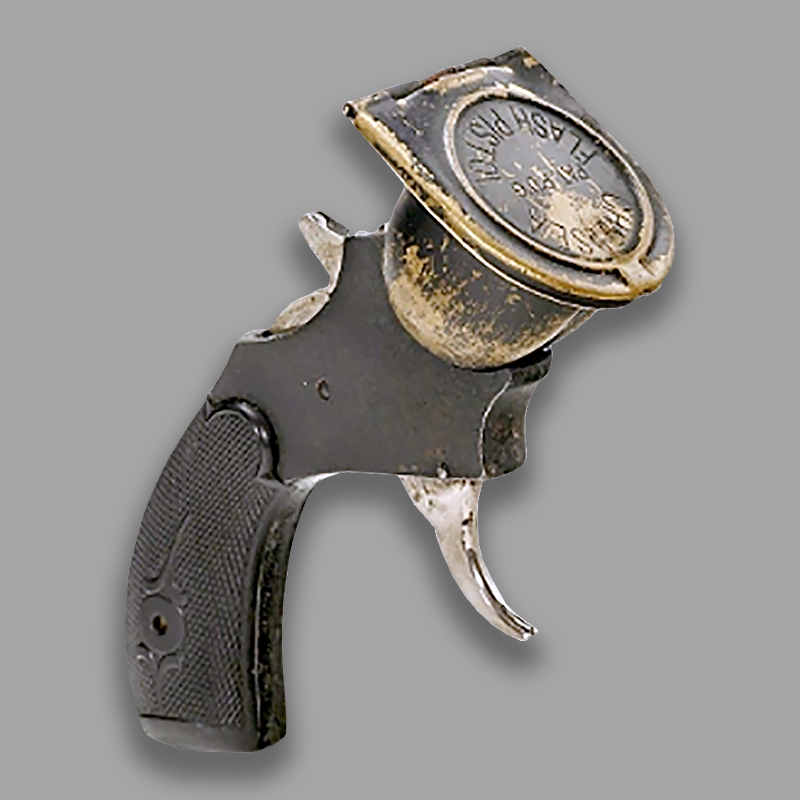
For some reason, the Chelsea Manufacturing Company created a photo flash resembling a pistol in 1895. Its handle and trigger look like the real thing, but a round bowl that holds flash powder is at the ‘business end’ of the device. Pulling the trigger pops open the lid and a hammer strikes an ignition cap, which in turn ignites the flash powder.
Advertising lists two sizes for $1.50 and $2.50 from 1900 to 1902.
What is especially amusing is the advertising tag line stating: “Doubles the use and value of your camera – beats daylight …”
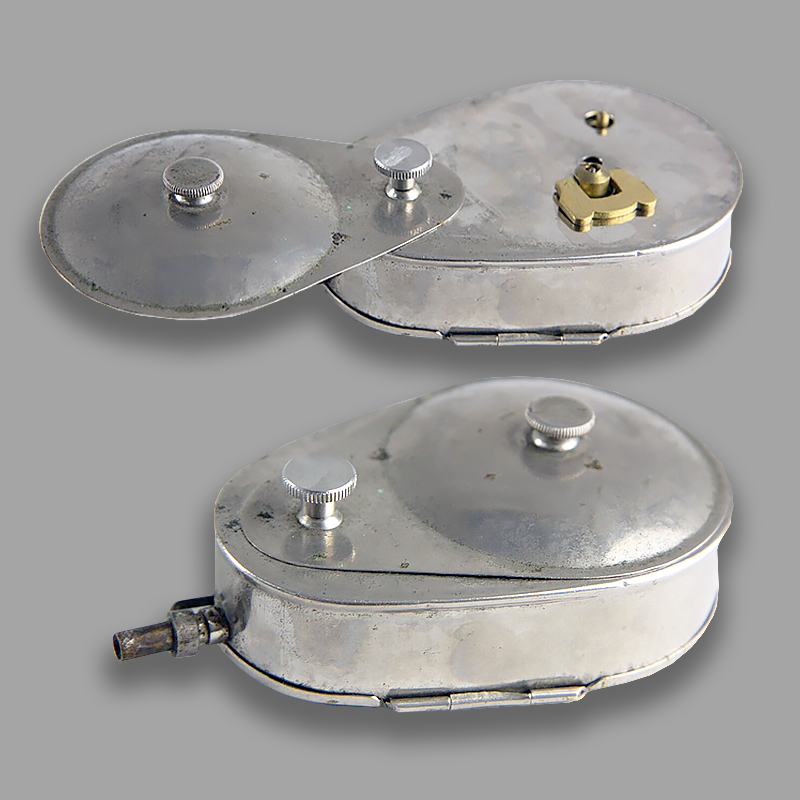
This Minisini Pocket-Automatic Magnesium Lamp is a magnesium burner dating from 1896 constructed entirely of nickel-plated metal.
In the Lamp the magnesium ribbon is moved by a clockwork mechanism providing a constant rate of burn. A dish covers the controls when not in use, this swivels to a position behind the magnesium to gave a reflector to reflect the burning magnesium.
The flash was patented by Gaspare Minisini from Turin, Italy in 1895 and is described in Swiss patent 10802. It was sold by J. Levi in Britain.
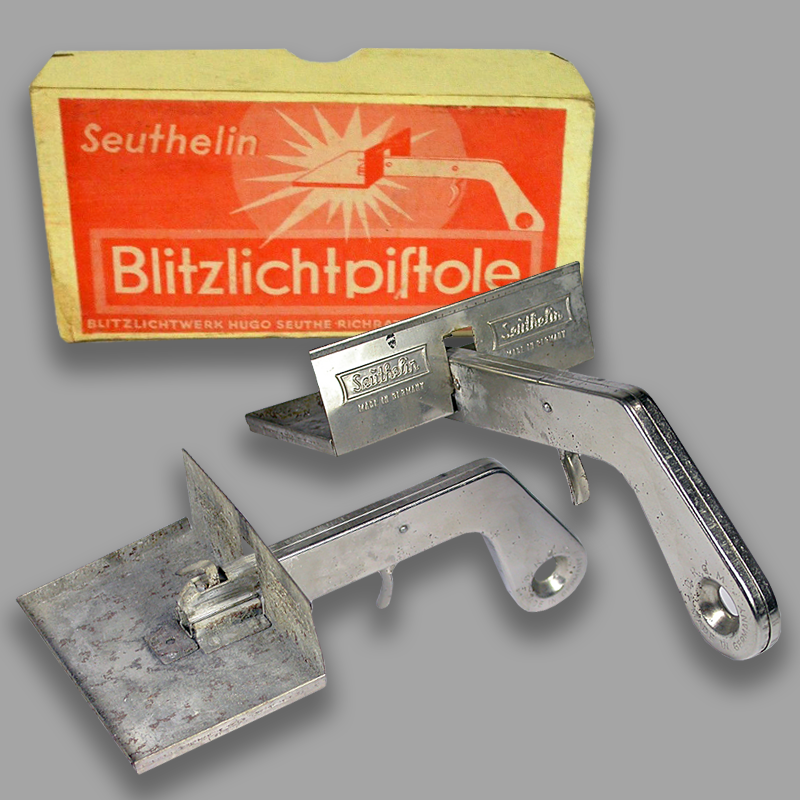
The Hugo Seuthe company developed, among other things, this inexpensive “flash gun” for flash powder and brought it onto the market in the 1930s under the brand name Seuthelin. The Seuthelin flash gun was produced by a company in Iserlohn . The Hugo Seuthe company manufactured flash powder until 1960, but ceased in 1965.
The Seuthelin flash gun was available in horizontal and vertical versions (this meant you could hold the pan with the flash powder higher). The “trigger” on the pistol grip moved a flint, which, like a gasoline lighter, sprayed sparks and ignited the flash powder on the pan.
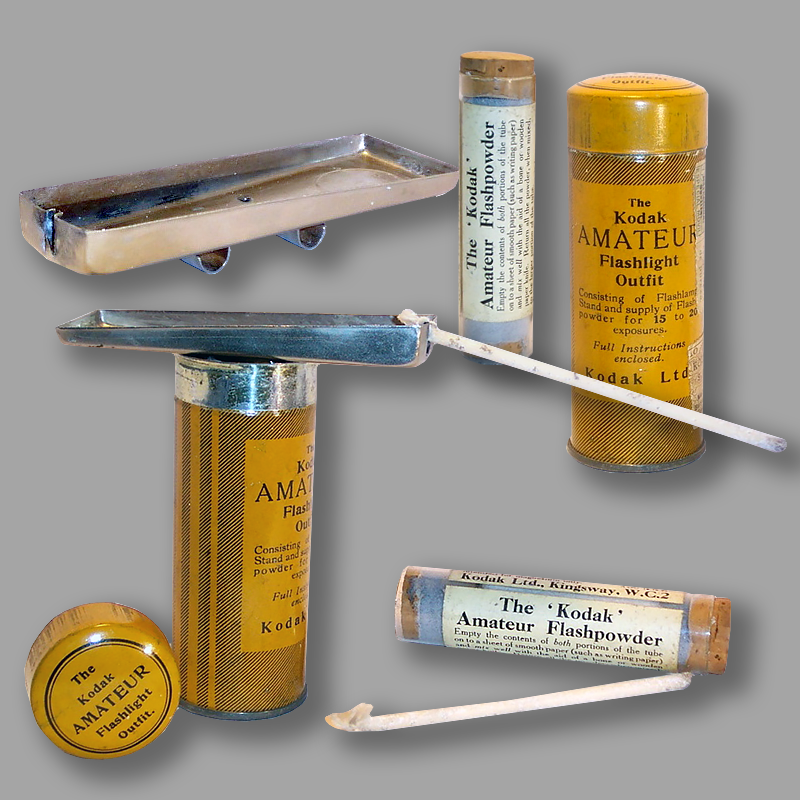
The Kodak Amateur Flashlight Outfit consisted of the 2 components of the flash powder packed separated from each other. These two powders had to be mixed together before use. Thereafter, a small quantity was placed in the tray. A (waxed) fuse is mounted in the notch on the opposite side of the container and is lighted. Then the outfit is tilted so that the powder mixture flows to the flame and explodes.
The total mixed powder quantity was sufficient for 20 to 25 exposures. A glass phial of the powders could be purchased separately, to restock the outfit. Made in England, in the 1920s.
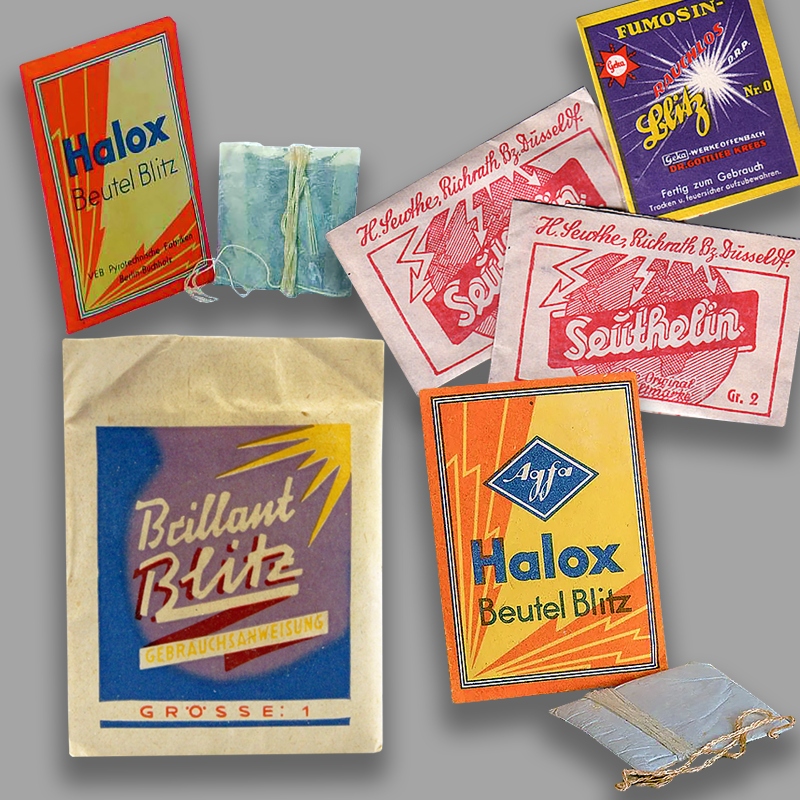
A variety of original flash powder bags from the early days of photography, when not every camera had a built-in electronic flash. A paper bag, slightly larger than a tea bag, full of ready-to-use flash powder in tissue paper bag with flash light chart printed on the bag. The bags were nothing unusual until the 1950s.
Printed tips on the powder bags: Extremely bright – completely safe. “Nothing is easier than taking a flash photo with Flash Powder! If taking a photo went wrong, you did something wrong! PLEASE NOTE! “Flash bags are not children’s toys!”
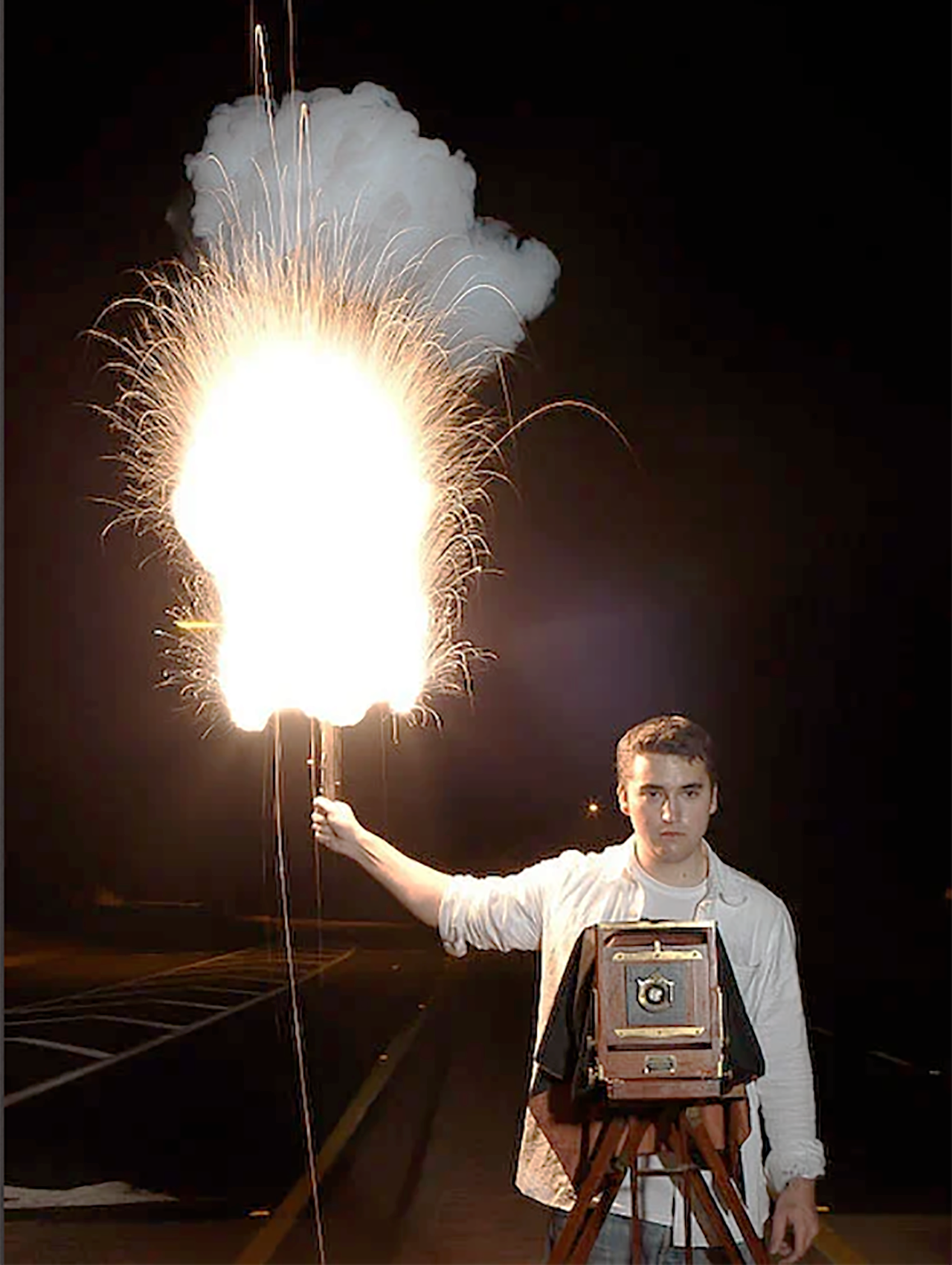
This photographer uses flash powder, an invention not available until 1887. Here he takes a picture with the aid of a Victor flash lamp from 1909.
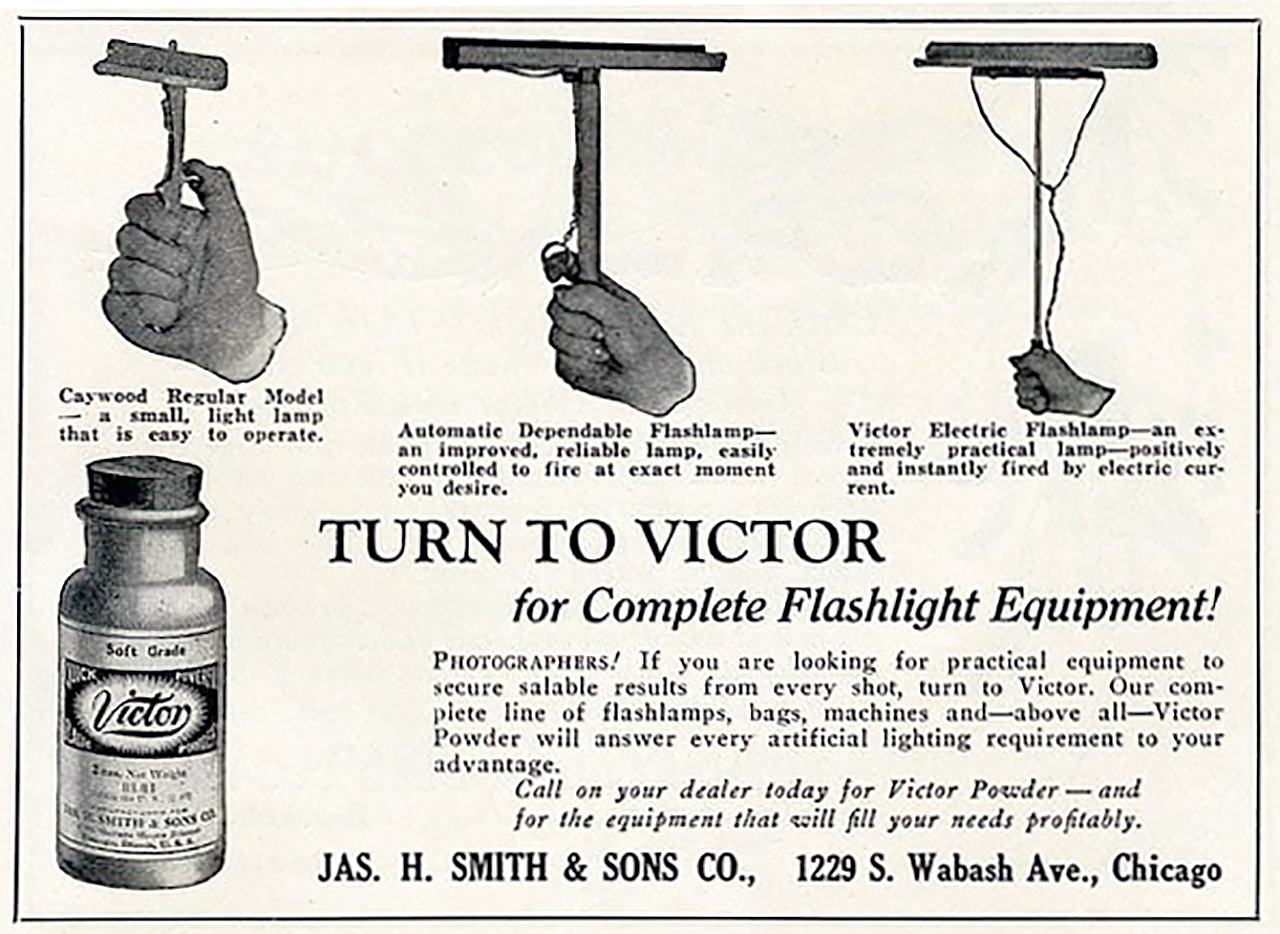
In this advertisement for the Victor Flash light, three options for igniting the Flash powder are offered, namely: the standard model with flint ignition; the improved model with a wider flash powder tray and direct ignition and finally the most exclusive model with electric ignition.
Group 2
Safer methods of igniting flash powder
On through the 1920s, flash photography normally meant a professional photographer sprinkling powder into the trough of a T-shaped flash lamp, holding it aloft, then triggering a brief and (usually) harmless bit of pyrotechnics.
But, the burning was often incomplete and unpredictable. Exposures varied considerably and the air remained laden with grey, opaque fumes, making the method unsuitable for studio use. Even more, the technique was not without its obvious dangers and it also released a lot of smoke, smell and a fall-out of white ash.
Nevertheless, magnesium lamps gained in popularity through the 1870s and 1880s despite the expenses and danger.
Being the explosive that it is, flash powder accidents were obviously inevitable. Simply grinding the components was dangerous enough, and a number of photographers died while either preparing the flash powder or setting it off.
In the beginning of the 20th century, the flash powder formula was refined and improvements were made to make the process simpler and safer. The flashes now lasted for 10 ms only, so subjects no longer closed their eyes during the exposure which helped portrait photography.
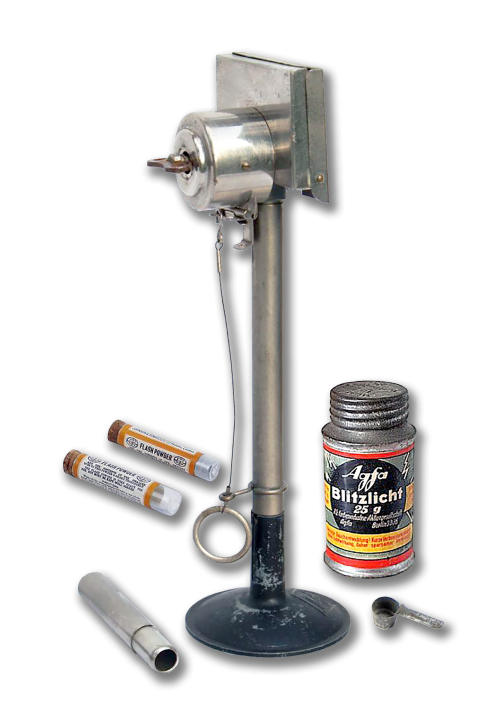
The back of an Agfa Flash Lamp on a tripod. The pulling device that drives the flint is clearly visible here, causing the sparks to ignite the flash powder in the tray. This method is considerably safer than blowing flash powder into an open flame.
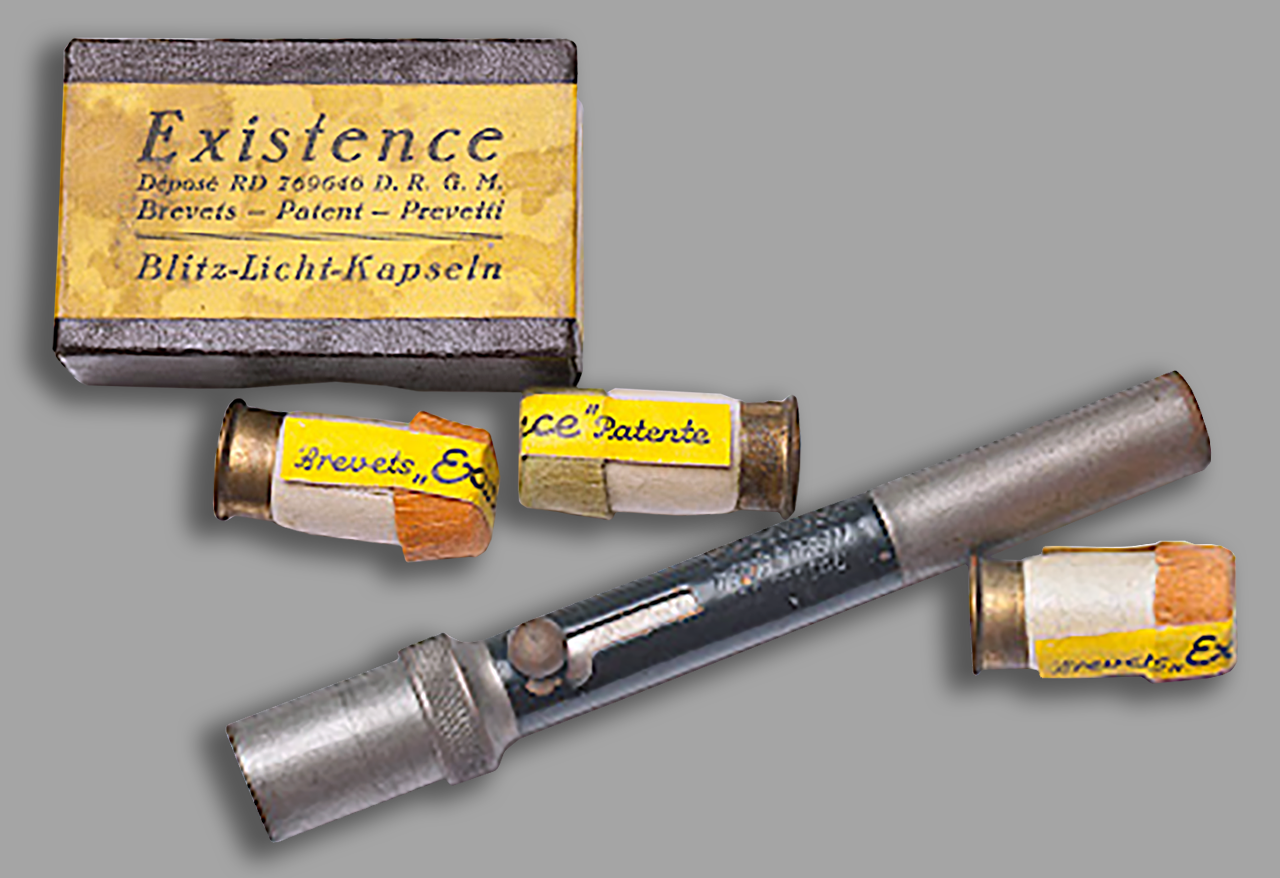
Preloaded flash powder capsules with built-in percussion caps for firing. A spring-loaded firing pin of the Flash Gun would set off the flash via the percussion caps.
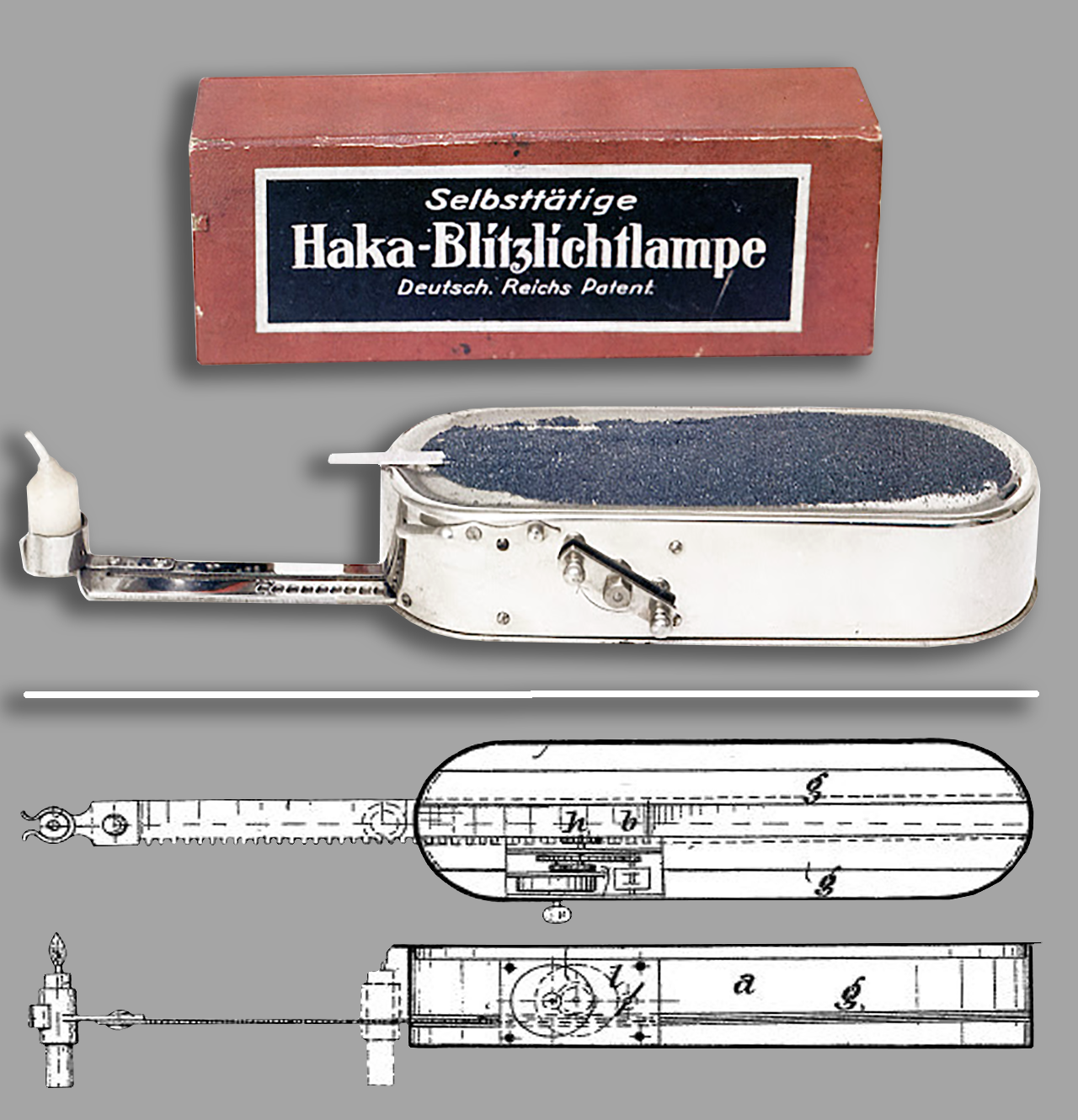
Haka flash lamp with self-timer and candle, around 1920
Klapprott’s developments were not limited to self-timers. One of his most original inventions was the ‘Automatic Haka flashlight’, which he patented in Germany, Austria, France and England. This symbiosis between an oversized Autoknips self-timer and a can of sardines slowly set in motion towards a strip of flammable paper, which when burned ignited the magnesium of the flash. This gave the photographer enough time to appear in the photo with the lens open and otherwise weak lighting. In addition to the aforementioned Flash Lamp, the photo also shows a partial drawing from the German Patent.
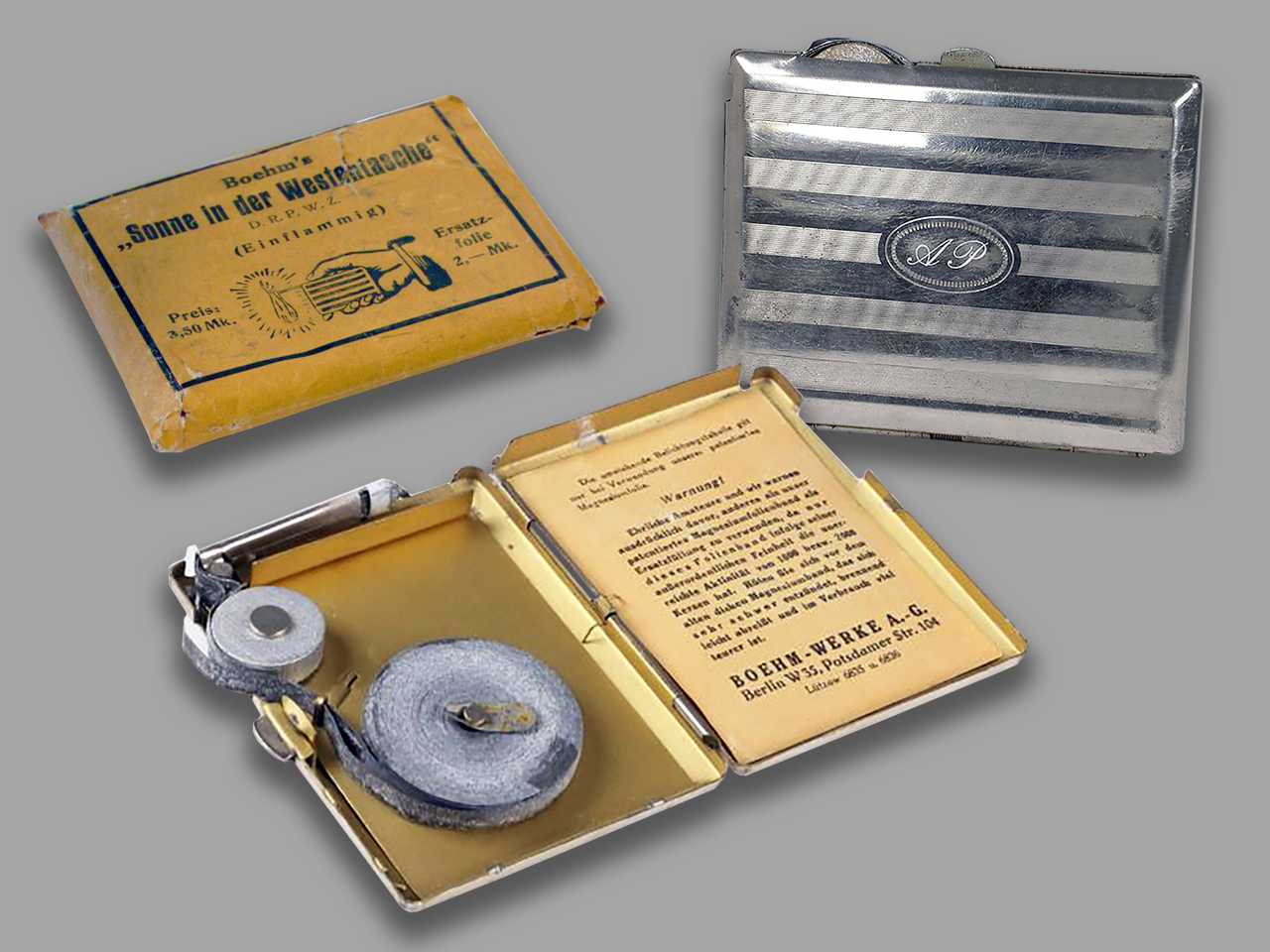
This image gives an impression of Wilhelm Böhm’s “Sun in your Pocket” flashlight.
Flint ignition and firing pin ignition of flash powder
Apart from the “convenience solutions” described below, the usual flash photography scenario of the time was as follows – the photographer armed himself with a cable release in one hand and gas igniter or similar in the other and opened the shutter or removed the lens cap. The expectant relatives who (usually) provided the motif followed the event with open eyes, Grandma felt her last hour approaching. The conclusion was a communal dusting…
safer mixtures
It was not until the 1920s that safer powder mixtures were available for the “flash lamps” that were then available. These, such as flash powder from Agfa, Hauff or Tetenal (FANAL), lasted for a long time in a closed container and were also largely smoke-free and quiet.
 Hauff “AfuminSo”, for example, the “Afumin”, a smokeless safety flash powder from Hauff, was sold in a two-chamber pack.
Hauff “AfuminSo”, for example, the “Afumin”, a smokeless safety flash powder from Hauff, was sold in a two-chamber pack.
In the still unopened can, the powder is mixed by pulling up a centrally arranged separating tube and then the required amount is poured into a pan for ignition.
Flint inflammation
 A lot of flash devices in the early twentieth century (like the Agfa Flash unit) worked by igniting flash powder with the help of a flint.
A lot of flash devices in the early twentieth century (like the Agfa Flash unit) worked by igniting flash powder with the help of a flint.
The friction wheel for operating the flint (works like in a petrol lighter) is opened by briefly turning the key on the back. By pulling the trigger lever, directly or via an extension cord, the friction wheel is triggered and, in conjunction with the flint, produces a spark that ignites the flash powder and brings enlightenment.
The well-known Agfa flash lamps and the large Agfa flash lamp even made ignition possible using a cord release and foot control.
Electric flash ignitions using an arc were also offered. Studios often already had transformer-controlled flash systems with multiple light sources.
A small curiosity and an anticipation of the electronic flash units with a large flash supply that were offered years later was Wilhelm Böhm’s “Sun in your Pocket”. This flash unit from the 1930s, which was more like a cigarette case than a flashgun, enabled up to 100 flash shots without recharging using a magnesium strip contained in it.
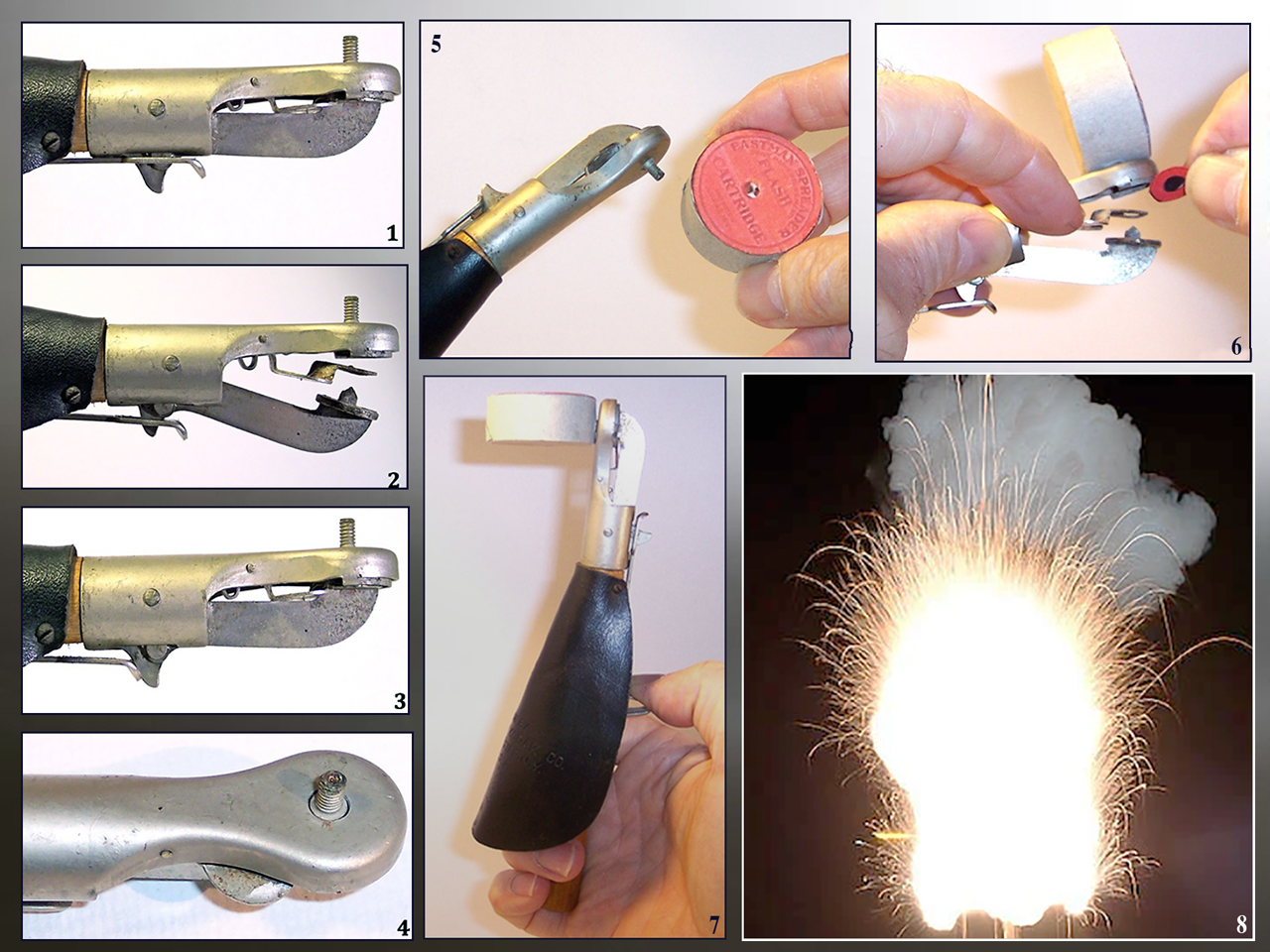
Action !
The Kodak catalogue of 1914 states that: instantaneous exposures can be made with Eastman Flash Cartridges and also with Eastman Spreader Flash Cartridges, the latter being adapted for use in the Eastman Spreader Flash Cartridge Pistol. Flash cartridges are recommended only where absolutely instantaneous exposures are required.
- Fig.1 : Starting position
- Fig.2 : When the trigger is pulled , the ‘mouth’ opens , the pointed hammer is retracted from the ‘pan’ and a flat support plate in between becomes evident .
- Fig.3 : By pulling the trigger further back , the trigger bar slides over the lug that is connected to the base of the hammer. This is the safety position advised before loading the pistol .
- Fig.4 : The pin on the back of the pan is hollow , and provided with screw thread .
- Fig.5 : A capsule with flash powder (an Eastman Spreader Flash Cartridge of which the fuse has been removed) is mounted on the pin
- Fig.6 : A cap that must produce the igniting flash is put between the support plate and the pan . The trigger bar is then pushed back forward over the lug (to position seen in fig.1).
- Fig.7 : The pistol is now ready for use ; pulling the trigger causes the point of the hammer to fire the cap as in the old fashioned toy-pistol , and the sparks that subsequently travel through the hollow pin make the flash cartridge explode .
- Fig.8 : The resulting flash , an illustration from the box of the device .
Let’s then hope that you have not forgotten to install your camera prior tot his fire works show in the ‘open flash’ mode .

With the right device configuration, flash photography could even be carried out using the then ultra-modern Exakta Varex VX and flash capsules.
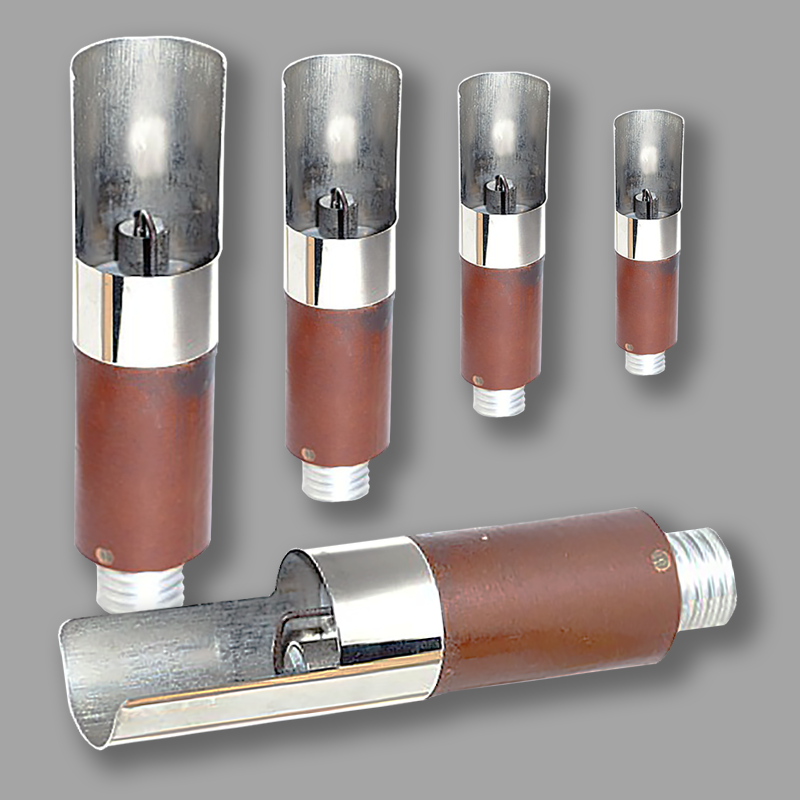
Even after the launch of the Vacuum flash bulbs, the “fire processors” initially did not give up on the good old magnesium. In addition to the capsule lightning described before, devices could also be found, such as this magnesium lamp, with which even loose magnesium powder could be ignited.
The holder is screwed into a lamp holder or an early flash unit with its E27 thread. But be careful, the device or socket should be switched off! Otherwise, it is advisable to establish a telephone connection with the fire department and undertaker beforehand.
Electrical ignition of flash powder capsules
Flashing with magnesium powder was the state of the art for well over half a century. Even in the 1950s, when there was already a wide range of vacuum flashes available, quite a few amateur photographers used them. Magnesium powder, especially if you bought it “open”, was unrivaledly cheap: 10g was available for 90 pfennigs and 100g cost 6.50 DM. Even with capsule flashes (ready-made flash powder), a photo cost a maximum of half as much at around 25 to 50 pfennigs with commercially available glass bulb flashes.
Capsules filled with flash powder were still available in stores for a long time (well-known brands: Agfa, Kissling, Seuthelin, Tetenal). Modern versions could be fired via adapters in normal lamp flash units via the camera contact. Capsule flashes did not require a reflector.
Operating cost
Capsule flashes of this type could easily be fired at just 3 volts using the battery-powered flash units that were initially common. Compared to open magnesium powder, they were quiet and gave a soft light without any shadows.
With the capsule flash, the good old flashlight powder lived on for many years, when more modern light sources such as vacu flashes or tube flashes were already available. It wasn’t until the 1960s that flash capsules and flash bags disappeared from stores. Initially, in the early 1950s, capsule flashes were significantly cheaper than vacuum flash lamps. The price advantage was only reduced by the glass base. Recently there were even capsule flashes available for purchase that could be used with the newer glass base flash units.
Even more advantages
In addition to the cheaper flash costs – the flash capsules can also be used with most flash lights – they also have a clear practical advantage: capsule flashes do not require a reflector! This means that the flash light that burns openly is far superior to the small-area tube or lamp flashes that light up in the reflector. While the reflector beams all the light forward, the flash capsule spreads its light to all sides. Interior spaces are illuminated as well as complex and expensive studio flash systems were able to achieve until much later.
On the other hand, the guide number of capsule lightning falls significantly outdoors because there are no reflective surfaces. Some flash unit suppliers even explicitly advertised their flash units with the option of using capsule flashes. With its Uni-Flash, the Kissling company even supplied a special capsule flash reflector that only had the function of protecting against a backward flame.
Professionals also increased the light output of the capsule flashes by adding loose flash powder, which, however, was not without risk because of the risk of fire. Such a wide range of possible uses combined with their low price gave the capsule flashes a long life. So when some photo professionals used capsule flashes in the studio in the 1970s, it was less a nostalgic attachment to the old flash powder and more practical. Only the professional flash systems like Mannesmann or Elinchrom, which became widespread in the mid-1960s, brought an end to such flash behavior.
There were still enough disadvantages to the method, for example, the smoke was still causing trouble, making studio work quite difficult, so another invention was awaited.
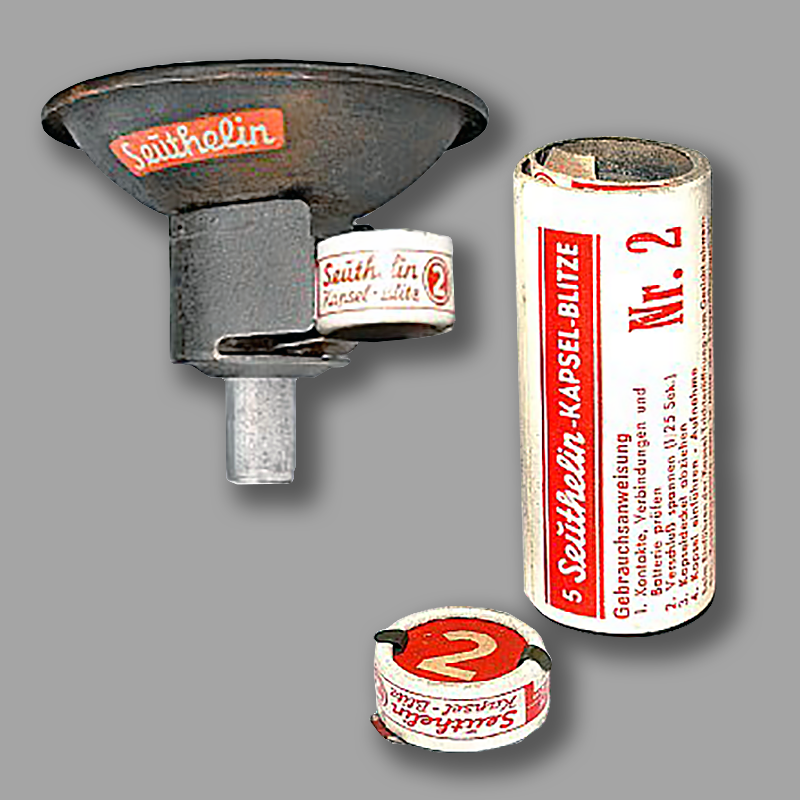
The Seuthelin flash capsule holders could be used universally with the flash units/lamp holders of the time instead of vacuum flash bulbs. Depending on the flash unit or mount type, direct or indirect flashing was possible. The picture shows a Seuthelin flash capsule socket type FS for indirect flashing with flash capsule No. 2 and a sales pack for 5 pieces No. 2. There were three different performance sizes, from Seuthelin in packs of 5. Their price was significantly lower than comparable flash lamps at 0.30 DM (size I), 0.40 DM (size II) and 0.45 DM (size III).
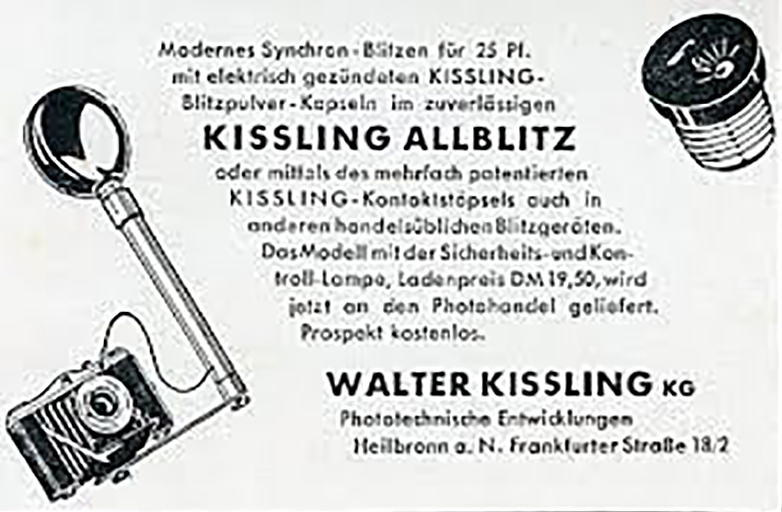
The Kissling company supplied so-called multi-patented, universal “Kontaktstöpsel”. They also supplied their own Uni-Blitz flash unit for use with these Stöpsel.
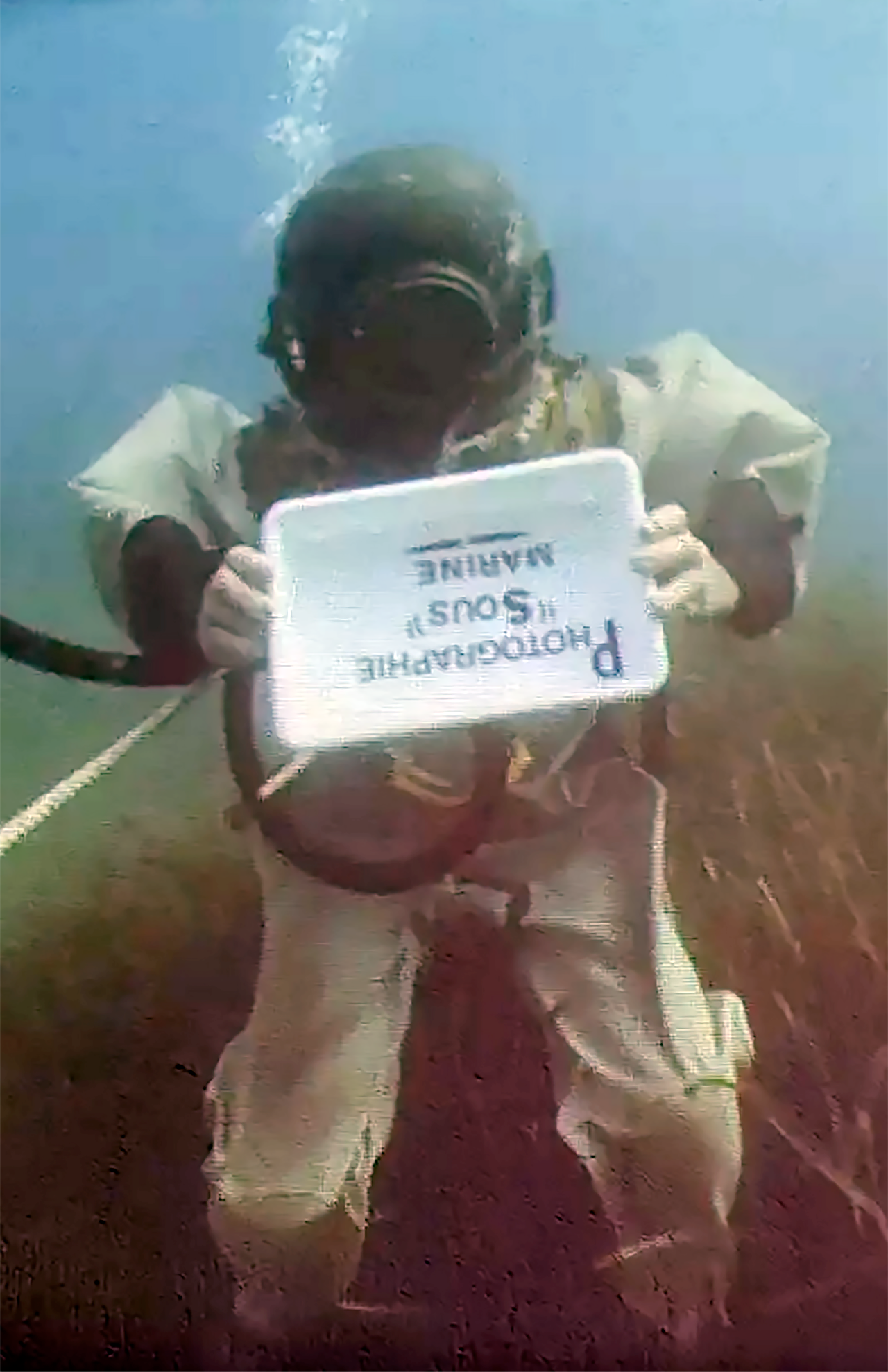
Taken around 1899 by Louis Marie-Auguste Boutan in southern France, this image shows his Romanian colleague, oceanographer and biologist Emil Racovitza, holding up a sign that means “underwater photography” in French. It is one of the first shots in which both the photographer and the subject were underwater.
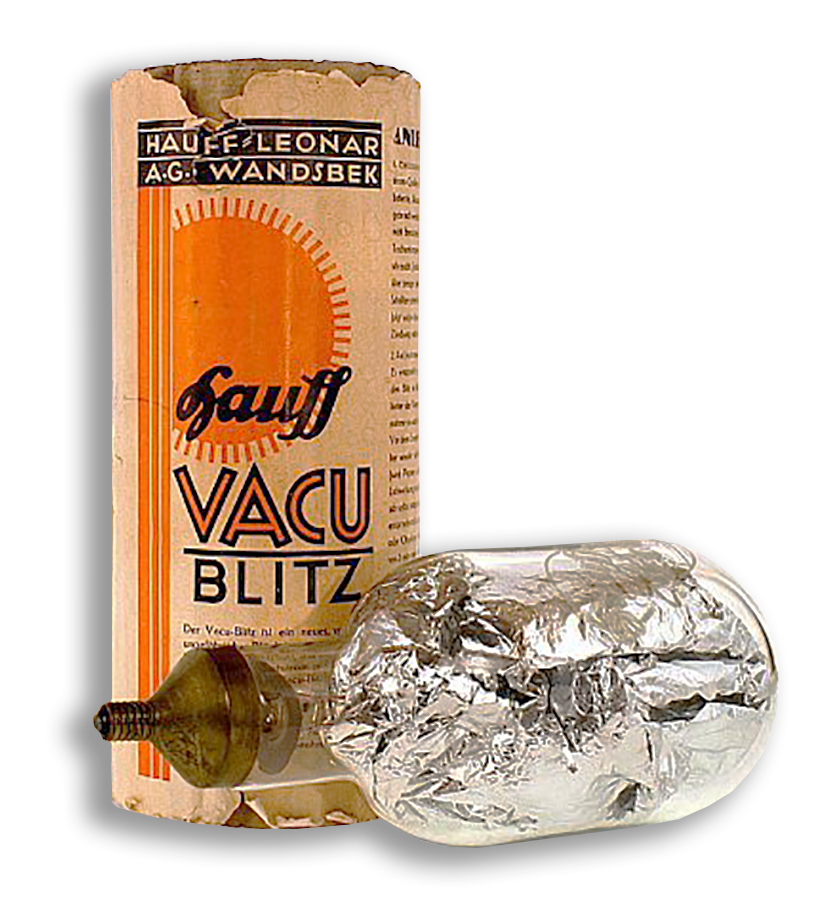
The picture shows the first VACUBLITZ lamp from 1929. The selling price at that time was 1.25 RM. Not particularly cheap!
Group 3
electrical ignition of vacuum flash bulbs
In his experiments in underwater photography in the 1890s, Louis Boutan – a French zoologist and a pioneer underwater photographer – used a cumbersome magnesium lamp. Throughout his experiments, Boutan, like modern underwater photographers, was forced to address the critical problem of light. He tested different apertures and, along with electrical engineer M. Chaufour, created what was essentially an underwater flashbulb from a glass bottle containing oxygen and a magnesium wire that could be ignited with a current.
Unfortunately, the burning magnesium led to a thick smoke of magnesium oxide which coated the inside of the bulb making the images dim. The heat that the bulbs produced also became a problem, as a majority of the bulbs would explode when used.
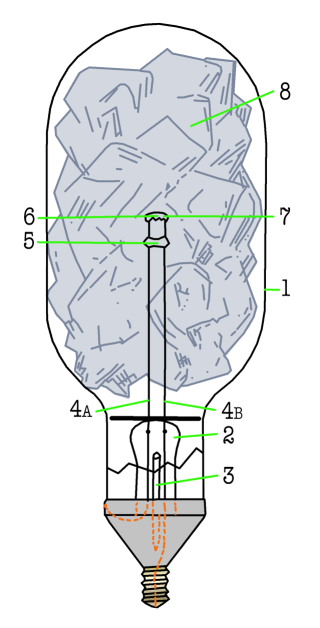
A “flash lamp with electric ignition” has been patented since August 16, 1925. In patent specification No. 446514 from the Reich Patent Office, “Dr. Paul Vierkötter in Munich” is named as the inventor and owner. On March 1, 1929, Hauff-Leonar AG applied for a patent for another “flash lamp, especially for photographic purposes”. “Johannes B. Ostermeier in Mering near Augsburg, Germany” is named as the inventor. Johannes Ostermeier was a physicist at the Hauser lamp factory in Augsburg.
1: Glass flask – 2: Glass base – 3: Vent Tube – 4a and 4b: power supply wires –
5: Glass bead – 6: ignition wire – 7: squib – 8: Fuel
What makes a flashbulb flash? Well, flashbulbs have, placed between their terminals, a piece of tungsten or zirconium filament. This wire is covered with an explosive primer paste. When current is applied, the wire heats up, igniting the paste, which then ignites the tin, aluminum or (in later years) aluminum wire (or wool). An oxygen atmosphere would increase the brilliance of the flash. Some bulbs were also filled with nitrogen gas to actually slow or delay the burn.
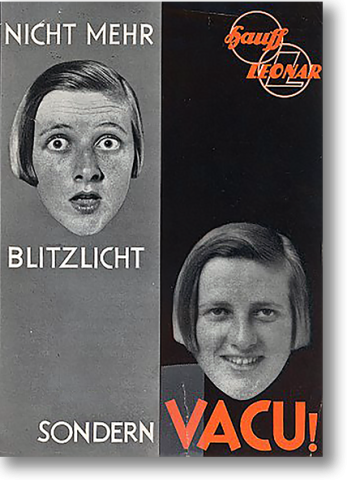
The Vacu-Blitz advertising leaflet is proud that the Vacu-Blitz has the same brightness as the best quality flash powder, but burns much faster and with more pleasant light than this; therefore there are no frightened faces when taking a Vacu-Blitz shot.
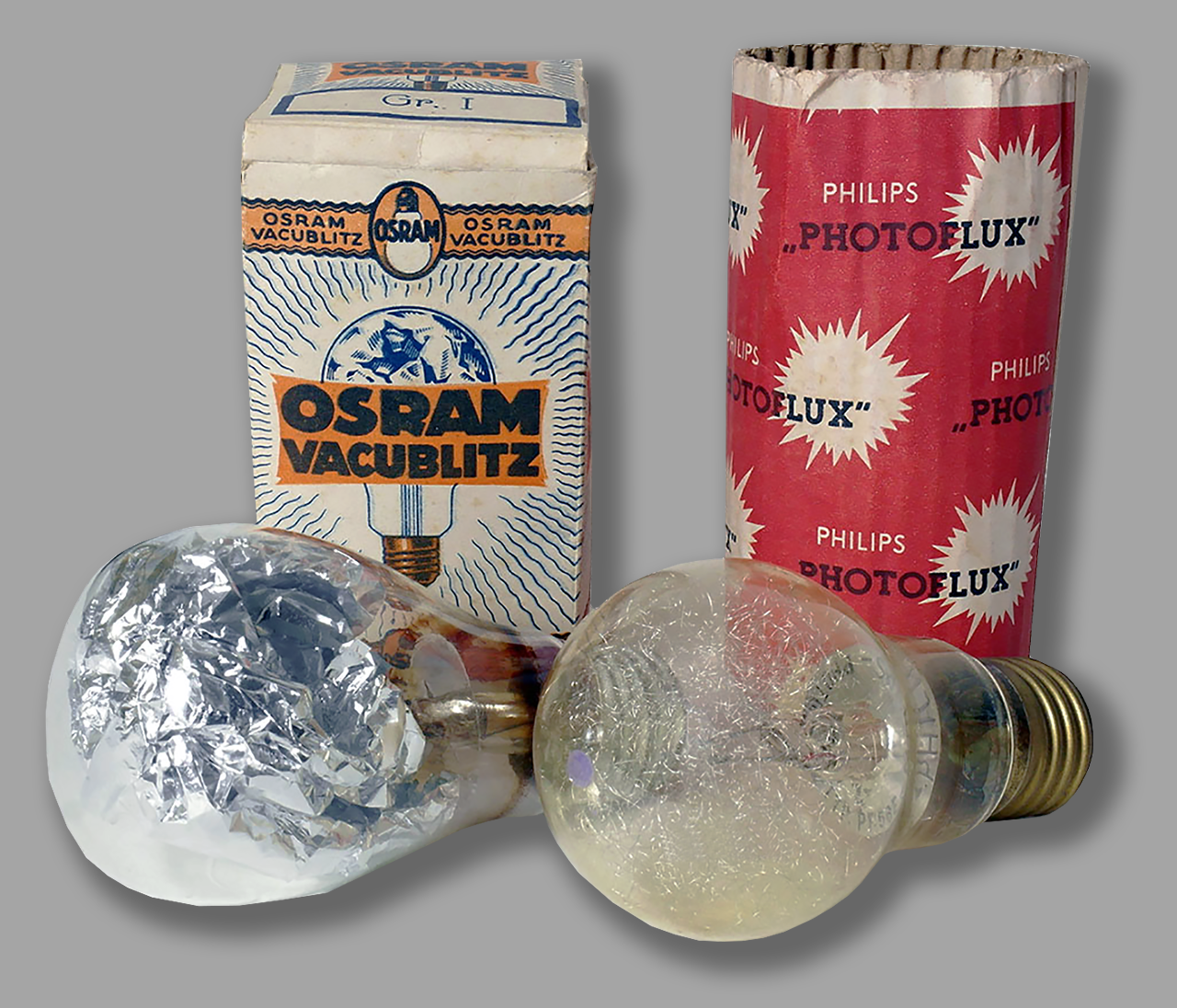
Osram has been researching his own flash lamp since 1925. After a few years, Osram stopped doing this and started working with the Hauser lamp factory in Augsburg. The new lamp developed there is patented under the name VACU-BLITZ. An earlier patent from 1930, under the name ‘FLASH LAMP’, is sold by Hauser to General Electric. Only license production remains for Osram.
In 1932, Osram started serial production of a flash lamp filled with magnesium and aluminum foil. Since 1930, Philips has been working on a flash lamp filled with gas and magnesium wire and puts its Photoflux flash lamp into production in 1934. These lamps would remain available until the late 1950s. Transparent for black and white film and blue for color film.

All flashbulbs create a lot of heat when fired, so some safety precautions are necessary to avoid burning your fingers when installing and removing them from the flashgun. The bulbs can be set off by static electricity, so carrying loose bulbs in your pocket is discouraged. Although bulbs can crack when fired, they seldom explode, but it does happen, so a shield should be used over the reflector, especially indoors or when shooting close to a person.
THE BIRTH OF THE FLASH BULB
The answer to the flash powder problems was the flash bulb. The flashbulb was developed to provide a safer alternative to the flash-powder used to create artificial light for photographs, especially when used indoors. But it was not until the late 1920’s that commercially viable bulbs became available.
These flash bulbs were closed lamps that contained a magnesium filament along with oxygen gas. Initial bulbs were designed out of glass, but they were later switched to plastic when it was discovered that the magnesium’s ignition could break the bulb. Later bulbs used aluminium, magnesium or zirconium for a more powerful flash and for better combustion ribbons of metal were replaced by a fine “wool” of the metal.
The first commercially available flashbulb in Europe was the Vacu-Blitz, made in 1929 by Hauff-Leonar AG of Germany. This was a glass bulb about the size of an ordinary light bulb and was filled with ultra-thin aluminum foil in a low pressure oxygen atmosphere. The foil was ignited using electricity.
General Electric (GE) and Westinghouse already acquired the license rights to the bulb design in 1927 and began marketing and producing them in the US.
General Electric introduced their Sashalite which used aluminum foil in a pure oxygen environment.
BETTER, BUT CERTAINLY NOT IDEAL
Of course, flash bulbs were far from the perfect solution: the bulbs tended to be incredibly fragile and could only be used once. Also, the bulbs were typically too hot to handle after they were fired. It was found that the glass bulbs would break or explode when fired and this problem was solved by coating the bulbs with plastic. They were still too hot to handle immediately upon firing.
A typical 1930’s era photoflash bulb was the size of a standard 100 watt light bulb. Made of clear glass, these bulbs had a typical Edison or Mazda medium screw base (though the Sashalites often had a miniature flashlight bulb base, or a bayonet base). This made it possible to fire them in standard light sockets, but this was not advisable.
Danger of explosion
Flashbulbs have a hazard of exploding, especially if outside humid air was allowed to seep into a damaged bulb. Later bulbs (circa 1935 – invented in the USA –) had placed within their spheres a tiny daub of blue cobalt chloride which would turn pink upon contact with outside air. This would alert the intend user of a possible explosion hazard.
Another method to check whether a flashlight was still OK, to connect it to a 4.5V flat battery using a 3.8V/0.07A flashlight bulb. If the ignition wire inside the flash bulb was good, the flashlight bulb would light up; Under no circumstances should a stronger test lamp be used because the flash lamp would then have already ignited!
Still later safety improvements involved coating all bulbs with a clear laquer or plastic to hold them together in case the glass cracks due to the heat.
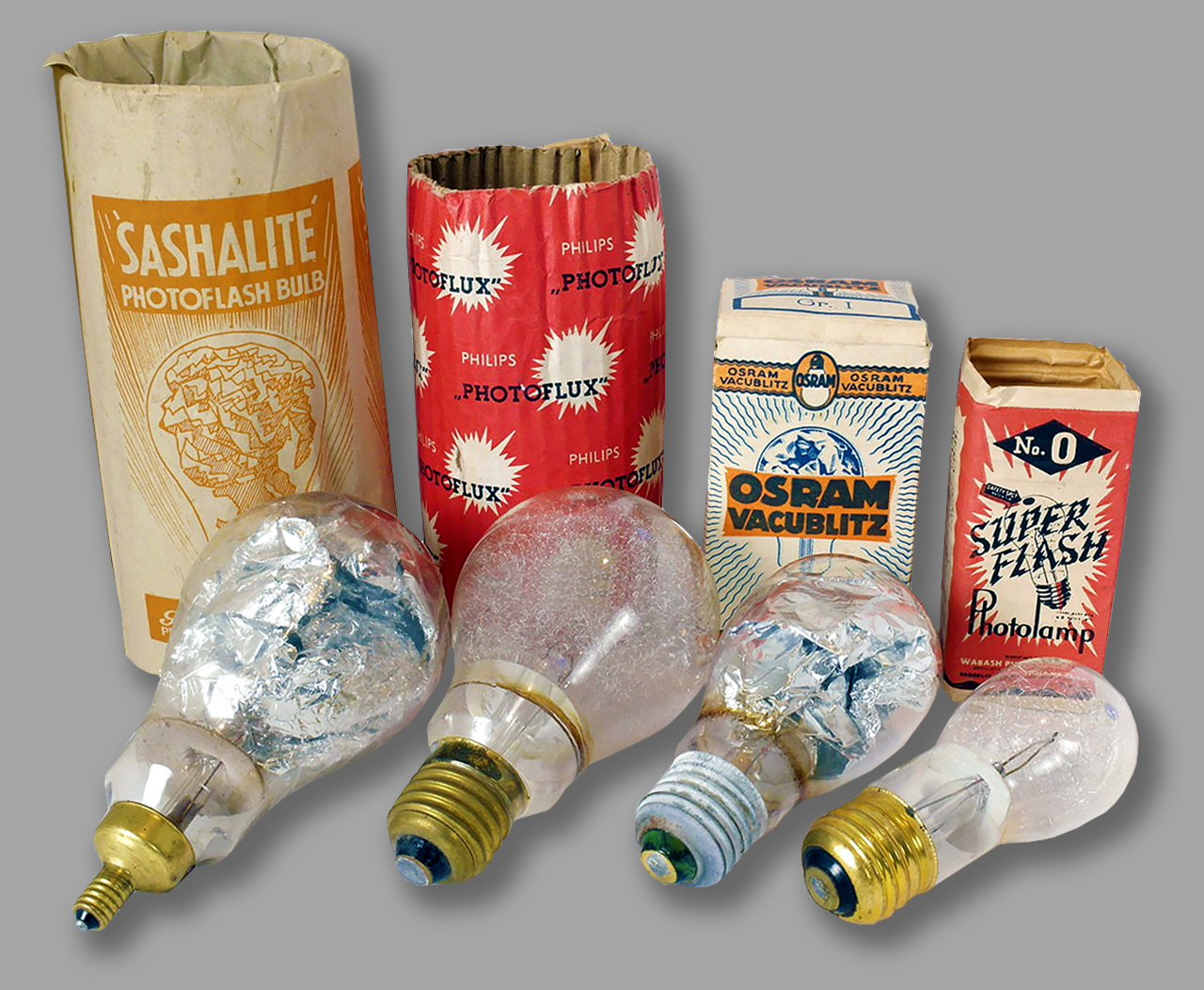
Four representatives from the very first hour of this primal type of flashbulbs. From links to right: Sashalite Photoflash Bulb, Philips Photolux, Osram Vacublitz and Wabash Super Flash Photolamp. The Wabash Photolamp Corporation introduced its wire-filled lamp in America in 1937 under the name Superflash.
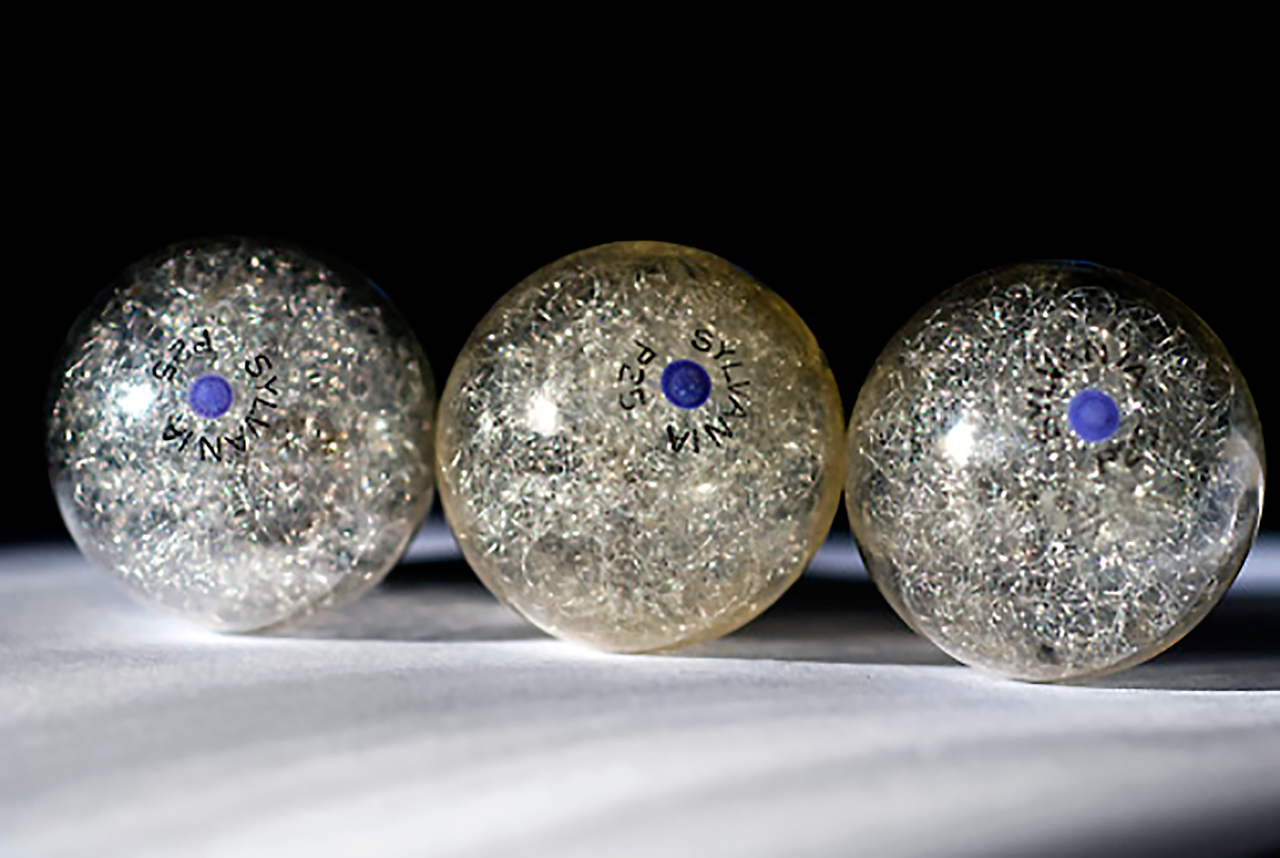
Bulbs are normally made with negative pressure inside so that the burning gases did not overpressure the bulb and cause a bursting of the bulb on firing. However, The bulbs most likely to explode are those where the seal at the base has failed and air has been sucked into the bulb. This raises the initial gas pressure in the bulb, and when fired, the sudden expansion of the gas due to the heat can raise the pressure above the bulb’s burst pressure, causing it to shatter. For this reason some manufacturers placed a small blue dot of a cobalt mixture inside the bulb. This would turn pink or even invisible if exposed to air thus warning the user not to use the bulb.
Flash bulb classes
Flashbulbs are described by class, such as F (fast peak), X (intermediate peak), M (medium peak), S (slow peak), or FP (most people call these “Focal Plane”, but really means “flat peak”). These classifications refer to their burn characteristics and the time it takes to reach peak brightness.
Some of these classifications are for specialty bulbs needed for specific applications like the X, F and S-type. Below is a brief description of the five types:
- F Type Bulbs – called “Fast Peak” bulbs. When ignited the bulb’s light output rises to a maximum and then trails off. These bulbs peak in about 5 milliseconds (ms) and the peak lasts about 10 ms.
- X Type Bulbs – a German class laying between types F and M, with time to peak of 10-18 ms and most common flash duration of 8-10 ms. These bulbs could be used with X synchronised leaf and focal plane shutters at speeds up to 1/30 s.
- M Type Bulbs – called “Medium Peak” bulbs. These peak at 18 to 20 ms and last 8 to 12 ms. These are intended for leaf shutters. However, can be used with focal plane shutters at slow speeds, i.e. around 1/30th of a second or slower.
- S Type Bulbs – called “Slow Peak” bulbs. These take about 30 mm to peak and the peak lasts about 20 to 30 ms.
- FP Type Bulbs – have a “flat” peak. Intended for synchronisation with focal plane shutters at faster shutter speeds. These are also called “Focal Plane” bulbs. They take 30 to 35 ms to peak and the peak lasts 25 to 35 ms.
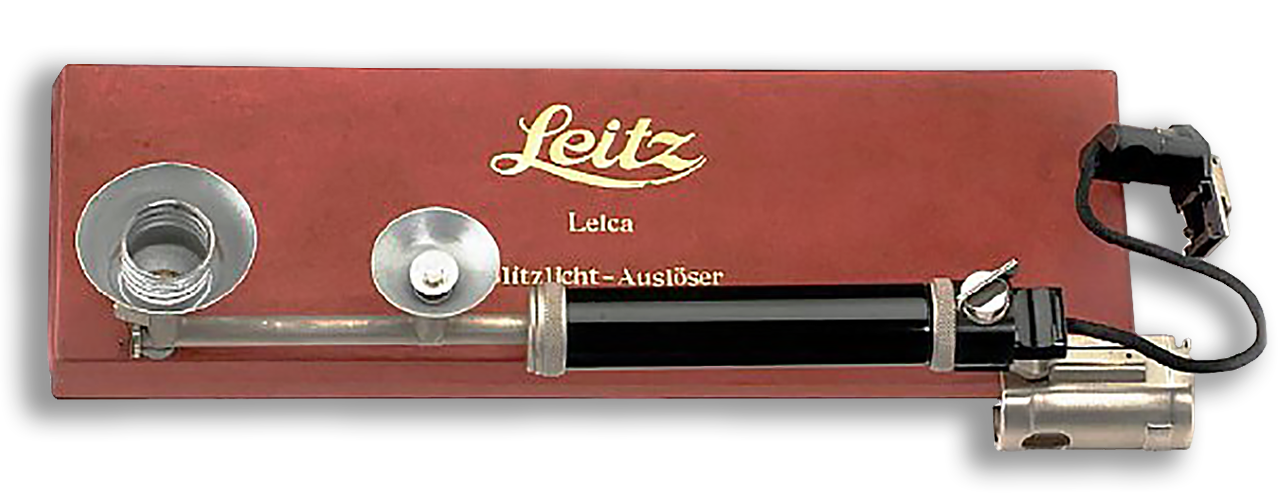
Leica flash attachment BTLOO for the Leica II, III and IIIa from 1935. With its battery housing it was plugged into the right side of the camera and secured in the tripod thread using a hand screw.
It is equipped with 2 lamp holders, in the standard version both had E10 threads. The version from Leitz New York shown in the picture has an adapter for large vacuum flash lamps with an E27 thread inserted into the upper socket. Synchronization here no longer takes place via the release button, but rather via the shutter wheel that rotates when the shutter is released.
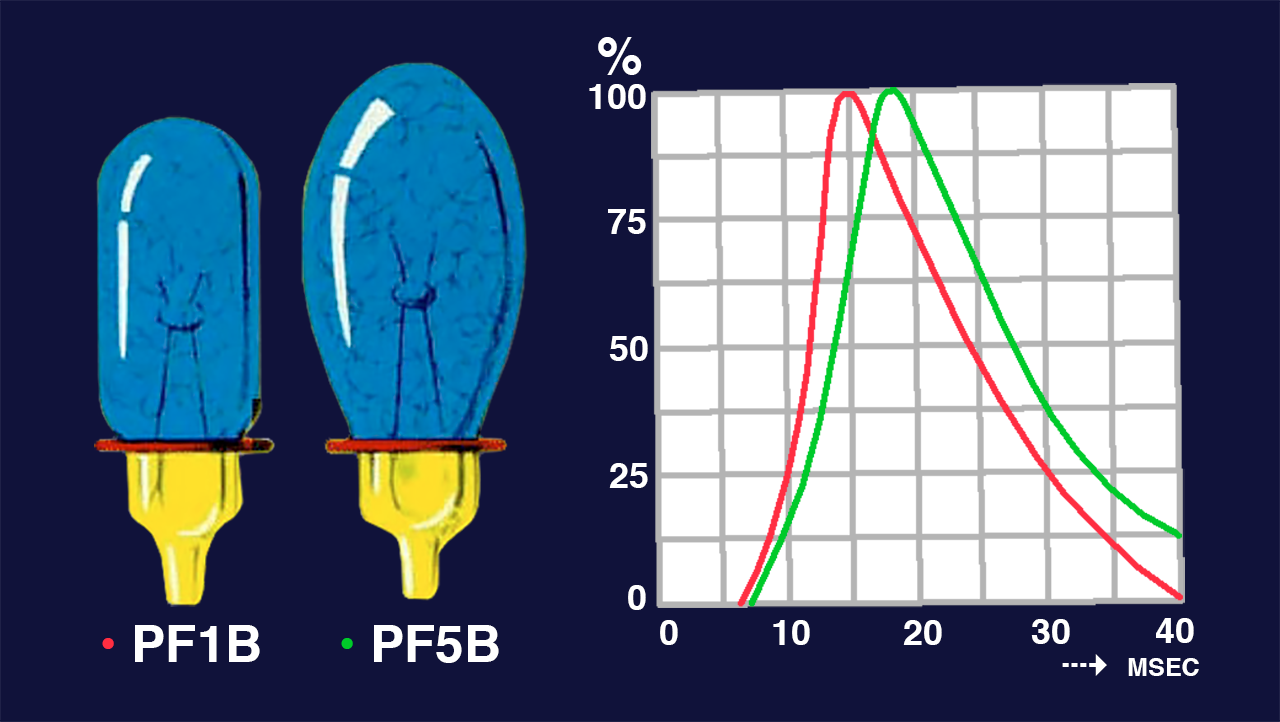
Philips “Photoflux” bulbs are the ideal light sources for exposures of fast-moving subjects or candid shots. They are indispensable for both indoor and outdoor photography – when there is little or no daylight or, in bright weather, to diminish the sharp contrast between the sun-lit areas and dark shadows.
Other types of small baseless flashbulbs, the PF1B and PF5B, are specially designed for PF-type flashguns. These blue “Photoflux” flashbulbs which possess the same excellent qualities as OTHER Photoflux flashbulbs, are intended for use with both daylight colour and black-and-white materials.
CONSTRUCTION
All flashbulbs are conceptually the same. All consist of a glass bulb containing a thin filament or foil made of aluminum, magnesium or zirconium. The bulb is filled with pure oxygen at low pressure. Two electrodes are connected to the filament or foil to pass electricity through it and the bulb is sealed to a base which is electrically connected to the electrodes.
The most common base for large bulbs was the screw base used today on ordinary light bulbs, the Edison E27 Screw, also known as the Mazda base. Other types used on smaller bulbs are the bayonet and the smaller flanged base. The smallest bulbs dispensed with the base altogether, running the electrode contacts out through the glass at the bottom of the bulb. The illustration at the top right shows each of the bases mentioned. Since the bulbs are incandescent, flashbulbs meant for color photography are colored blue to correct for daylight film. There are also infrared bulbs for use with infrared film.
CAPLESS BULBS
The well-known E27 fitting (E for Edison) soon became too large as the lamps became more powerful and smaller. The manufacturers switched to the smaller E14 and E10 fittings (flashlights), but these were less pleasant to use. The minimum ignition voltage was 3 volts; the high-performance lamps F1/F2 or PF110 could even be ignited with 220V mains voltage.
In 1952, Osram and Phillips introduced new glass-base capless flash lamps. These were considered as the Photokina sensation in 1952, with sales prices starting at 48 pfennigs for the smallest size (XM1/PF1). Later, around 1960, the smaller AG1 size appeared in America. There was a larger version of the AG-1, called the AG-3, which had about the same light output as an M3 capped bulb, but the AG-1 was always the baseless (capless) standard, since by the time the AG-1 appeared, most photographers were using film fast enough that they didn’t need the greater light output of the larger bulbs.
The size of a ‘universal’ PF1B is 16.5mm diameter x 46mm long, giving 7500 lumens seconds of light. Their suggested Guide Number was 130 in feet, 40 in metres, for ISO 100 film at 1/30sec. Although really standing for PhotoFlux, Philips referred to ‘PF’ in their adverts as also meaning ‘Perfection in Flash’.
In the following years, the glass-base capless flash lamps became smaller and smaller with the same flash power. The last flash lamp at Osram was produced in 1978, and cube flashes and flipflash lamps were still available for purchase for a few years longer.
FLASH SYNCHRONISATION
Because the light comes from burning metal the light is too “red” throwing color balance off. For this reason later bulbs were coated with a blue plastic to bring the color temperature closer to that of daylight.
Some interesting quirks of flash bulbs include the fact that the time needed to reach full brightness and the maximum duration of the flash were both longer than the electronic flash units of today. As a result, cameras with flash synchronization capabilities typically fired the flash bulb before opening the shutter to expose the film.
Camera synchronization ran parallel to the development of vacuum flashes and flash units. These were completely new processes for the photographers. While with magnesium people were used to first opening the shutter and then lighting the fuse, this was no longer possible with electric flash lamp ignition. Initially this was done using mechanical constructions on the trigger.
Heinrich Bonn from Marburg invented the synchronized flash in 1933 and sold his invention to Leitz the following year for 250 Reichsmarks. But in 1935, the Exakta B was the first camera ever to have built-in flash synchronization, which fired the flash in time so that its greatest light output coincided with the full shutter opening. Finding the right method for this was not always possible straight away.
Leica photographers, for example, needed patience and a few accessories; In 1950 they still had to deal with complicated contact numbers so that the ignition timing matched the respective flash lamp. An overview of the most common types of synchronization is in the table below.

Different Flashbulb Bases. From left to right: Edison or Mazda (Sylvania #2B), Bayonet (GE#5), Flange (Sylvania M3), Baseless (AG-1B).
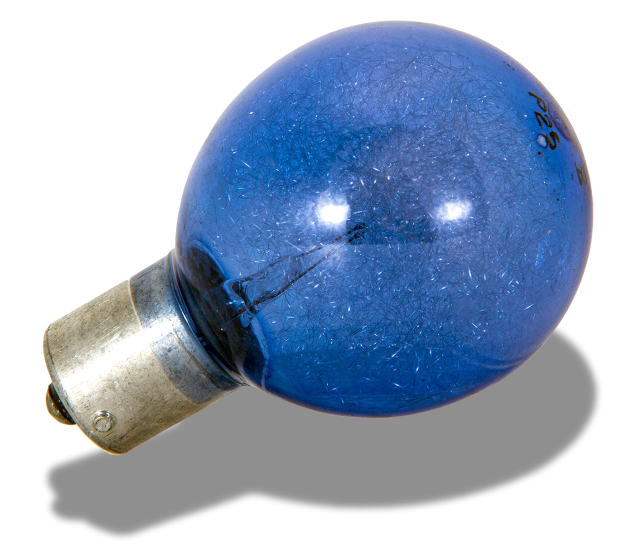
Prior to around the mid-1950s all flashbulbs were clear, and emitted light with a color temperature around 3800K. Clear bulbs work well with black-and-white or tungsten-balanced color film, but are not well suited for use with daylight color film.
As color film became more readily available after World War II, to use clear flashbulbs with color film required that the photographer use a blue filter either on the camera lens or on the flash unit itself. Many flash units were sold with blue accessory covers for use with clear bulbs and color film.
As color film became more popular through the 1950s, new flashbulbs with blue coatings on the bulbs themselves became available to reduce the hassle of using additional filters for color photography.
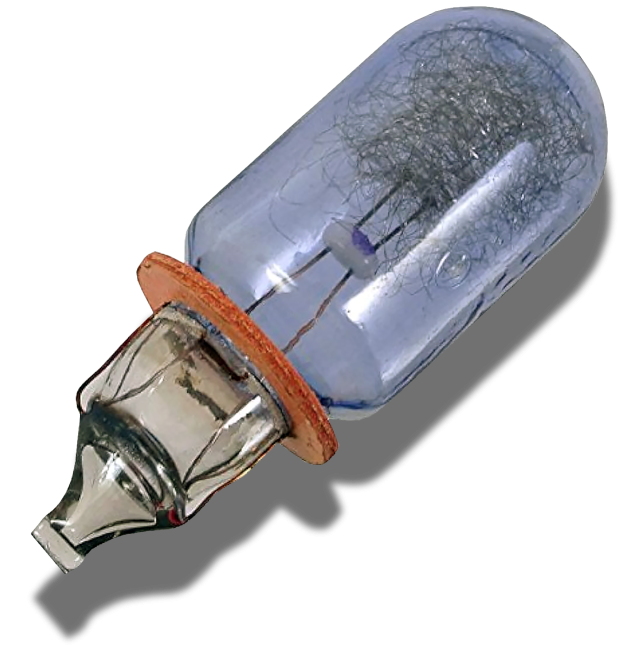
Philips PF1B Photoflux flash bulb with the incredible guide number of 125 at 21 DIN. The Osram AG 3B Super flash bulb, which was introduced at the same time, has a guide number of 36 at 21 DIN.
(all information taken from https://flynngraphics.ca/wynnes/ and photobutmore.de/)

As you might expect, cameras have developed various types of synchronization to deal with various flash bulbs and strobes. Below we have a survey of the ones you are most likely to run into.
= is used for electronic flash. The camera is timed to fire the flash as soon as the shutter is completely open. It does not work for some flash bulbs because the bulbs, once fired, take several milliseconds to build up to maximum light output.
= is designed for “fast peak” bulbs. It has a firing delay of about five seconds to allow the bulb to reach peak output and then it opens the shutter fully.
This means shutter speed on a focal plane shutter cannot exceed about 1/60th of a second.
= is an obsolete system found on older cameras. It is suitable for medium-speed flash bulbs.
This setting fires the flash bulb slightly ahead of the shutter opening so it corresponds with maximum light output from the bulb.
= is the sync system for FP Type flash bulbs. The longer duration of the flash allows time for the shutter curtains to cross the film plane with a travelling slit which allows for film speeds above the 1/60th limit imposed by the need for a fully open shutter.
= is not really a synchronization but it is a means of using the flash. To use this you set the camera on “B” which will open the shutter and keep it open as long as the shutter button is held down. Then you can open the shutter, fire the flash manually, and then let the button go.

The camera closes electrical contacts with the camera but it is the flash unit that supplies the battery power. For this to work the flash must be electrically connected to the camera. The pricipal methods are through a PC Socket or a “Hot Shoe”.
This is an almost universal standard on older cameras and actually came to have an ISO definition. PC is short for Prontor/Compur. The corresponding plug is attached to the flash unit by a thin coaxial cable.
The PC Plug is not specific to any flash or camera. It is simply a connector between flash and camera. How any camera or flash functions will be found in their respective User Manuals. The image shows the PC socket on the end of a Canon F-1.
This was the Canon rangefinders answer to the Hot Shoe. It was a rail attached to the left end of the camera body with an electrical contact embedded in it. The flash unit would slide down over the rail and the electrical contacts on the unit would make contact with the contact in the rail. It worked exactly the same as a hot shoe.
The image shows the side rail at the left side of a Canon Model II F rangefinder camera.
This was introduced on the Canon Model VT in 1956. It was basically a PC Socket in the middle of a bayonet mount into which a flash unit could lock. This flash attach point continued through to the F-1
The image shows the left end of a Canon Model VT rangefinder camera with the new Flash Unit Connector Socket.
The Hot Shoe is seen here mounted on top of the prism on a Canon AE-1. The two small circles and one large circle are the electrical contact points for the flash unit.
The hot shoe in this form has become the standard attach point for the flash unit and on professional cameras has become vital for the programable radio transmitter of our own day. The image shows the Hot Shoe on top of a Canon AE-1.
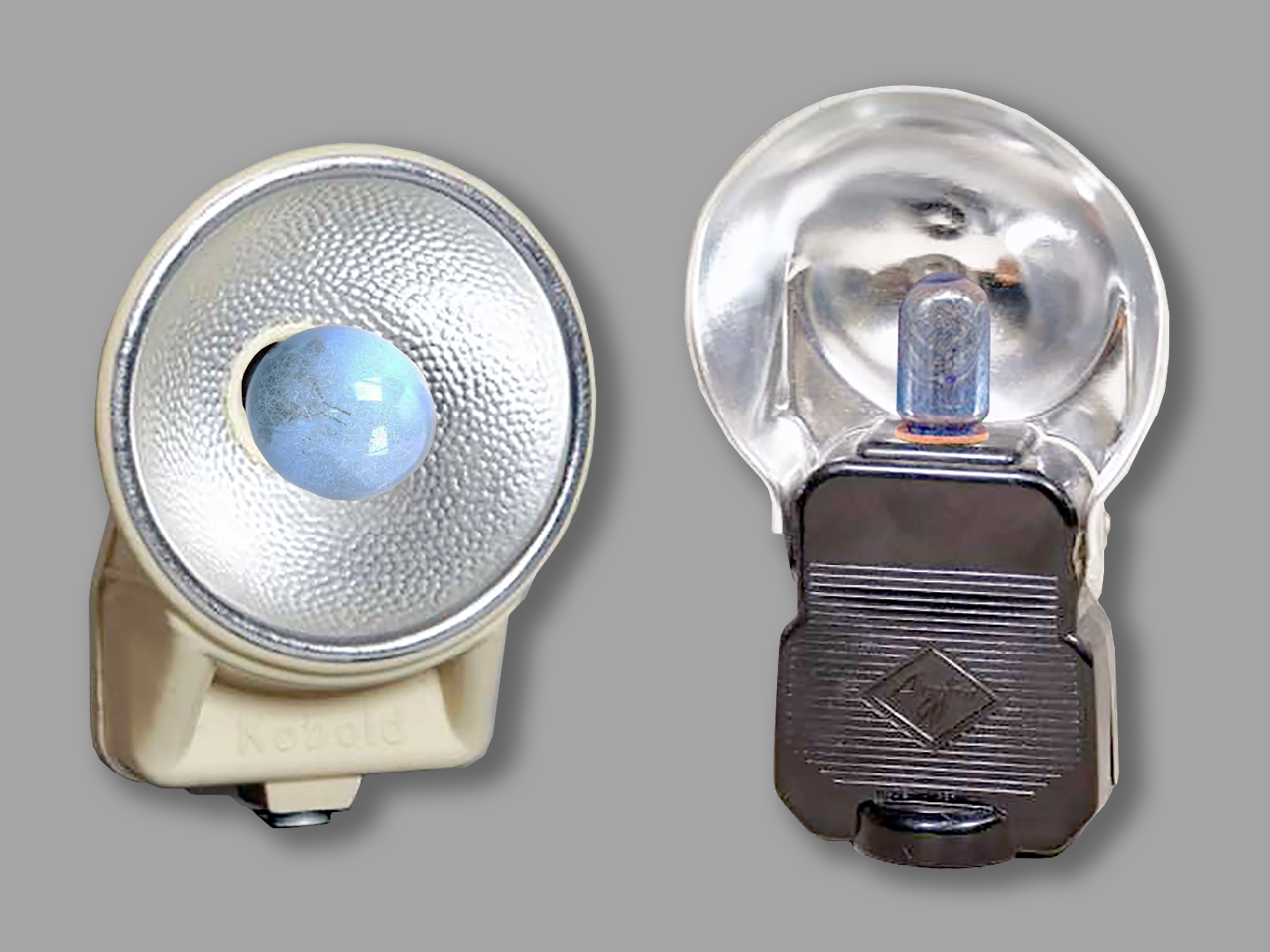
Two inexpensive flashguns with non-folding reflectors, but with the bulb in a different position relative to the reflector. Although one has a polished reflector and the other has a stippled reflector, performance is similar due to other changes in design such as reflector curve and bulb position.
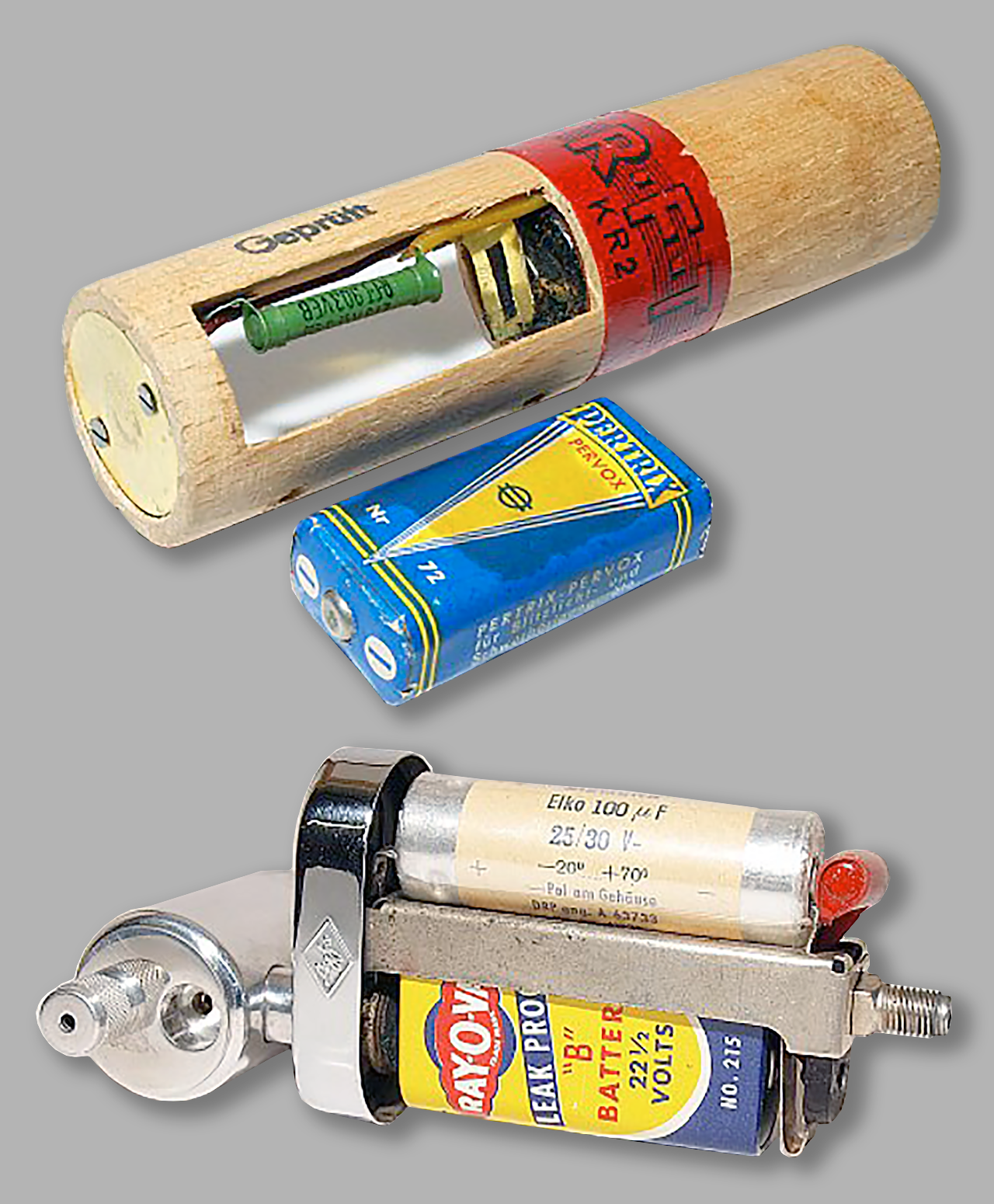
It turned out that many flash lamps did not fire safely in practical use with a battery voltage of 3 volts. In addition, the lamps required a high current at the time of ignition, so that the batteries were used up quickly. A borrowing from radio technology, in which capacitors had long been used to stabilize voltage, provided a solution. An electrolytic capacitor with a capacity of approximately 100 to 500 uF was charged by a higher voltage battery and provided a high current at ignition time. Practical side aspect – the battery lasted significantly longer. The battery chosen was initially the already familiar 22.5 V anode battery, type Pertrix 72. Later devices used the 15 V photo battery type V74PX.
A K-R-2 capacitor adapter as shown at the top of the photo, was developed for the early battery flash units with mono cells. The model in the photo is the very first version for 2 mono cells from Elektrotechnik Eisenach, which belongs to the GDR manufacturing combine “RFT”, here still made of wood. Selling price was 7.45 DM/GDR. The version was replaced shortly afterwards (1952) by a plastic version with the same form and function. The capacitor insert of the Agfa synchronous flasher K is shown in the photo below.
Early flashguns
At the beginning of the flashlight era, battery-powered flashlights were common and usually only consisted of a body, usually made of plastic, which houses the power source, a flash bulb holder and a reflector to direct the light. The foot of the body always has a shoe of some description by which it can be attached to the camera or to a camera bar and a thin piece of plastic covered flex which connects the electrical circuit of the gun to the camera’s synchronising plug.
All newer flashguns accepted the capless bulbs, but a few of the older models needed an adaptor to convert them for capless bulbs.
REFLECTORS
Reflectors vary tremendously, from shallow bowls of polished aluminium to ridged surfaces, and hammered surfaces, and to multi-leaved reflector bowls which fold up fan-like for easy storage.
The reflector is perhaps the most important part of the flashgun, varying tremendously in efficiency. The output from any given type of flashbulb is always constant, but the amount of light which can be utilised varies, because the more simple types of reflector only reflect perhaps 20-30 per cent of the available light. whereas the more efficient types may utilise as much as 60-70 per cent. The factors controlling the efficiency of the reflector are its size in comparison to the flashbulb being used, its shape, and its surface. Generally speaking, the larger the reflector the more light it will collect and reflect, and again speaking generally, the most efficient shape is the true parabola which reflects in a beam. The position of the bulb in relation to the reflector decides whether or not this beam converges, diverges or is parallel.
In most guns the bulb position is so placed that the divergent beam is of approximately the same angle as that covered by a standard focal length camera lens. The smooth polished type of reflector is perhaps most efficient in terms of light output, but can give rise to areas of uneven illumination. Reflector surfaces which are stippled, or hammer finished, and those which are satin finished, diffuse the light rather more but are still extremely efficient.
CONSTANT POWER
In very early flashguns, the current from the battery was fed direct to the flashbulb. Later, the flashguns required a larger ignition current than the low battery voltage of 3 – 4.5 volts. Such larger batteries required for higher voltages would have required cumbersome flash units and resulted in prohibitive flash costs. In addition, the batteries, which were not yet so powerful at the time, were put under a lot of strain at the moment of ignition. Often they only lasted a few flashes and then had to be replaced.
Shortly afterwards, an electronic component, an electrolytic capacitor (usually 100 μF), was the solution to the problem. This component also gave the flash units equipped with it their name: capacitor flashes.
The principle was known in broadcast technology for a long time, but flash builders first had to figure it out: a small anode battery with 22.5V charged the electrolytic capacitor via a resistor. Triggered by the camera’s flash contact, the capacitor suddenly discharges in a strong current surge.
Later all flashguns incorporated a capacitor in the circuit. That ensured that even though the battery was a little flat, the current reaching the bulb was always constant, because the capacitor stored up the current from the battery until it reached the correct amount to fire the bulb.
The more expensive a flashgun is, the more refinements can be expected. Some have a small test lamp built into the circuit, operated by pressing a built-in button, showing that the circuit is in good order before firing the bulb. Some guns have additional outlet sockets built into the side or back, accepting extension flash units which are needed if you want to use flash, but need more than one light source.
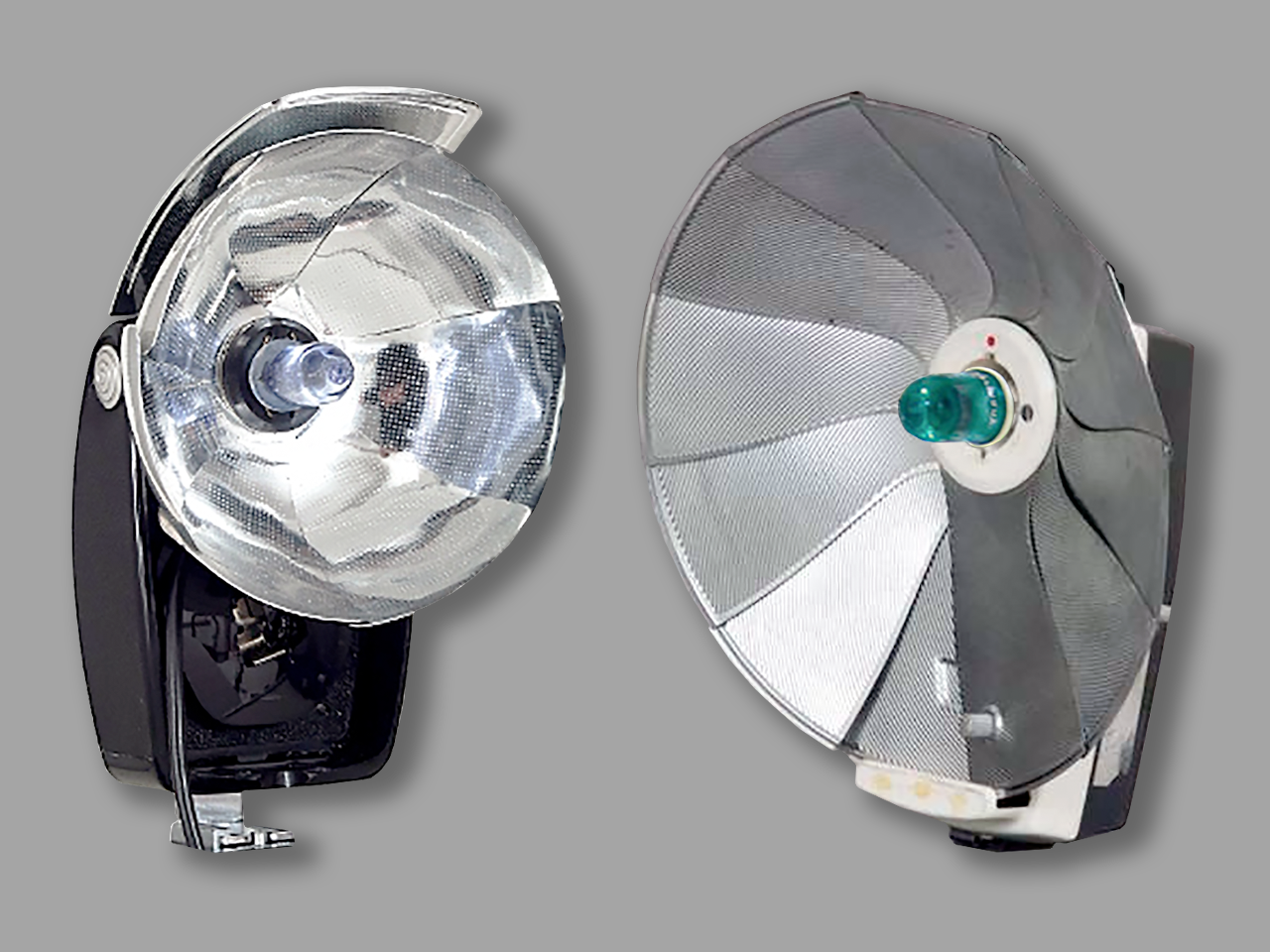
These two flashguns both have folding reflectors which collapse, fan-like for easy storage and carrying, both have embossed surfaces, one being hammer-punch finish, and the other a stipple finished, the bowl of being extremely shallow and of the other, a far deeper curve. Each will have different characteristics, and will correspondingly affect the guide number of the bulb in use.
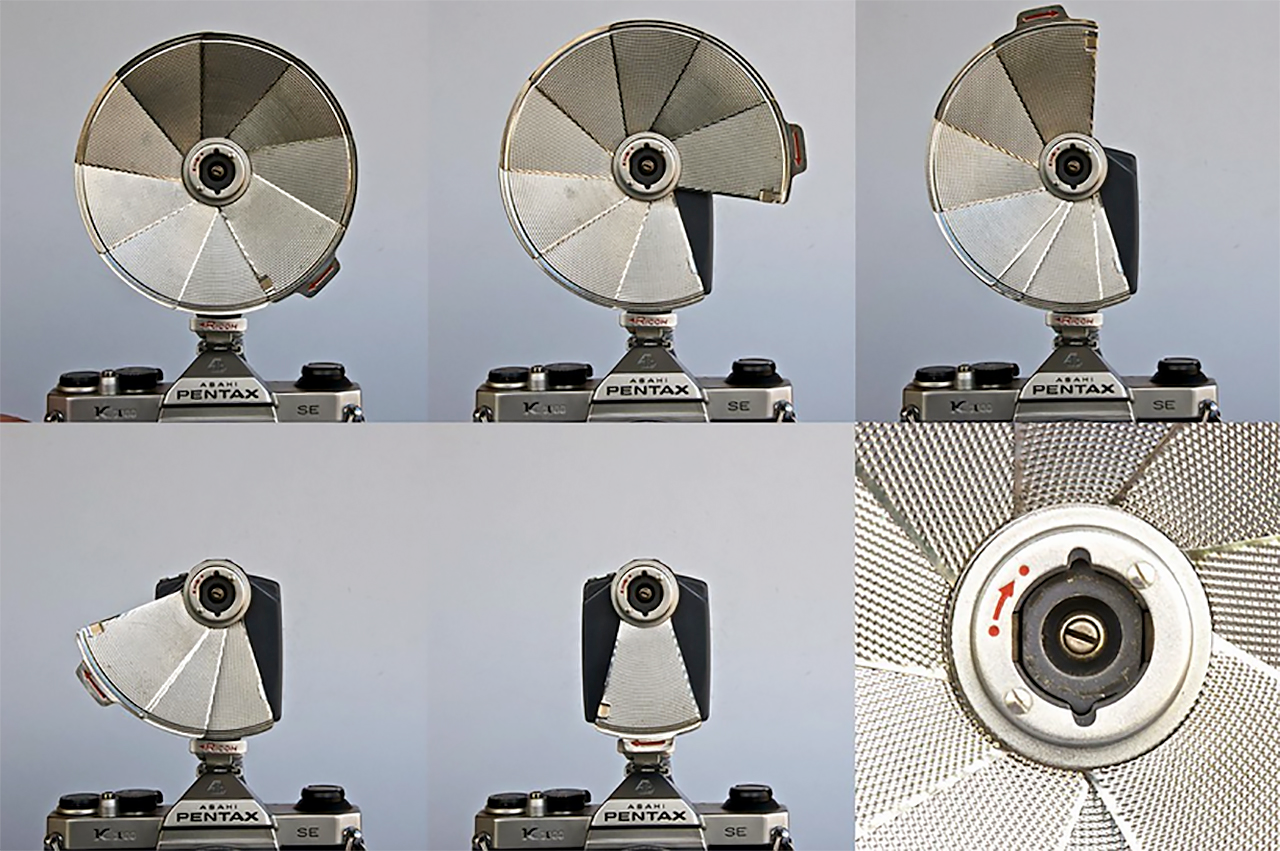
The unfolding sequence of a Ricoh BC-605 Flash reflector.
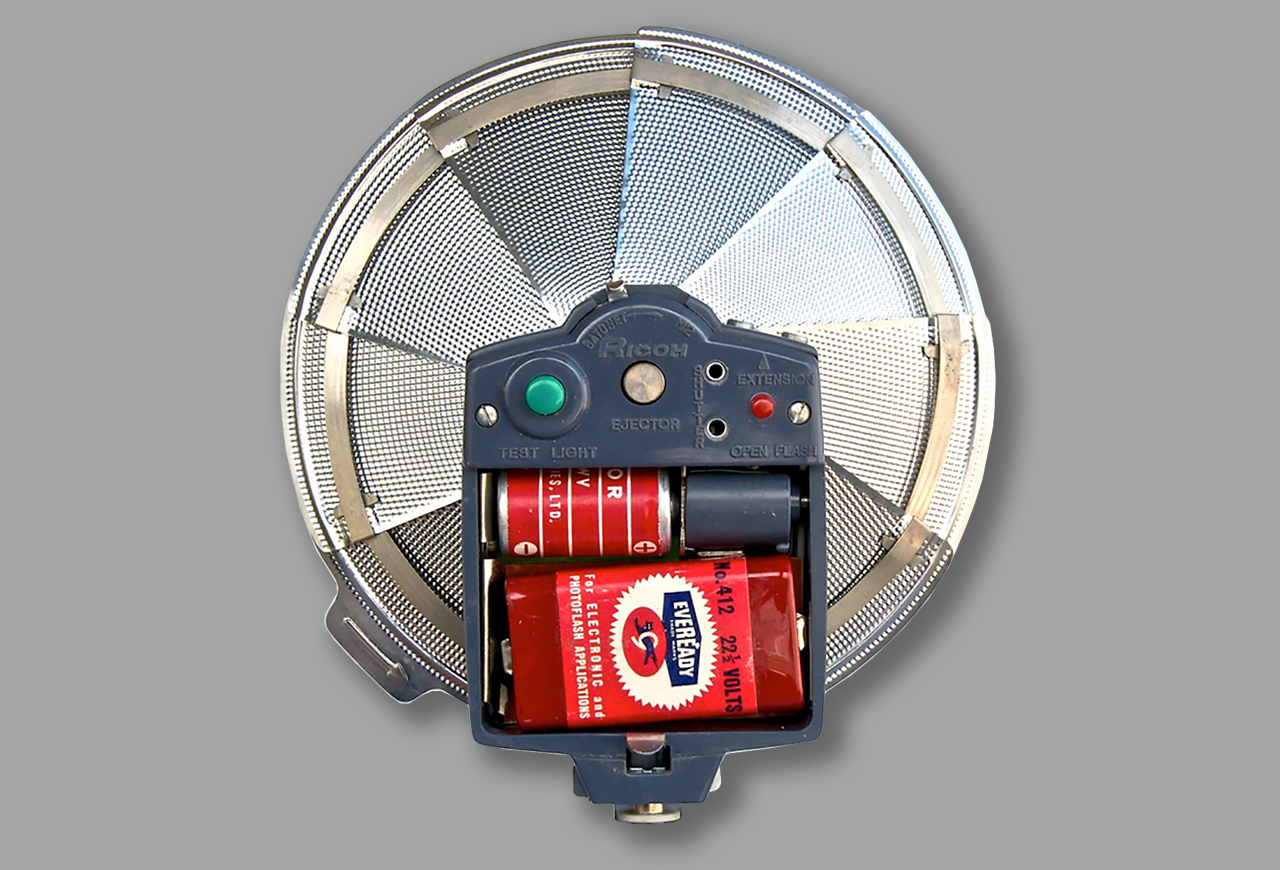
This foldable Ricoh BC-605 flash unit, manufactured by Ricoh in the 1950s, is powered by two batteries, a 22.5V and a 6.5V. A central adapter plug allowed to switch between the use of M2 and Bayonet style flash bulbs.
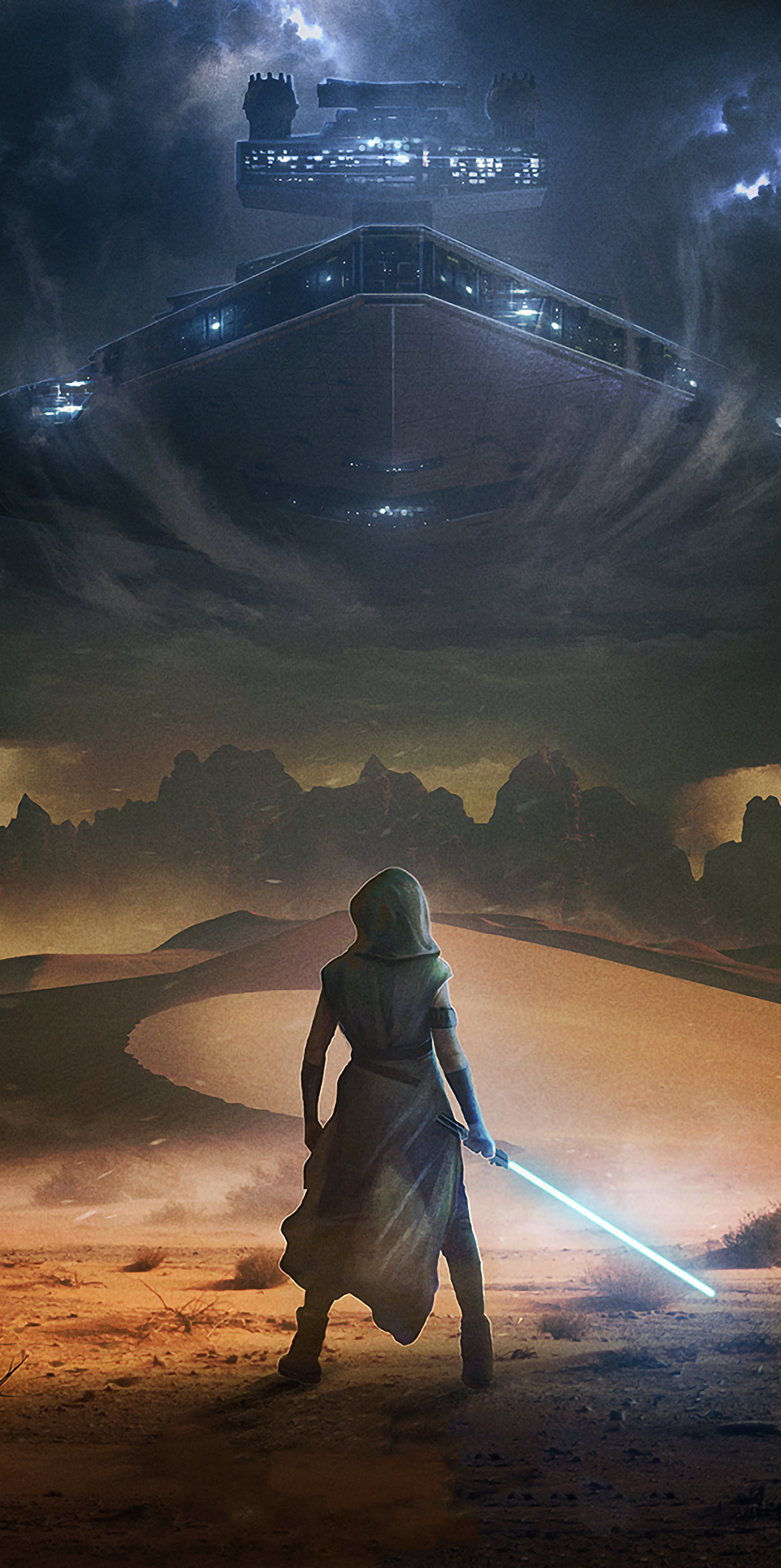
A picture says more than 1000 words
BE WITH YOU…
George Lucas wanted the props in the Star Wars films to look used in order to suggest a sense of history. He didn’t want shiny new objects in his films. They also had a very limited budget when filming those initial movies. The low budget required they get scrappy—literally—in how they created props.
As a result, set decorator Roger Christian would browse antique and junk stores for items to use as props. He was in a tiny photography shop on Great Marlborough Street in London, and asked if they had anything that he might find interesting. The owner took out a dusty box of antique camera goods, which included a 1940s Graflex camera with a three-cell flash gun. A lightbulb went off for Christian. The flash handle became the base for Luke Skywalker’s lightsaber.
The second life of an old flashgun
It took only a few modifications to create the legendary weapon. To create the recognisable luminescent blade of the lightsaber, it was painted with blue projection material and when a light shined on it, it would glow, allowing for those dramatic fight scenes between Darth Vadar and Luke, such as the duel on Cloud City, to look dynamic.
Luke’s was one of two lightsabers that Christian designed. The entire thing took only $15 to build, though it sold in 2012 for $250,000. That makes it one of the most expensive movie weapon props ever sold. It even beats out Ghostbusters props. And that number is likely even higher now since it was featured so prominently in Episode 7.
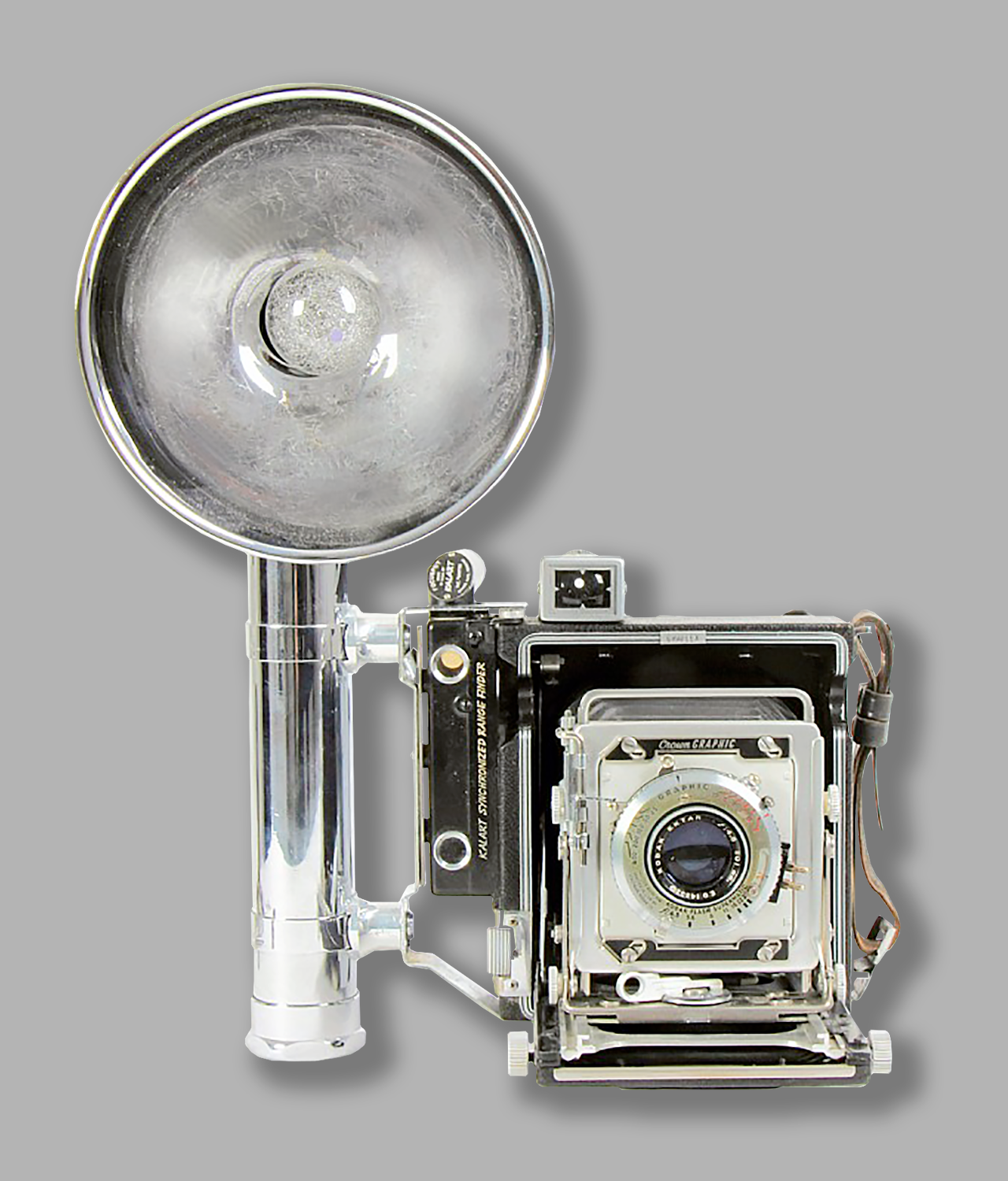
Probably the most famous camera/flash combination of all is the Graflex press camera. Hardly a US press photo from the 1940s/50s without Graflex. The camera was first built shortly after the turn of the century in 1900, and the work changed hands several times in the years that followed. Kodak was also one of the owners for a time. Since the 1930s, the large format camera, which could also process other film formats, was the press camera par excellence. With the associated flash, the design of which naturally changed over the years, this photographic equipment was unmistakable.
The photo shows the Crown GRAPHIC 4×5 model from Graflex from the late 1940s. The flash unit is a few years older and was powered by 3 mono cells in the rod. The Graflex flash handle is the second version of the first model 3-cell Graflex flash handle, with no rings engraved around the top of the handle. This is the most common model most coveted as Star Wars light sabres and dates to 1942. It was also available as a 2-cell with a 5″ reflector to suit the 2 1/4 x 3 1/4 Speed Graphics.
fifty images of battery-ignited and capacitor-ignited flashguns
(most of the information taken from https://photobutmore.de/lippisches-kameramuseum.de/emtus.ch)
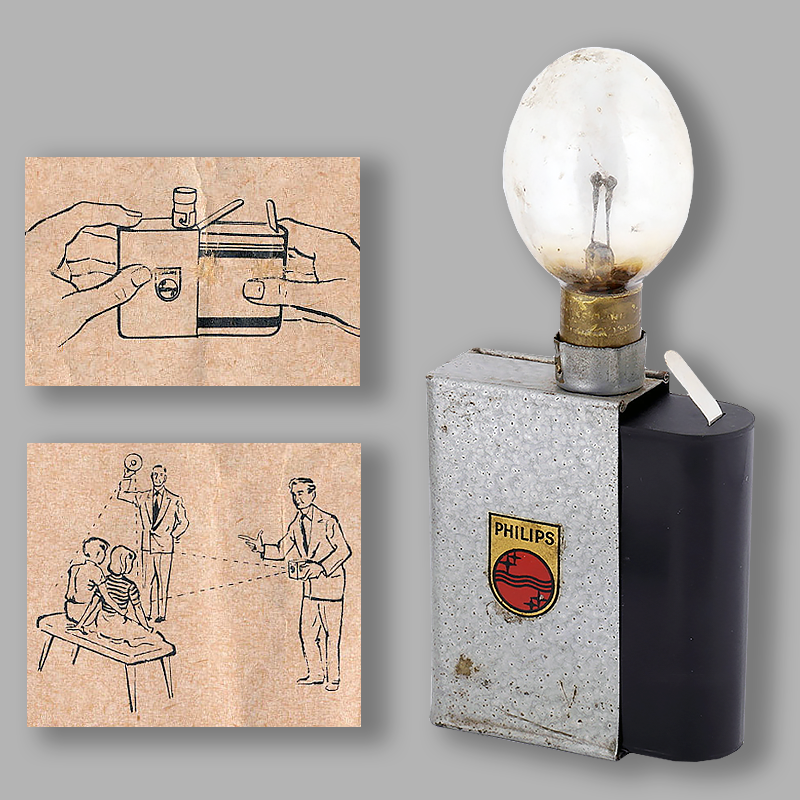
Philips Photoflux ‘Snap-it’ Open-Flash Set
A very simple flashgun from Philips Electrical LTD in London, from the late 1950s. The simple flash works with a flat 4.5 Volt battery and was packaged in a round box that could also be used as a reflector.
The English manual explains the functioning: The longest pole of the battery slides into the metal flash and makes contact with the positive terminal of the lamp. By pressing the short pole against the fitting, the lamp flashes. The lamp has a bayonet fitting and is not filled with wire or foil, but has two lead electrodes.
- Origin: London, England
- Year: Late 1950s
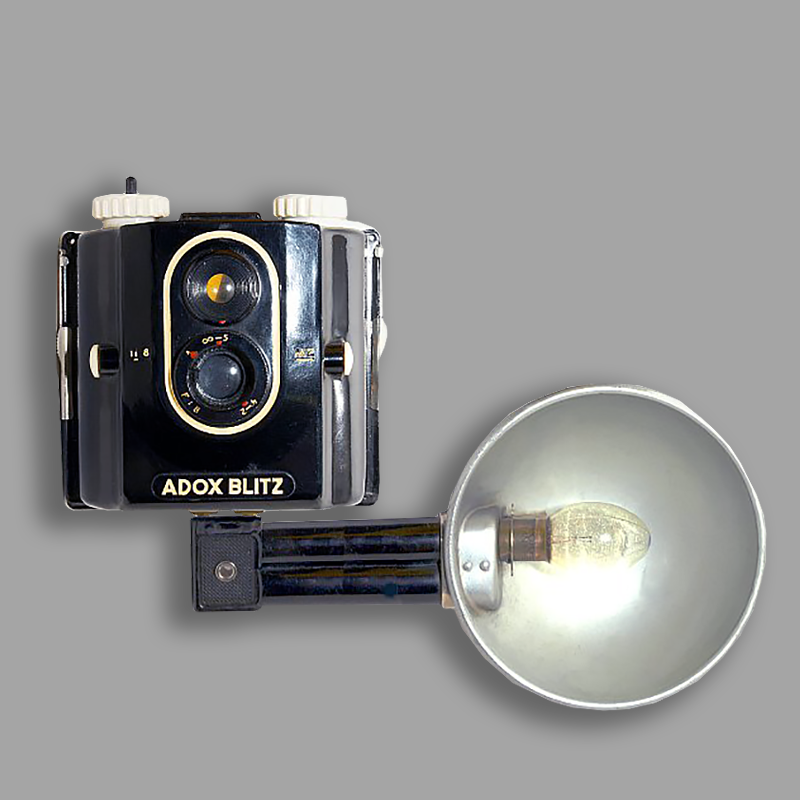
In the early 1950s ADOX offered the “ADOX Blitzbox”. The flash and the camera were built by Hermann Wolf, Wuppertal. The Blitzbox battery flash was also available in a slightly different design for other box cameras (e.g. Imperial) or with a cable connection.
In this design, the simple device has two plugs on the side of the battery housing (accepts 2 x 1.5V Pertrix Mignon cell 251) with which it is connected to the box camera. The battery-powered flash unit has a removable metal round reflector 11 cm Ø. The sales price was 7.20 DM for the Adox battery flash (16.50 DM including Adox Blitz Box camera).
- Origin: Wuppertal, Germany
- Year: around 1950 – 1953
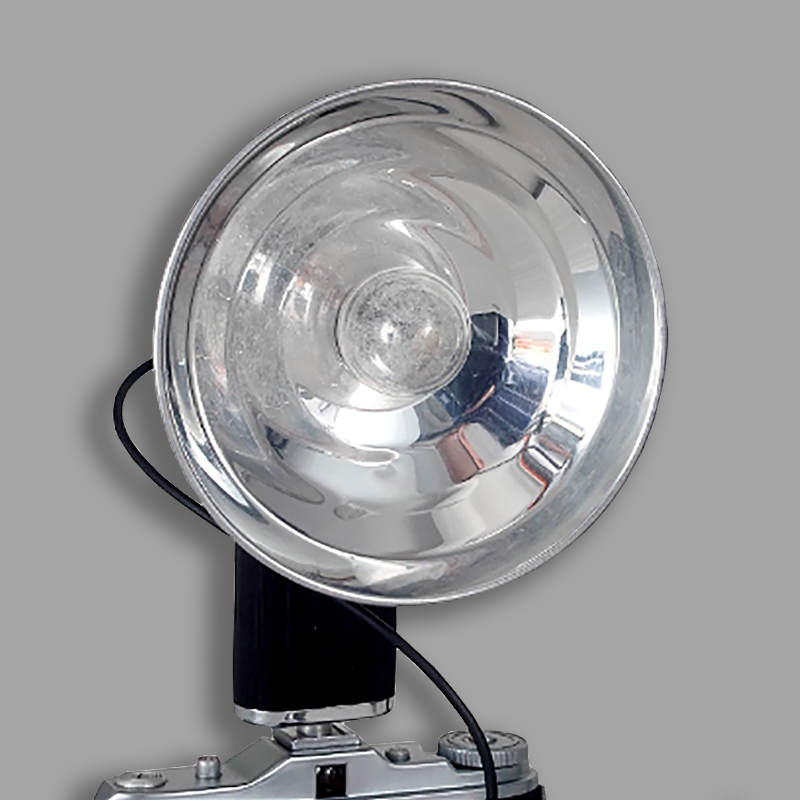
The AGFA synchro flash unit – type 6823 was the first Agfa post-war flash unit with a testing device for battery or shutter control. It was intended for battery ignition. The synchro flash unit was very solidly built. Except for the battery housing made of black Bakelite, all housing parts were made of chrome-plated brass.
The removable, round reflector (Ø 12.5cm) is connected to the lamp holder via a bayonet and can be swiveled to the side. For transport, the handle in which the 22.5 volt battery is housed can be attached to the aluminum reflector. The price was 23 DM.
- Origin: Leverkusen, Germany
- Year of construction: 1950
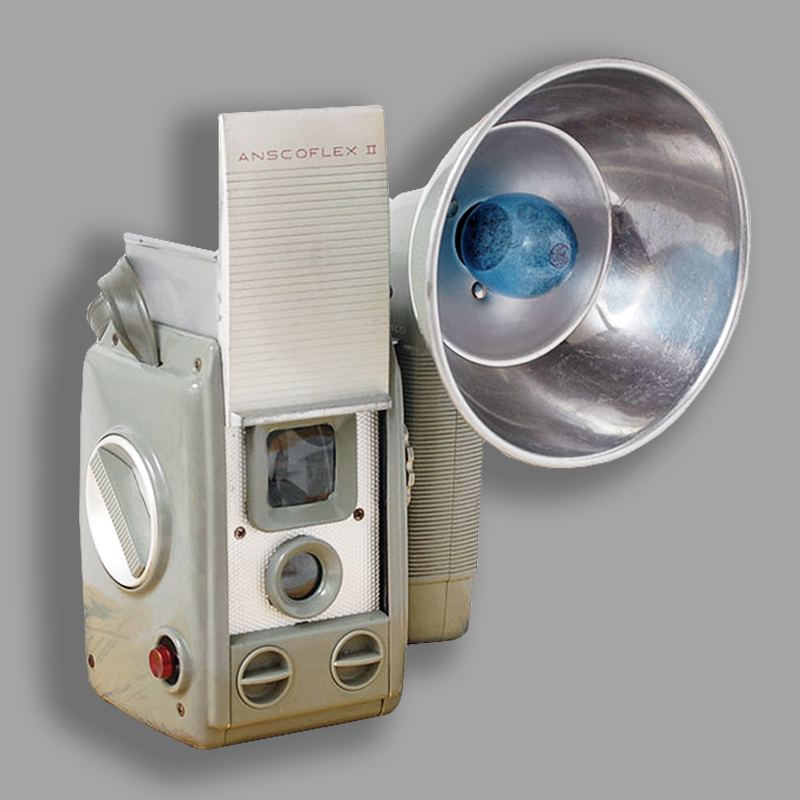
The Anscoflex Flashgun is a really elegant battery-operated flash unit from Ansco, Binghamton, NY / USA from 1954, specially made for connection to the Ansco Anscoflex I/II camera and matching in color and design with these cameras. Not made for a reporter camera but for these elegant box cameras.
The flash unit is made of Bakelite and has a large removable aluminum reflector that cannot be folded. The flash is mounted on the side of the camera using a large knurled screw and an integrated plug. SM or SF flash lamps with a bayonet base BA 15s are used in this flashgun.
- Origin: Binghamton, USA
- Year of construction: 1954
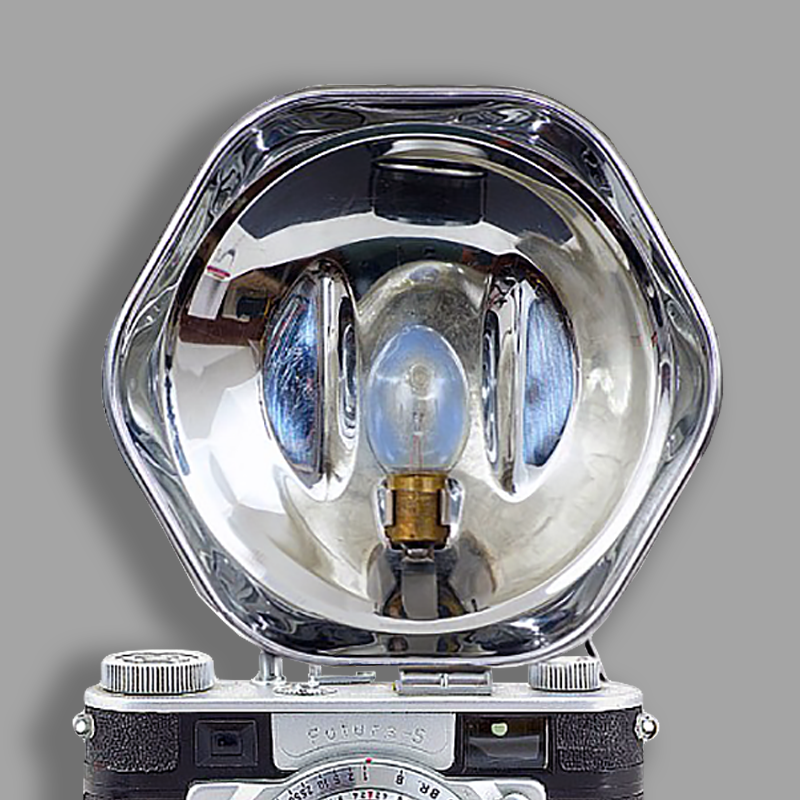
The Bilora Luxa-K battery flashgun with Bakelite housing was manufactured by Kürbi & Niggeloh, Radevormwald, Germany. It has a large chrome-plated brass hexagonal reflector with a rotating bracket. This means that the flash reflector can be swiveled vertically for indirect flashing.
The Luxa-K is intended for battery ignition; Power supply: 3 volt battery, type Pertrix No.259. Flash lamps with a metal base with bayonet BA15s are used on this flashgun. The flash cable is removable. The sales price of the flashgun was 15 DM; Price of a replacement cable 2.40 DM.
- Origin: Radevormwald, Germany
- Year of construction: 1949 – 1952
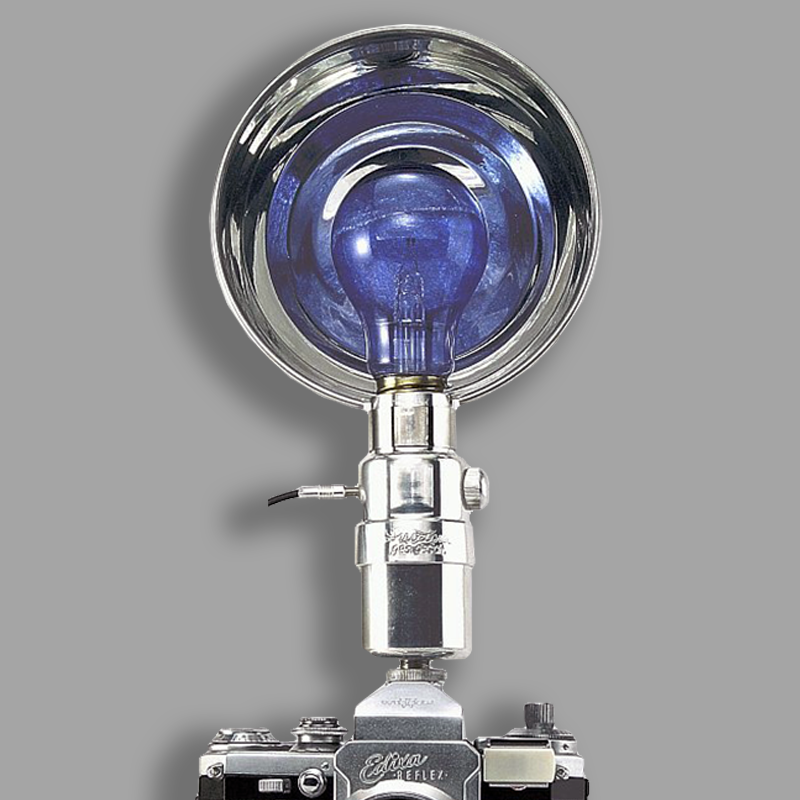
The DUO-LUX Model 50 M capacitorless flashgun with removable round reflector was manufactured by Albert Hiller jr. This flash unit has a universal socket for the various bases commonly used at the time.
All blank parts are chrome-plated. The round reflector is connected to the housing via a clip and can be exchanged for a pan with flame protection for flash powder capsules. Usable flash lamps have a metal base with screw connection or bayonet via adapter. An anode battery provides the power supply. A control lamp (which can be switched off) is also installed for checking the sync. contact.
- Origin: Dornstetten, Germany
- Year of construction: 1949 – 1950
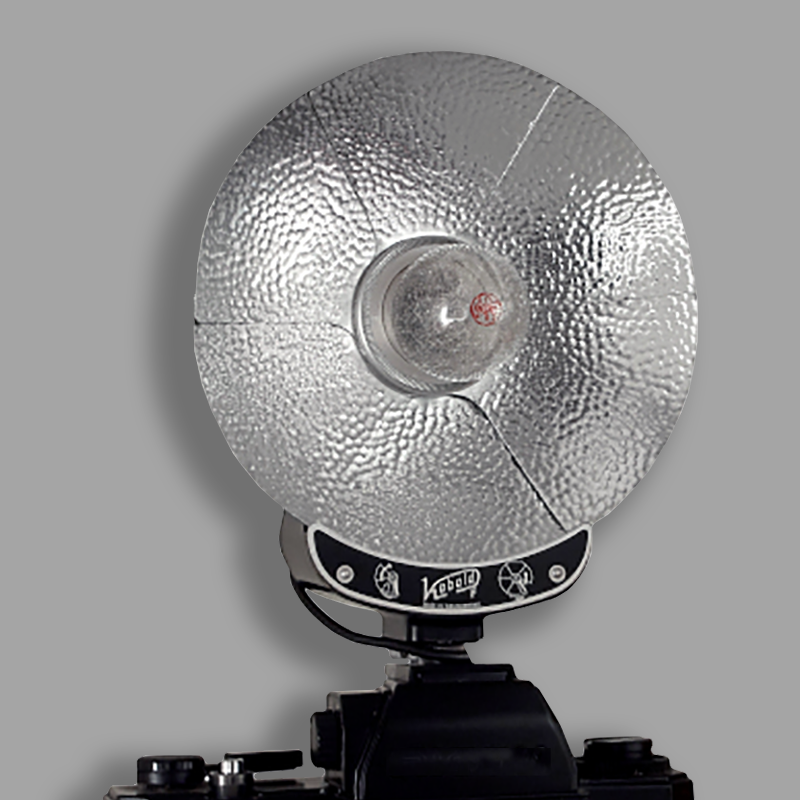
The Kobold F from Ing. Fritz Consten, Munich, is a quite large foldable fan flash. The large XM 1/5, FB, PF 1, PF 5 lamps are also used as flash lamps. With the help of the BA15s flash lamp adapter, the newer flash lamps can also be used. The camera is connected via a synchronous cable for a PC socket.
The voltage required to ignite the flash lamp is supplied by a 22.5 V Pertrix No. anode battery. 72 provided. The flash can be completely folded up to make it easy to carry with you. On the left side of the Kobold F is a button indicator light with which the flash lamp can be checked before ignition.
- Origin: Munich, Germany
- Year of construction: 1950’s
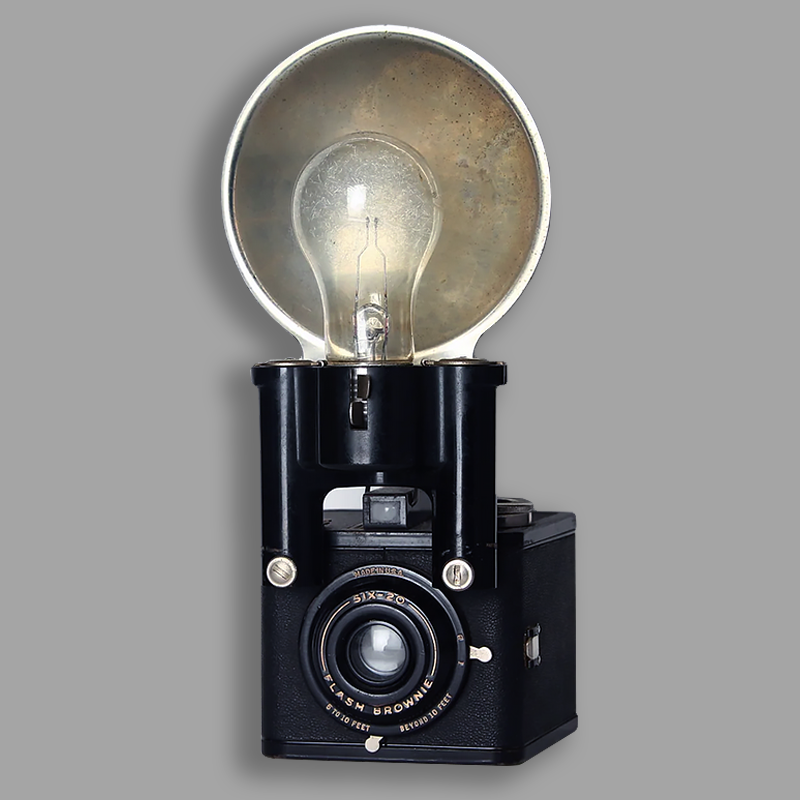
Clip-on flash unit made of black Bakelite with a plug-in round reflector for the Kodak Six-20 Flash Brownie. It is suitable for No 11 vacuum flash lamps with an Edison E27 socket connection. The synchronization takes place via the two screw connections. The functioning of the flashgun can be checked with a test lamp.
The flash holder is attached with two screws to the front of the camera and loaded with 2 1.5V penlite batteries (Mignon cell) which test at least 3.5 Amp. Remove the hot lamp by squeezing two lugs on the front of the socket . The sales price was US$2.92.
- Origin: Rochester, USA
- Year of construction: 1940 – 1954
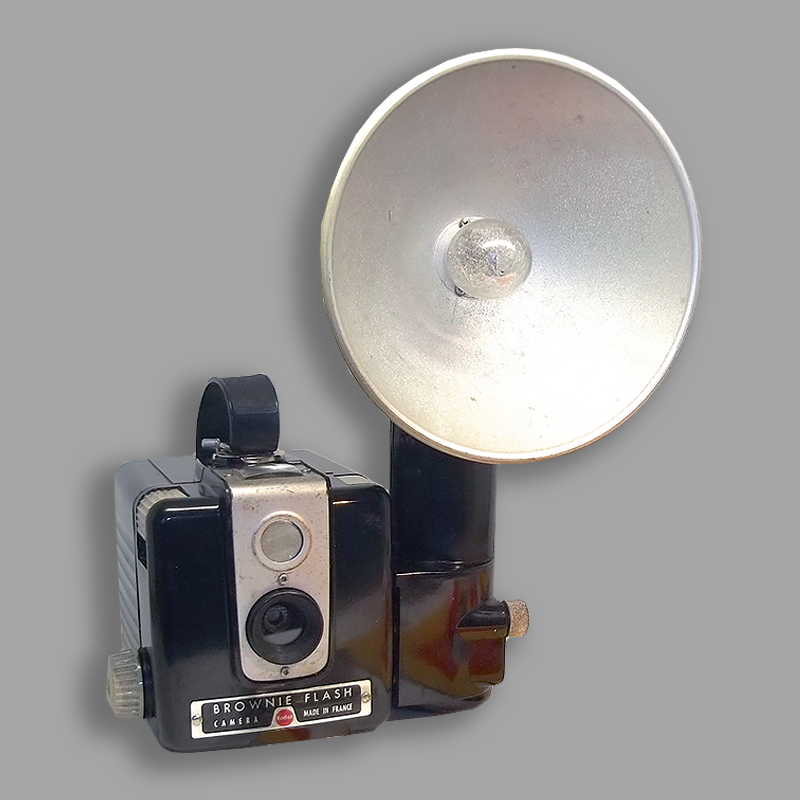
The Kodak Flash B was a really stylish flashlight from the French subsidiary of Eastman-Kodak, Kodak-Pathe SA – Vincennes from the 1950s. Not made for a reporter camera but for the successful Kodak Brownie (Hawkeye) Flash, a simple box camera.
The flash unit is made of Bakelite and has a large mirrored reflector that cannot be folded. The flash is mounted on the side of the camera using a knurled screw and an integrated plug. A 1.5 volt battery type C takes care of the energy supply. Flash lamps with a bayonet base BA 15s are used on this flashgun.
- Origin: Vincennes, France
- Year of construction: 1950 – 1961
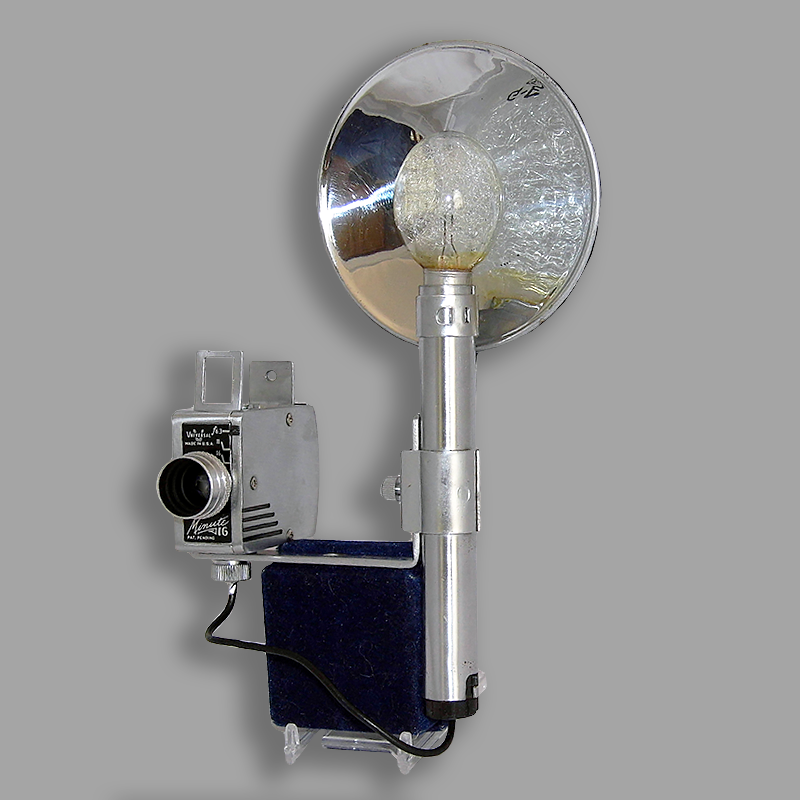
The battery-operated Minute 16 Flashgun was a high-quality metal flashgun for the Minute 16 miniature camera from the early 1950s. It has a solid, chrome-plated battery housing and is equipped with a high-gloss mirrored, height-adjustable round reflector.
The Minute 16 Flash Unit uses metal base flash lamps with bayonet BA15s; The power supply comes from 2x 1.5 V AA (Mignon) photo flash batteries. A remarkable feature is the tripod socket at the camera base, which doubles as a flash synch contact; a rare feature also found on the 35mm SLR Contax S introduced the same year as the Minute-16.
- Origin: New York, USA
- Year of construction: 1949 – 1952
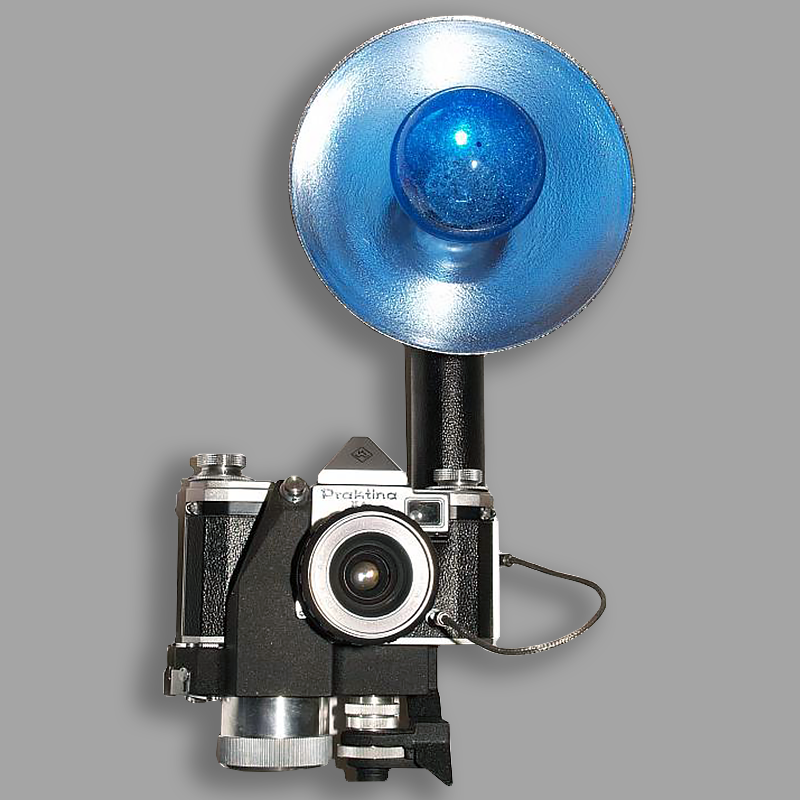
The lamp rod of this 1950 Pentacon device is either mounted on a tripod or screwed to the camera tripod thread via a solid connecting elbow. Then it can also be used as a camera handle; in any case, the camera/flash combination is very stable.
The mechanism is similar to the great Ihagee lightning; The clamp socket is triggered here by a push button on the back of the lamp holder. The housing and the round reflector 160 mm Ø are made entirely of metal. The lamp rod holds two 1.5 V mono cells (R 20), early version 2xR14. The selling price was 67.60 DM-East. This version has no capacitor.
- Origin: Dresden, Germany
- Year of construction: 1950-1959
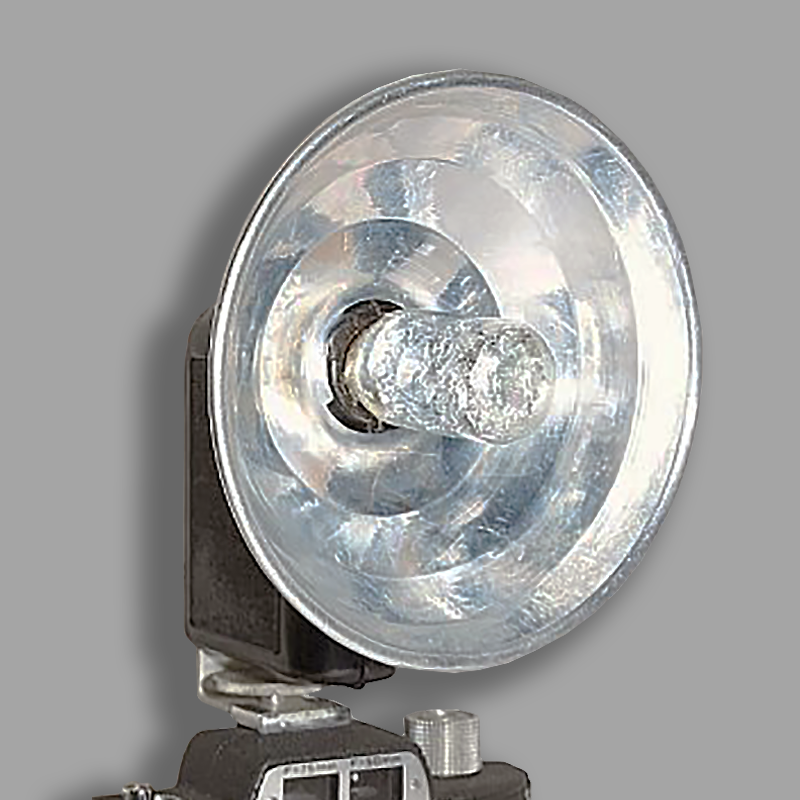
An early ERRTEE battery flash unit without any further manufacturer identification (only the phrase: Made in Germany) but probably from Hermann Wolf, Wuppertal (sales representative Romain Talbot/ERTEE) with battery housing made of black Bakelite. The power supply comes from 2 1.5V Perplex batteries, type Pertrix No.251.
The round reflector (10 cm Ø) is removable and is connected to the housing using a bayonet. Flash lamps used: metal base with bayonet BA15s. The battery compartment is opened by moving the bracket; Retail price 9 DM + case 3 DM.
- Origin: Wuppertal, Germany
- Year of construction: 1952-1954
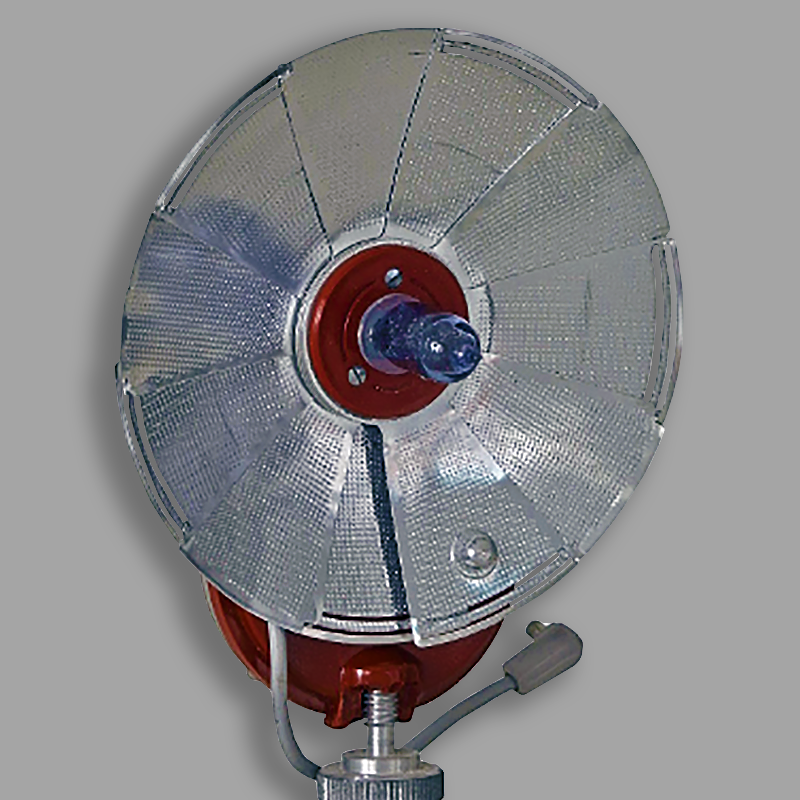
This WATA Fan Flashgun for flash bulbs XM 1/5, FB, PF 1, PF 5 is a product from Wata, Edmund Wateler, Braunschweig, a small special manufacturer for photographic accessories from Braunschweig.
This Flashgun has a removable lid that protects the compartment from damage and makes a protective case superfluous. The camera is connected to PC socket via cable connection. On the back, the WATA has a calculation disc on which the correct aperture can be read. This elegant device uses a 22.5 V anode battery for power supply. The flash base is screwed-in with this flashgun.
- Origin: Braunschweig, Germany
- Year of construction: 1950’s
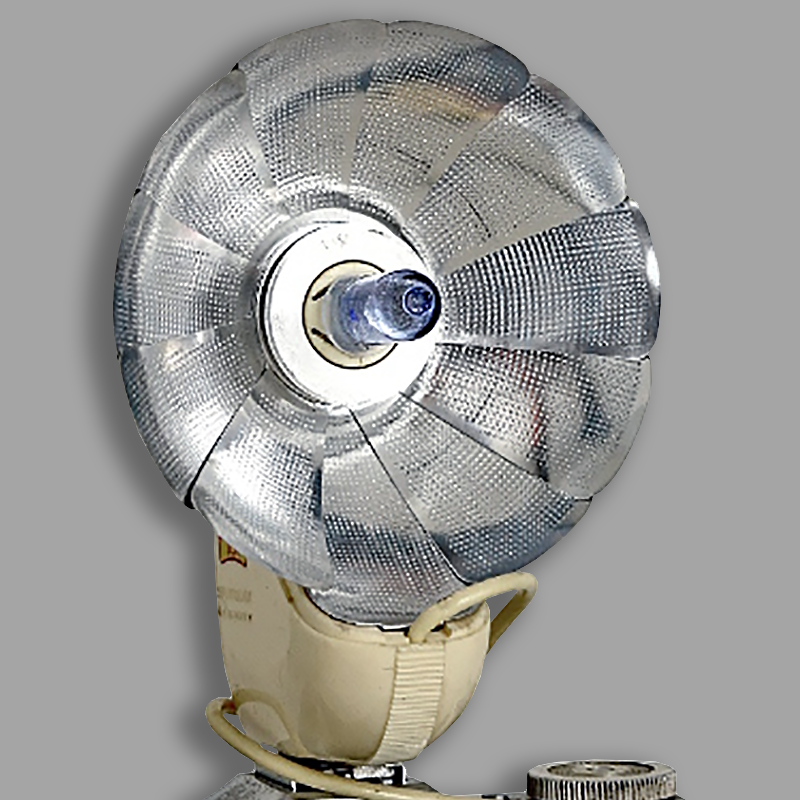
Small Zeiss-Ikon Ikoblitz 1 fan flashgun from the 1950s in elegant light ivory. If the Ikoblitz is not needed, the reflector can be folded together using the red knurled wheel. A protective cover can then be attached.
To change the flash lamp (XM 1/5, FB, PF 1, PF 5), the reflector is also turned back a quarter of a turn, which loosens the lamp clamp. The 22.5 V anode battery is located under the lowest reflector wing. Lift it for access to the battery. The Ikoblitz has a control button on the back to check the working of the flash lamp. Using the red button at the bottom, the flash base can be pushed in and out.
- Origin: Stuttgart, Germany
- Year of construction: 1950s
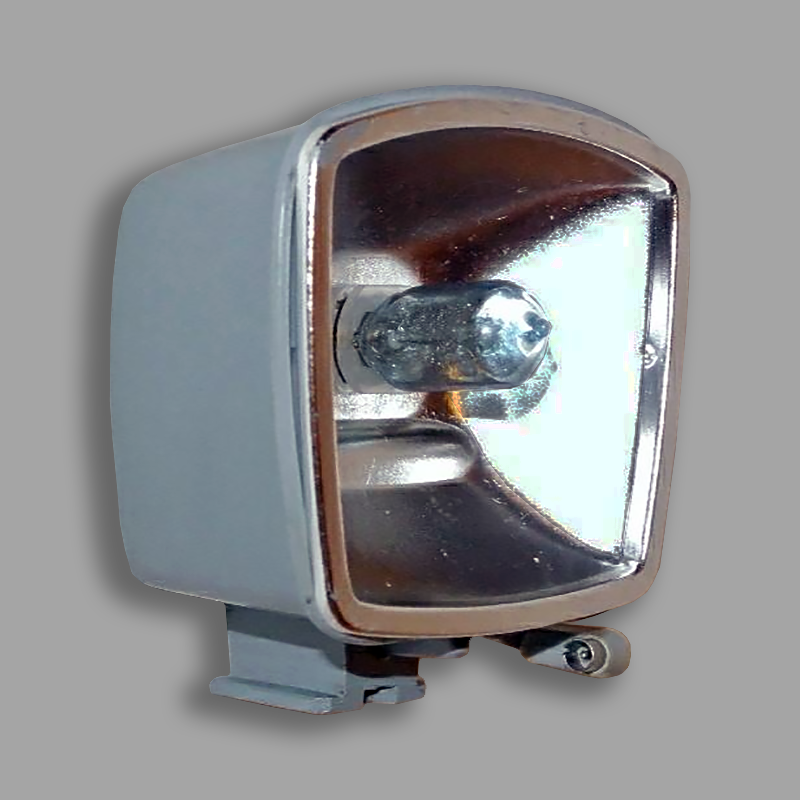
Small Zeiss-Ikon AG, Stuttgart, Germany, Ikoblitz L clip-on flashgun from 1966. The Ikoblitz L is suitable for flash lamps type PF1 / PF1B / XM1 and XM1B. It has a light blue plastic casing and a built-in reflector with a flashbulb ejector button.
The Ikoblitz L has the following dimensions (WxHxD) 60 x 67 x 45 mm. The device is really light with its 60 grams.
Powered by a 15 V battery type IEC 10F15 e.g. Varta V74PX (4074) and it has a sync cable for a PC socket for connection. The new price in 1966 was DM 14.50.
- Origin: Stuttgart, Germany
- Year of construction: 1966
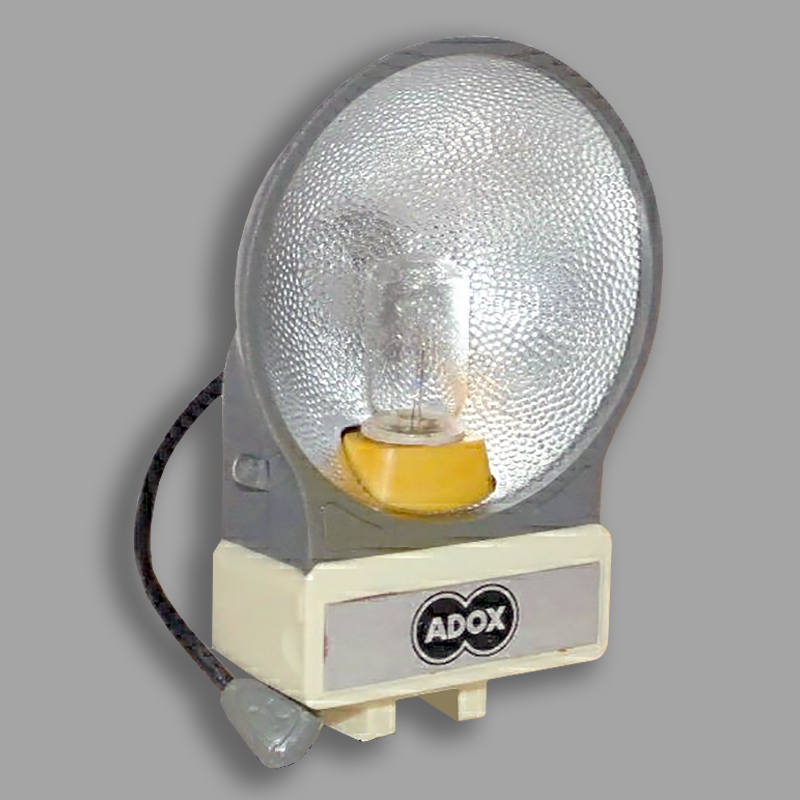
Simple ADOX Electra 1 capacitor bulb flashgun for cable connection with a small, high-gloss mirrored honeycomb round reflector made of plastic (Ø 7 cm) in a gray/ivory-colored plastic housing. Manufactured by Dr. C. Schleussner GmbH, Frankfurt.
Powered by a 22.5 volt anode battery, type Pertrix No.72; Connection: sync cable for PC socket; Flash lamp ejection lever; Aperture table on the back; Socket for flash lamps with glass base type XM 1, PF1, XM5, PF5, XM1B, PF1B. Selling price 9.90 DM (1961) + case 2.40 DM.
- Origin: Frankfurt/Main, Germany
- Year of construction: 1956 – 1963
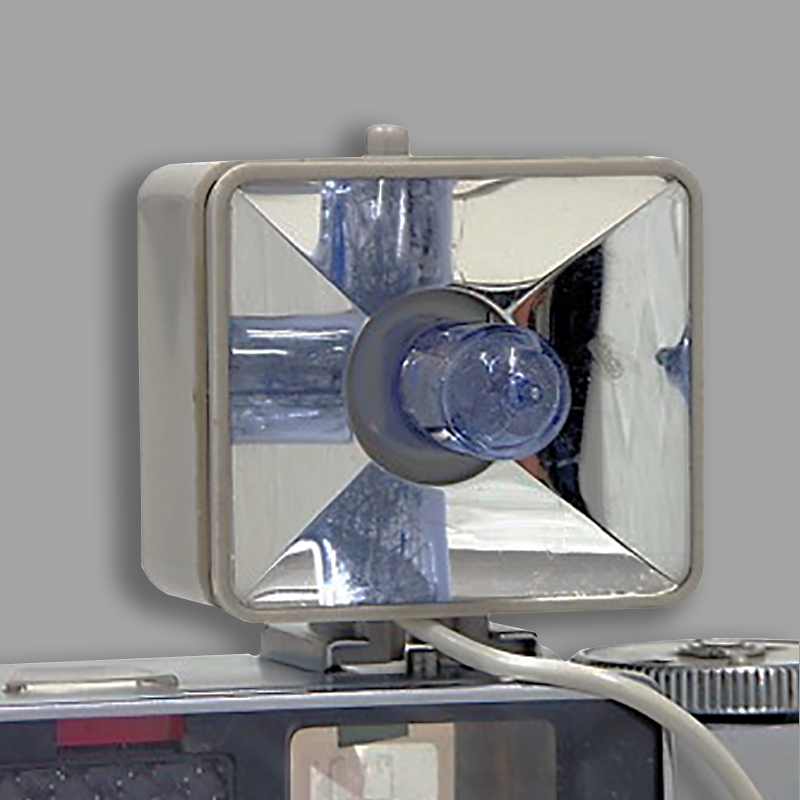
A compact Adox Electra 15 K capacitor flashgun in a gray plastic housing with a mirrored rectangular reflector (approx. 4 x 3.5 cm), brought onto the market with the new Adox Golf camera line from 1964. The small Adox flashgun was sold for a price of DM 9.90.
The voltage required for ignition was supplied by a 15 V anode battery/Pertrix No. 74. The Electra 15 K was available in two versions: with a center contact and with a cable connection. Flash lamps: Glass base (Osram Vacublitz XM1/XM1B, Philips Photoflux PF1/PF1B or similar) It was sold in a practical plastic transport box.
- Origin: Frankfurt/Main, Germany
- Year of construction: 1963 – 1966
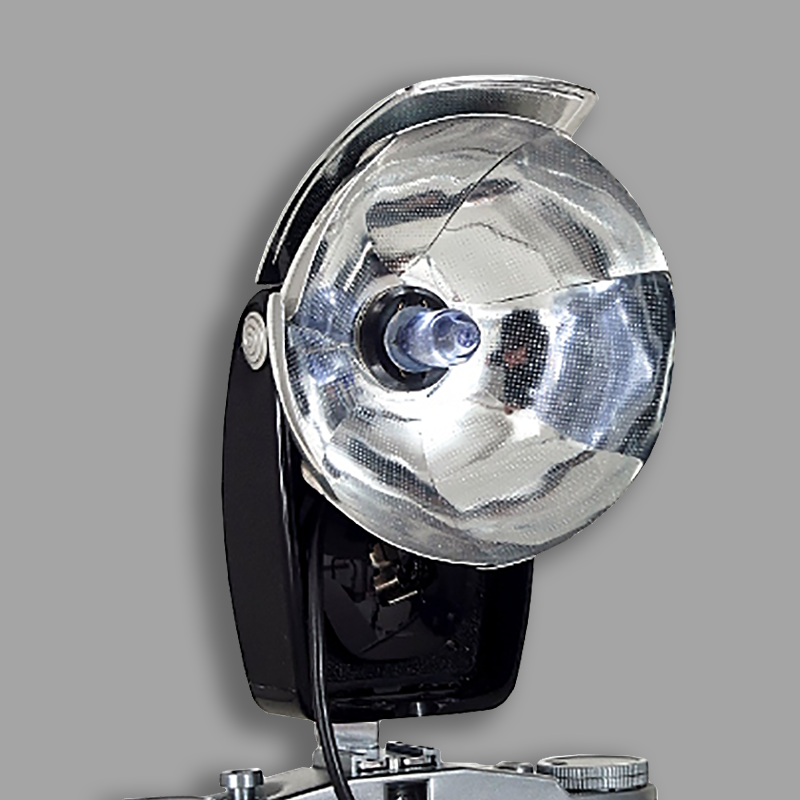
The Agfa Agfalux Type 6874 is a powerful and at the same time compact flash gun for flash lamps with a plug-in base type XM 1/5, FB, PF 1, PF 5. The folding reflector allows the flash unit to be folded up small and is not inconvenient when taking it with you.
This flashgun is the successor to the popular Agfalux pocket flash gun type 6872. The flash lamp is ignited using a 22.5 V anode battery and a capacitor. In this speed camera, Agfa has also installed an eject button for the hot, used flash lamps. The housing of the flashgun is of very high quality with its leather coating and chrome-plated edges.
- Origin: Leverkusen, Germany
- Year of construction: 1961 – 1962
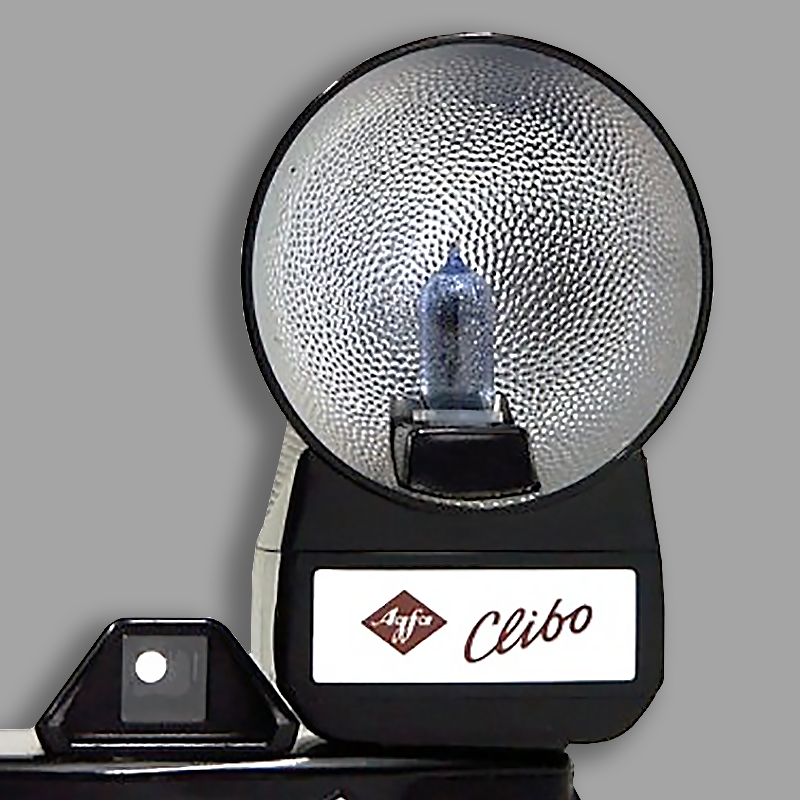
The AGFA Clibo flash unit type 6865 is a special, one-piece capacitor pocket flash unit with a silver-plated parabolic reflector. The four connection sockets of the Agfa Clibo are arranged so that both the Agfa Click I and II, and the Agfa Clack and Agfa Box 600/Synchro Box can use the flashgun. The Agfa Clibo is adapted to the two cameras in terms of design and material, which means that the housing and reflector are made of plastic.
The voltage required for ignition was supplied by a 22.5V anode battery, type Pertrix No.72. Flash lamps: glass base flashes AG1/AG3. Selling price DM: 9.50 + case 3.50.
- Origin: Leverkusen, Germany
- Year of construction: 1957 – 1972
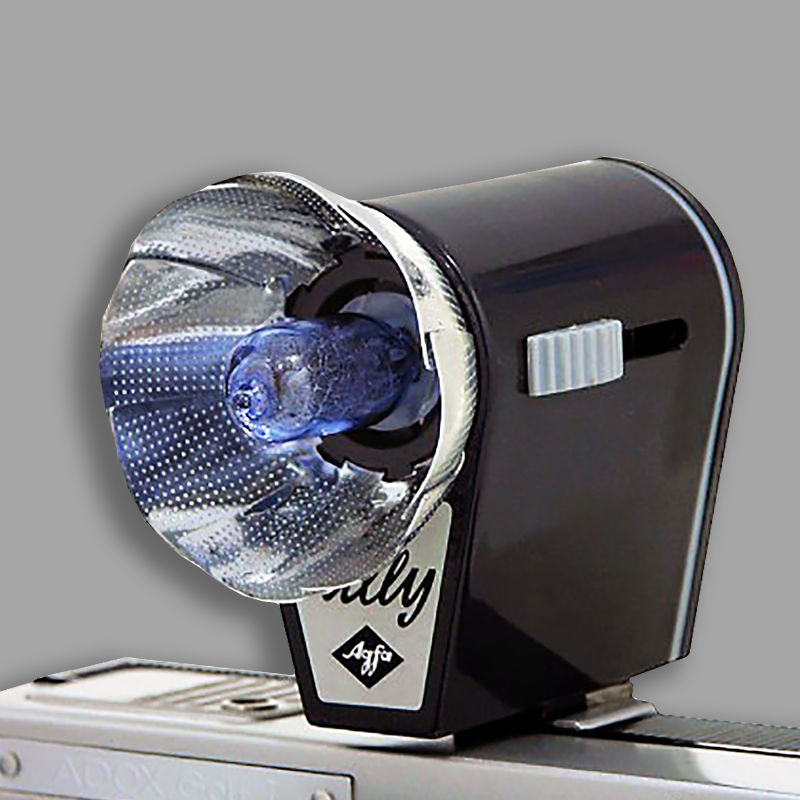
The Agfa Tully is an attractive, small flashgun with a folding reflector. Its dimensions are extremely compact. The reflector can be pushed back using two side sliders in order to pack the flash into a small size. The battery required for ignition is located on the back of the flash unit. The aperture calculator is also situated here.
The voltage required for ignition was supplied by a 15 V anode battery/Pertrix No. 74. Flash lamps: XM 1/5, FB, PF 1, PF 5. The Flashgun was available in a version with a center contact (Tully-M) and a cable connection (Tully-K) for a PC socket.
- Origin: Leverkusen, Germany
- Year of construction: 1963 – 1971
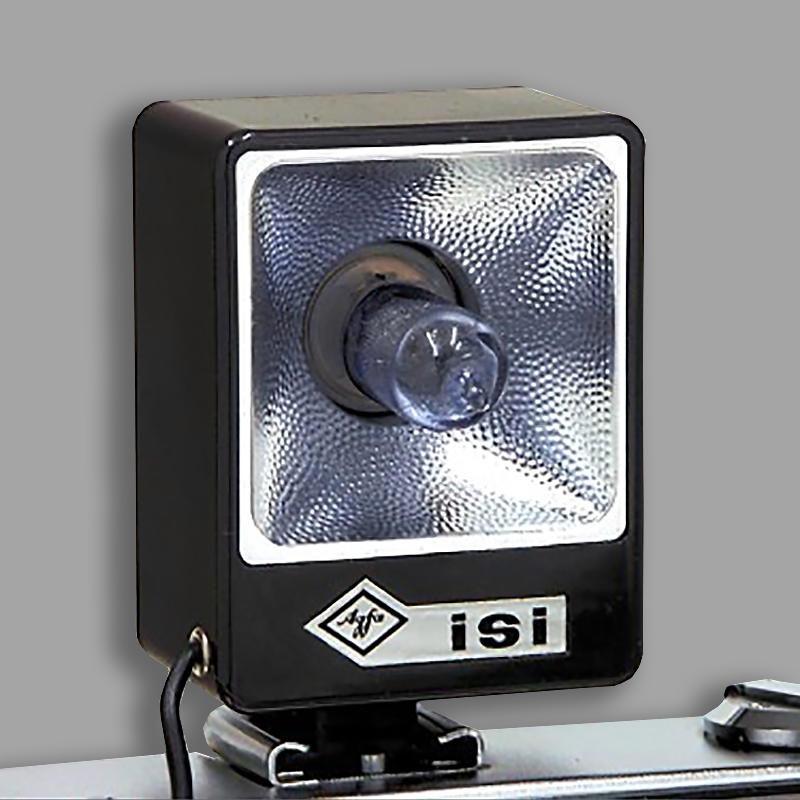
The Agfa ISI 6832 is a compact capacitor flashgun for flashbulbs XM 1/5, FB, PF 1, and PF 5 and was manufactured at the Agfa Camera factory in Munich, Germany. The Agfa ISI’s dimensions are extremely compact. The battery required for ignition is located on the back of the flash unit. The device has a flash bulb ejector button to remove extreme hot used bulbs.
The voltage required for ignition was supplied by a 15 V anode battery/Pertrix No. 74. The Flashgun was available in a version with a hotshoe contact (ISI-M) and a cable connection (ISI-K) for a PC socket.
- Origin: Munich, Germany
- Year of construction: 1960 – 1963
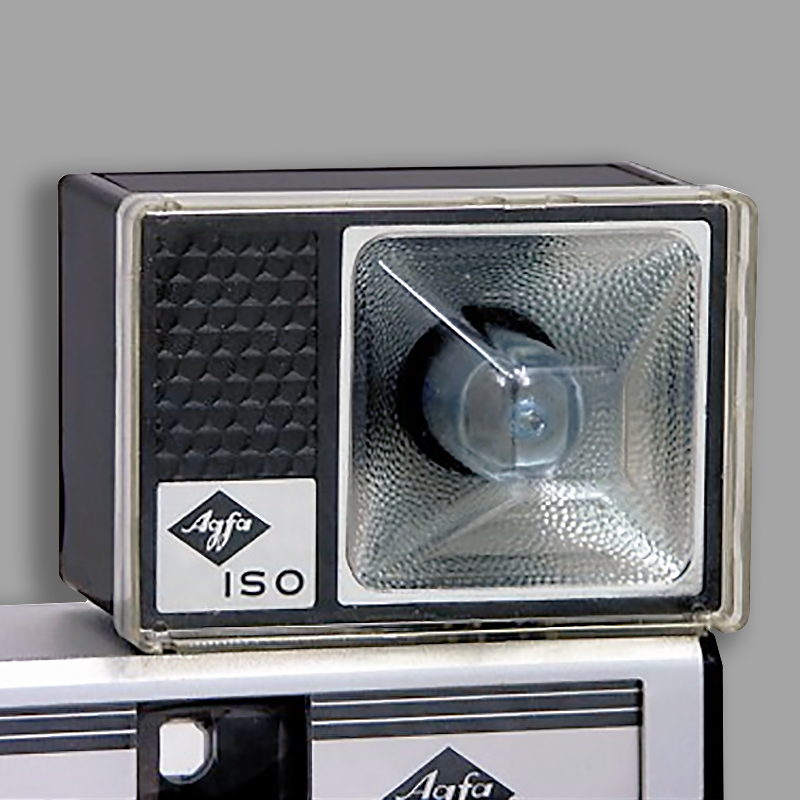
The small hotshoe triggered system flasher Agfa ISO type 6840 for flash bulbs AG-1/AG-3 is specially designed for the Agfa ISO-Rapid film series. In terms of shape and design, it is perfectly adapted to the Rapid camera line.
A 6 V battery PX23/EPX23 is used to power the Agfa ISO flash unit. This is housed in the battery compartment along with the capacitor on the back of the flashgun. This flash unit was also sold in a set for DM26.50, containing the camera, a black (plastic) ready bag, this flash unit, a set of AG1 flash bulbs, a battery for the flash and a Rapid cartridge of film.
- Origin: Munich, Germany
- Year of construction: 1965 – 1970
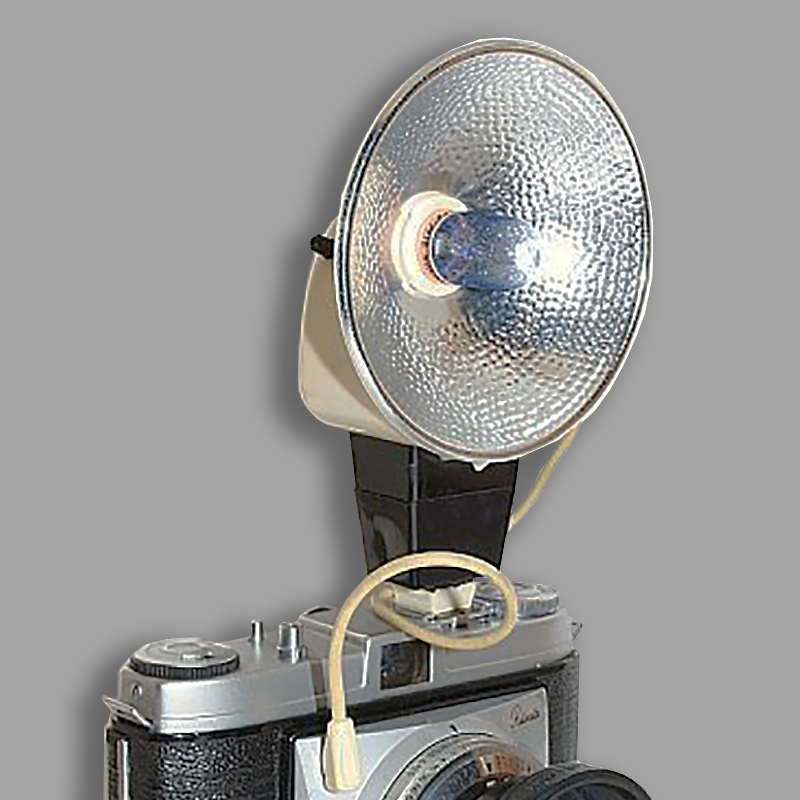
The Ariosa B99F mains capacitor flash from Armin Sauer, Reutlingen, is a rare lamp flash version with power supply via mains charging. It has a ivory-colored plastic housing with cable connection and a bayonet-attached metal round reflector (Ø 9 cm). When the camera socket is removed, a power plug appears with a warning label saying “Charge only in dry apartments”. It has a release/test button on the side.
It is powered by a 220 V mains connection for capacitor charging; Suitable for glass base type flash lamps (Osram Vacublitz XM1/XM1B, Photoflux PF1/PF1B). Selling price 24 DM.
- Origin: Reutlingen, Germany
- Year of construction: 1958 – 1960
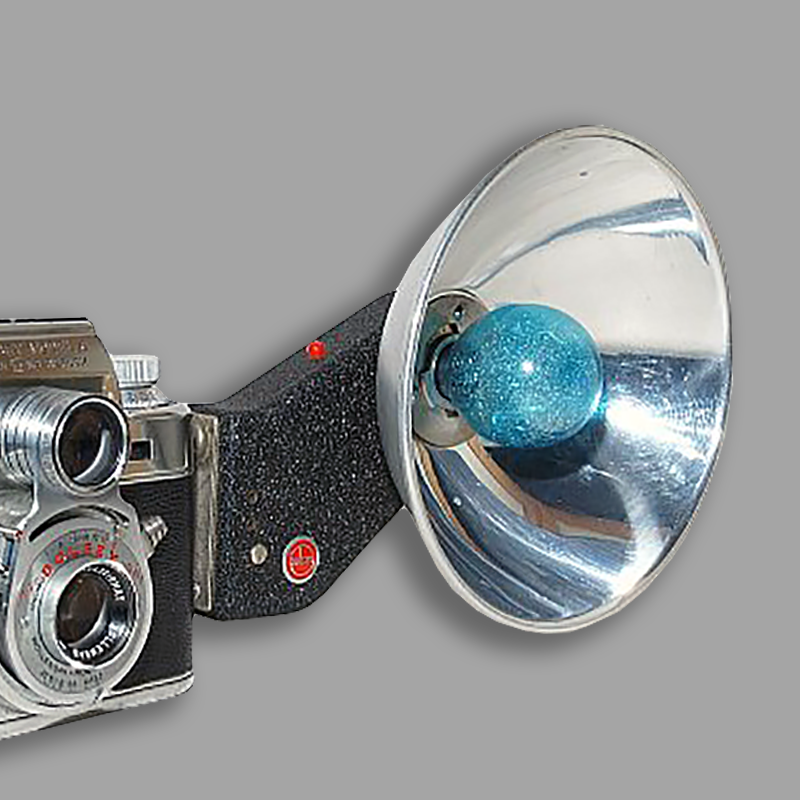
The BOLSEY C capacitor flash unit is an attachable bulb flashgun for the Bolsey 35mm cameras. It has a large metal round reflector in a black metal housing. The connection to the camera is made via the plug contacts (like the Kodak boxes).
The high capacity capacitor is charged by a 22.5 Volt hearing aid type battery. Flash bulbs: metal base with bayonet BA15s. Lasts for more than 10,000 high-powered flashes or 2 or 3 years of hard use. Built-in test light, bulb ejector. Exclusive Bolsey Mount for quick, easy, secure attachment. No dangling wires. Designed to blend with Bolsey Camera.
- Origin: Rochester NY, USA
- Year of construction: 1950 – 1955
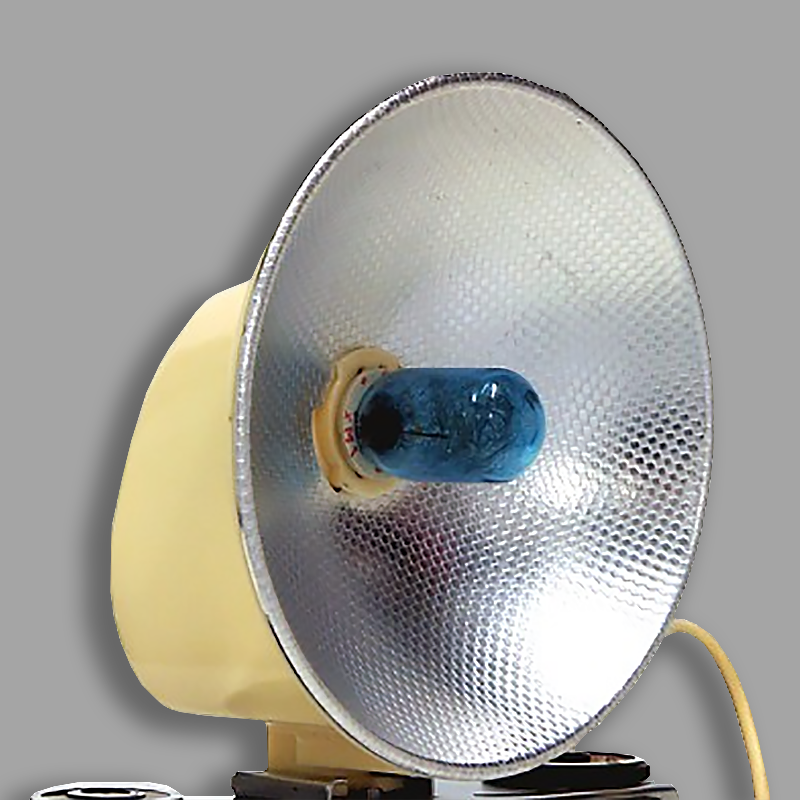
The Citus Citilux is a typical compact capacitor flashgun. The reflector on this model is not foldable and so the size cannot be reduced for transport. The device is suitable for flash bulbs XM 1/5, FB, PF 1, PF 5.
A 22.5 V anode battery/Pertrix No. 72 is used to power the Citus Citilux flash unit. The electrical equipment (battery and capacitor) are installed behind the reflector. To replace the battery, turn it a quarter of a turn and remove it. The Flashgun was available with a cable connection for a PC socket. The same version of the Citilux can also be found with Ilford, Kindermann or Dacora embossed.
- Origin: Berlin, Germany
- Year of construction: 1960’s
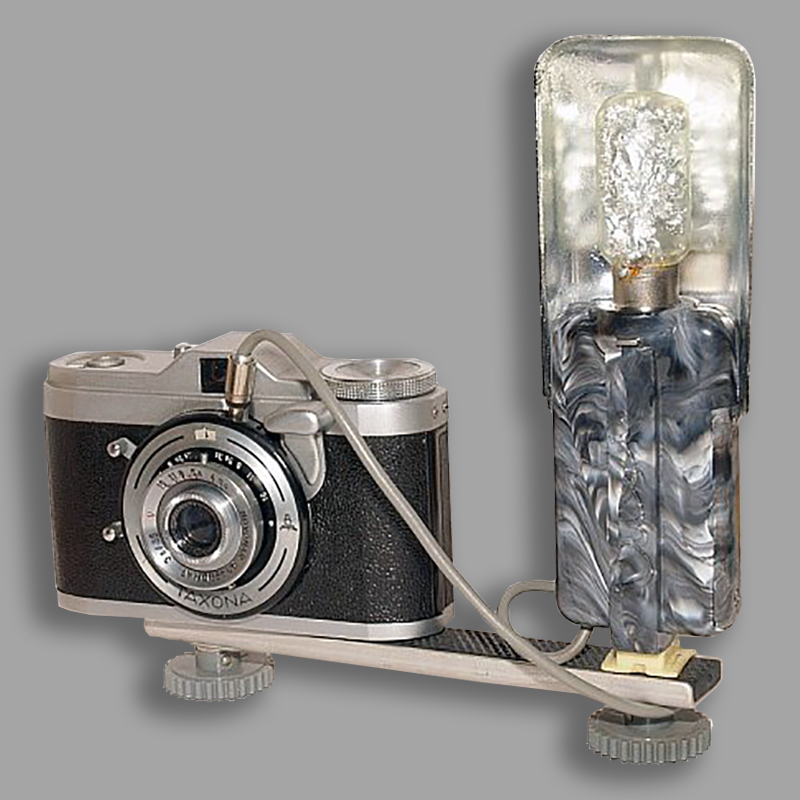
The Elgawa Luxi was a popular East German compact capacitor bulb flash manufactured by VEB Elgawa in Plauen. The Luxi is probably one of the smallest compact bulb flashes for metal base flashbulbs. It was available in different case colors, such as ivory, red and even a version with a marbled polystyrene case. Technically all Luxi’s were the same.
The cover on the side housed a 22.5 V anode battery, type Pertrix No.72, while a bulb catch is visible at the top of the body front. The rectangular reflector could be slid downwards, behind the body. The Luxi accepted bulbs with BA 15 s bayonet mount.
- Origin: Plauen, Germany
- Year of construction: 1958 – 1963
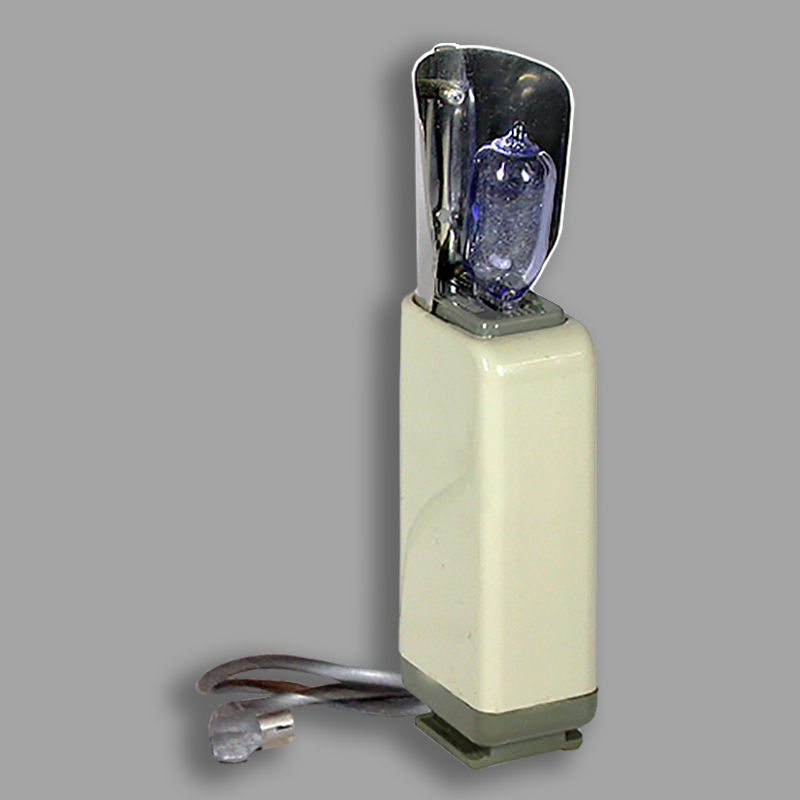
Peter Sarabèr designed this miniature capacitor flash unit EMO/EMOLUX for flashbulbs type AG-1 for the company EMO Elektronik. Special feature: the small size, which made it possible that the stainless steel reflector could be inserted into the housing.
Light/dark gray plastic housing for sync cable for PC socket. The power source was a 15 V anode battery type IEC 10F15 (V74PX). The device has an automatic bulb ejector. The selling price in 1962 was DM 16.60 with a plastic case or DM 18.90 with a leather case or DM 20.40 complete with a ready-to-use case for the device and six AG-1 lamps.
- Origin: Wetzlar, Germany
- Year of construction: 1962
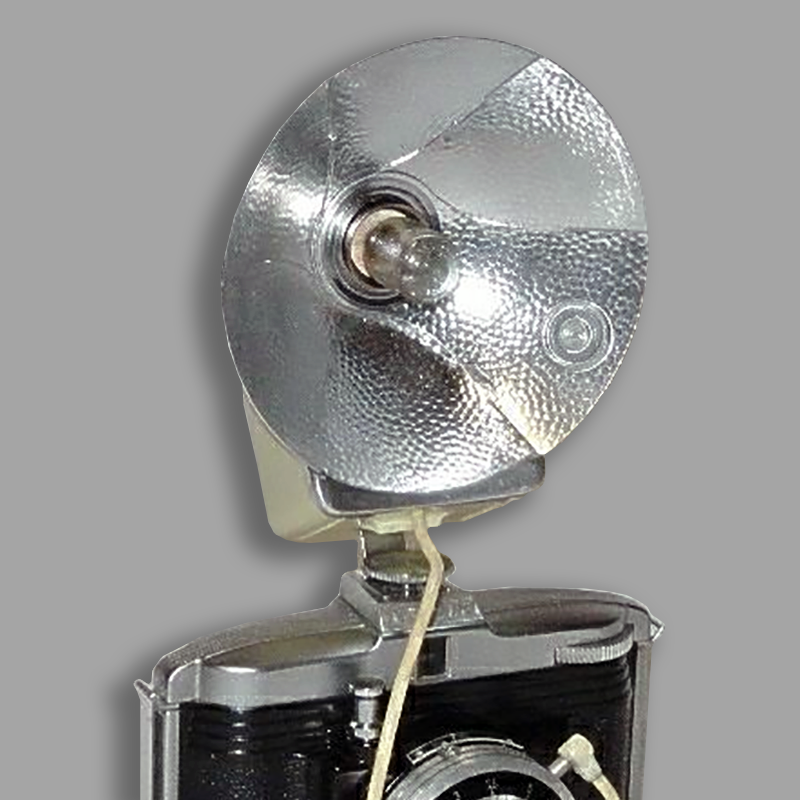
Miniature condenser pocket flash unit type Ferrania Microlampo B-C with fan reflector (102 mm Ø) and built-in test lamp. White plastic housing with sync cable for PC socket. Model was also produced with a beige plastic housing. The suffix B-C in the name means battery capacitor.
Powered by a 22.5 volt photo battery (Pertrix No. 79 or similar); Flashbulb eject button; Battery test button with green test lamp; red flash release button. Socket for flashbulbs with glass base type XM 1, PF1, XM5, PF5, XM1B, PF1B. The retail price was 19.50 DM in 1957.
- Origin: Milano, Italy
- Year of construction: 1956 – 1959
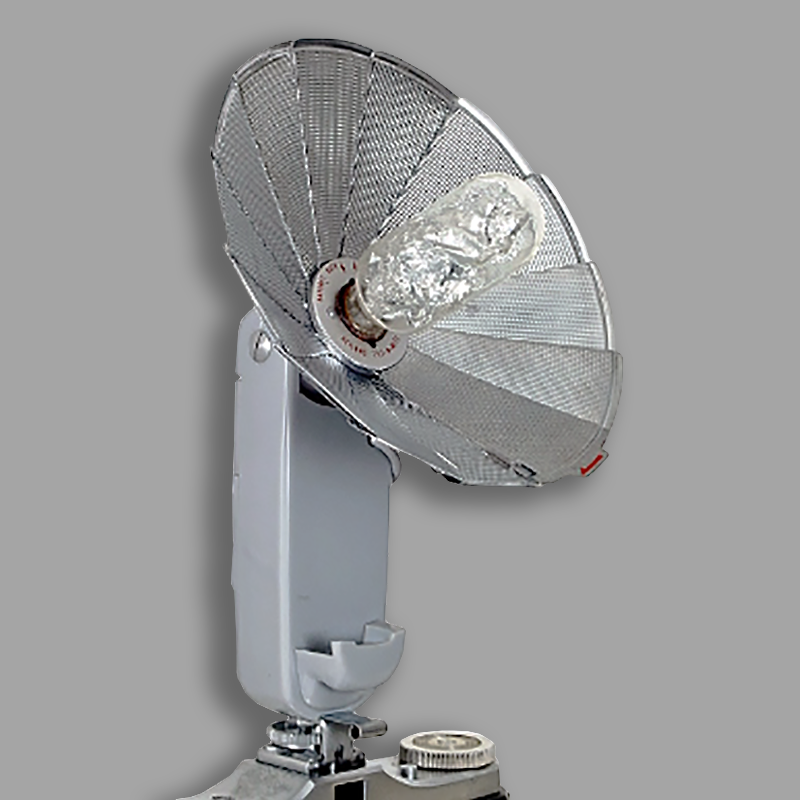
The Heiland Tilt-A-Mite multi-adjustable capacitor flash unit has a metal base, high-quality and heavy housing and a swiveling, focusable reflector which enables indirect flashing. Heiland was acquired by Honeywell in 1954.
The power supply takes place via 2 x 15V photo batteries. The Tilt-A-Mite has a test lamp for checking the flash lamp and it also accepts two different types of flash bulbs. In addition to the popular FB types, it also accommodates older flash bulbs with a bayonet base. On the back of the device is the usual aperture calculator.
- Origin: Denver, USA
- Year of construction: 1952 – 1960s
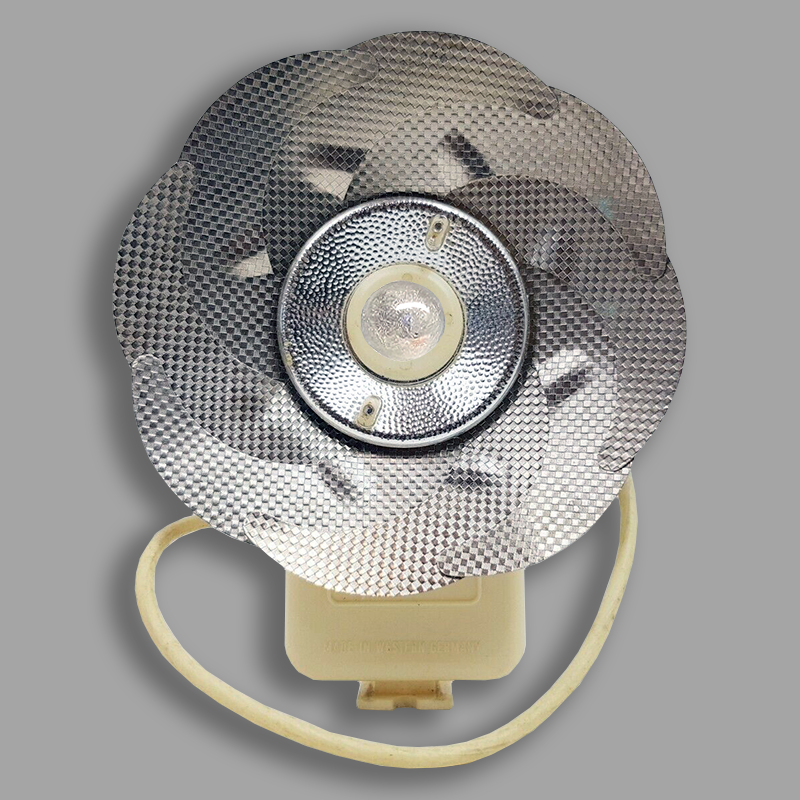
The Ilford Sportslite is a capacitor type flashgun with collapsible reflector. The reflector is not removable, but its diameter can be adjusted. (Ø 6.5-9.5 cm). The same flash unit can also be found embossed with Citus, Kindermann and Dacora.
It fires capless bulbs (Osram XM1 Philips PF1/PF5) from a 22.5 volt B122 anode battery type Pertrix No.72. Push button bulb ejection. A useful flash exposure guide is molded into the cream plastic body. Supplied with 10” cable, co-axial plug and zip-fastened case. The retail price in the UK was £1.18.10 (according to Ilford advert).
- Origin: Ilford, England
- Year of construction: 1958/1960
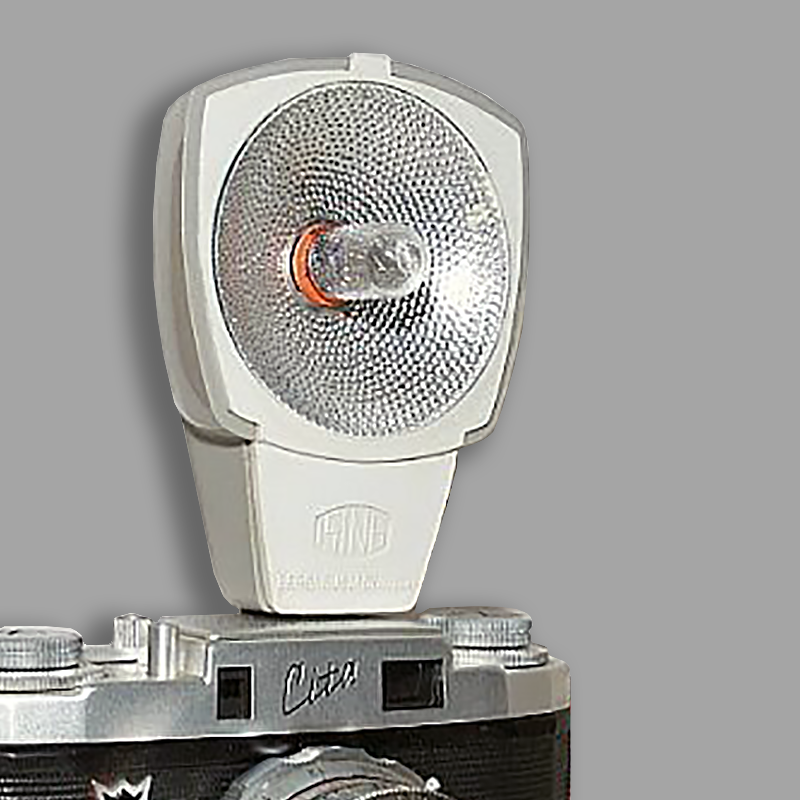
This Flash units comes from a well-known tripod manufacturer. This simple ISING Trabant 1 flashgun in a light/medium gray plastic housing could work with both the old type (large bulb) glass base flash bulbs and the new smaller ones. The only difference between the two versions is the blue company nameplate on the front.
The Trabant 1 has a metallized round reflector (Ø 5.5 cm) and is suitable for flashbulbs with a glass base (Osram XM1/XM1B, Philips PF1/PF1B or similar). The power supply is provided by a 15V photo battery; The selling price was 8.50 DM in 1954.
- Origin: Bergneustadt, Germany
- Year of construction: 1954
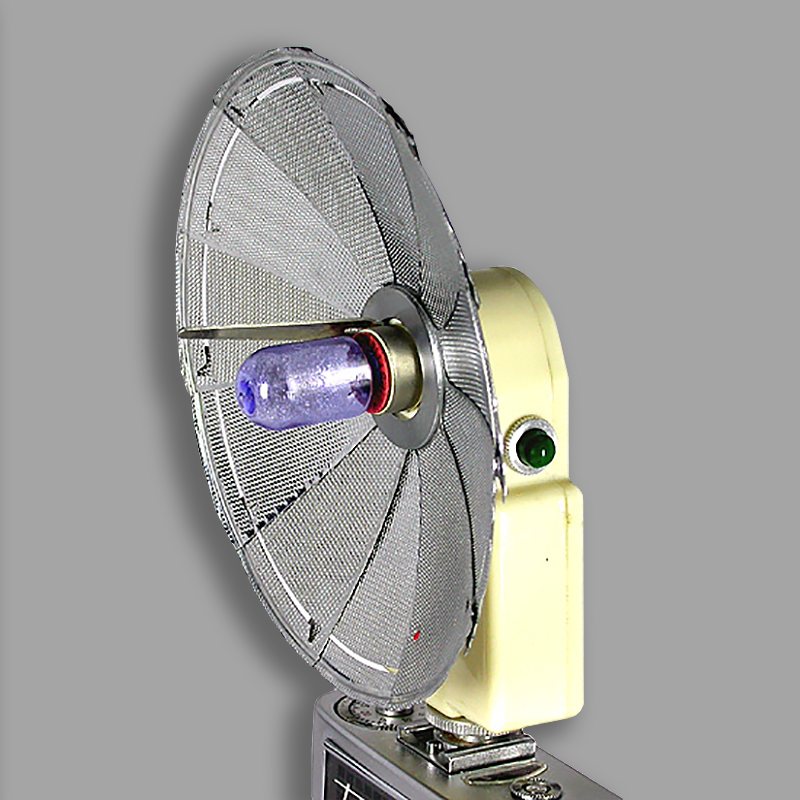
Surprisingly, this ivory-colored condenser flashgun from the Ising company was called Trabant II Model B and was manufactured in the 1950s. It fit into a small faux leather bag, smaller than a pack of cigarettes.
The collapsible reflector with a diameter of around 13 centimeters could be opened like a fan, then all you had to do was plug in the flashbulb, fill up the 22.5 volt anode battery and you were ready to go. The Flashgun is equipped with a plastic housing, lamp ejector and connection cable. Model A was suitable for glass base flashes, model B for all flash lamps with a plug-in base.
- Origin: Bergneustadt, Germany
- Year of construction: late 1950s
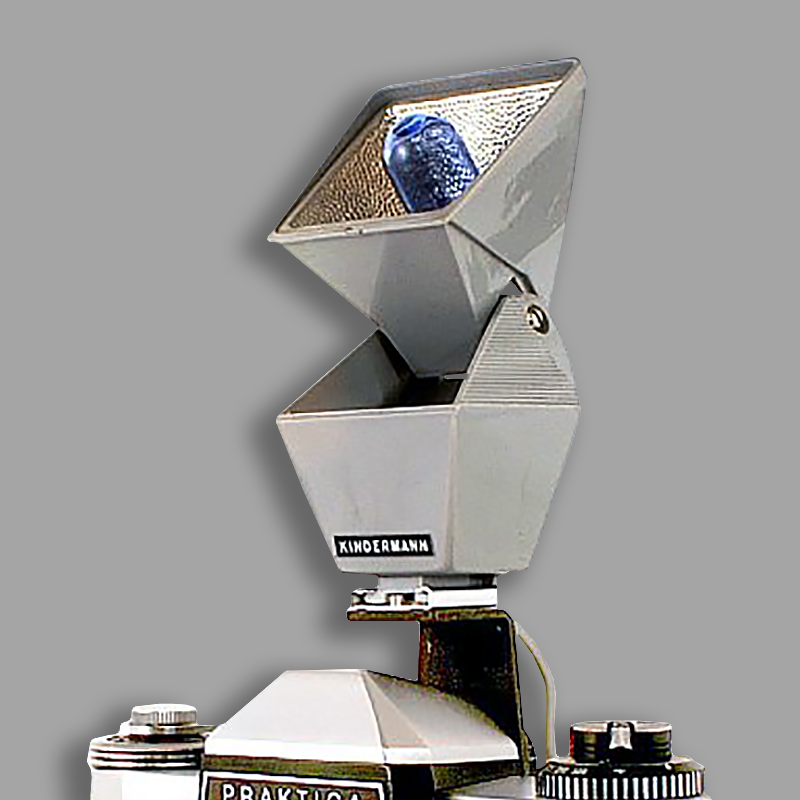
The Kindermann reflex flash unit from this manufacturer of projection devices was also offered under the “AMATO” brand and is rare to find. The tiltable reflector can emit the light directly to the front, but can also be tilted upwards for softer, indirect lighting.
The reflector of the flash has a hammer finish and is suitable for flash bulbs with a glass base (Osram Vacublitz XM1/XM1B, Philips Photoflux PF1/PF1B or similar). A 15V photo battery (e.g. Pertrix No. 74) provides the power supply. There is an aperture table on the back of the plastic housing. The selling price was 12 DM, plastic case 2.40 DM.
- Origin: Berlin, Germany
- Year of construction: ± 1962
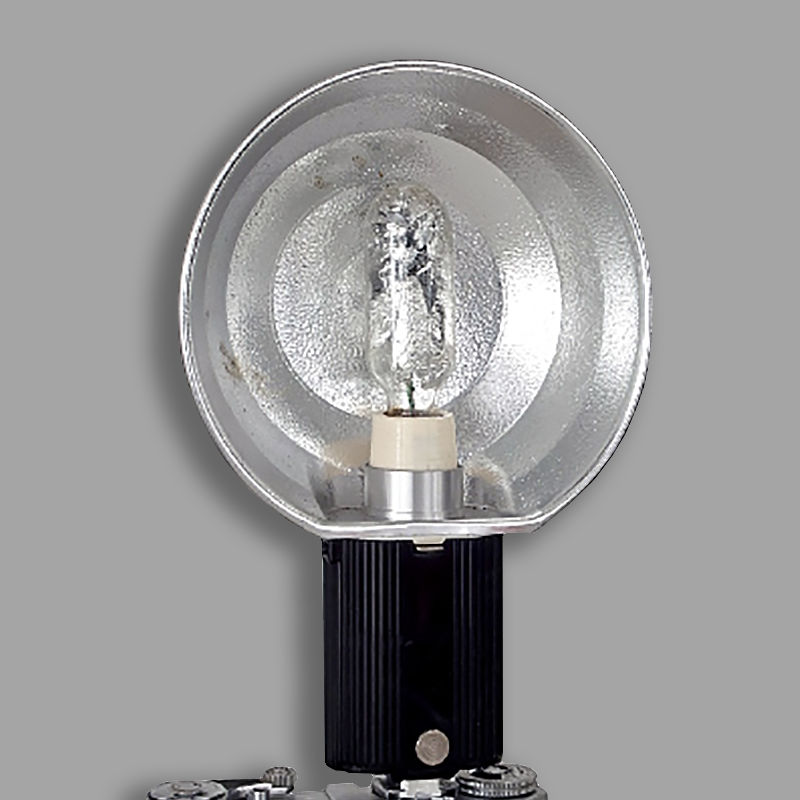
The Kodak Kodablitz is a typical flash from the early 1950s. It is already equipped with a capacitor and uses a powerful 22.5 V anode battery. This flashgun uses flashbulbs with a BA 15s bayonet base. For transport, the metal reflector can be pulled up to save space.
This flash is practically identical to the Agfa Synchro Flasher KK and like the Agfa KK, the battery housing is made of plastic and the plug-in round reflector is made of metal (13.5 cm). A maximum of 3 additional devices could be connected. A fastening rail was offered as an accessory as a “mounting bracket”. Selling price was 19.50 DM; fastening rail 3.50 DM.
- Origin: Stuttgart, Germany
- Year of construction: 1950 – 1954
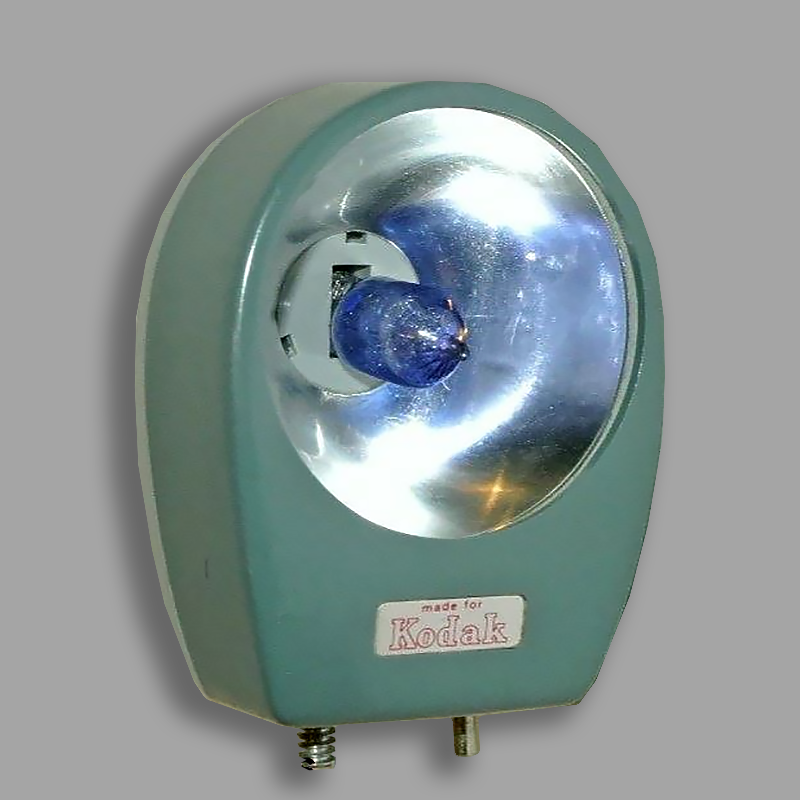
The Kodak Starlite flash holder Model V is a simple, small capacitor flash unit with an integrated parabolic reflector (4.4 cm Ø) and bulb ejector. It has a light/medium gray plastic housing with a synchronous connection through an integrated device plug for e.g. Brownie Flash IV, Cresta etc. The flash unit can also be found as Mod. VI with a normal plug-in shoe and cable connection.
The Starlite Model V is suitable for flashbulbs with a glass base (Osram XM1/XM1B, Philips PF1/PF1B). The power supply is provided by a 15V battery; The selling price was 8.50 DM in 1954. It has an aperture table on the back.
- Origin: Stuttgart, Germany
- Year of construction: 1961
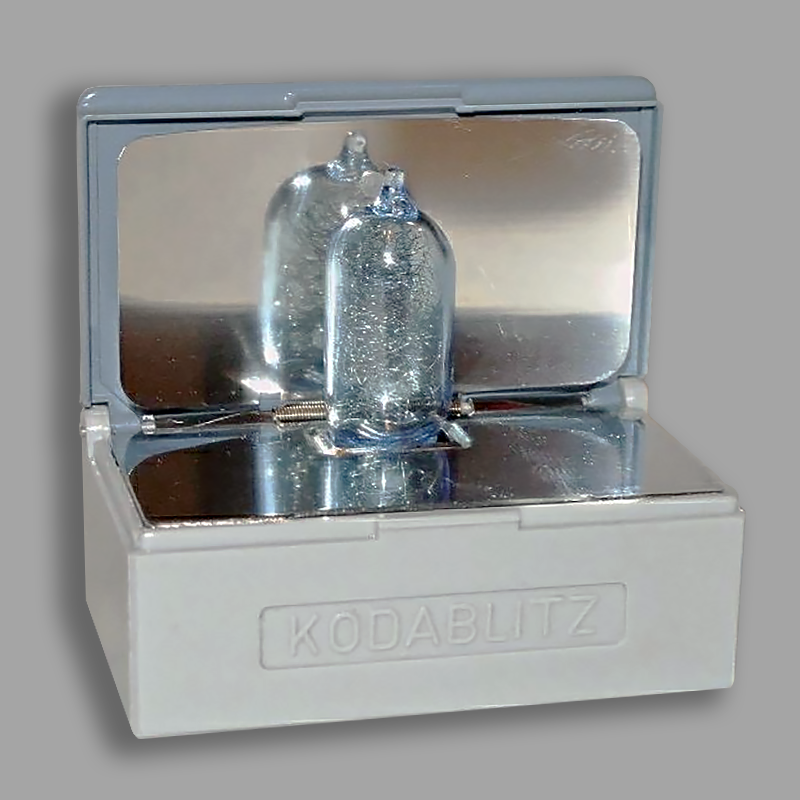
The KODABLITZ is a small pocket-sized flash unit from Kodak AG, Stuttgart-Wangen, Germany from the late 1960s for AG-1 flash bulbs. The power supply (fold up the housing cover) is provided by a 15 volt battery, e.g. Varta V74PX (4074) or IEC 10F15; The device can be used for AG-1 bulbs (white, black and white and negative color film) or AG-1B bulbs (blue, slide color film for daylight);
It is provided with an aperture table on the back. New price: DM 14.50 (1964); Connection cable DM 2.40. Connection: center contact for e.g. Kodak Instamatic 500; Connection for special cables if there is no hot shoe.
- Origin: Stuttgart, Germany
- Year of construction: 1964
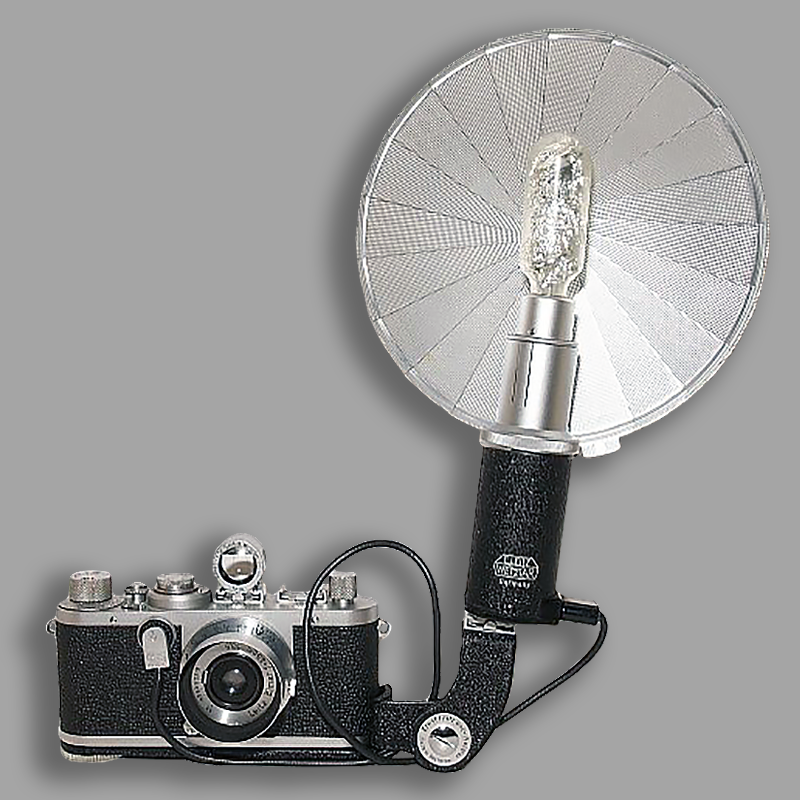
Without a doubt, the Leica CEYOO capacitor flash unit from Leitz is the Mercedes of bulb flash units. This was not just because of its size, weight and price – the light output was also high due to the huge 16cm fan reflector. A test bulb was included in the scope of delivery. The selling price was around 61 DM.
The ideal combination with the Leica is via the CTOOM flash rail. Special feature: the capacitor started charging when the flash bulb was inserted, thus preventing accidental premature ignition. Power supply by a 22.5V anode battery. Suitable for metal based flash bulbs with bayonet BA15s
- Origin: Wetzlar, Germany
- Year of construction: 1950 – 1959
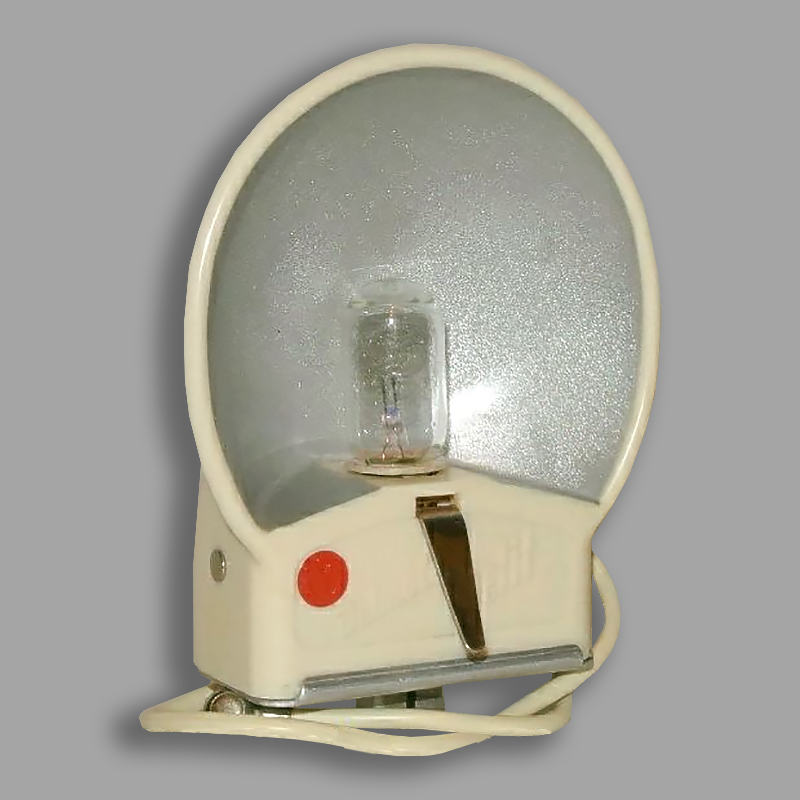
The Montanus Delmolux Petit capacitor synchro flash was manufactured by Montanus-Camerabau-Potthoff & Co. The camera connection was via a sync cable for a PC socket. New price in 1956 was DM 6.00.
The power supply was provided by a 22.5 volt battery type IEC 15F20 e.g. Varta 72. The flash was provided with a lever for flash lamp ejection. It was attached to the camera using an attachment foot for the hotshoe. Suitable for flash bulbs with glass bases of type XM 1, PF1, XM5, PF5, XM1B, PF1B. Other identical/similar models existed with gray plastic housings.
- Origin: Solingen, Germany
- Year of construction: 1956/1957

The Montanus capacitor synchro flash was manufactured in Solingen-Ohligs, Germany by the company Montanus-Camerabau – Potthoff & Co.. It has a removable flash reflector with a bayonet mount. The camera connection was via a sync cable.
The power supply was provided by a 22.5 volt battery type IEC 15F20, e.g. Varta 72. Suitable for flash bulbs with glass bases of type XM 1, PF1, XM5, PF5, XM1B, PF1B. The flash was provided with a flash lamp ejection lever. It was attached to the camera using a hotshoe mount. Furthermore, the flash unit has a test trigger button with a light signal.
- Origin: Solingen, Germany
- Year of construction: 1950s

Polaroid also offered its own flash units for its instant cameras. Perhaps the best known of its kind is the Polaroid 268 capacitor flash unit, which fits a whole range of Polaroid models, e.g. the Color Pack models 101 – 104, 125, 210, 315/335, 400 series, M60 and others.
The blue-colored cover flap on the round reflector made it possible to use clear flash lamps with the US M3 metal base for color photography. A 1.5 V AA cell (AA, Eveready E91) takes care of the power supply. The sync plug on the 268 only fits Polaroid cameras; Other flash units with standard plugs can also be connected to the cameras.
- Origin: Cambridge, USA
- Year of construction: 1968
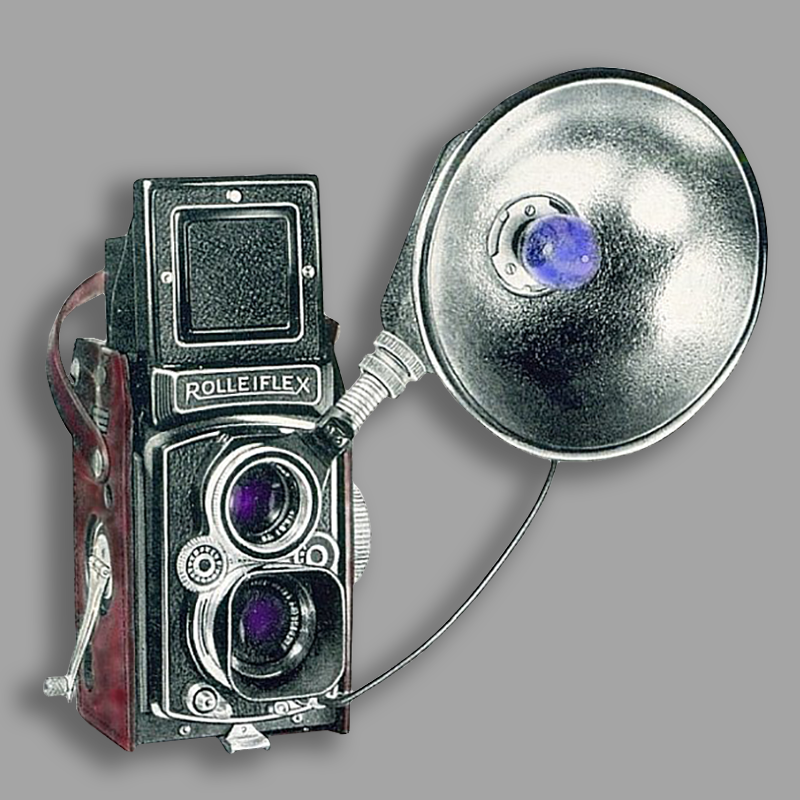
Franke & Heidecke created a number of accessories for their Rolleiflex TLR-cameras during the 1950s. It also included the Rolleiflash bulb flash unit in different versions. It could be expanded to include up to 3 “Rolleiflash-Comb” flash lamps to the flash system using a max. 10 m long connection cable. The round metal reflector can be removed for transport.
Power supply is provided by a 22.5V anode battery. Flash Unit is suitable for metal based flash bulbs with bayonet BA15s. The sales price was 55 DM (Rollei 3.5), 58 DM (Rolleiflex 2.8C), extra Rolleiflash-Comb 32 DM.
- Origin: Braunschweig, Germany
- Year of construction: early 1950s
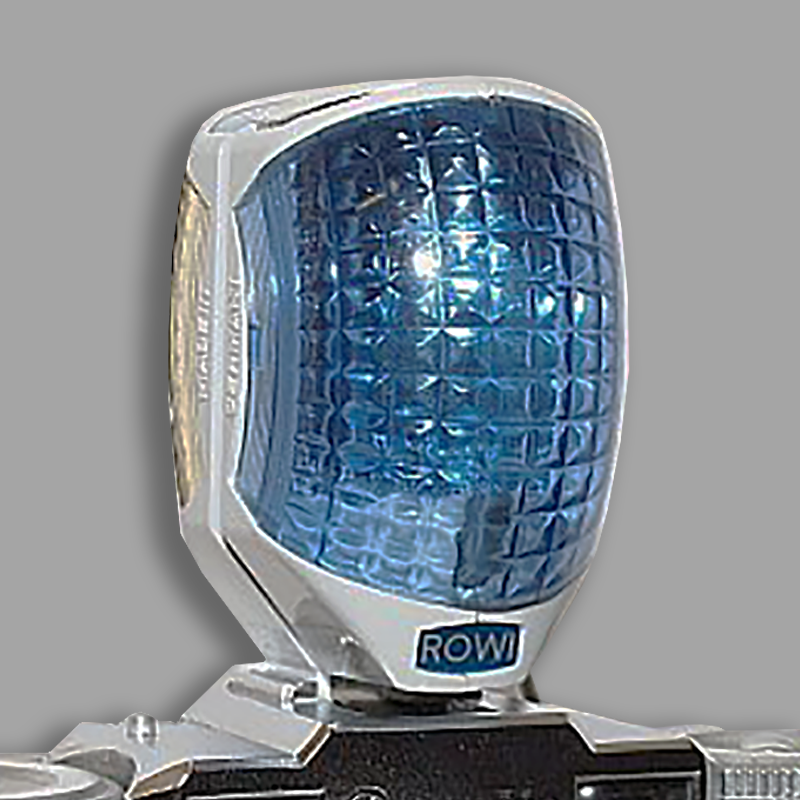
This ROWI Mini Flash No. 1138 is a very unusual capacitor mini flash for cable connection with an integrated rectangular hollow reflector (approx. 2.8 x 3.2 cm) in a gray plastic housing.
The device has reversible diffusers (reflector cover) in clear or blue plastic; This means that blue flash bulbs for color photography are unnecessary.
The power supply is provided by a 15V photo battery (Daimon No. 324 or Pertrix No. 74); suitable for combination glass bases (Osram Vacublitz XM1/XM1B, Philips Photoflux PF1/PF1B or similar and AG-1).
- Origin: Neuburg, Germany
- Year of construction: 1965 – 1966
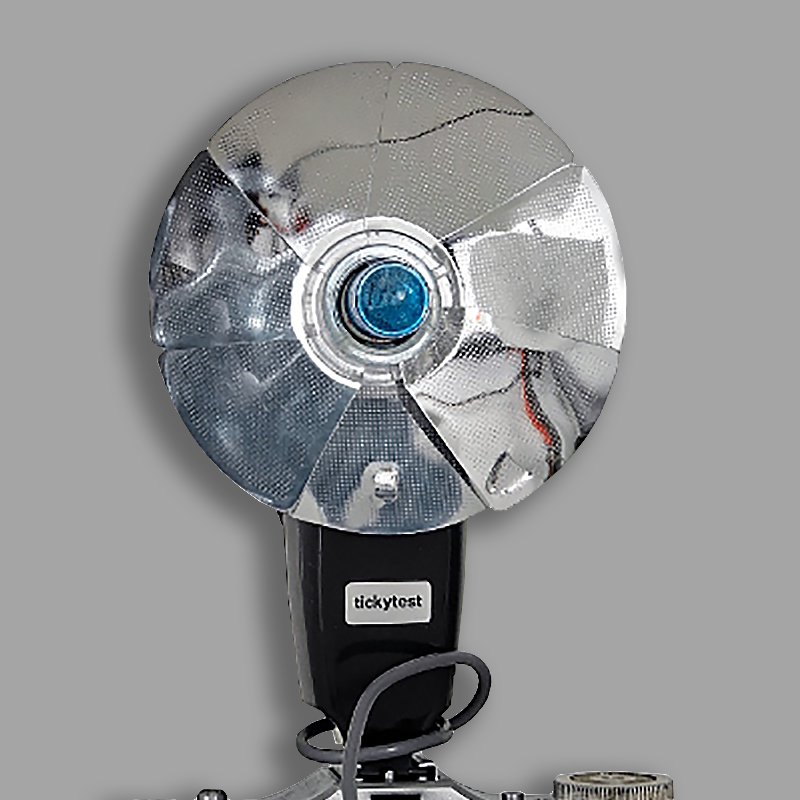
The Ticky Test is a compact, beautiful capacitor flash unit with a fan reflector (Ø 10 cm) from the 1960s in a gray plastic housing. Thanks to the large bulb base, stronger bulbs can also be used and so it can achieve a very high performance. On the back, is an aperture calculator and a test button for flash bulb checking. Selling price in 1963: 18 DM.
The fan reflector is connected to the housing via a bayonet and is only removed when changing the battery. The power supply is provided by a 22.5V anode battery, type Pertrix No.72; suitable for glass bases (Osram XM /Philips PF1).
- Origin: Calw, Germany
- Year of construction: 1959/1960
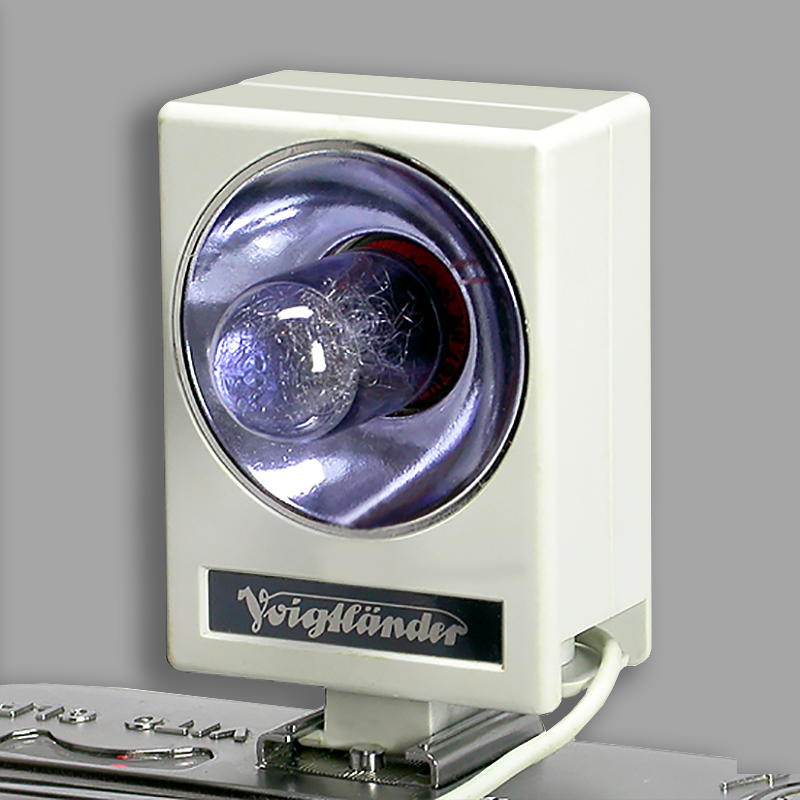
Tiny Voigtländer Capacitor-Bulbflash Unit from the 50s – only about 6 x 4 x 2.5 cm small, in light gray plastic housing with integrated metallized round reflector.
The power supply takes place with the help of a15-volt-anode battery (e.g. Perutz No. 74). There is a rather comfortable aperture calculator on the back.
The Voigtland miniature flash unit is suitable for flash bulbs with glass base (Osram XM1XM5 / Philips PF1 / PF5 or similar). It was attached to the camera using cable connection. Standard the miniature flash is delivered to a plastic case.
- Origin: Brunswick, Germany
- Year of construction: 1960
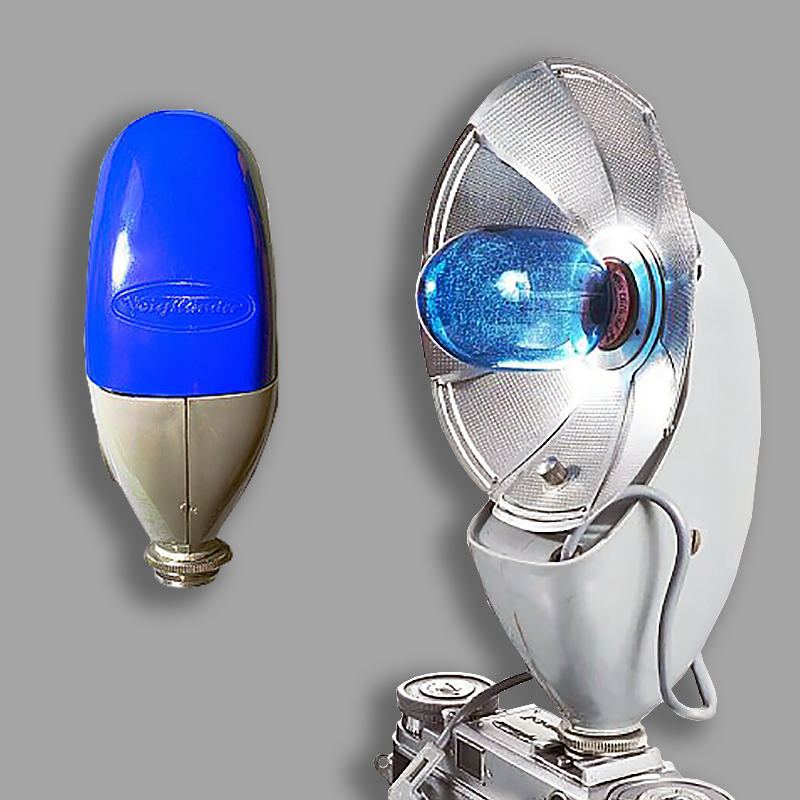
Handy Voigtländer Flashgun 200 Capacitor pocket flash in idiosyncratic egg-shaped design. Under the blue lid, the corrugated fan reflector is located, the 9 lamellae of which is fanned out with just one rotation. The flash was available in two variants; For Flash Bulbs with bayonet base BA15S or for glass base flash Bulbs (Osram XM1xM5/Philips PF1/PF5).
At the side is an aperture calculating disk. To control the operational readiness, a test lamp with a metal base BA15S was included. In the glass base version, there was a suitable adapter for the test lamp. Power supply is provided by a 22.5V anode battery.
- Origin: Brunswick, Germany
- Year of construction: as from 1956
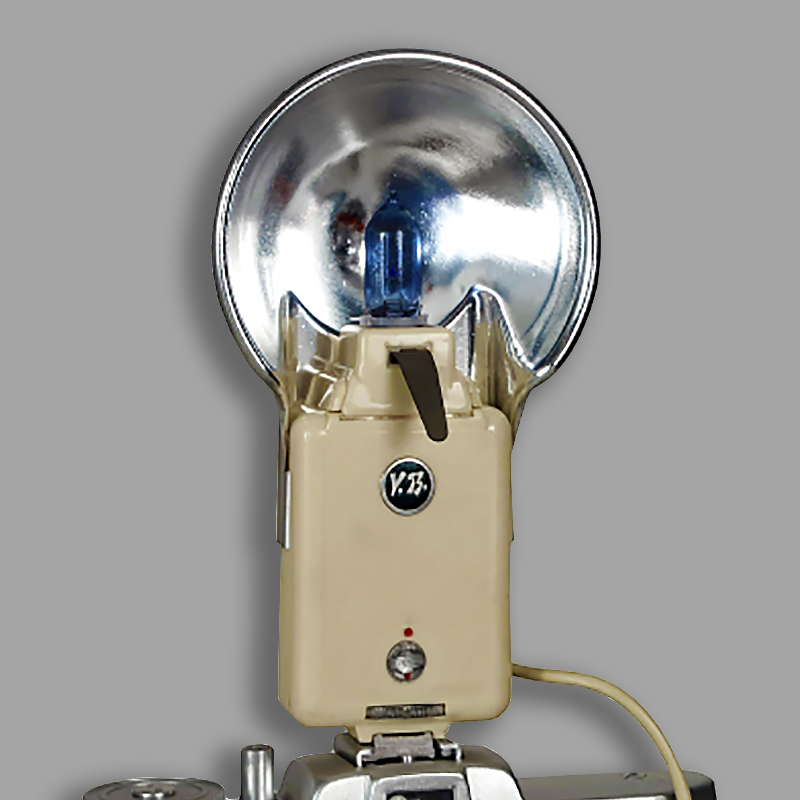
The V.B. Volksblitz Standard is a capacitor pocket flash unit with an ivory-colored plastic housing. It has a silver anodized, removable, slide-on round reflector (Ø 7.5 cm). On the rear an aperture table for flash bulbs PF1/XM1.
Power supply is provided by a 22.5V anode battery, type Pertrix No.72. Flash Unit is suitable for glass bases (Osram XM1 / Philips PF1 or similar). Cable connection for PC socket. The sales price was 12 DM + velor case 3.30 DM. The V.B. flash units were marketed in Germany primarily through Photo Porst and thus gained great popularity.

The V.B. Volksblitz Simplo Capacitor flash unit for flash lamps PF1-XM1 and PF5-XM5 was brought onto the market in 1957 as an inexpensive addition to the range. The simple device weighs less than 40 g without a battery and was sold for 8.20 DM. There was also a simple artificial leather case for 2.60 DM and a holding rail for cameras without an attachment shoe for 2.50 DM.
The Volksblitz Simplo was powered by a 22.5 volt anode battery. The plastic housing is tobacco colored; gold anodized bulb ejector. Aperture table on the front. Cable connection for PC socket.
- Origin: Cologne, Germany
- Year of construction: 1957
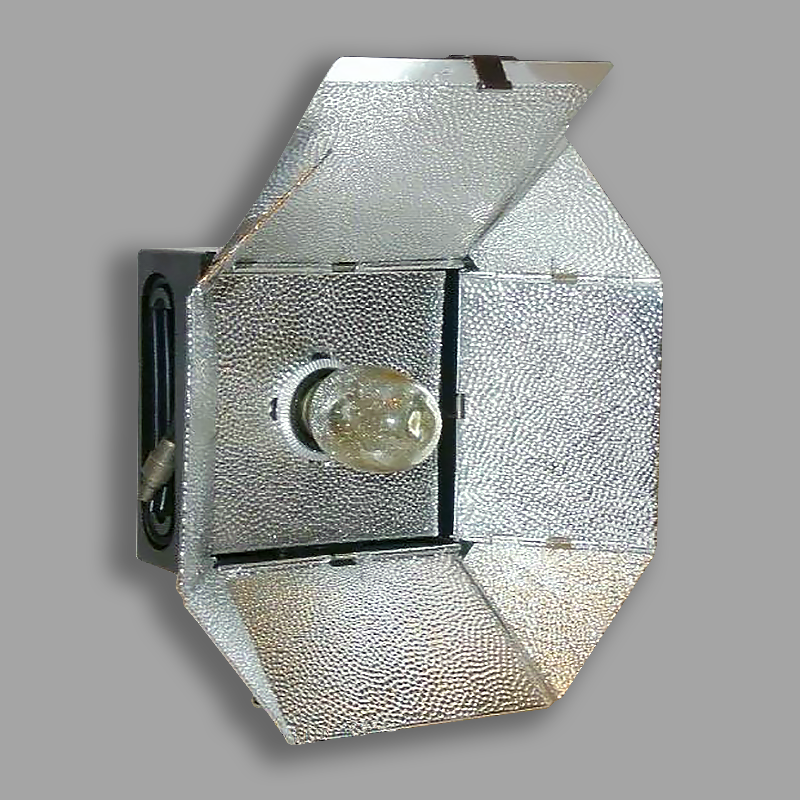
The Syncroclap from Hermann Wolf GmbH is a high-quality and solidly built capacitor flash unit made of black Bakelite for Flash Bulbs No. 6. The 9-part folding reflector made of high-gloss sheet metal with a hammer effect is an unusual construction. It jumps automatically into the working position using spring force. To change the battery, the middle section can be removed.
Power supply is provided by a 22.5V anode battery, type Pertrix No.72. Flash Unit is suitable for flash bulbs with metal base with bayonet BA15s. Cable connection with synchronous cable. Sales price was 19.70 DM.
- Origin: Wuppertal, Germany
- Year of construction: 1953
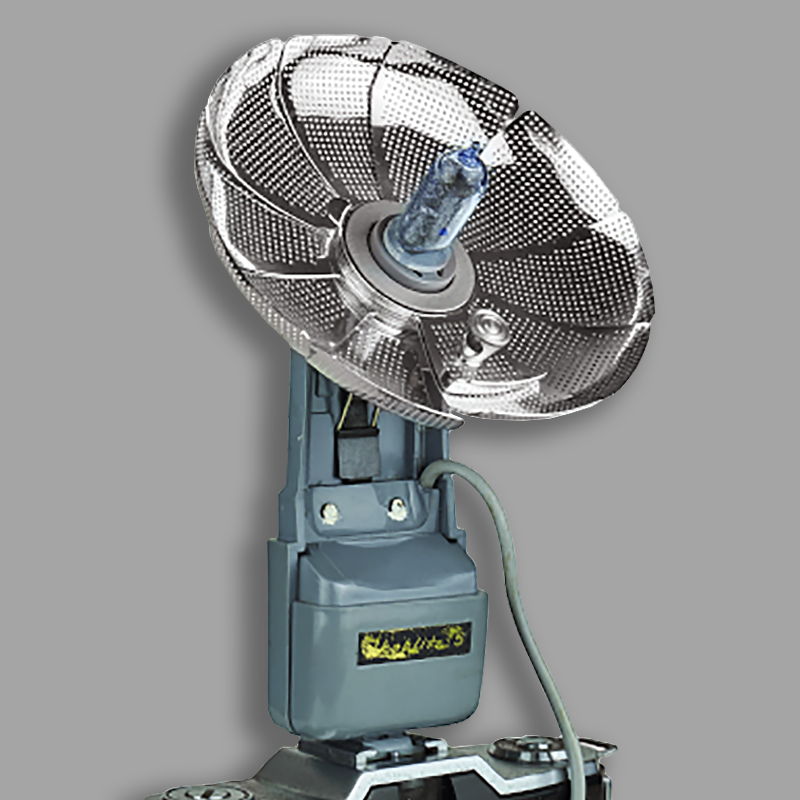
The Zeiss Ikon Ikoblitz 5 is a compact and versatile capacitor pocket flash unit with the same housing design as the Ikoblitz 4, now with a tilt-adjustable fan reflector (Ø 9.5 cm) for indirect flashing. The Ikoblitz can be folded up very small; the cover cap not only protects against damage, but also allows the flash to be attached to the camera strap.
On the back of the Ikoblitz 5 is a disc for aperture adjustment. A 15 V anode battery, type Pertrix No.74 or similar, is used for the power supply. Flash bulbs: Glass base (Osram XM1/5 Philips PF 1, PF 5). This flash unit was offered for 28.50 DM.
- Origin: Stuttgart, Germany
- Year of construction: 1963 – 1965
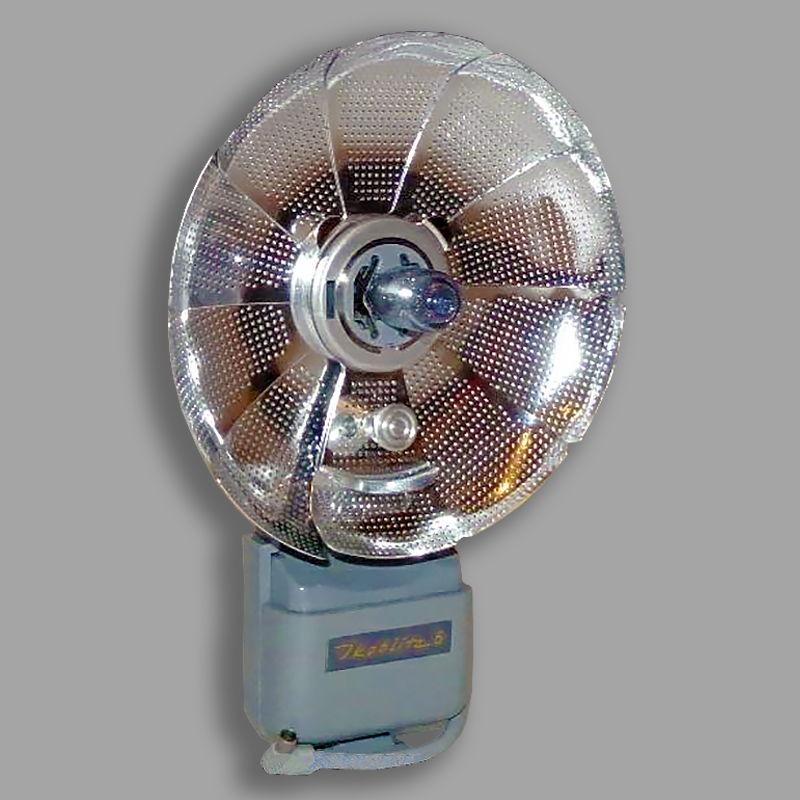
The Zeiss Ikon Ikoblitz 6 is a typical capacitor flash unit from the 1960s in the same housing design as the Ikoblitze 4/5 with a tilt-adjustable fan reflector (Ø 9.5 cm), but now with a combination base for glass base bulbs and AG-1 flash bulbs. The selling price was 28 DM.
Powered by a 15 V battery, type Pertrix No.74 or similar; Aperture calculator on the back. The device can be worn on a camera shoulder strap using the protective cap. The reflector can be tilted by 45°, 70° and 90° (indirect flashing); Other possible versions: Wireless with flash plug contact.
- Origin: Stuttgart, Germany
- Year of construction: 1966
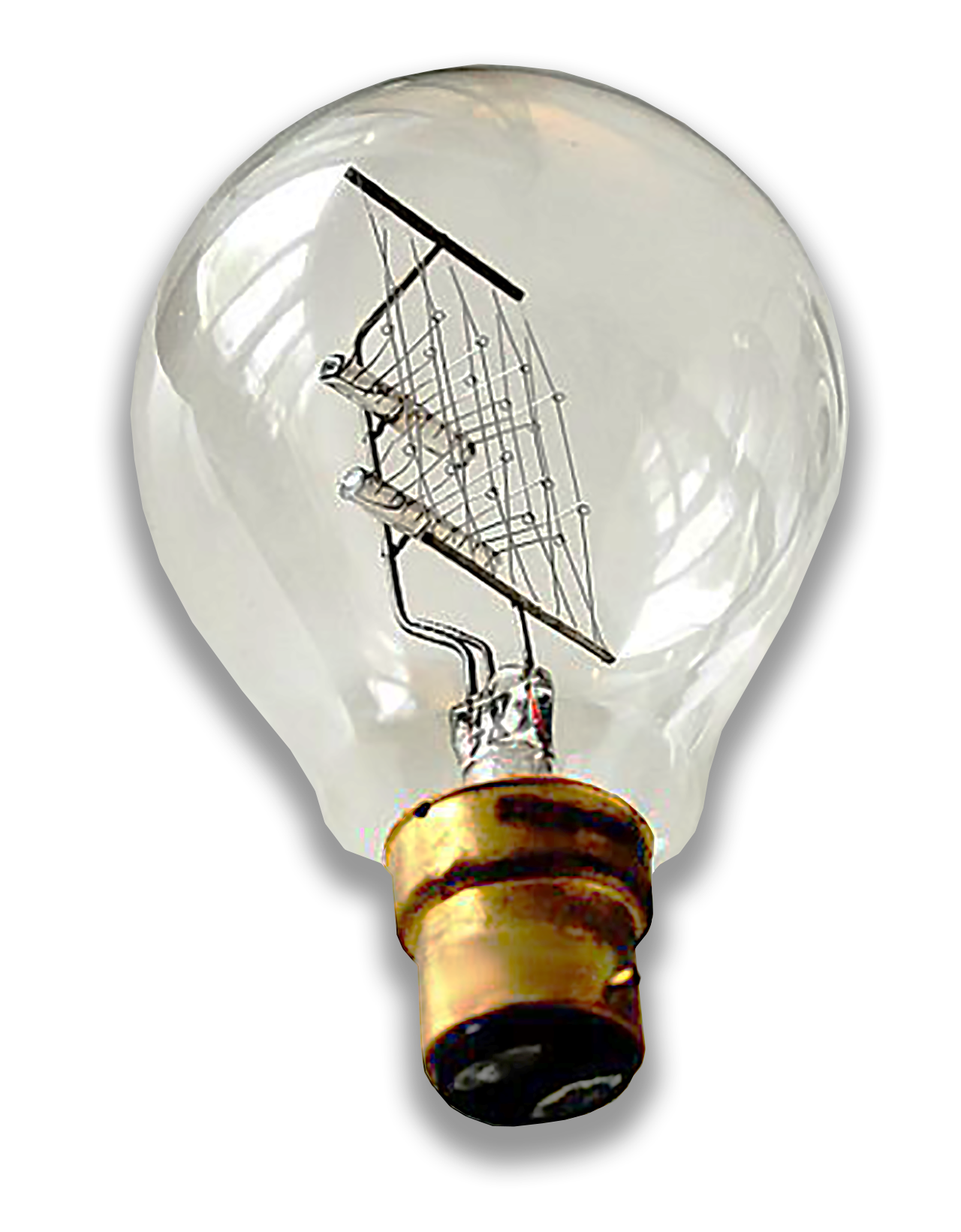
This “Fischer-Tausendblitz” from 1954 is not a “real” flashlight, but it is not an electronic flash either. This flash was basically a hybrid of a flash lamp and a strobe. Although easy to handle and comparatively cheap to use, it did not find many fans and disappeared from the market after a few years.
The “Thousand Lightning” is connected to the power grid via a ballast. When triggered, the overvoltage causes a lighting time of around 1/25 second, the “flash”. Since this is only on for a short time, the lamp has a lifespan of around 1000 “flashes”. Another advantage – the lamp continues to burn with low luminosity as long as it is connected to the power supply, making adjustment easier. Cameras without synchronous contact can also be triggered using a cable release switch.
Design: Flash unit for 220Vac current or ac/dc current with round reflector suitable for a special flashbulb with E27 thread. The selling price was 65 DM (101/111 alternating current); or 80 DM (201/211 all-power; a replacement lamp cost 25 DM.
Group 4
MULTIPLE FLASH SOLUTIONS
As already mentioned in the introductory text at the beginning of the Peripherals section, there was an ever-increasing need from the photographing public to be able to quickly take several photos one after the other indoors, just as was the case outside. And all attempts to create flash equipment that allowed this by their construction resulted in large – and often clumsy – devices. Some of these solutions are shown at the end of chapter 4.
Was there now an impasse? No, the Kodak subsidiary Sylvania Electric Products broke new ground in indoor photography by introducing the Flashcube.
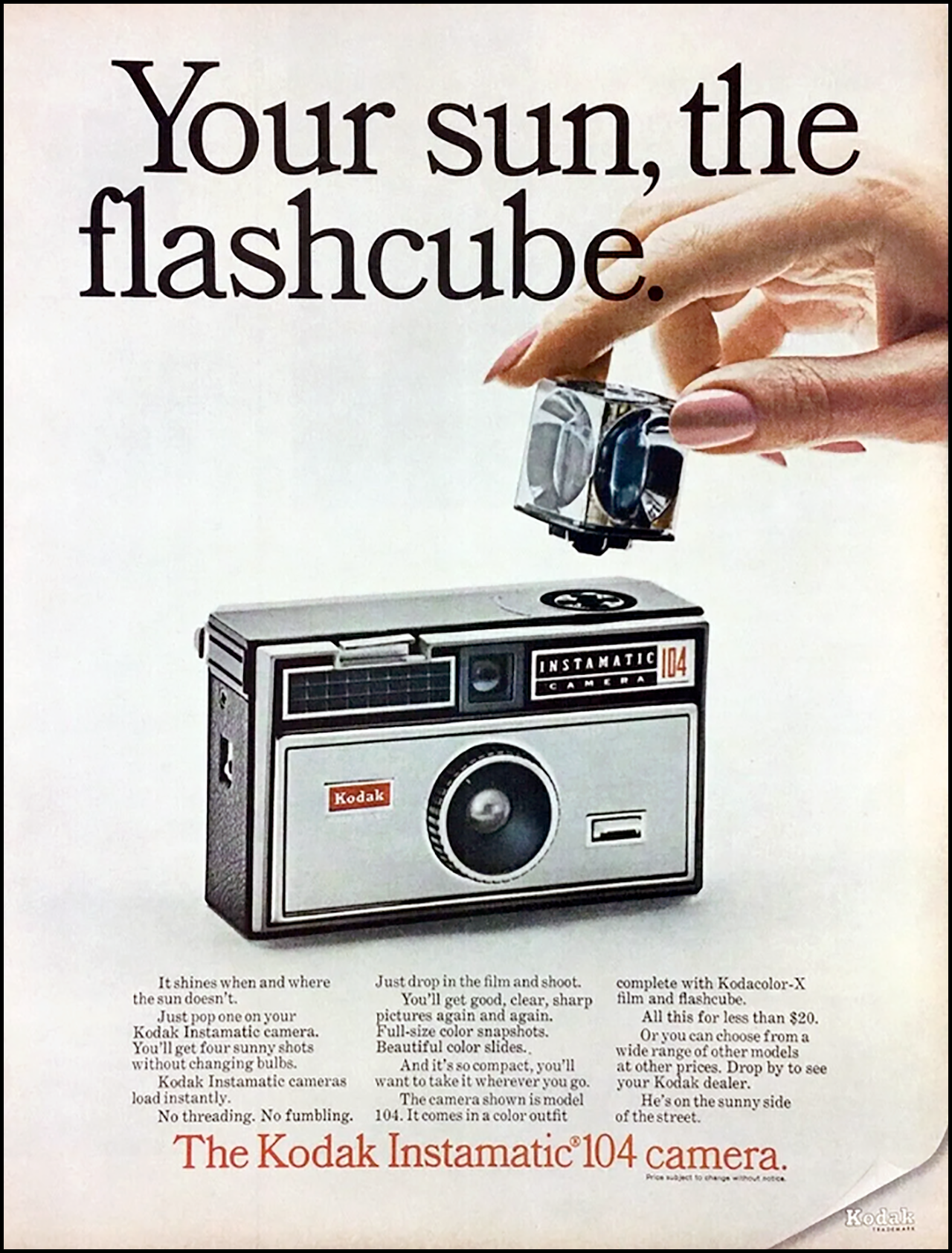
Eastman Kodak’s invention of the Flashcube also emerged from the company’s specific wish to offer a flash that would work with its newly ubiquitous amateur photographers’ cameras, made popular by the white middle-class families targeted in 1960s advertising campaigns.
In magazine advertisements, a woman’s hand was shown affectionately caressing a Flashcube, positioning it as a feminine technology to capture home life. In the Flashcubes’ dazzling light, families staged domestic tableaux in an effort to display their nuclear family credentials.
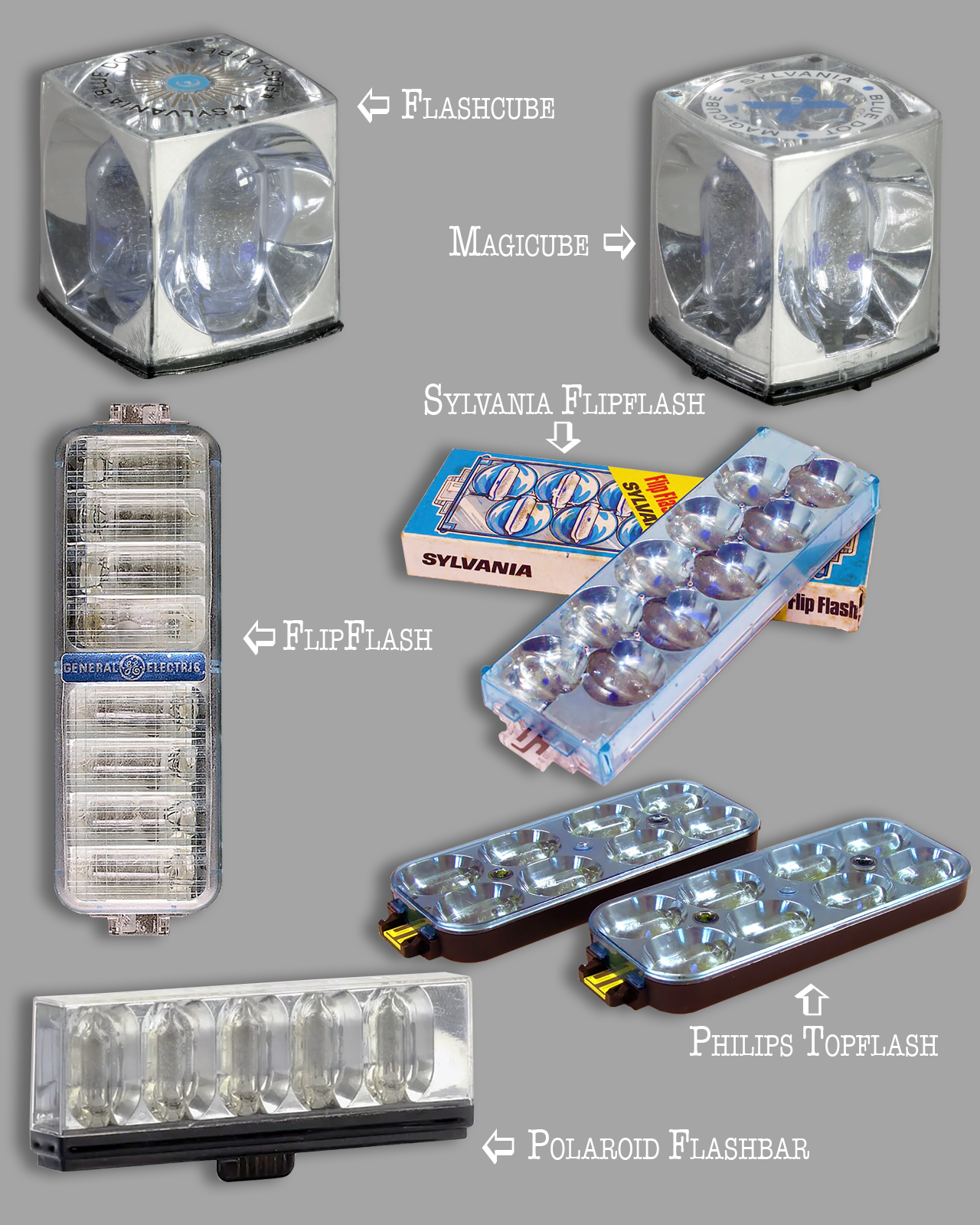
The “relatives” of the flashcube family in one overview. From the oldest development, the Flashcube, to the latest participants, the Flipflash.
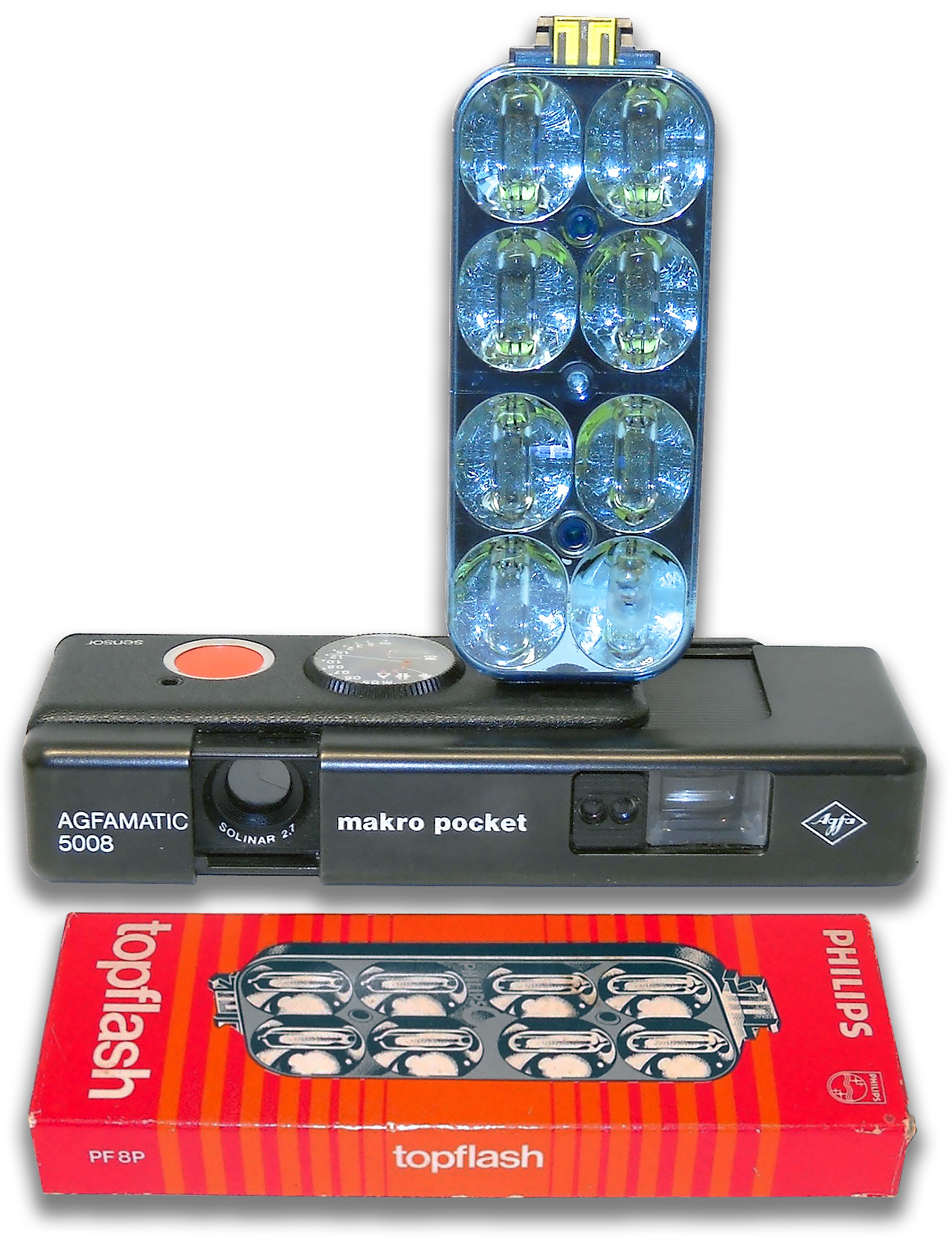
Agfamatic 5008 makro pocket camera, made in Germany, introduced in 1977, with Philips Topflash with 8 bulbs.
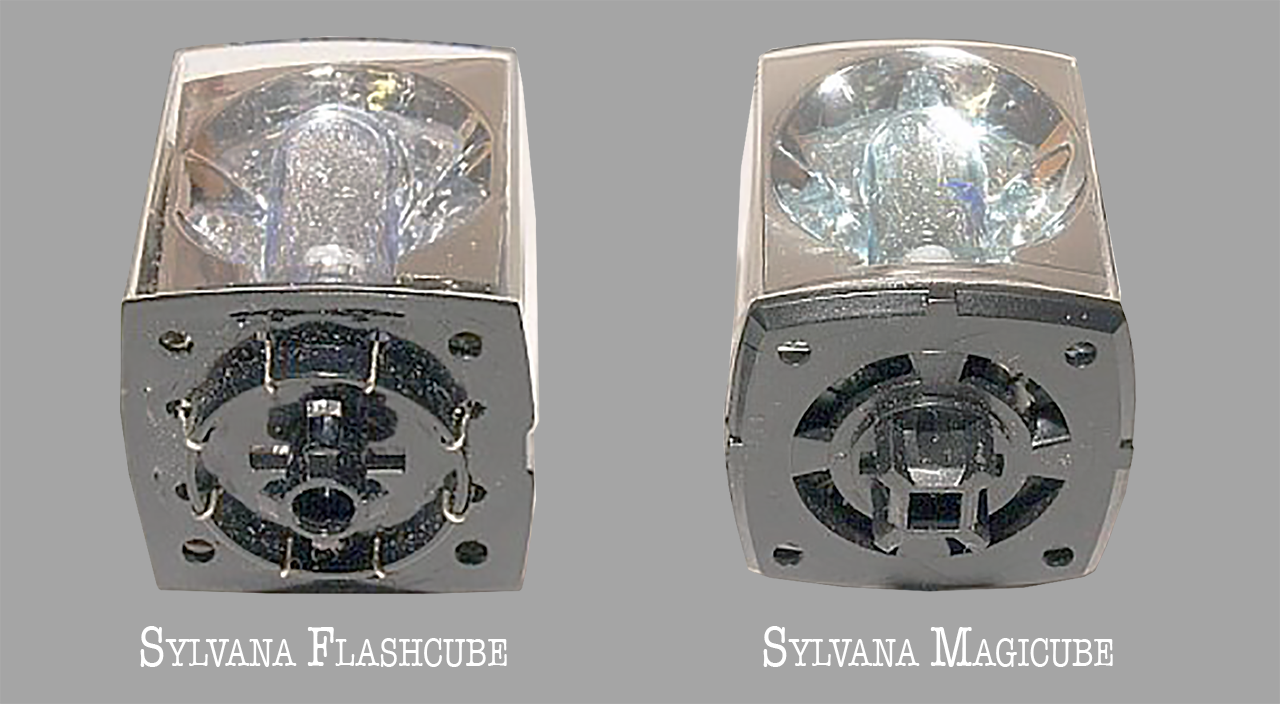
The bottoms of both types of flashcubes were so different in shape that a mistake inserting them into a flashcubeholder was not possible; it just didn’t fit.
INTRODUCING THE fLASH-Family
Flashcubes
Flashcubes, introduced in the early 1960s, had four AG1-sized bulbs, on four sides of a cube, with a plastic reflector behind. The camera had a socket to insert the cube, which would rotate as the film was wound to bring the next bulb to the front. Cubes were fired electrically by lower-voltage batteries than most individual bulbs – use of two AA batteries was common.
Magicubes (X- Flash Cubes)
Magicubes (X-Flashcubes) were an improvement on flashcubes, introduced in 1970. They looked almost identical to the original flashcubes, but were fired mechanically by a small bar striking a pin coated in fulminating material. This simplified the system compared to flashcubes – by removing the need for a battery, and made extremely cheap flash cameras possible.
Magicube sockets appeared similar to flashcube ones, but had a slightly larger slot and were distinguished by being marked with an X – similarly the cubes themselves usually had a large X on the top – and having a pin instead of electrical contacts.
Flipflash
Flipflash featured an array of 8 or 10 bulbs in a flat rectangular arrangement, each bulb placed horizontally, one above the other. When half the bulbs were used, the photographer had to invert the Flipflash – which had a connector on both ends – to use the remainder (hence the name). The camera had a small rectangular socket to mount the Flipflash.
The Flipflash was subject to several patents; to get around these, and to fit their own cameras, other manufacturers arranged theirs differently, and some had other names for the system:
Philips Topflash
Topflash was very similar to Flipflash, but placed the bulbs vertically, two per row in an 2×4 arrangement.
Polaroid Flash Bar
Another Flipflash variation. Flash Bar bulbs were placed vertically, and arranged next to each other horizontally. Both sides had bulbs, the bar being rotated to use the other side.
Sylvania Flip Flash
Flip Flash bulbs were arranged in a zig-zag manner. Sylvania also made a Polaroid bar arrangement.
The history of the Flashcube family
As research and technologies were improving, photographers along the path of evolution of flash used something called a flashcube in the place of flash that we use these days. Don’t confuse them for the Magicubes, as both of these are completely different.
The compact little Flashcubes were developed in the 1960s by Sylvania Electric Products after which Eastman Kodak of Rochester, New York replaced their individual flashbulb technology using single AG1 flash bulbs on their early Instamatic series of cameras to Instamatic cameras readily designed to accept these Sylvania flashcubes in 1965.
A flashcube was a module with four expendable flashbulbs, each mounted at 90° from the others in its own miniature reflector. Each flashbulb in the flashcube is filled with combustible material and its base has a powder filled primer cap. The camera needed to have a special socket to insert these cubes (very similar to how we have a hot shoe these days).
For use it was mounted atop the camera with an electrical connection to the shutter release and a battery inside the camera.
When the shutter is released, a tiny hammer linked to the shutter release mechanism is actuated that strikes the base of the bulb setting off the charge in the primer. The primer in turn fires a flash charge that ignites the combustible mixture in the flash bulb producing a flash of a very high intensity.
After each flash exposure, the film advance mechanism also rotated the flashcube 90° to a fresh bulb. This arrangement allowed the user to take four images in rapid succession. Once all four exposures are complete, the cube needs to be discarded and replaced with a new one.
However, the battery for the Flashcube created more problems (weight, maintenance, corrosion) than simplification in the mostly undemanding compact cameras used for the cube flashes. It was only when Sylvania introduced the second generation of flash cubes, the “Magicube,” in 1970 that batteries were dispensed with.
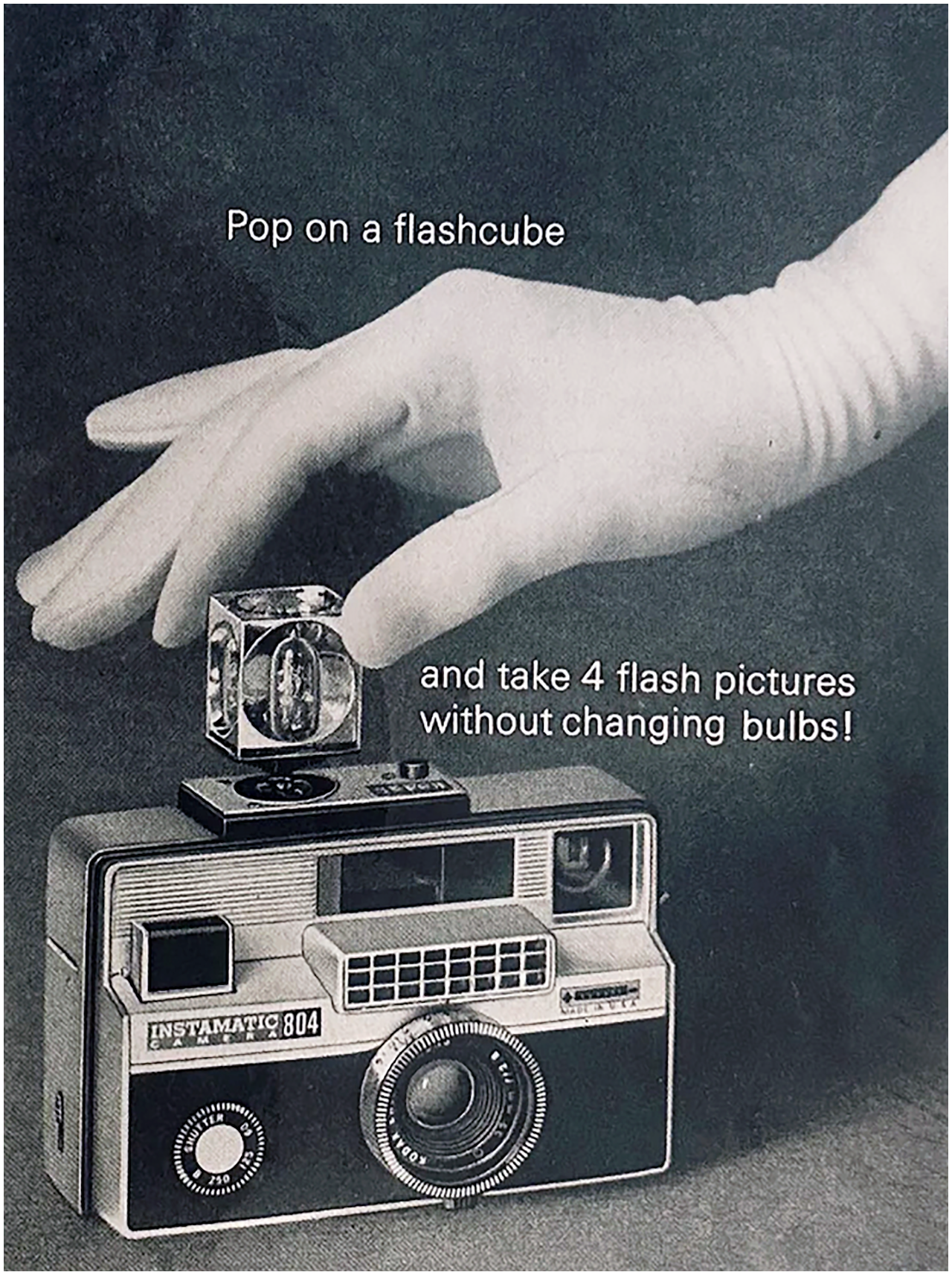
This original magazine ad is from its original 10 x 13″ 1966 magazine page. The ad takes up ± 6 x 13″ of the paper along the righthand edge. It features the latest innovation from Kodak, the miraculous flash cube that allowed you to take 4 pictures before having to change it. Photo has been cropped just to highlight the ad itself.
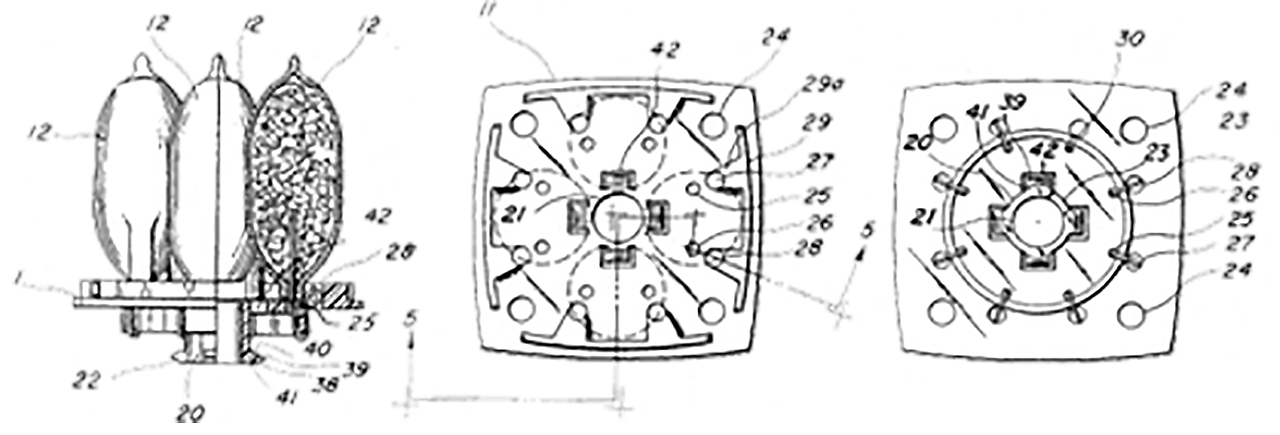
The Flashcube is covered by the patent 3,327,105, published on June 20, 1967. It was filed by Sylvania, an American company from Massachusetts. The inventors are Franklin D. Kottler, Clifford G. Vroom, and Dean M. Peterson.
The Flashcube is a set of four bulbs protected by a transparent plastic cap, designed in the shape of a cube. Under the base of the cube, two metal wires establish contact with the electrical circuit of the camera for each of the bulbs.
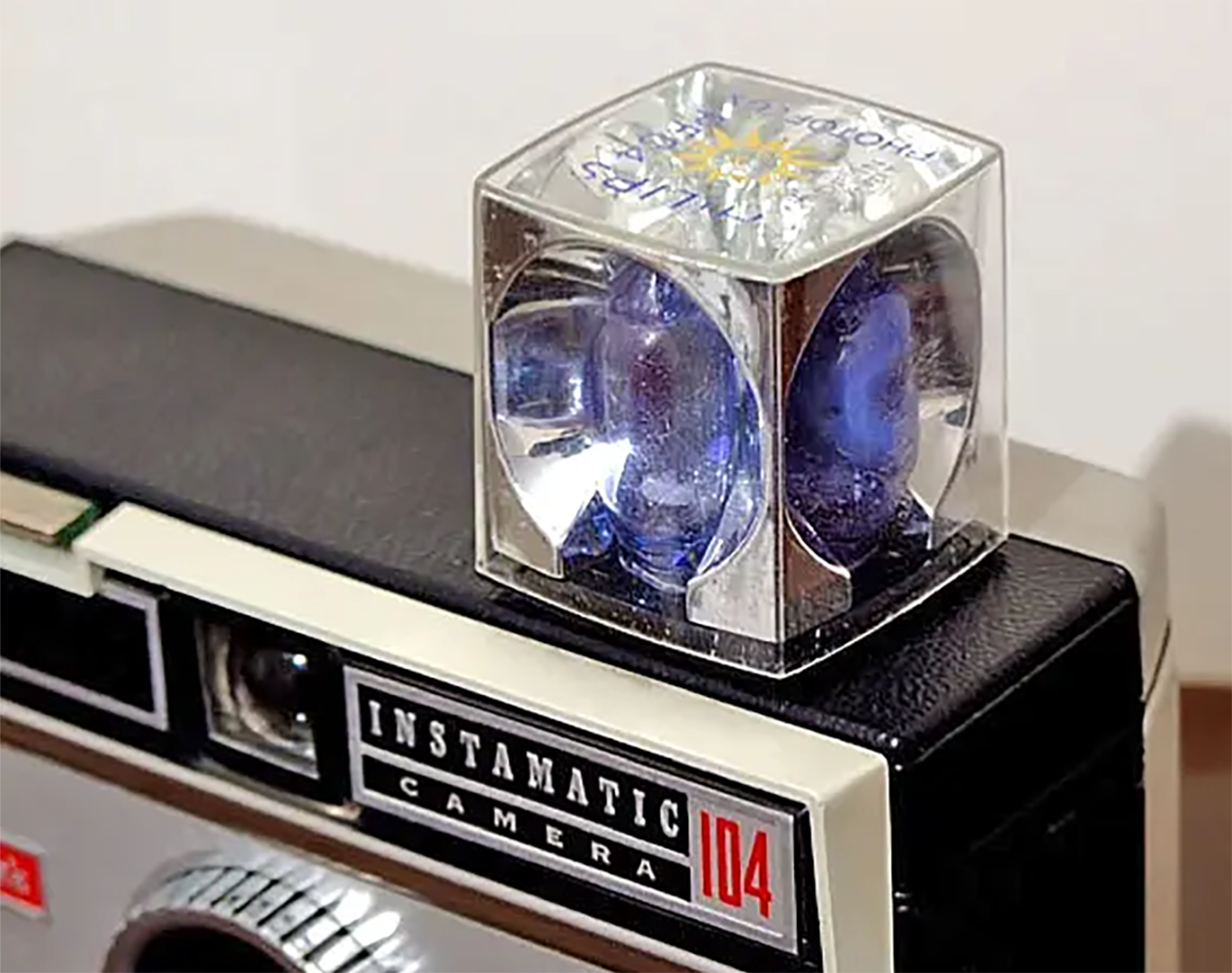
A flashcube fitted to a Kodak Instamatic camera
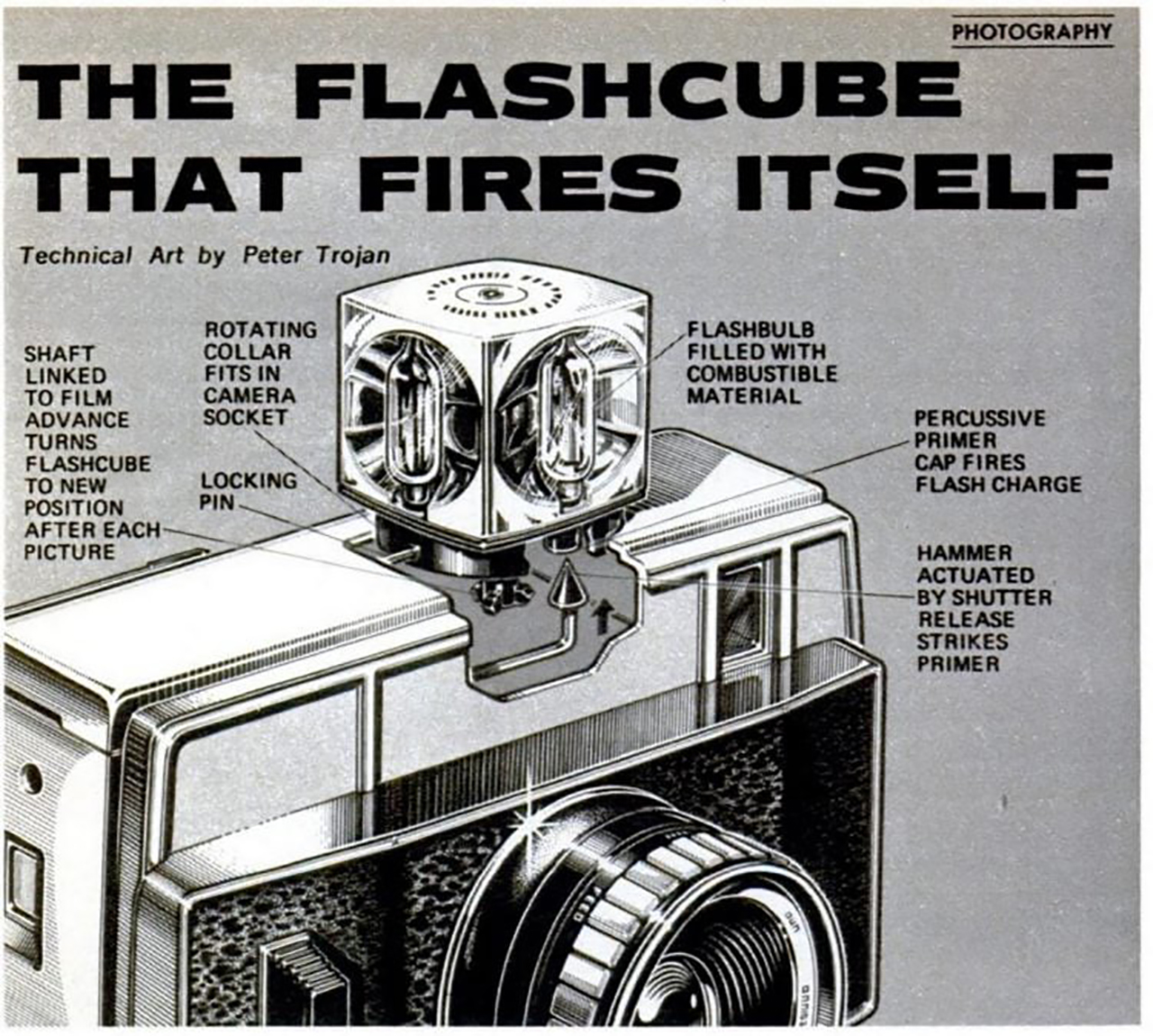
- With this lamp that fires like a cartridge, you can cut your share of the 100 million photos lost to flash failure every year. You won’t have the usual excuse for missing the great flash shot you almost had if you use this new, mechanically fired, four-shot flashcube.
- Sylvania, its developer, claims a fantastic 99.7 percent reliability, for there are no batteries to run down or corrode and no electrical contacts to get dirty. Eastman Kodak has designed a new series of Instamatic X cameras to accept the Magicube.
- Here’s how it works. Each lamp in the four-flash Magicube is ignited by its own torsion-spring system mounted on the base of the cube. This new design is one of the keys to Magicube’s trouble-free performance. One side of the torsion spring at the base of the lamp is formed into a latch, which drops over the viewfinder to warn you of bad bulbs. The other side of the spring is a striker. When cocked, the striker is held by the latch. Because all of the operating forces are within the spring, the energy needed to produce your flash will not noticeably be reduced with age.
- The substance that ignites the flash is similar to that used on the ends of the lead wires in an electrically fired lamp. Located in a metal tube that is hermetically sealed to the lamp, it is fired when the torsion spring strikes the metal tube (like the powder in a cartridge when struck by the firing pin). In turn, it ignites the flash-producing zirconium in the flash lamp.
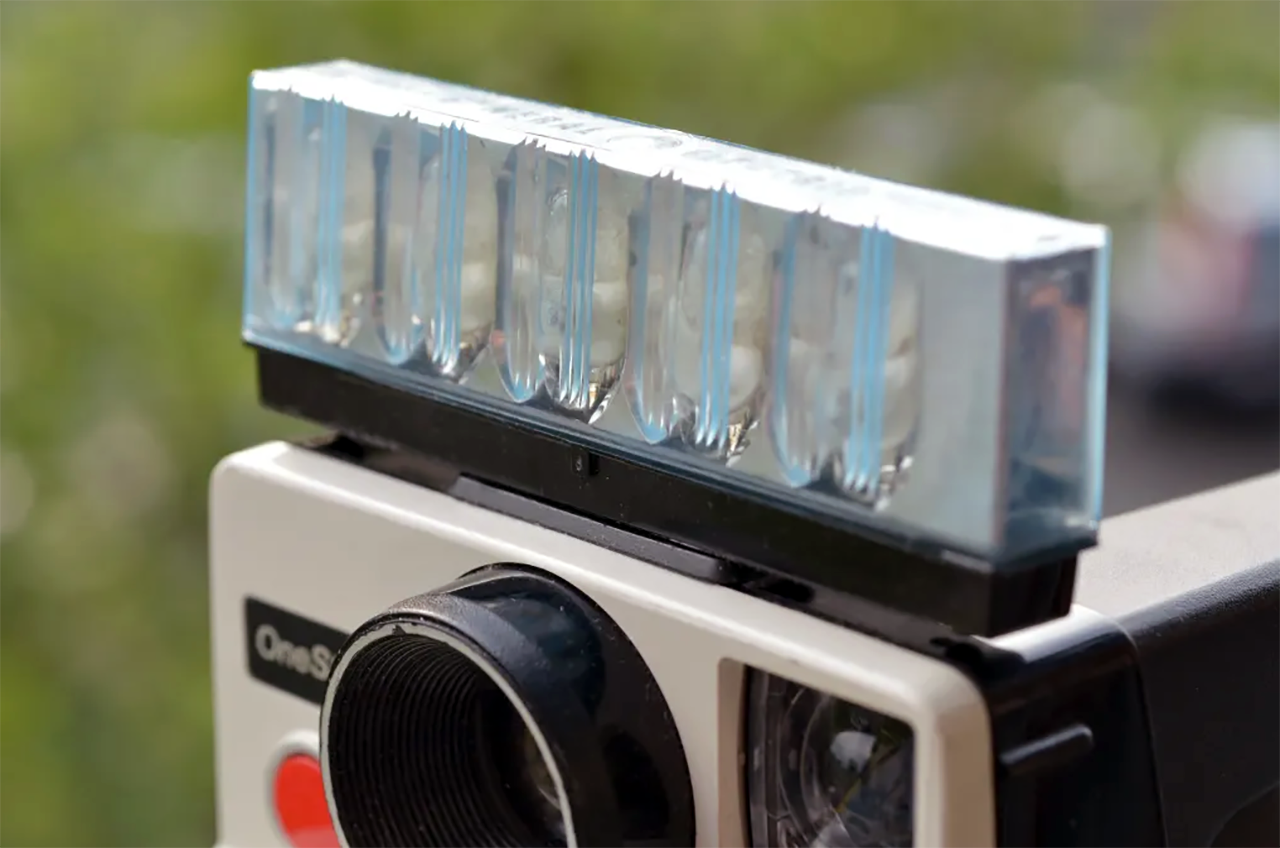
Most of the Polaroid Land Camera bodies all use the same optional flash bar that attaches to the top. The flash bar has ten little bulbs inside of them; one pops each time you take a picture. Literally, the bulb just ups and explodes.
THE SELF-SUPPORTING MAGICUBE
The later Magicube (or X-Cube) by General Electric retained the four-bulb format, but did not require electrical power. It was not interchangeable with the original Flashcube. Namely, Flashcube has a round socket hole whereas the Magicube has a protruding slightly bigger square socket marked with an X.
Each bulb in a Magicube was set off by releasing one of four cocked wire springs within the cube. The spring struck a primer tube at the base of the bulb, which contained a fulminate, which in turn ignited shredded zirconium foil in the flash. In order to fire the flash, a pin in the cube mount released a spring wire into the cube, that struck a pin at the base of the bulb that contained fulminate ions or fulminating material (fulminate ions are unstable ions which salts are friction sensitive explosives). Due to friction caused, they caused a small fire which in turn ignited the zirconium that worked as a flash.
A Magicube could also be fired by inserting a key or paper clip into one of the slots at the bottom of the cube to trip the spring manually. X-cube was an alternate name for Magicubes, indicating the appearance of the camera’s socket.
What Were The Advantages Of Using Flashcubes?
- Since it was considerably easier to mount flashcubes compared to the flash bulbs and fire the shots quickly, flashcubes helped with firing quick sequence shots. If more flashcubes were needed, they could be mounted in very little time without much delay between shots.
- Since the flashcubes advanced automatically along with film advance, there was no need to wait in between the shots. This was a lot faster compared to the previous flash methods.
- Since each flashcube could help with four shots, there was no need to carry a large number of flashbulbs. For example, a 12 exposure roll of film needed only 3 flashcubes.
- But… It was not uncommon for the user to insert a flashcube with the already used flash side facing forward. This often happened at dusk, just when you needed the flash – then the photo was over. Particularly stupid if all four flashcubes were already flashed…
Similar derived systems
After the introduction of the Flashcubes and the Magicubes, various other manufacturers introduced different types of flashes. Other common flashbulb-based devices were the Flashbar and Flipflash, which provided ten flashes from a single unit. The bulbs in a Flipflash were set in a vertical array, putting a distance between the bulb and the lens, eliminating red eye. The Flipflash name derived from the fact that once half the flashbulbs had been used, the unit had to be flipped over and re-inserted to use the remaining bulbs. In many Flipflash cameras, the bulbs were ignited by electrical currents produced when a piezoelectric crystal was struck mechanically by a spring-loaded striker, which was cocked each time the film was advanced.
In 1966 the Cuboflash started the latest evolution of magnesium lamps. Based on 4 AG1 lamps housed in a plastic box, it effectively constituted 4 independent flashes, complete with reflector and safe against explosions, each triggered electrically by a low voltage battery. The Magicube (also called previous ones starting from the 70s, instead provided for a mechanical trigger through a tip that was inserted into a capsule of inflammable material. In this way the system was further simplified. The Flipflashes were made up of a grid of 8 or 10 flash bulbs arranged horizontally in a row.
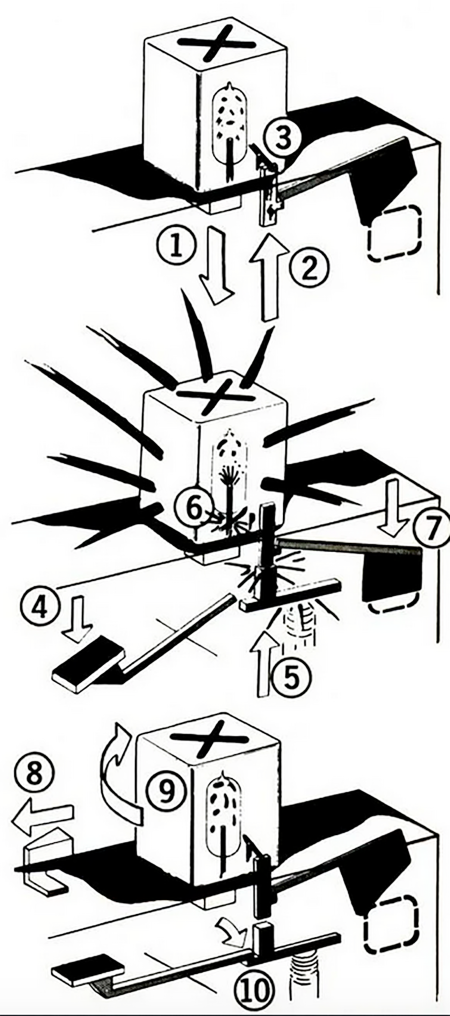
How vintage Magicubes work
When a Magicube is inserted in the camera (1), a probe automatically extends into the cube (2) and feels for the torsion spring (3). If it is there, a fresh lamp is ready for shooting. If it is not, this warning drops into the viewfinder: “Stop — Bad Bulb.”
As the shutter release is depressed (4), the cocking lever releases (5) and drives the probe up to trip the flash-lamp spring (6). The spring impacts the metal tube, igniting the substance which, in turn, fires the zirconium. With the spring gone, the warning signal drops into sight in the viewfinder (7).
As you advance film for the next picture (8), the cube rotates clockwise one step (9). Simultaneously, the probe reaches up into the cube to sense whether the lamp now in position is new or used. Winding the film also cocks the shutter and resets the cocking lever (10).
Slightly larger than Sylvania’s Flashcube, Magicube’s light output is the same, but gives you a more uniform edge-to-edge picture exposure.
twentyfive images of MULTIPLE FLASH SOLUTIONS
Below are a series of examples of, first of all, technical solutions to take multiple flash shots in direct succession with the existing individual flashbulbs.
The overview is then completed with flash units specially designed for the use of flashcubes.
(most of the information taken from https://photobutmore.de)
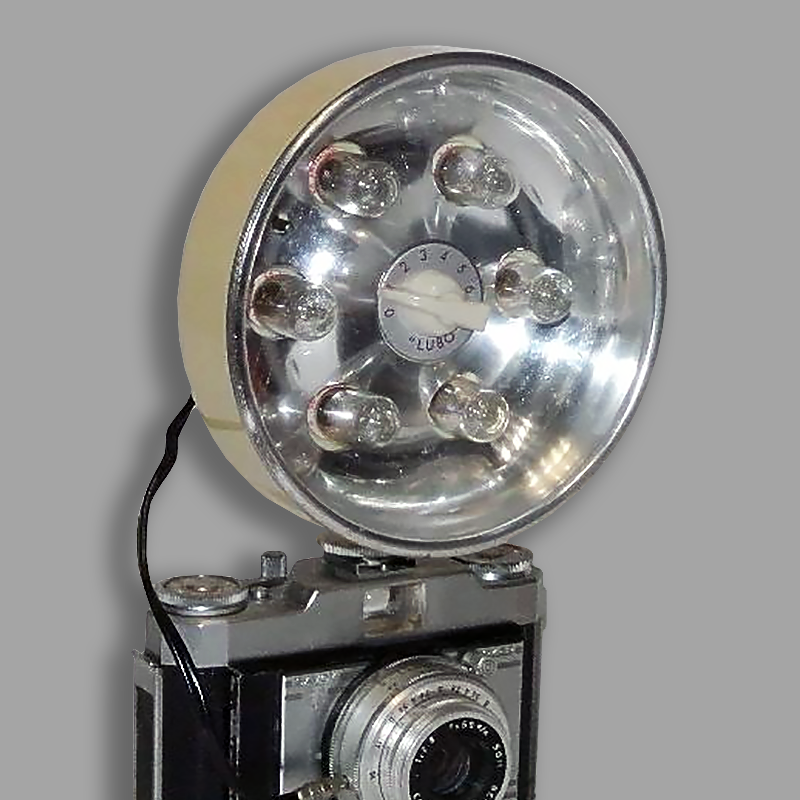
Capacitor flash gun type Beaugers Lubo Hexaflash (model 58) with up to six flash bulbs with glass bases of type XM1, PF1, PF5. It has an ivory-colored plastic housing and a flash reflector (138 mm ∅). An identical model exists with a black housing
Power is supplied by a 22.5 volt battery type IEC 15F20 e.g. Varta 72; Provided with a test trigger button with light signal “switch position 0”; special 200 m.f. capacitor; flashbulb No. 1 (top left) ; flashbulb No. 2 (middle right) ; flashbulb No. 3 (bottom left); flashbulb No. 4 (top right ) ; flashbulb No. 5 (bottom right) ; flashbulb No. 6 (middle left).
- Origin: Paris, France
- Year of construction: 1958
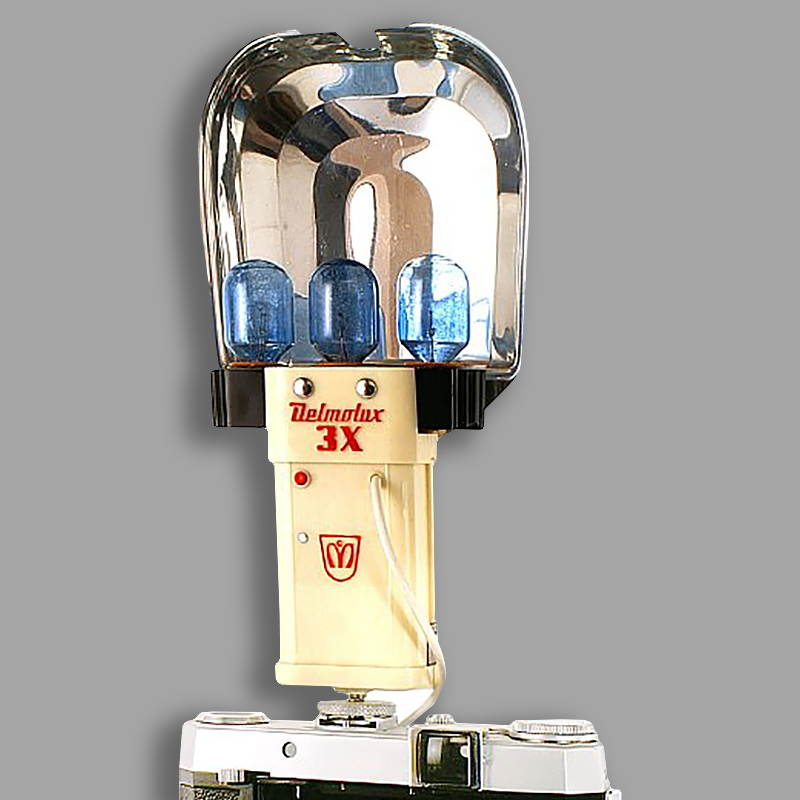
The capacitor flashgun Delmolux 3X from the Montanus camera factory – Potthoff & Co is one of the few “revolver flashguns”, here designed for 3 flashbulbs with a glass base and a silver-plated metal reflector.
In front of the specially shaped reflector there is a movable triple base, which is pushed to the next after one bulb (Osram Vacublitz XM1/XM1B, Philips Photoflux PF1/PF1B or similar) has flashed.
The power supply was provided by a 22.5V anode battery, type Pertrix No.72; The selling price was 24.50 DM including the case.
- Origin: Solingen, Germany
- Year of construction: 1960
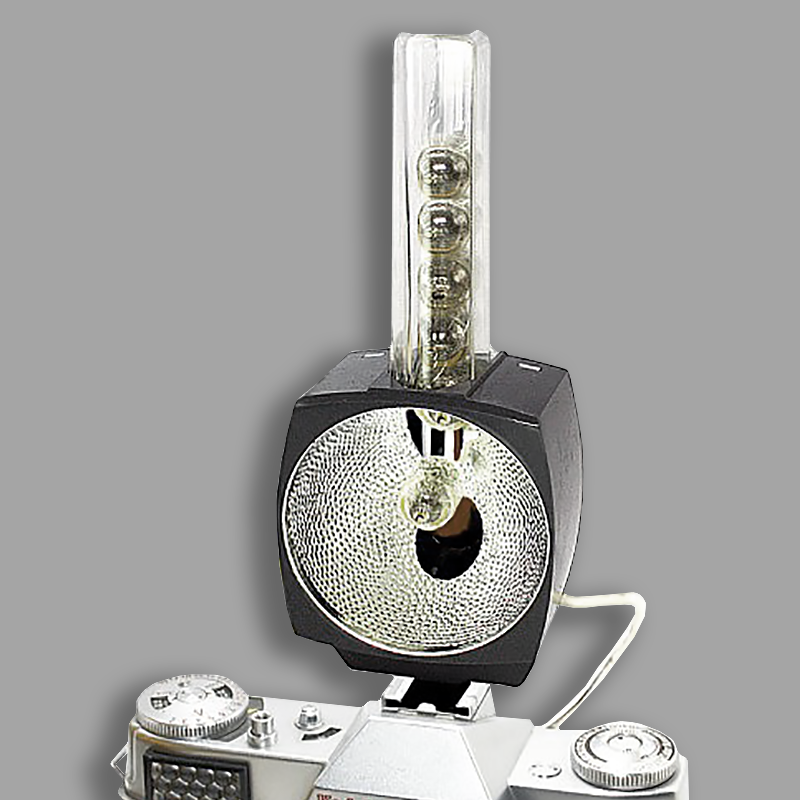
The DUO LUX Quick-Fire was manufactured by Albert Hiller. It concerns a semi-automatic magazine flash unit for 6 AG-1 flashbulbs in a gray plastic housing with an integrated round reflector. After the 6 flashbulbs have been inserted into the Plexiglas magazine, the flash is charged by turning the rotary switch on the back a quarter turn. The burned-out bulb falls out of the reflector through a shaft. One of the few “revolver flash units”.
The power supply was provided by a 15V photo battery (Pertrix No. 74 or similar); The selling price was 24 DM with a case and 1 magazine.
- Origin: Dornstetten, Germany
- Year of construction: 1960
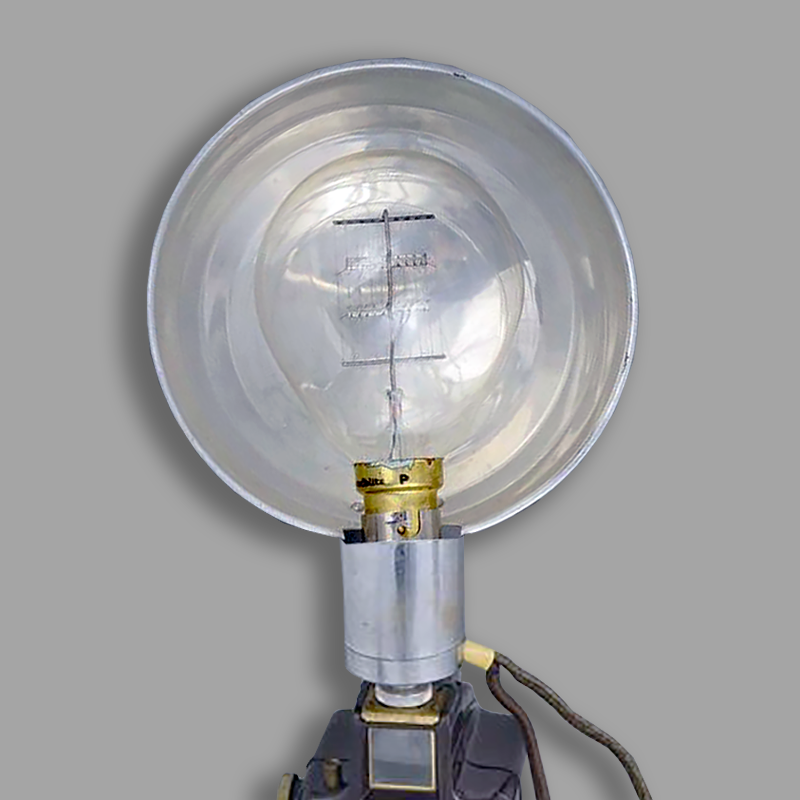
This “Fischer-Tausendblitz” was basically a hybrid of a flashbulb and a strobe. Although easy to handle and relatively cheap to use, it disappeared after a few years. The principle: a special light bulb receives a brief surge in voltage and lights up brilliantly. Since the overvoltage lasts ony briefly, the bulb has a lifespan of ±1000 “flashes”.
Design: Flash unit for 220V ac current or ac/dc current with round reflector suitable for a special flashbulb with E27 thread. The selling price was 65 DM (101/111 alternating current); or 80 DM (201/211 all-power; a replacement lamp cost 25 DM
- Origin: Limburg a/d Lahn, Germany
- Year of construction: 1954
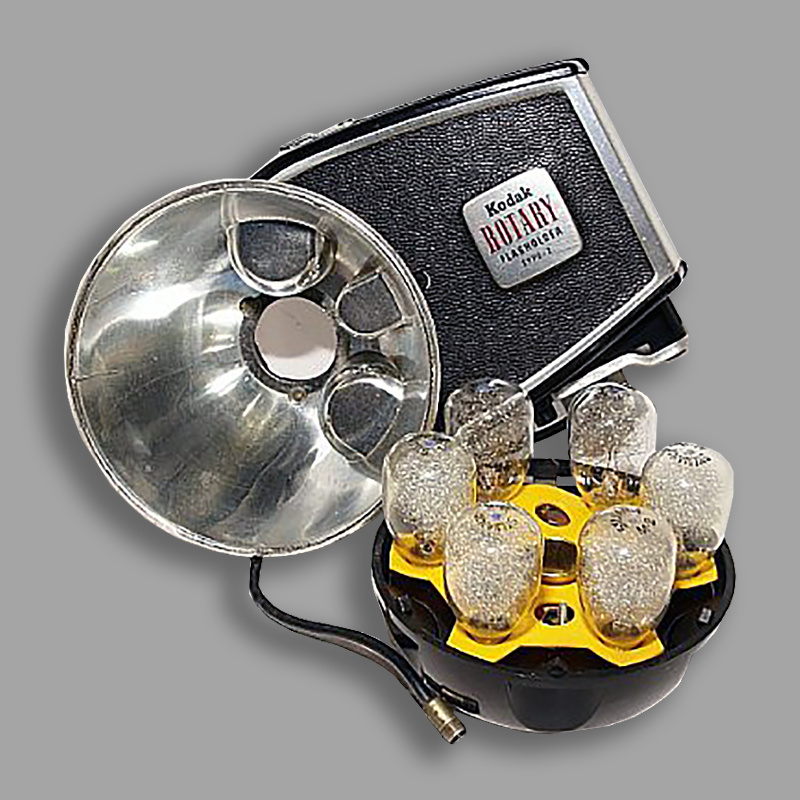
This Kodak rotary Flasholder Type 2 is an unusual revolver flash gun with a black Bakelite housing for 6 flash bulbs. This type 2 has a plug-in shoe for connecting to many cameras; Type 1, which is also available, is equipped with connectors for Kodak cameras. cameras. I guess that it is’nt very convenient to use.
The Flasholder Type 2 is a capacitor flash unit with a mirrored plastic round reflector 9.5 cm Ø. It is suitable for 6 metal base flash bulbs with M2/M3 base. The power supply is provided by a 22.5V anode battery, such as Pertrix No.72. The retail price was $9.95 – $11.95.
- Origin: Rochester, USA
- Year of construction: 1957 – 1960
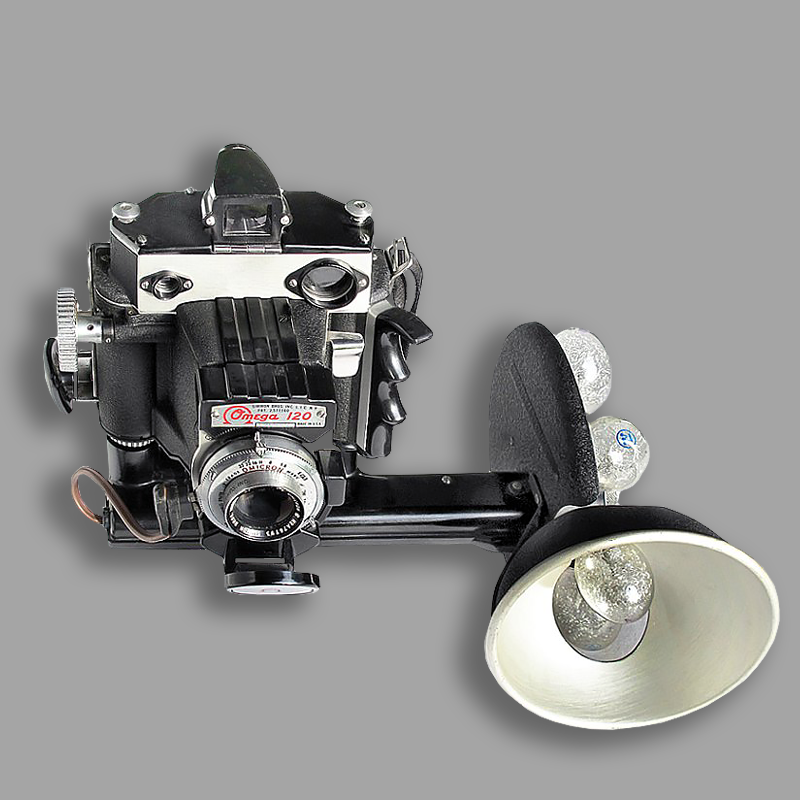
The Omega 120 Revolver Flash Unit is a rare bulb flash. The flash unit was developed to be connected to the professional camera OMEGA 120. This professional 6x7cm press camera was designed for 9 exposures of 6×7″ on 120 roll film.
The Revolver Flash Unit is a capacitor flashgun with a round reflector for 6 metal base flash bulbs with M3 base. The power is supplied via a 22.5V anode battery, such as Pertrix No.72.
It has a rotary system for the bulbs. Camera as well as flash unit were made by Simmons Brothers Incorporated, USA
- Origin: Long Island, USA
- Year of construction: ± 1954
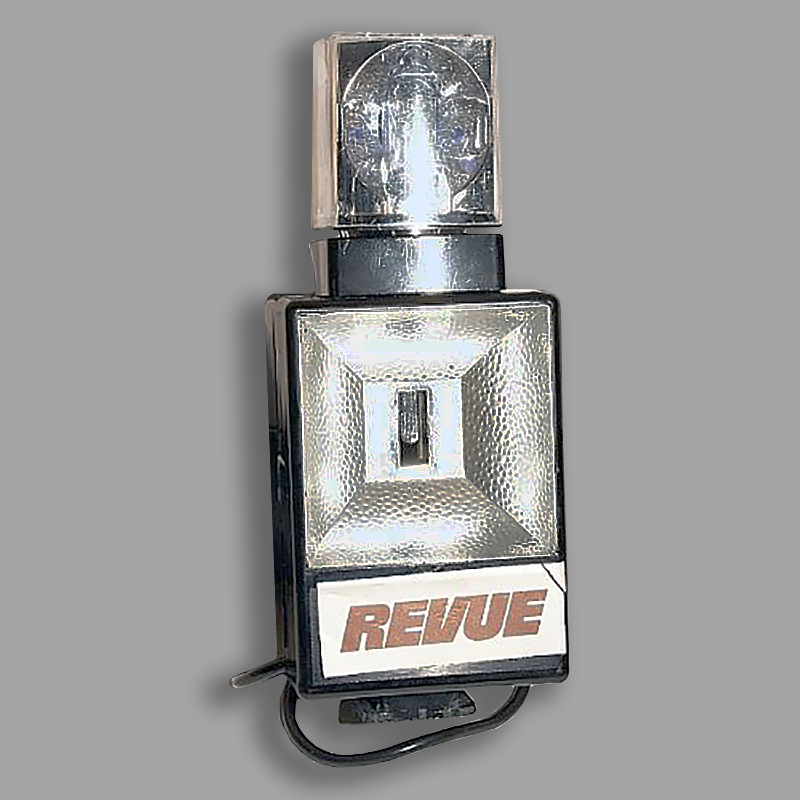
This is a Revue miniature combination capacitor flash unit with two bases for AG-1/3 Flashbulbs and N-Flashcubes, with an integrated silver-plated square reflector (approx. 3.8 x 3.8 cm). An N flash cube base is mounted on the black (or light gray) plastic housing.
The device has both a center contact and a sync cable. To use the center contact, the cable must be plugged into an internal socket after removing the front part of the reflector.
The power supply was provided by a 15 V photo battery; The selling price was not known.
- Origin: Unknown, Germany
- Year of construction: ± 1970
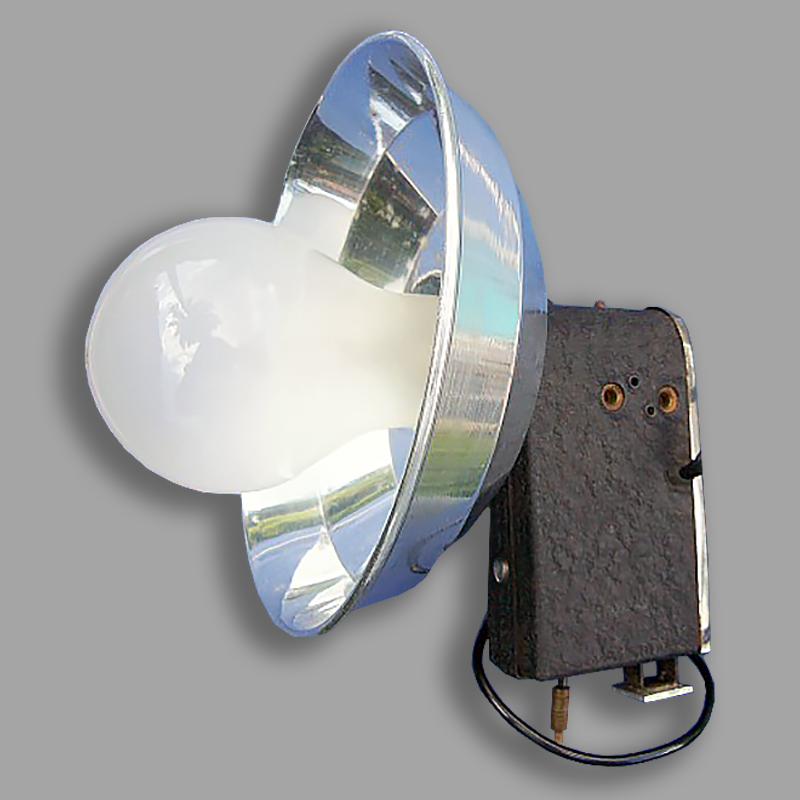
The “UNAL Überall-Blitzer” is a combination of mains and bulb flashgun. A very unusual construction from Austria, perhaps comparable to the previously described ‘Fischer Tausendblitz’. It is a flash unit with a round reflector for 220V alternating current or capacitor operation.
The flash unit requires a special bulb for a 220V mains connection. With a 22.5V anode battery, it also ignites standard flashlights, although these must be used with an E27 adapter. In this operating mode, the power plug is simply plugged into the device sockets. Retail price: 298 öS for the device + 42 öS for the reflector.
- Origin: Unal, Austria
- Year of construction: ± 1952
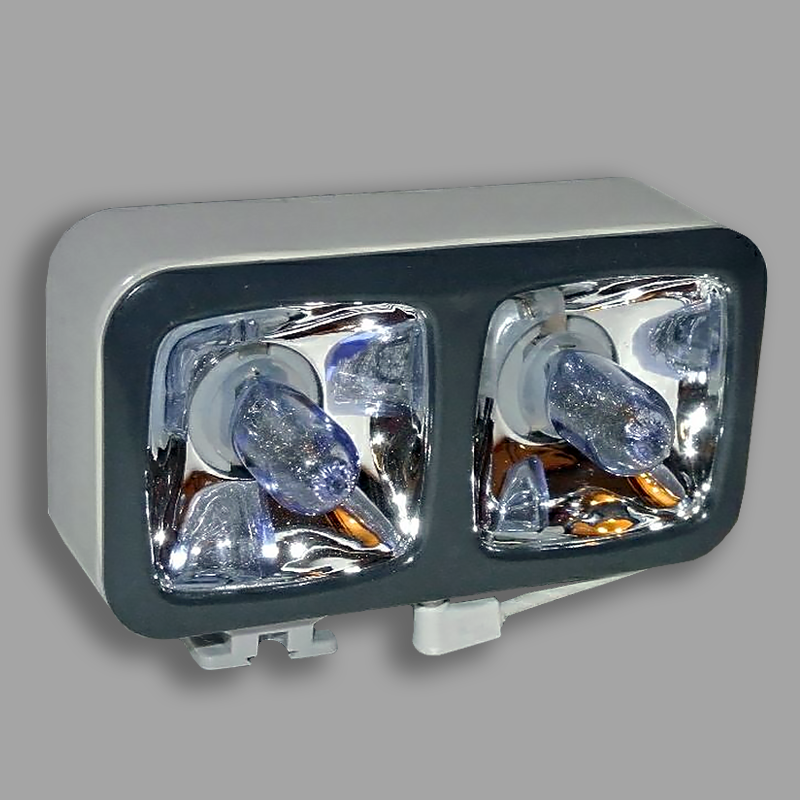
Der Watalux X2 is a Capacitor-Twinflash-Flash Unit from the year 1960 manufactured by Edmund Wateler (Wata), Fabrik Opt.-Fotogr. Products in Braunschweig, Germany.
The device has both a lightning connection with a center contact and a sync cable connection for a PC socket. Power source was a 15 V battery type IEC 10F15 (V74PX); it has a socket for flash lamps of type XM1, PF1, AG-1; Switch on the back: position 1 or position 2 (single flash, left or right side) or straight to position 2 (double flash). The new price of Fr. 24.- (1960) included a PVC case.
- Origin: Braunschweig, Germany
- Year of construction: 1960
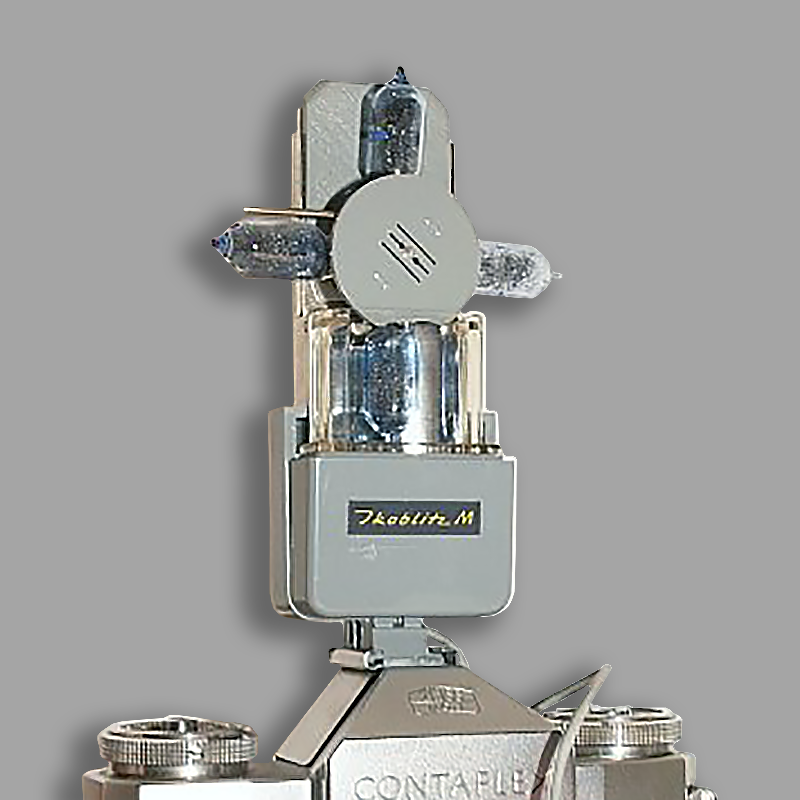
With the Ikoblitz-M, Zeiss offered a capacitor pocket flash unit with an integrated mini reflector, for which there was little comparable in Germany. In a bit more angular housing as the Ikoblitze 4-6, houses a revolver flash for 4 AG1/3 splash bulbs. The important splinter protection cap, is now integrated into the housing and also serves as a container for the splash bulbs when not in use.
The Ikoblitz M was powered by a 15V photo battery, type Pertrix No.74 or similar. The device was available with a standard plug base and in a wireless version with a center contact.
- Origin: Stuttgart, Germany
- Year of construction: 1966-1969
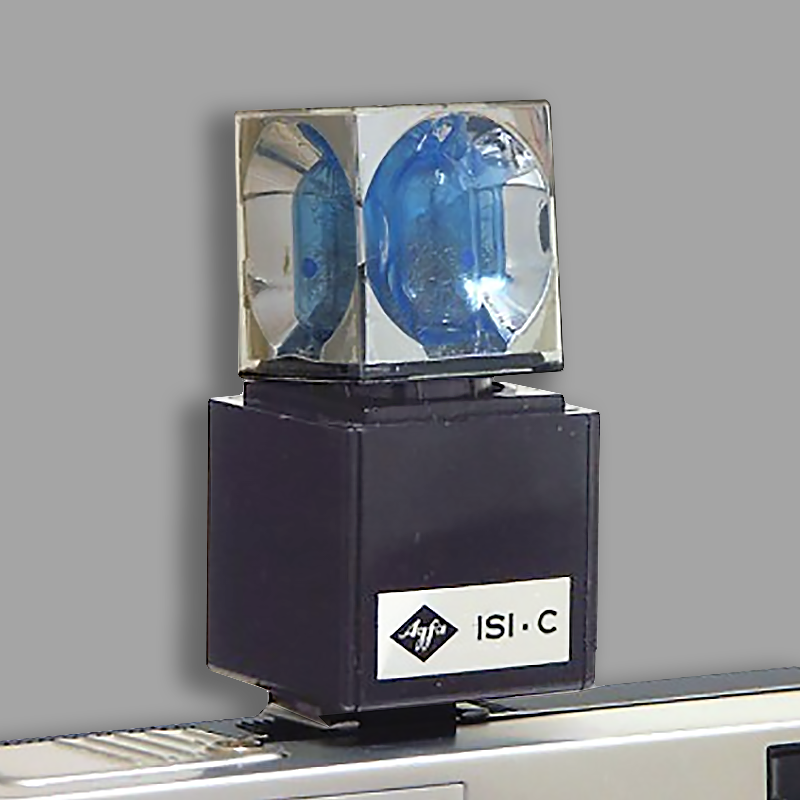
Simple capacitor flash cube adapter Agfa ISI – C for electrically ignited flash cubes. Inside there is a 6 volt battery PX23 / No. 434, which provides the ignition energy. Depending on the version, the adapter has a center contact (type M) or a cable connection (type K). It was mainly used for simple cameras such as Agfa ISO-PAK, Agfa ISO-RAPID 1 or Agfa Isoly IIa.
The flash cube was transported manually by turning it. A 6 V photo flash battery (IEC 4F16, Hellesens 403, Pertrix No. 434 or similar) provided the power supply. The selling price was 10.50 DM including the case
- Origin: Munich, Germany
- Year of construction: 1967/1970
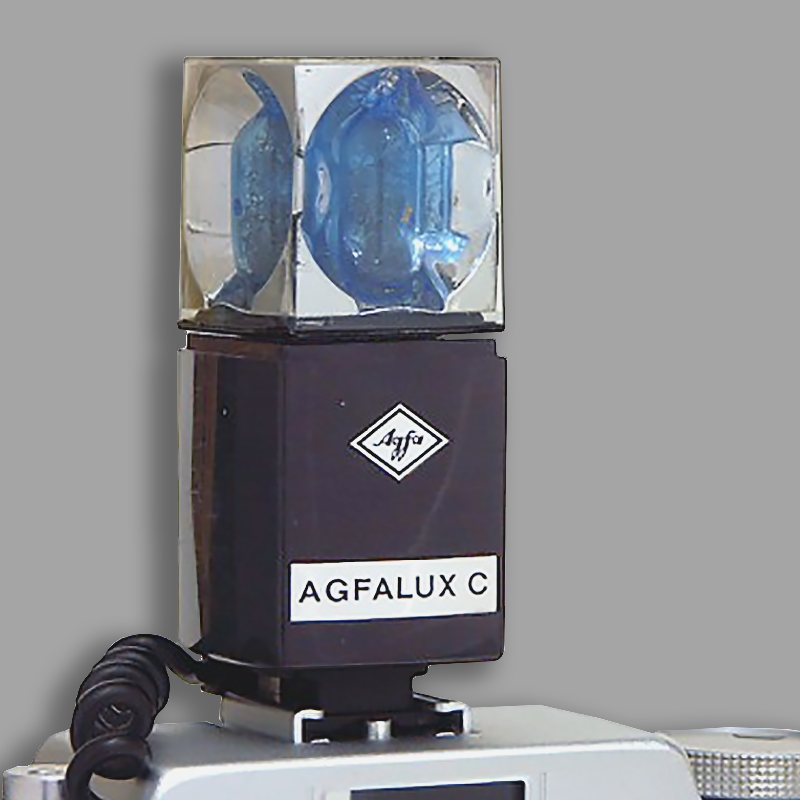
Convenient capacitor flash cube adapter type Agfalux C with test lamp and circuit shutdown for electrically ignited flash cubes. Inside there is a 6 volt battery PX23 / No. 434, which provides the ignition energy. The adapter has two connection options. Center contact (Type M) and PC socket (Type K).
When the flash cube is put on, it is pre-tensioned and after it is triggered, it is automatically rotated further by pressing the small gray button on the side. Flash ready only in the camera’s plug-in shoe. The selling price was 14.80 DM including the case.
- Origin: Munich, Germany
- Year of construction: 1970/1975
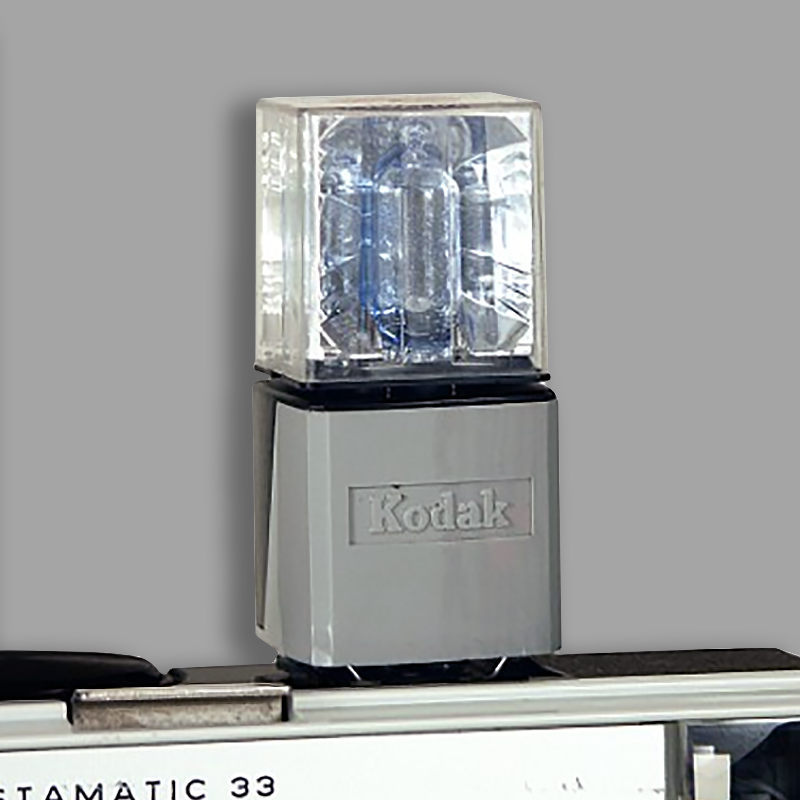
Capacitor flash cube flash unit type Kodablitz 25 for older Kodak Instamatic cameras, for example the Kodak Instamatic 25 or Kodak Instamatic 33.
It cannot be attached to cameras with a normal hot shoe on top because this device has a very special flash base that was only used by Kodak in its cameras.
Electrically ignited flashcubes are used in this device; the necessary batteries (3 volts – Varta V825PX) are located in the compact device base.
With this Flashcube a flash range of 1.2-2.7 m can be used.
- Origin: Stuttgart, Germany
- Year of construction: 1965
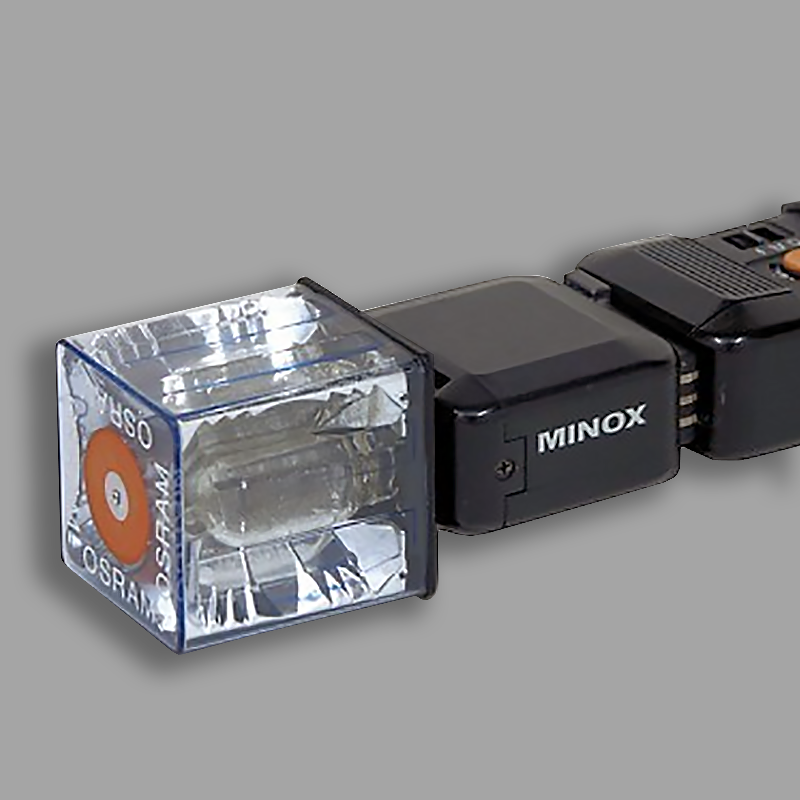
Similar designed compact flash unit type Minox FE-4 manufactured by Minox GmbH, Giessen in 1981 for connection to the Minox EC and for the use of electrically ignited N flash cubes.
The flash unit is clamped to the side of the camera. To remove the flash unit, press the two small buttons at the back in the recess of the flash unit.
The power supply for igniting the flash cube is provided by the camera’s 5.6 V photo battery No.434/PX23. The connection with the camera is made using the special Minox EC connection.
- Origin: Gießen, Germany
- Year of construction: 1981
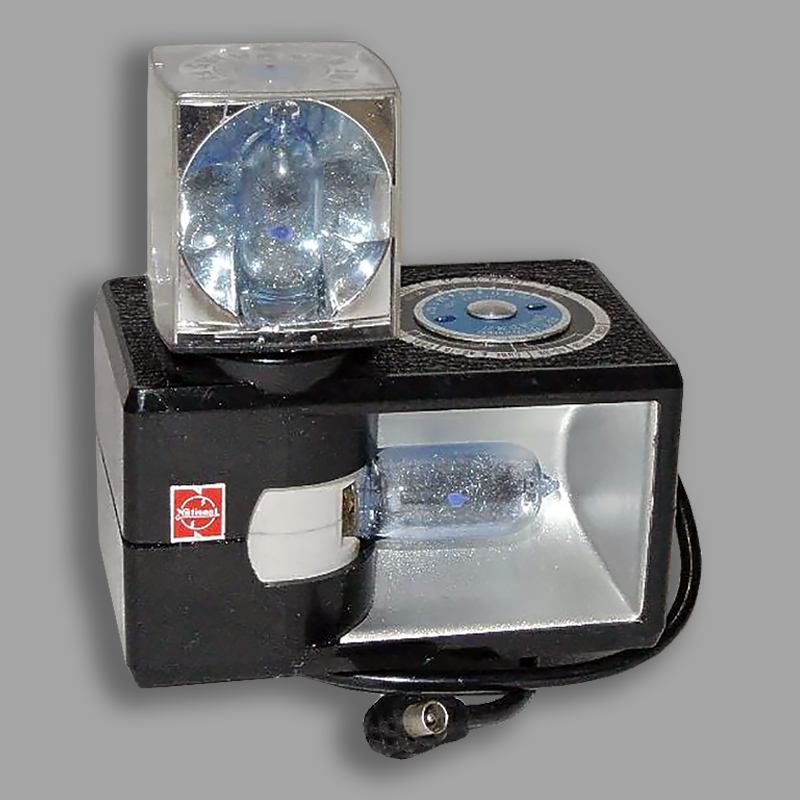
This is a combination capacitor flash unit type National Triple Flash Gun PL-7 manufactured by Matsushita Electric Trading Co., Ltd. It can flash with either just one flash cube or an AG 1B/AG 3B flash lamp, or it can flash both at the same time (flash cube and flash lamp).
The power supply is provided by a 15V battery type IEC 10F15 e.g. Ucar No. 504. It also has an aperture calculator on the top.
The button for the lamp ejector also rotates the flash cube 90 degrees. The device also has a test button and a test lamp.
- Origin: Osaka, Japan
- Year of construction: 1967
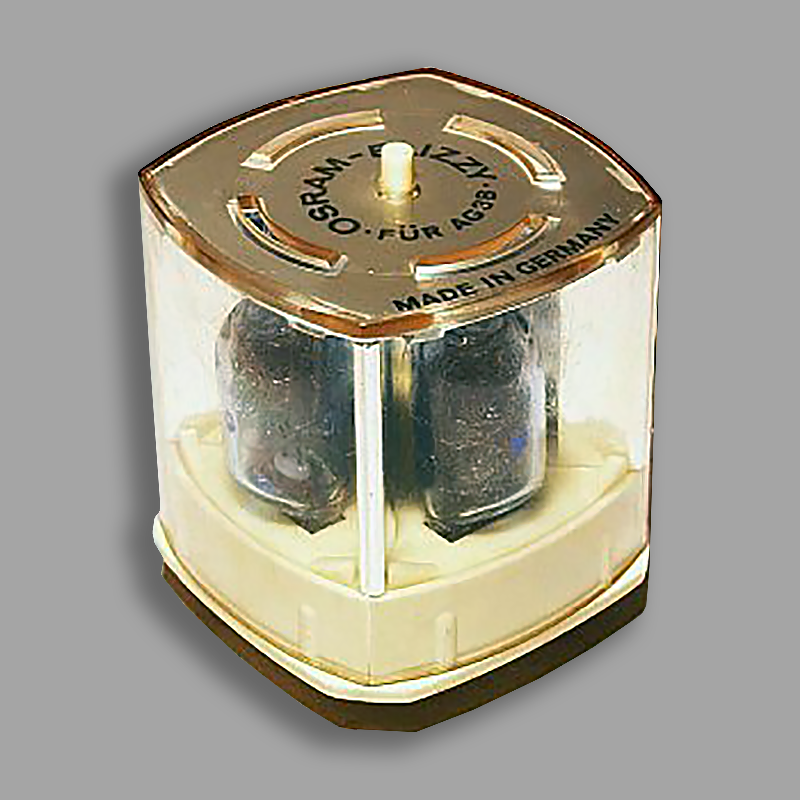
Osram Blizzy-N-Type cube flash adapter with Flashcube connection for four AG3B flashbulbs. With this holder you could build your own flash cube; it is equipped with 4 AG flash bulbs, which are removed after use.
To ignite it – like the AG flash lamps – it requires power from an N flash cube holder or a camera with a flash cube base and built-in battery.
This adapter resulted in cost savings compared to commercially available cube flashes, which cost 1.90 DM at the time. An AG3B flash lamp, on the other hand, was available for just 0.40 DM.
- Origin: Munich, Germany
- Year of construction: 1970/1975
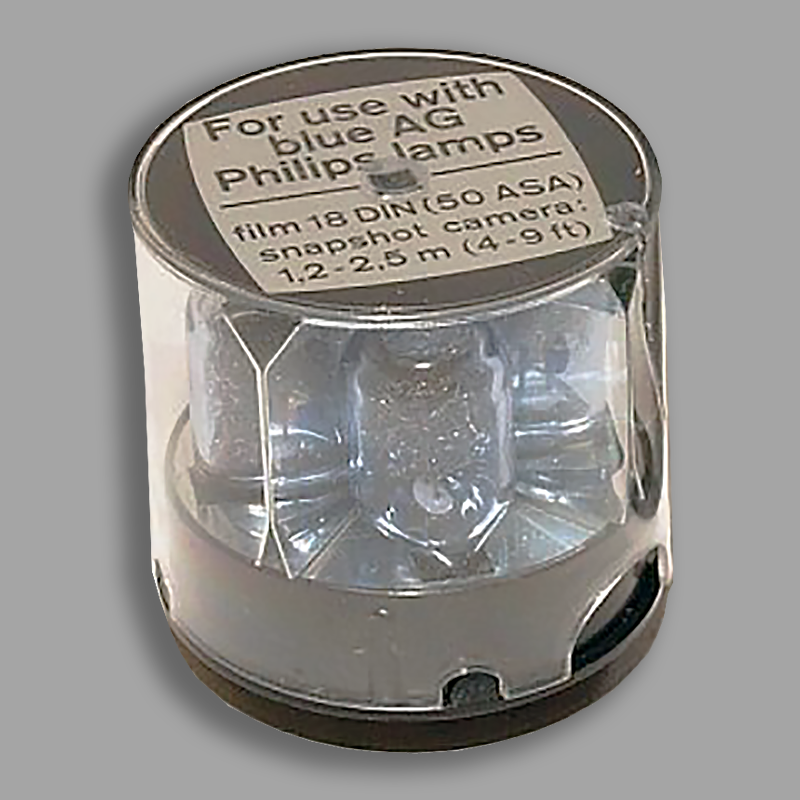
Philips – N-Type flash bulb holder for four AG3B flashbulbs with Flashcube base (like Osram Blizzy) as a cube flash replacement. With this holder you could build your own flash cube; it is equipped with 4 AG flash lamps, which are removed after use. To ignite it – like the AG flash lamps – it requires power from an N flash cube holder or a camera with a flash cube base and built-in battery.
This adapter resulted in cost savings compared to commercially available cube flashes, which cost 1.90 DM at the time. An AG3B flash lamp, on the other hand, was available for just 0.40 DM.
- Origin: Hamburg, Germany
- Year of construction: 1970/1975
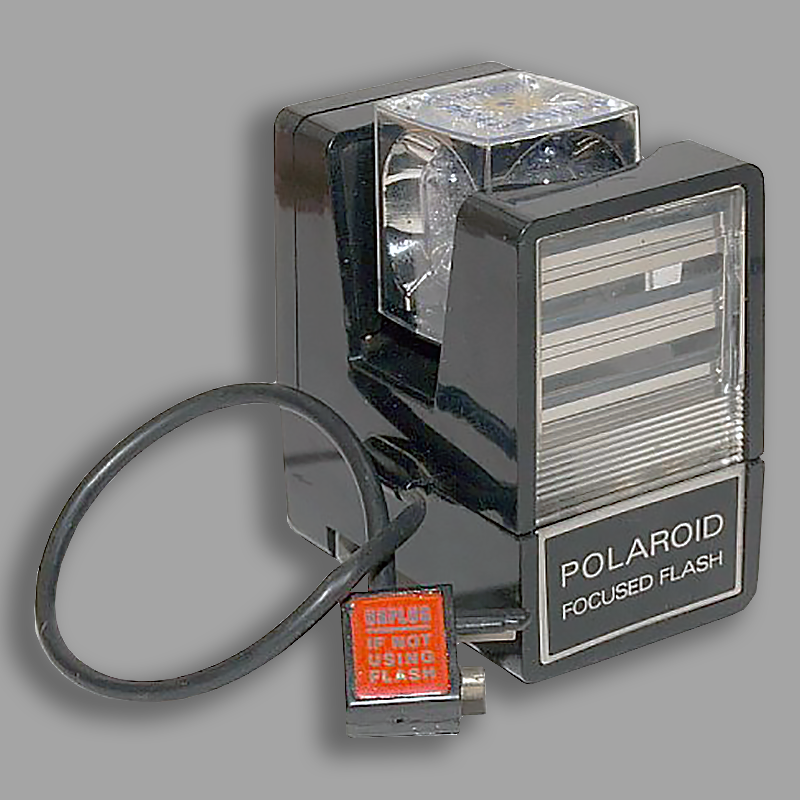
Special Polaroid Focused Flash Model 490 – Flash base for N-Flashcubes with special shoe and cable connection for Polaroid cameras (400 series).
Year of construction: 1974, selling price not known.
The elaborately constructed cube flash holder has a kind of blind on the front with which the flash intensity can be influenced. There is a slider (darken/lighten) on the back.
On the side there is a lever for flash switching. Power supply: none (the flashcubes were powered by the camera).
- Origin: The Netherlands
- Year of construction: 1974
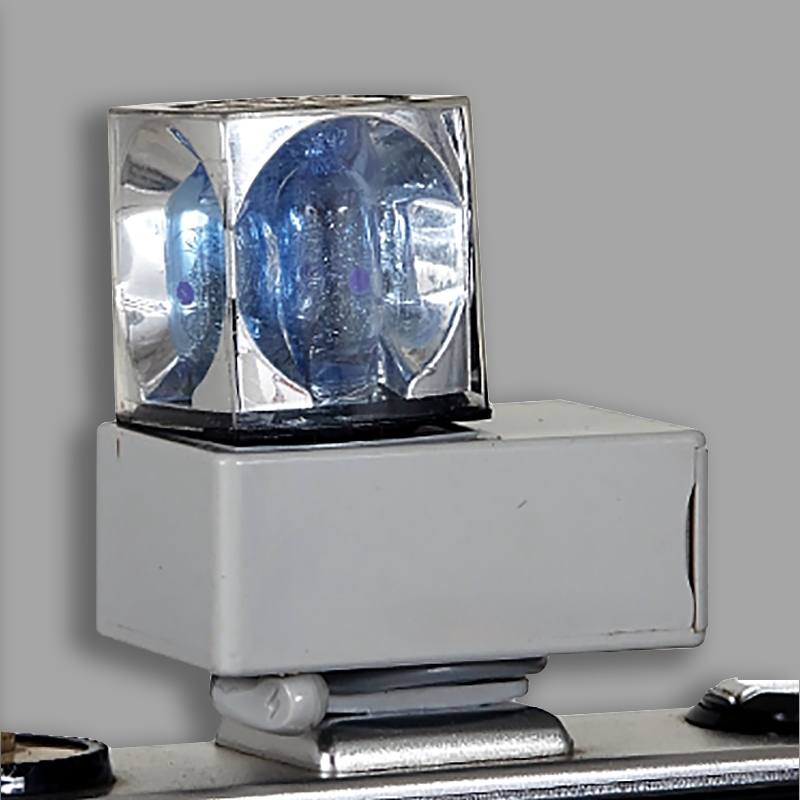
Compact Revue flash cube adapter for electrically ignited N-flash cubes. Inside there is a 6 volt battery PX23/No. 434, which provides the energy necessary for the ignition.
The adapter has a center contact and also a cable connection, so it can be used with all kind of cameras.
This device was manufactured between 1967 and 1970 by the company Wilhelm Schmidt KG from Calw, better known as the manufacturer of the Ticky Flashguns. The original name of this device was “Ticky Sol”.
- Origin: Fürth, Germany
- Year of construction: 1967 – 1970

Compact Rollei A-110-BWG flash unit for connection to the Rollei A 110 for electrically ignited N flash cubes.
The flash unit is clamped to the side of the camera and can remain there due to its size.
This device was manufactured between 1974 and 1981 by Rollei – Fototechnik, Braunschweig.
To remove the flash unit, press the orange button. When not in use you can close the lid. The power supply for the ignition is provided by the 6 volt battery PX23/No. 434 in the camera.
- Origin: Braunschweig, Germany
- Year of construction: 1974 – 1981
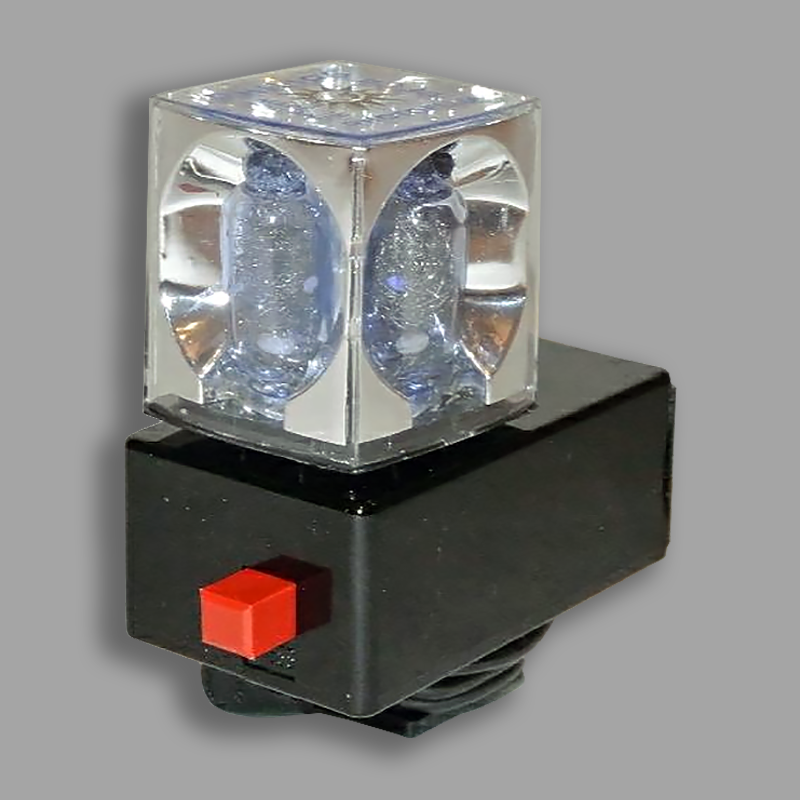
Compact Tickysol capacitor flash unit for electrically ignited N-flash cubes. Inside there is a 6 volt battery PX23/No. 434, which provides the energy necessary for the ignition.
Suitable for cameras with center contact and for cameras with cable contact. Powered by a 5.6V battery type IEC 4F16 e.g. Mallory PX-23, Ucar EPX-23, Duracell PX23 (replaces 6V mercury battery e.g. Varta Petrix 434).
The device has a black plastic housing with an aperture table on the back. The new price was DM 13.80 (1967) with case.
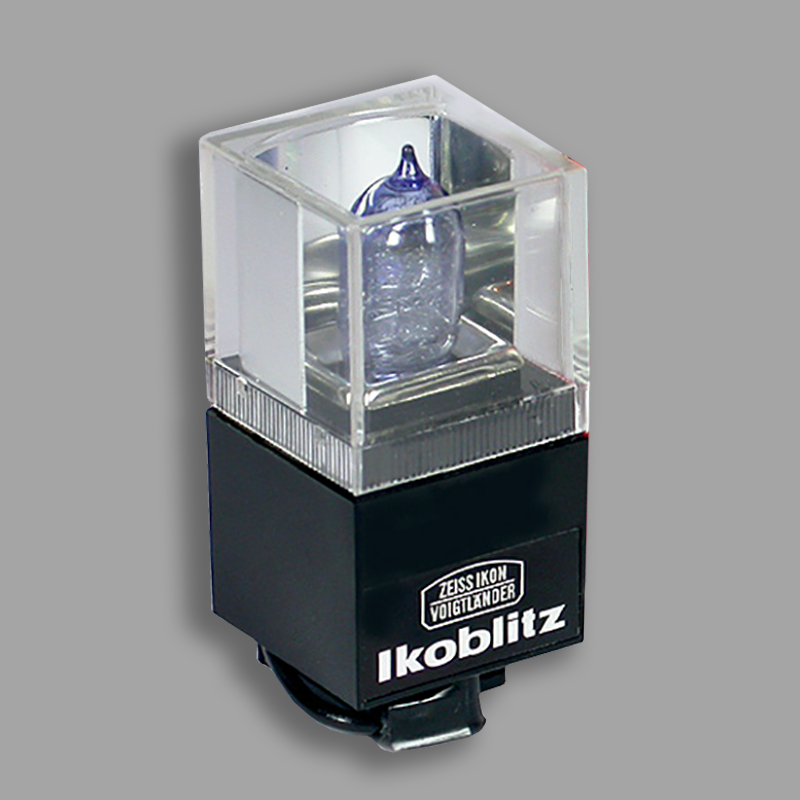
Compact Zeiss Ikon/Voigtländer Ikoblitz A flash unit for flash bulbs AG 1 and AG 3, 1969. There were two versions of the Ikoblitz A, one with a center contact (type M) and one for cameras with a PC socket (type K).
The dimensions of this flash unit are extremely compact, making it the ideal companion. The 6 V PX23/EPX23 battery required for ignition is located on the back of the flash unit.
The small flash unit can be attached to the camera strap with its quiver, so the user always has a decent number of flash bulbs with them.
- Origin: Stuttgart, Germany
- Year of construction: 1969

General flash extender for X-Flashcube/Magicube manufactured for Photo Porst in Hong Kong. Magicube-X flash cubes mounted directly on the camera cover plate produce the well-known “red-eye effect” when taking photos of people, especially with pocket cameras. To avoid this, the flash cube must be positioned higher. This flash extender for X-Flash Cube/Magicube largely prevents the red-eye effect. The new price in 1978 was DM 6.00.
Only suitable for X-Flash Cube/Magicube . Type N/Flashcube flash cubes (electrically ignited by battery) CANNOT be used.
- Origin: Hong Kong
- Year of construction: 1977
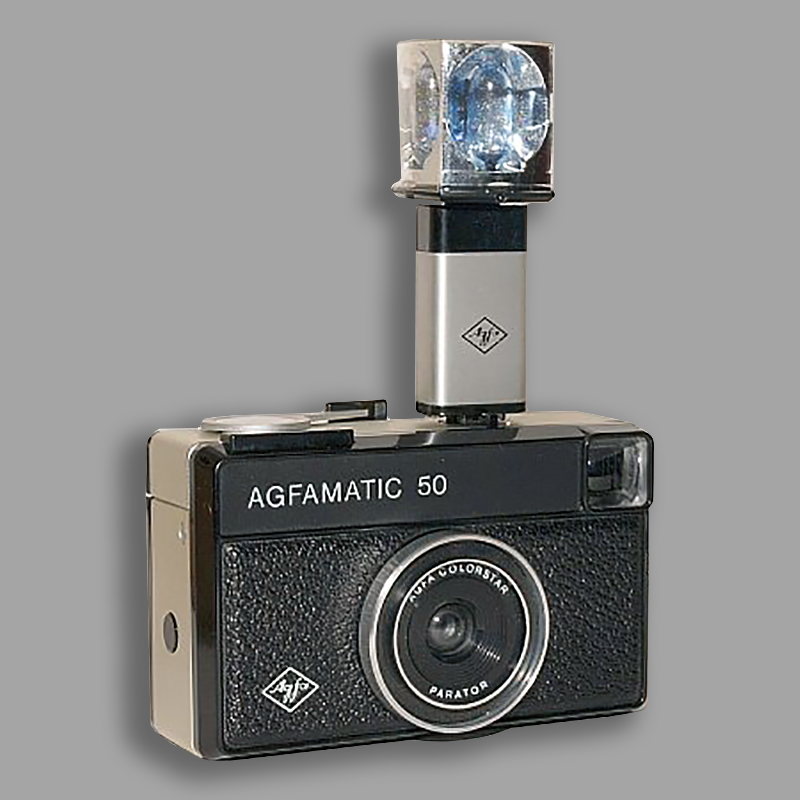
In 1973 the first Agfa camera for 110 pocket film was released. It was the Agfamatic 2000 pocket sensor and with it this flash cube extension came onto the market.
Since the flash in these cameras is on the same optical axis as the lens, the person being photographed had red eyes. The Agfa extension shaft largely alleviated the problem.
Bear in mind that the shaft was only suitable for the mechanically-ignited X-Flash Cube/Magicube . Type N/Flashcube flash cubes (electrically ignited by battery) CANNOT be used.
- Origin: Munich, Germany
- Year of construction: 1973
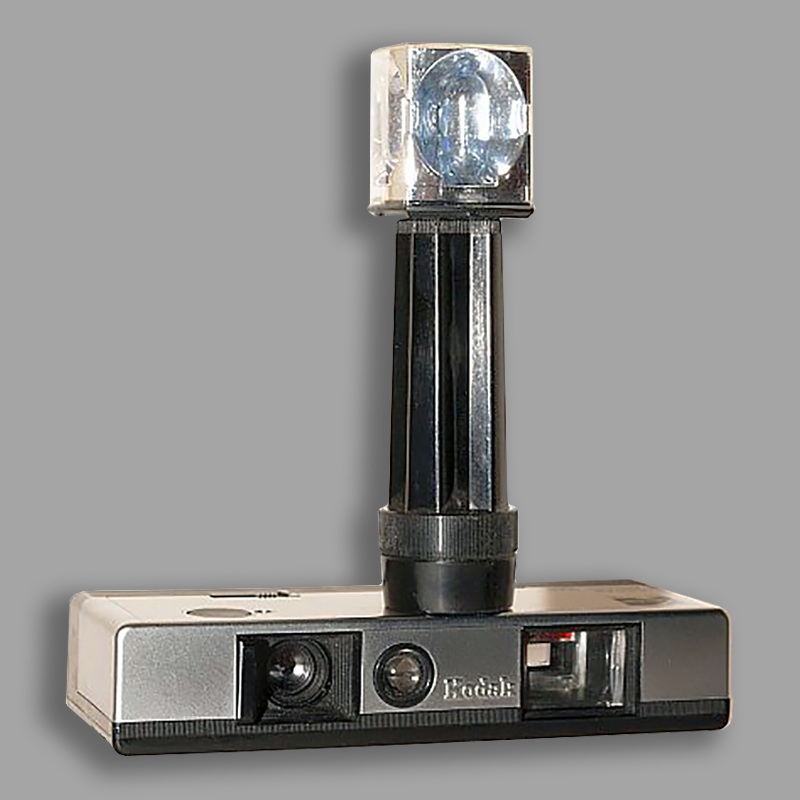
Together with the market launch of Pocket cameras with the 110 cassette film from around 1974, the well-known “red-eyes effect” arose. This effect arises when one looks directly into the camera when taking pictures with flash. To do this, the flash light has to hit the eye of the same as the flash, so near and at the same height on the lens. The retina of the eye reflects the strong flash as a red light; the red-eyes effect is created.
To avoid this, accessories were available to position the flash cube higher than the top of the camera. The photo shows such a extension shaft of Kodak.
- Origin: Rochester, USA
- Year of construction: 1974
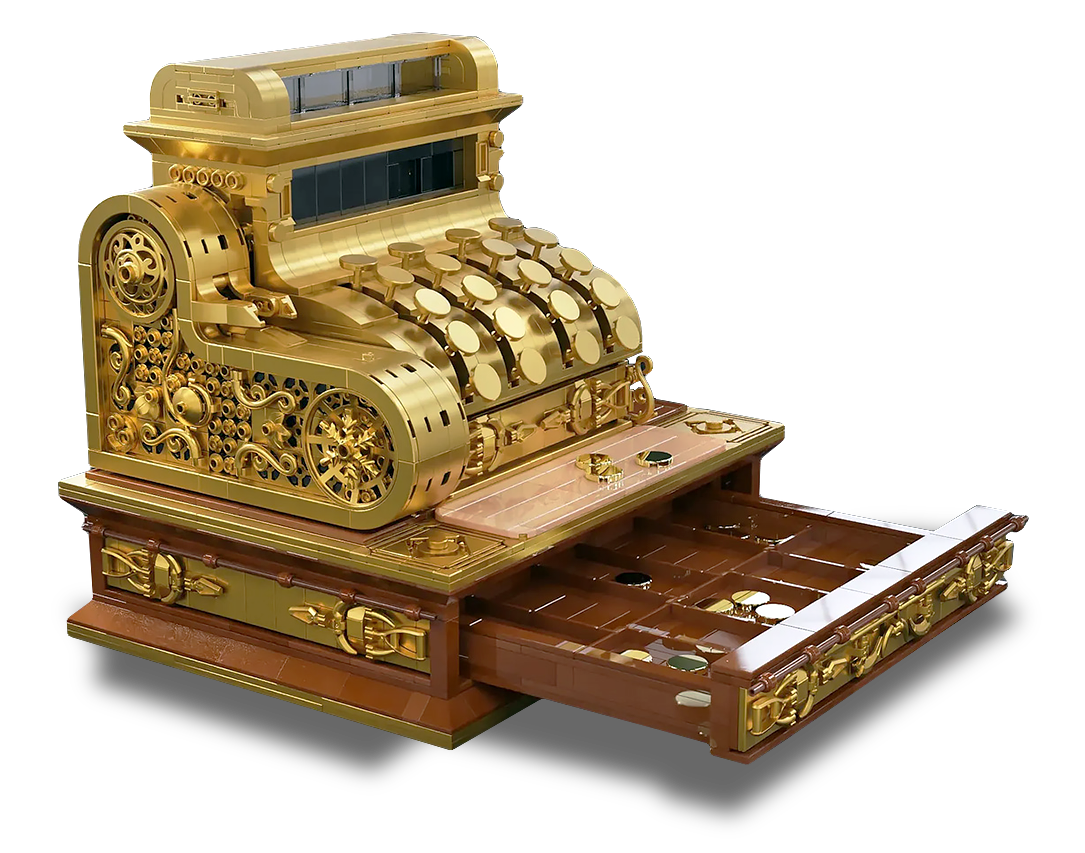
In the case of price comparison, the purchase price of an electronic flashgun is of course much higher than the purchase price of a bulb flash, but in use, the electronic flash turns out to be much cheaper. Count out your profit.
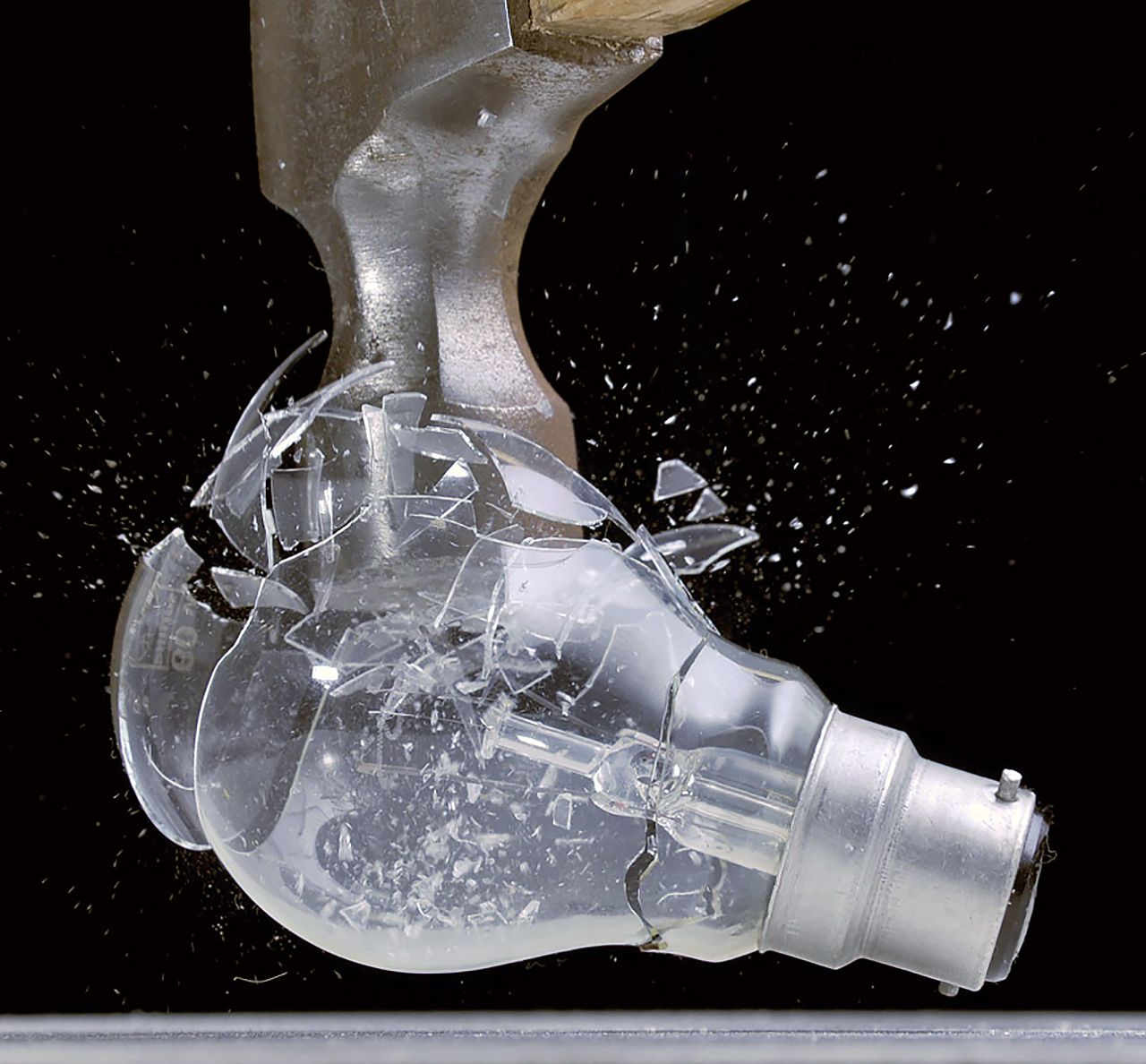
An example of the “explosion photos” that were so popular at the time of the introduction of the electronic flash. Although, a stroboscope was probably used for lighting in this shot and not an electronic flash.
Group 5
electronic built-on flash guns
The major difference between expendable bulbs and electronic flash, is that whereas a bulb may only be used once, in the electronic variety it can be used for many thousands of flashes. It is a sobering thought that although an electronic flashgun may cost you from £15 to £50, the bulb itself being a very expensive item indeed, its life is no more than about 20 seconds. This may not sound much, but when you reflect that each flash occupies only 1/1000 sec., it becomes obvious that a flash tube will give approximately 20,000 flashes before it is finished.
Another important difference is the duration of the flash. With bulbs the effective flash speed is about 1/30sec., whereas with electronic varieties, the speed varies from a minimum of 1/500 sec. to a maximum of perhaps 1/2000sec.
In the early days, all electronic flash had a duration of at least 1/1000 sec., and it was a popular pastime to see what action they could stop. There were innumerable pictures of dripping taps, with a water droplet frozen in mid air between the end of the tap and the sink, bursting milk bottles, and leaping ballet dancers. Today however, although the novelty has worn off, it is still a very useful aspect of electronic photography.
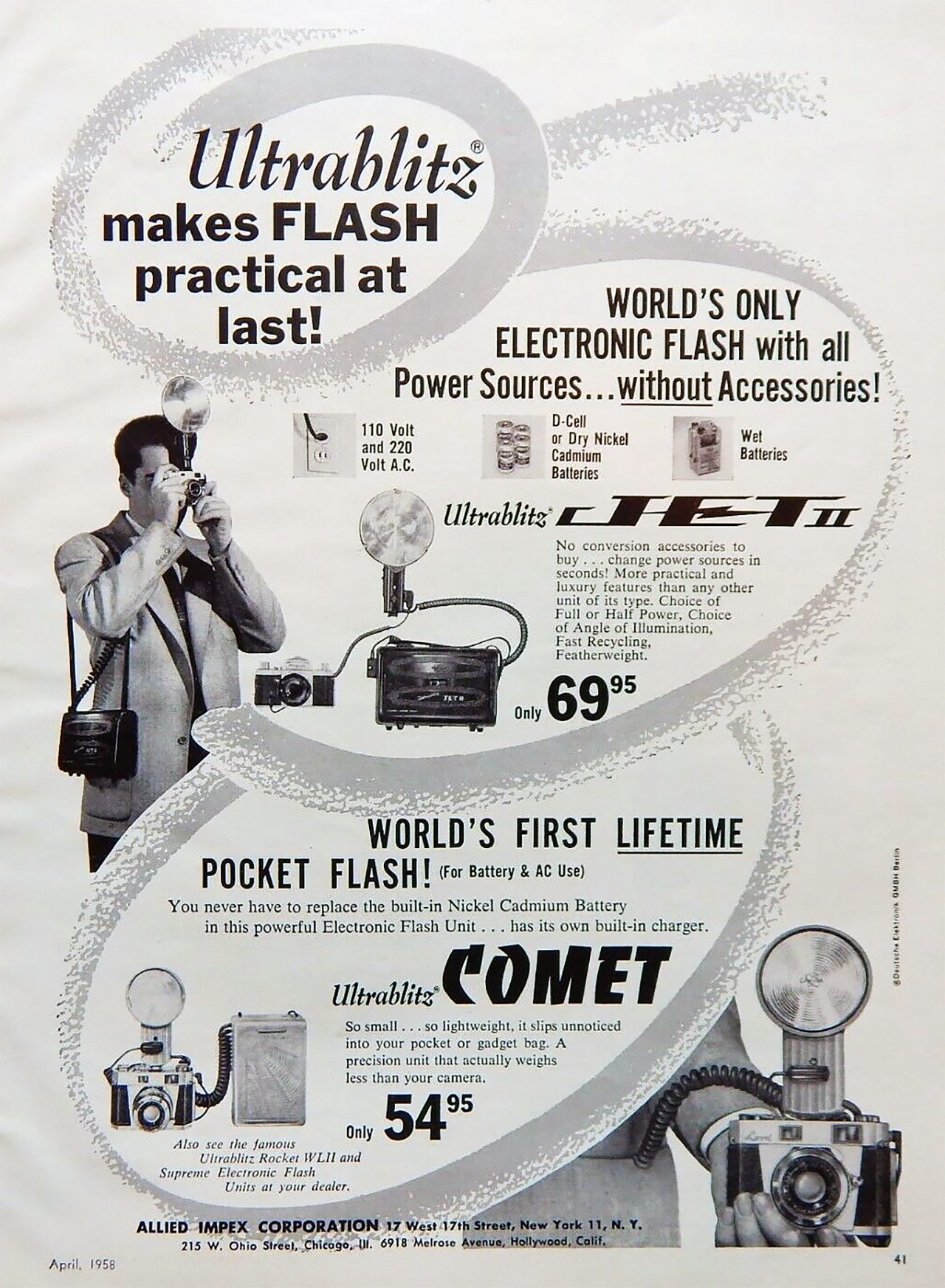
An old magazine advertisement from April 1958 from Allied Impex Corporation, New York. They offer two “handy” electronic flashes complete with portable battery, the Ultrablitz Jet II and the slightly smaller Ultrablitz Comet.
Allied Impex Corporation was founded by four German jews who fled to America after the rise of Hitler and the Nazi Party. Victor and Ben Silverman were the owners. Bruno Multer handled finances. The final original founder was Ralph Lowenstein, who was much younger than the other three men. Once the company began making money, a second entity, known as AIC Photo, Inc., was founded to act as the parent corporation with Allied Impex becoming the import/export company. The word “Impex” is likely a contraction of “Import Export”.
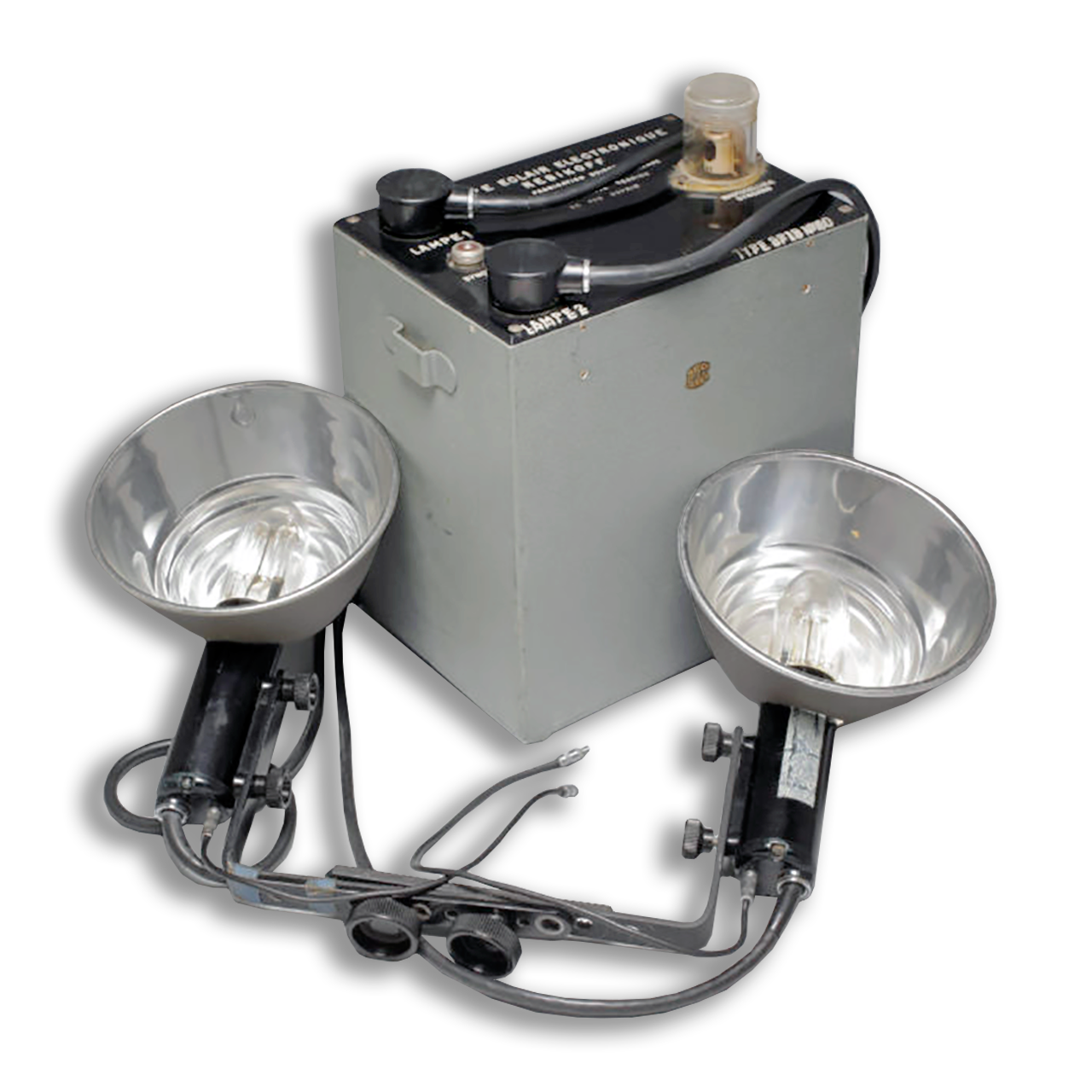
Rebikoff generator of the type SB2B and flash units, Lausanne, Switzerland, around 1948. After the war, Dimitri Rebikoff returned from France, where he worked with the Eclatron company, and founded his own production company for electronic flash units in Lausanne. He produced some of his devices together with his taxidermist Gérard Rod and entrusted the other part to the Cerberus factory in Bad Ragaz in the canton of Graubünden. The first Ikotrons from Zeiss also came from the production of Dimitri Rebikoff. This 60 watt/second generator powers 2 flash units.
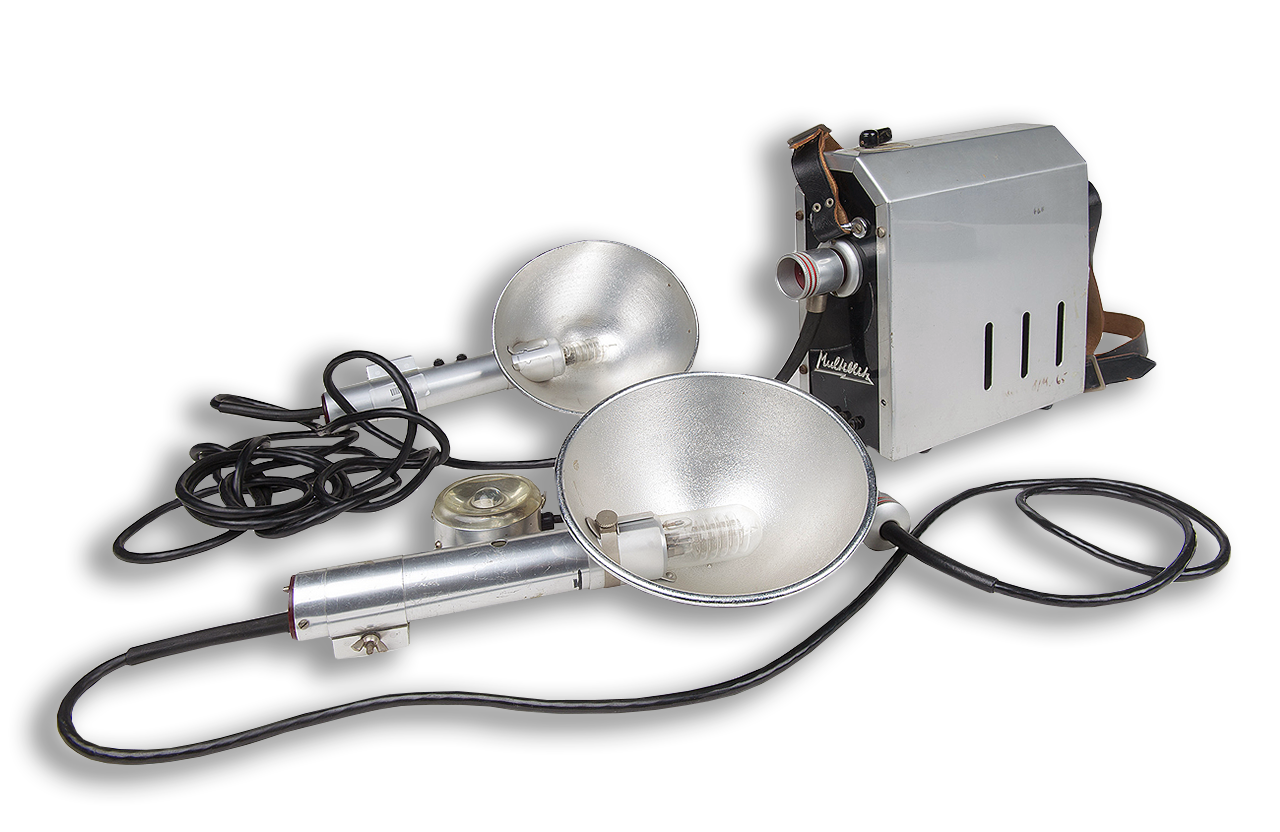
Strobe flash unit for professional use from Dr. Ing. Mannesmann, Westhoven/Cologne. In 1948, Dieter Mannesmann developed the first German strobe flash unit, as the electronic flash was initially called. As early as 1949, the first heavyweight Multi-blitz devices weighing a good 8 kg (without battery) came onto the market.
A LITTLE BIT OF HISTORY
The last level of comfort was achieved with the strobe or electronic flash, which is still in use today. Although electronic flash devices have only been available to amateur photographers since 1949, they are almost as old as photography itself.
As early as 1851, Henry Fox Talbot applied for a patent for a series of Leyden bottles (= capacitor) as an electronic flash device and in 1881 the Prague professor ErnstMach took photos of shot rifle bullets with the help of a flash unit.
The first industrial device with a gas-filled tube was created by the brothers Auguste and Laurent Seguin in 1925 (Stroborama). The exposure time was a millionth of a second!
The pioneer of modern electronic flash is Prof. Dr. Harald E. Edgerton, who made his first experiments with spark gaps and a mercury vapor tube in 1930. In 1936 Edgerton used the xenon flash tube, which later became common, and in 1939 he built the first electronic flash device for low operating voltages with capacitors. Kodak introduced the studio flash unit “Kodatron” (Licensed Edgerton) at the World’s Fair in New York in 1939.
In 1947, the Swiss Dimitri Rebikoff developed the first electronic flash unit in Europe with a high-voltage dry battery of 1800 volts(!). Eclatron S.a.r.l. France built the two-part Eclatron Reporter. The device produced 2,500 to 5,000 flashes with one battery charge and weighed 5kg, but the battery discharged within a year.
The flash duration was 1/30,000 sec. with 20 million lumens of light output at a repetition frequency of 8 seconds. The first electronic flash units from Zeiss Ikon were based on this design based on Rebikoff.
THE START OF SERIES PRODUCTION
In 1948, Mannesmann GmbH, Cologne, introduced its first electronic flash unit in Germany, and series production began in 1949 (also at Blaupunkt and Elmed at the same time).
While these devices initially had the format of a suitcase, their descendants now fit into any digital mini suitcase. The variety of electronic flash units that have been available, especially since the 1970s, overwhelms every collector. But one or two milestones, such as a Braun hobby, will definitely feel at home in a Photographica collection.
The Braun hobby, introduced in 1952, became the best-selling electronic flash unit in the world within just 2 years! The power source for early devices was the well-known “Sunshine battery”. It required regular maintenance, like a car battery, occasionally needing to be topped up with distilled water. On the back of the Hobby you could check the acid level in a shop window – if the last ball dropped, it was urgent to recharge.

The Leyden jar originated about 1746. The illustration shows three Gold leaf filled Leyden Jars from the first half of the 19th century. Leyden jars were essential for storing electrical charges used by the earliest wireless radios used aboard ocean liners. Leyden jars were also used to store electricity in experiments, and later as capacitors in early flash equipment.
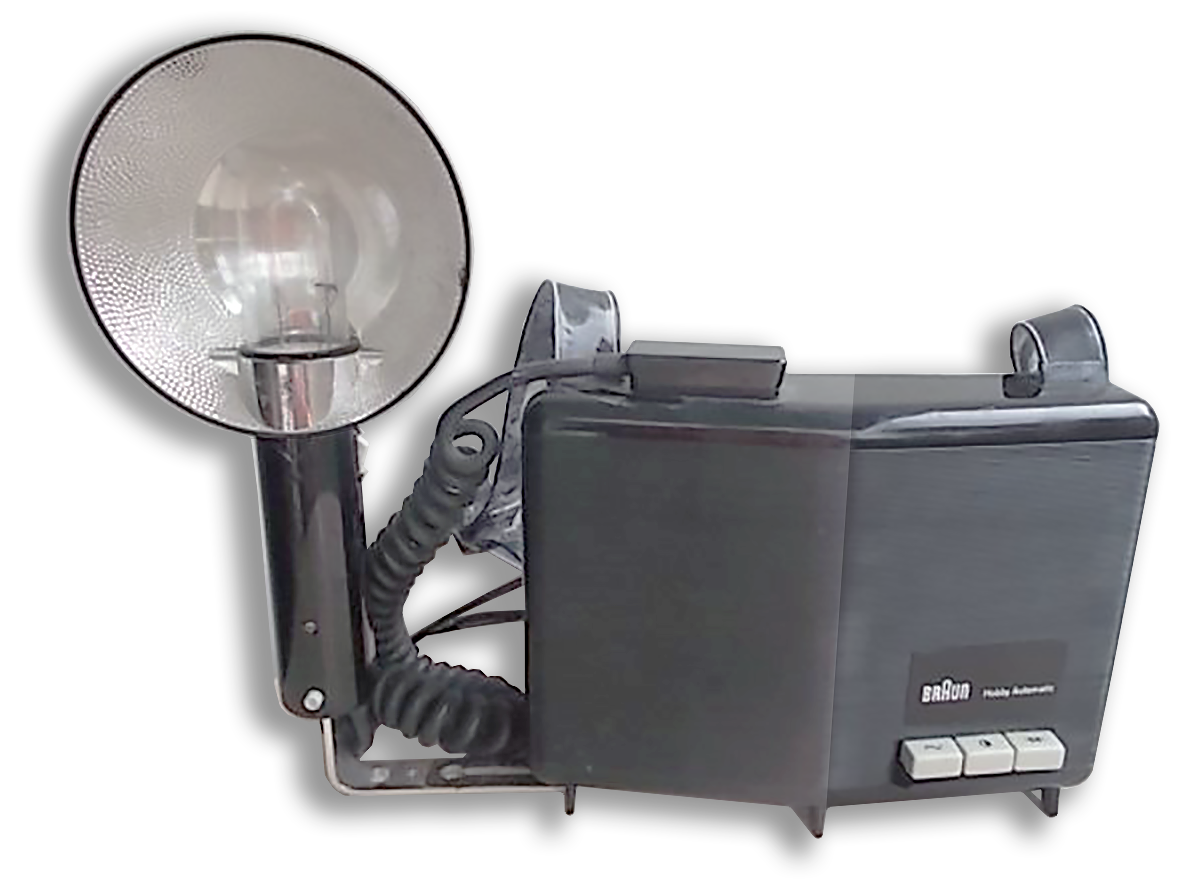
At the time, the Braun Hobby was the first flash unit in a sturdy plastic housing (a car drove over the generator in the advertisement) and was quite inexpensive compared to the other electronic flash units available. The picture shows the Braun Hobby Automatic from 1955 with 3 pushbuttons for switching operating modes (battery, mains, charging, partial energy).
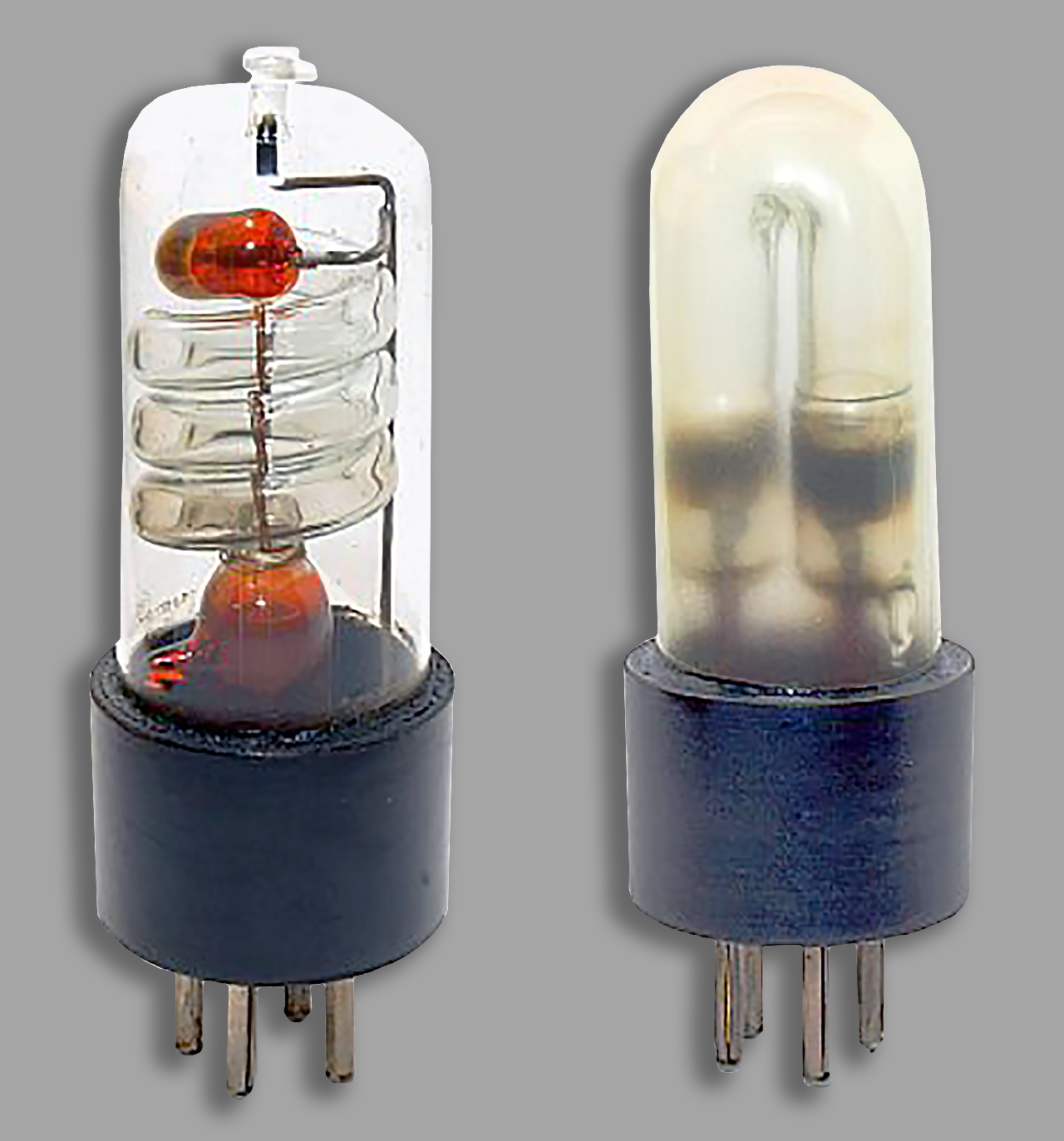
In the photo on the far left there is a high-voltage flash tube and next to it a low-voltage flash tube.
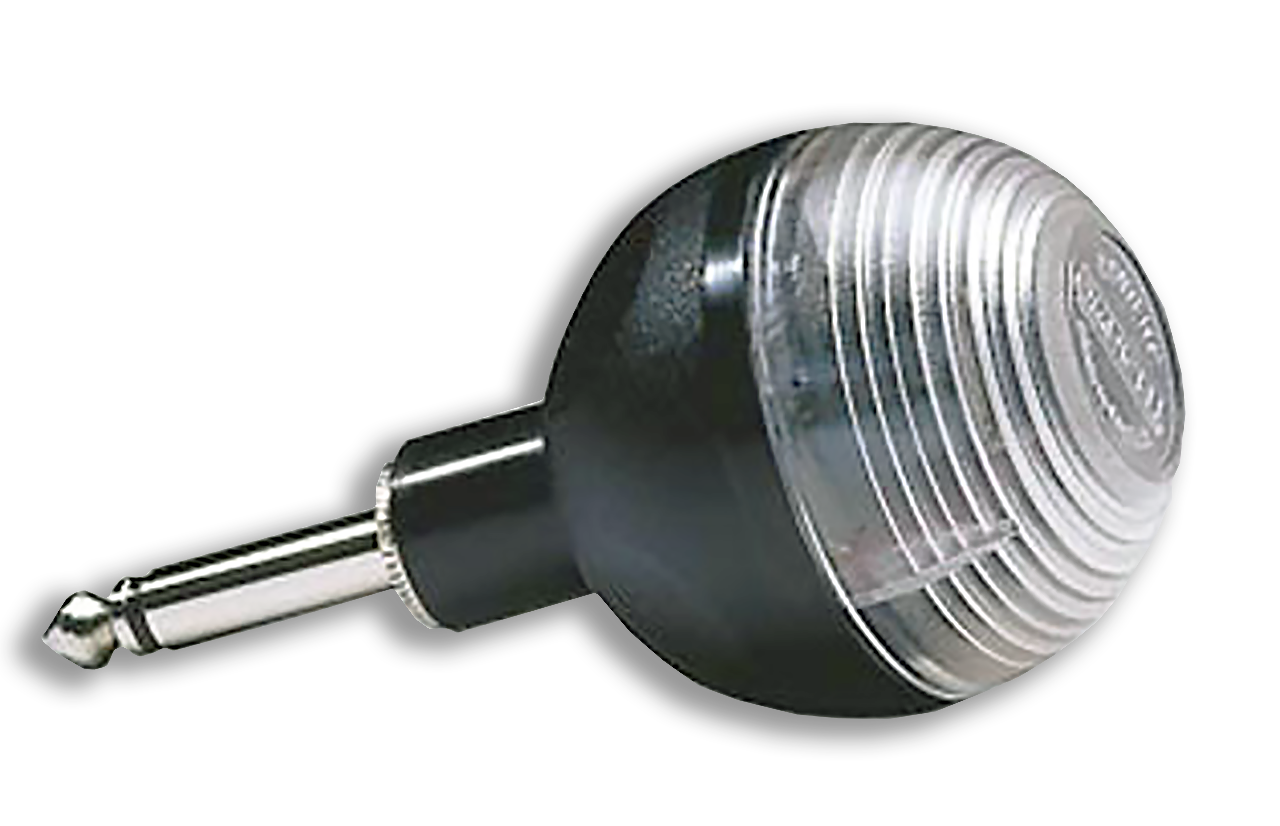
The Bowens Omnicell Slave Unit is a slave sensor with a 1/4″ phone plug. It is ideal for those situations where the built-in photocells on the monolights just do not receive enough light to trigger the flash. The simplest solution is to plug an extension sync lead into the flash and fit an auxiliary Omnicell into the other end of the extension. The Omnicell is placed in a position where it can “see” the master flash.
HOW DO THESE DEVICES WORK?
Usually powered by an accumulator, a nickel cadmium cell, or a series of high tension batteries, the electrical energy from these is passed between two electrodes in a gas-filled glass bulb via a capacitor, thus producing a short duration high intensity flash. With the exception of electronic flashguns powered entirely by high tension batteries all can be re-charged from the mains, and in many cases can be operated directly from the mains.
The most important component in the electronic flash device is the flash tube, a gas discharge tube filled with an inert gas (usually xenon). The “high-pressure tubes” that were initially most widespread required an ignition voltage of 10,000 volts, which was generated by a small ignition transformer from the capacitor voltage that had previously been transformed up to 1000 – 3500 volts.
Alternatively, there were also designs with low-pressure tubes and lower voltages that worked with similar synchronization times to the vacuum flashes that had already been introduced. In the beginning, tubes with a plug-in base, similar to radio tubes, were mostly used. They were manufactured by Osram and Philips or by the German glow lamp company Pressler in Leipzig.
In view of the high voltages described, it is essential to point out the dangers of old strobe lights. Even after a long period of standstill, a life-threatening voltage can still be present on the capacitor. Therefore, be careful when handling or attempting to repair tube flash units!
SLAVE UNITS
Flash units are commonly built directly into a camera. Some cameras allow separate flash units to be mounted via a standardized accessory mount bracket (a hot shoe). In professional studio equipment, flashes may be large, standalone units, or studio strobes, powered by special battery packs or connected to mains power. They are either synchronized with the camera using a flash synchronization cable or radio signal, or are light-triggered, meaning that only one flash unit needs to be synchronized with the camera, and in turn triggers the other units, called slaves.
A slave unit is essentially a flashgun with its own power supply, its own bulb, and its own reflector, but fired not by depressing the camera release, but by the light emitted from the master flashgun, in other words the flashgun on your camera. Your original flash actuates a photoelectric cell set into the slave unit, which fires the slave-unit bulb. The advantage of these units is that you can place your second flash in any desired position to act as a fill in, modelling light, background light. or in fact, any position where you would normally place the second light; yet there are no trailing connecting wires. Although relatively expensive, these slave-flash units are a very useful part of flash armoury.
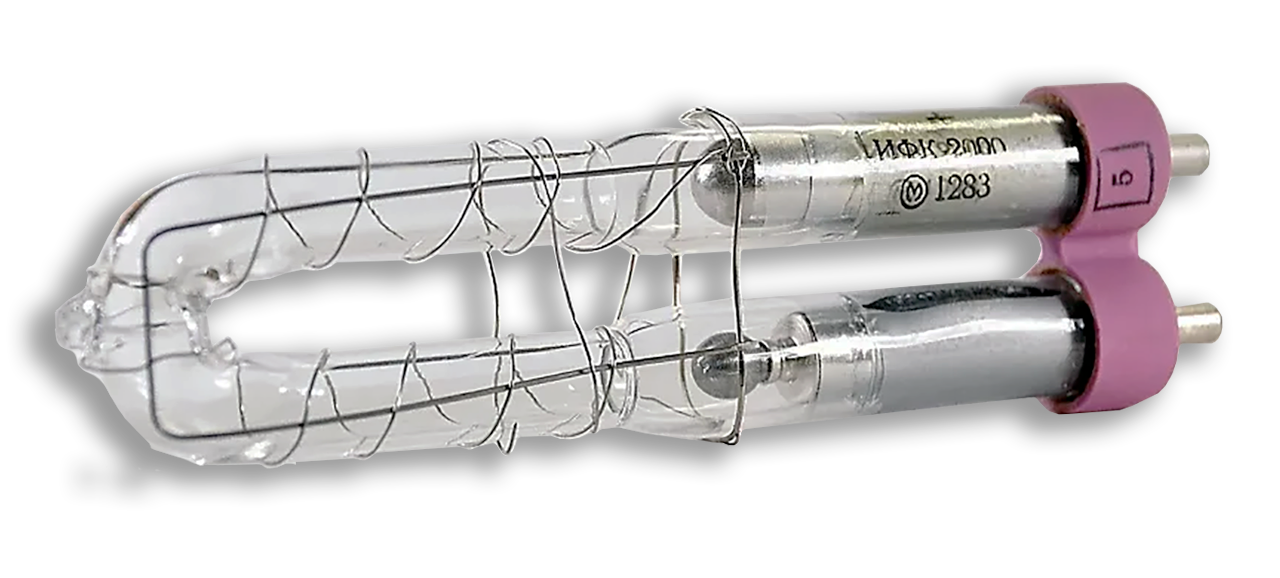
Flashlight has undergone an enormous change in the 70 years, from flash powder, which was still available in the 1950s, to heavy tube flash units, to clip-on units, to flash bulbs, artificial fill light became more and more convenient.
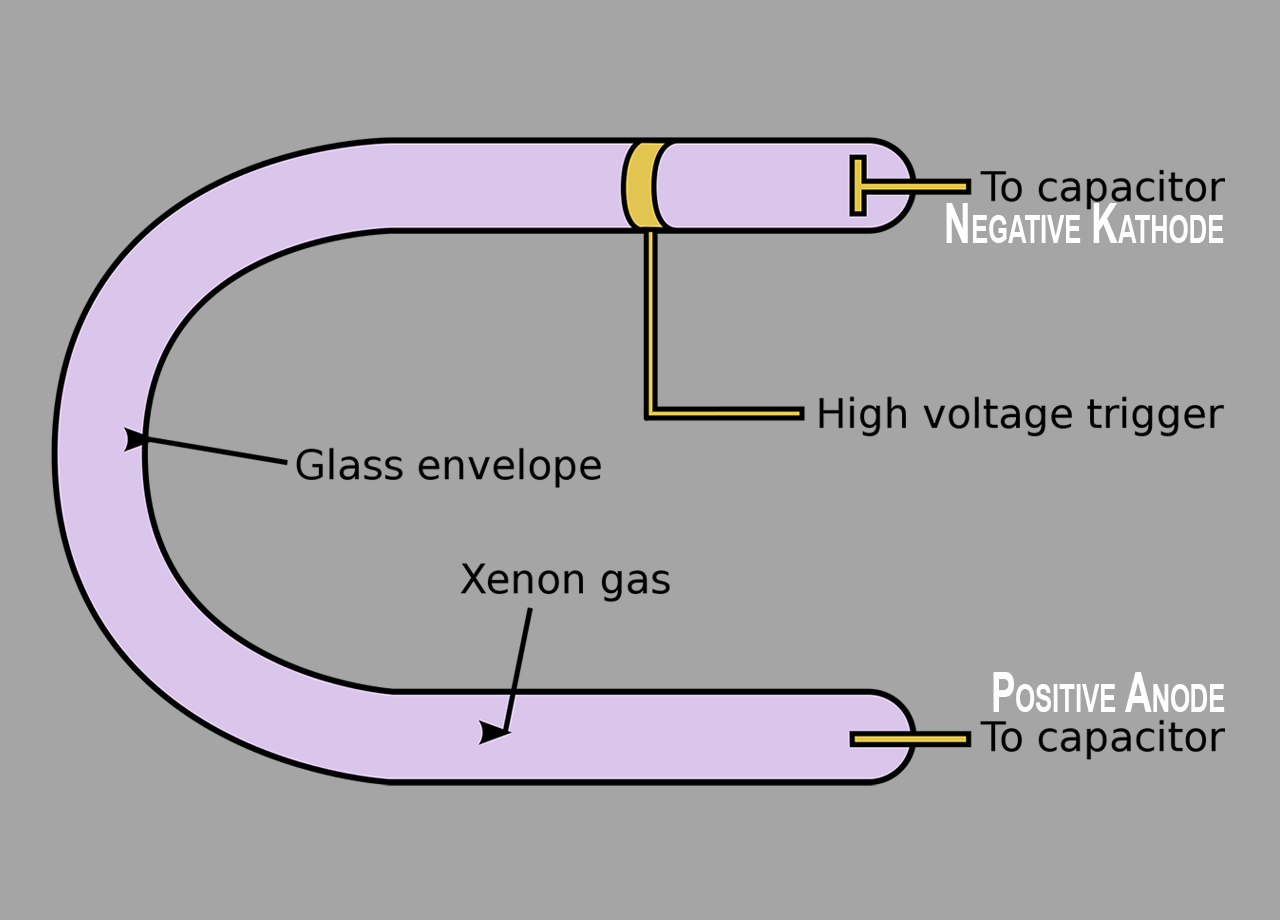
Electronic Flashguns do not use expendable bulbs, but use a gas-filled tube as shown in the photo. When a high-voltage current is passed through this gas, an extremely fast, high-intensity flash is the result. Most flashcubes will give approximately 20,000 flashes before their useful life is finished. Flashtubes require high operating and triggering voltages and caution must be observed when using them.
The flash lamp as shown in the drawing comprises a hermetically sealed glass tube, which is filled with xenon, and electrodes to carry electrical current to the gas. Additionally, a high voltage power source is necessary to ionize the gas. A charged capacitor is usually used for this purpose so as to allow very speedy delivery of very high electrical current when the lamp is triggered.
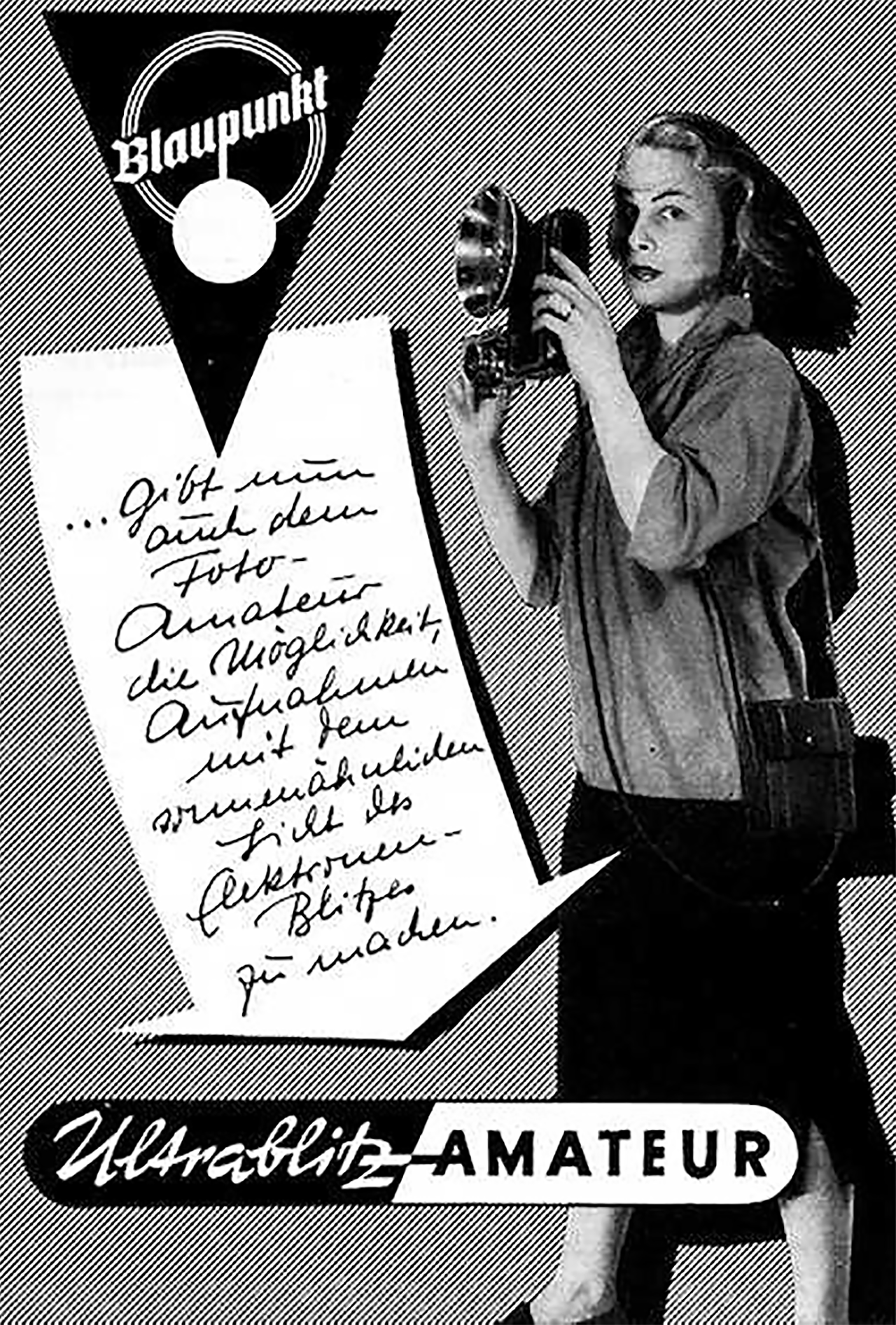
The Blaupunkt Ultrablitz, as presented in the catalog of the first post-war Photokina, which took place from April 20th to 29th, 1951.
FROM JUST A FEW TO MANY
The spread of electronic flash devices began in the 1960s. Not only did these devices become smaller, the prices also fell to a level that was acceptable even for dedicated photo amateurs.
 Photo Porst already offered its Hapotron in the 1958 catalog for 148 DM. That was still a lot of money compared to 69.50 DM for the cheapest Silette or 119 DM for a Vito B. But for those who took a lot of flash pictures, such an electric flash quickly paid for itself.
Photo Porst already offered its Hapotron in the 1958 catalog for 148 DM. That was still a lot of money compared to 69.50 DM for the cheapest Silette or 119 DM for a Vito B. But for those who took a lot of flash pictures, such an electric flash quickly paid for itself.
For amateur photographers, many photo houses offered a rental service – you could rent a Braun Hobby or Mecablitz for 5 marks per day. This made it possible to take flash photos of the family celebration inexpensively…
Better-known electronic flash devices of those early days were Multiblitz (Dr. Ing. Mannesmann), Ultrablitz, Cornet (Blaupunkt/Deutsche Elektronik), of course Braun Hobby (Max Braun, Frankfurt), CeBe, Paxitron (Carl Braun Nuremberg), PK (Paffrath & Kemper), Synectron, Agfatronic (Agfa), Hapotron (Porst), Mecablitz (Metz), ELMED, Essen, Elfo (Lorent & Lauten, Wasserburg/Inn), VK Knirps (Kirmeyer & Söhne, Erding/Obb), Zeiss Ikon Dresden/Stutgart and Elgawa, Plauen (GDR).
Below is a small overview of products of over 60 years of electronic flash history. Almost all of the electric flash units shown in the photos come from the Photobutmore collection. This absolutely subjective compilation nevertheless shows how this important photographic accessory has developed over the years.
Apart from the extra-ordinary flash units of the Photobutmore collection, no extensive descriptions are given of the countless flash units that flooded the market from the mid-1960s onwards.
Moreover, we limit ourselves here to separate electronic flash units that could be placed on top of a camera. Namely, in the years after 1960, the number of built-in flash equipment (particularly the cheap range of cameras) increased rapidly. It would be going too far to include all these cameras with built-in flash equipment here.
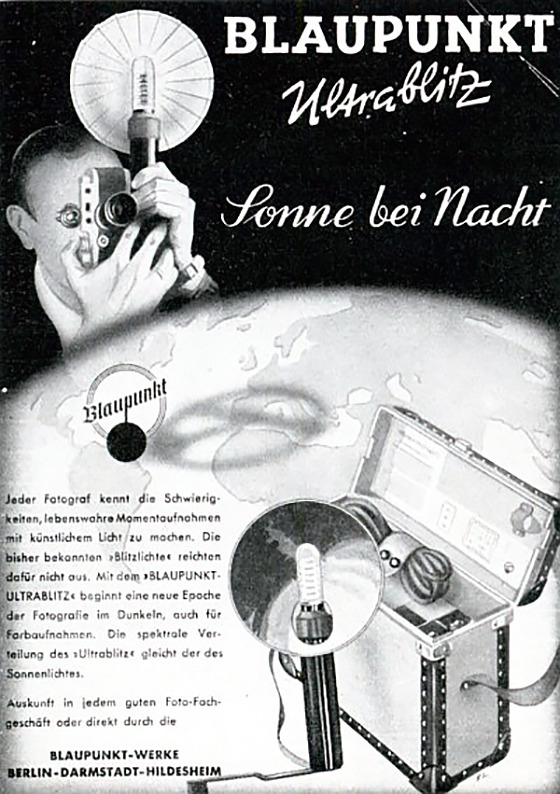
Advertisement from 1950 for the Blaupunkt Ultrablitz, purchase price 480 DM.
thirty images of typical color-temperature measuring devices
(almost all information is taken from https://photobutmore.de)
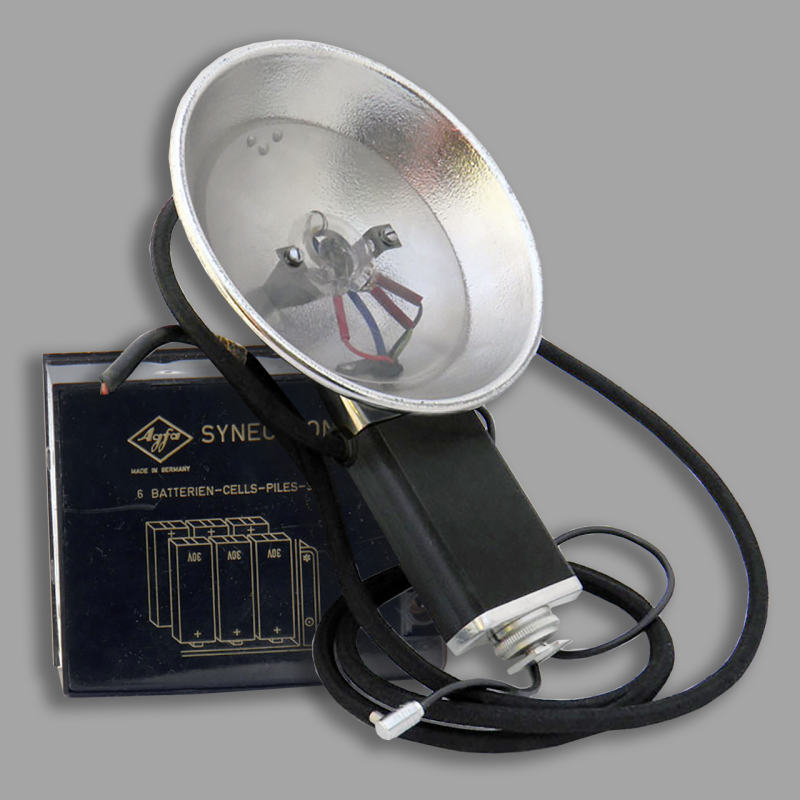
Less intended as a professional device, Agfa was also represented with a rather unusual electronic flash device in the early 1950s. The uniquely constructed Agfa Synectron did not use a xenon flash tube but rather a light source that was comparable to that of the Braun CeBe 1. The design of the supply section, including the associated leather bag, was also like twins. Only the lightning rod has a different shape.
The low-voltage light rod in the round reflector is covered by a Plexi disk. The guide number 24 at 21 DIN was quite sufficient for amateur purposes. However, the power supply was not practical – six 30 V anode batteries type 73 for the required 180 V operating voltage were not found on every corner. The device was offered around 1952/53 and was not widely used.
- Origin: Munich, Germany
- Year of Construction: 1952/53
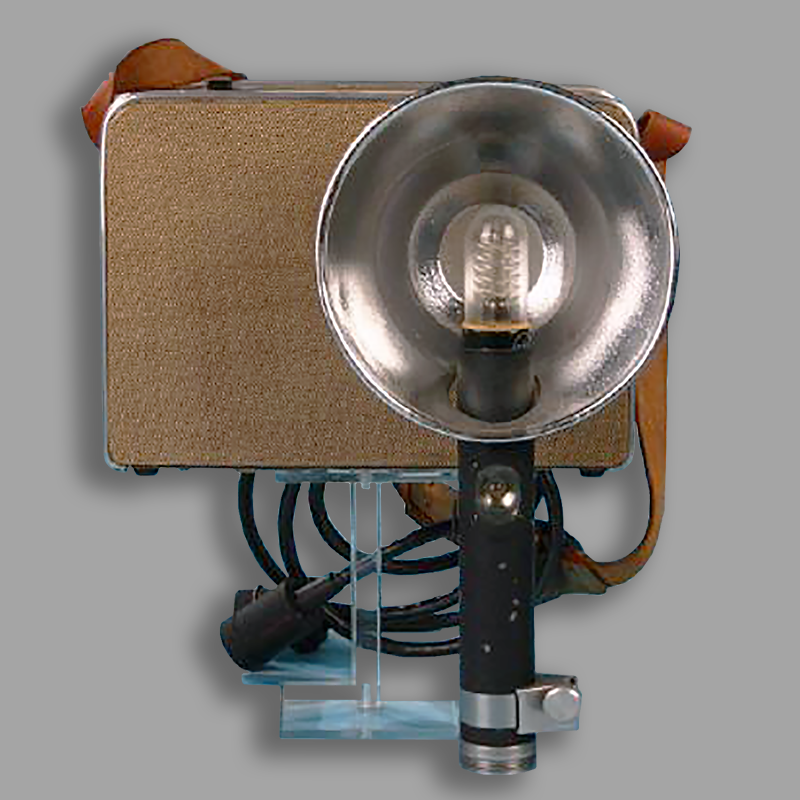
Early tube flash unit type Blaupunkt Ultablitz Reporter for professional use from Dr. Ing. Mannesmann. In 1948, Dieter Mannesmann developed the first German tube flash device, as the electron flash was initially called. The first multi-flash devices came onto the market as early as 1949 – heavyweights weighing a good 8 kg (without battery). The Multiblitz Junior (early 1950s) weighs “only” 1.4 kilos.
Along with Metz, Mannesmann was the last surviving flash manufacturer in Germany for a long time. The Multiblitz systems primarily covered professional needs. The Cologne manufacturer went bankrupt in 2013 and was taken over by Dörr GmbH Neu-Ulm, where it went bankrupt again in 2017. So, Multiblitz expired shortly before its 70th anniversary.
- Origin: Westhoven/Cologne, Germany
- Year of Construction: 1952/53
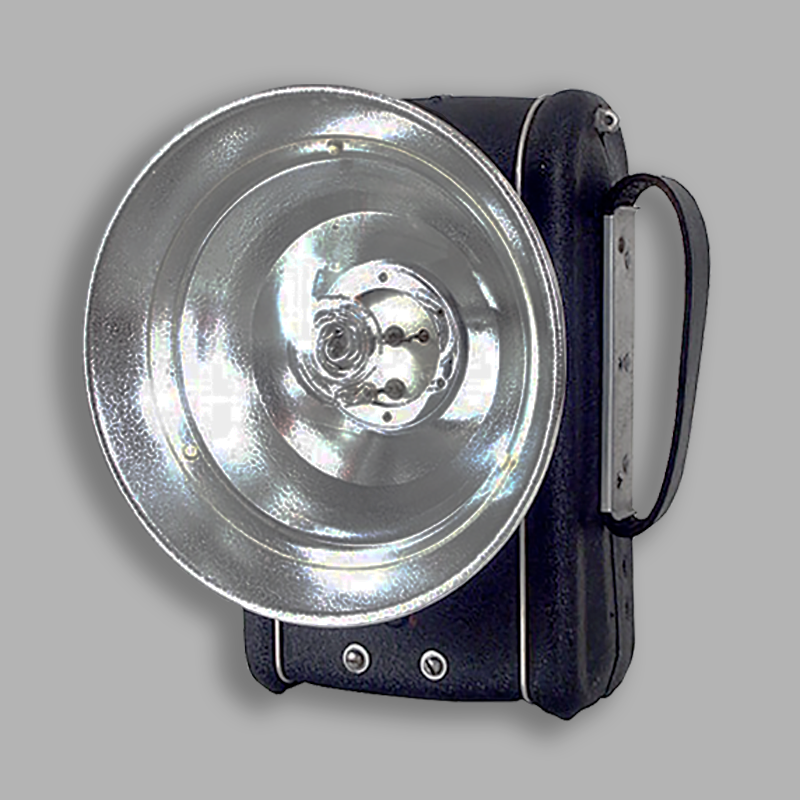
A very early two-part Blaupunkt electron flash unit, probably from the time shortly after WW II, probably in the early 1950s from Blaupunkt GmbH, Hildesheim.
It is a very large and heavy flash head, which cannot be mounted on the camera, but was usually placed on the floor. The flash head can also be hung on a strap or connected to the camera using a rail.
It is powered by a relatively small 4 volt/3 Ah lead battery in a shoulder bag, which is connected to the flash head with a thick power cable. The connection to the camera is done via a normal PC plug. The flash is a very nice example of the beginning of this technology, with its large reflector providing a nice, balanced light.
- Origin: Hildesheim, Germany
- Year of Construction: begin 1950s
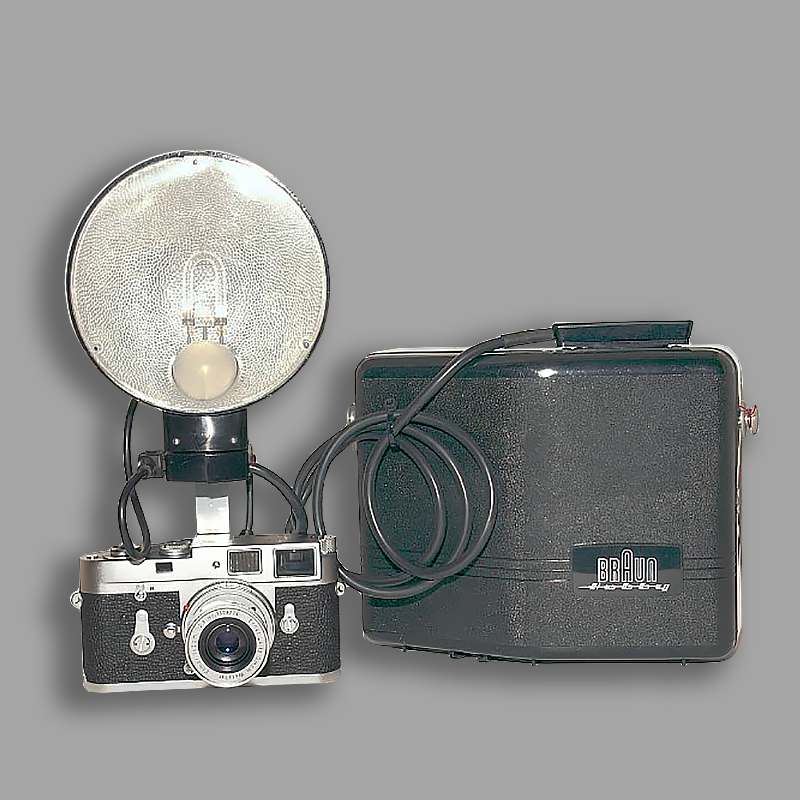
The Braun hobby was – at least among amateur photographers – the most popular electronic flash in the 1950s. In an advertising brochure from 1954 the manufacturer even wrote about the world’s best-selling electronic flash unit. At a retail price of 198 DM, the powerful and elegant tube flash unit offered a lot compared to competitors such as Mannesmann or Blaupunkt.
Here in the photo (with a Leica M3) you can see the Braun Hobby 100 from 1954. This meant that it could be operated either from the mains, with the built-in Sonnenschein battery or with an external anode battery. The short reflector rod made it possible for the first time to change the lighting angle from 45/50° to 70° for wide-angle illumination by rotating the lower part by 180°. Neupreis 108,75 DM.
- Origin: Frankfurt, Germany
- Year of Construction: 1954
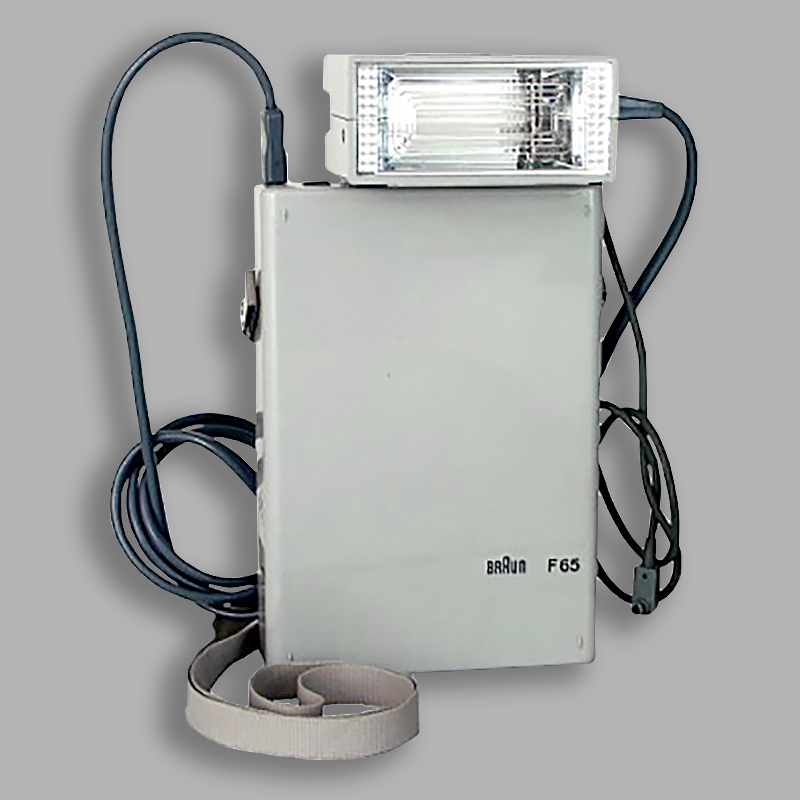
Battery flash unit Braun F 65 from Braun AG, Frankfurt am Main, a company that implemented a straightforward, modern design line in all areas, especially in the 1960s. As with the Braun D 40 slide projector, the well-known industrial designer Dieter Rams was at work here. This Hobby F65 was available in dark gray as well as with a black or white housing. The selling price in 1965 was 219 DM.
Equipped with an external battery pack with a mains charging device, which is carried over the shoulder with a strap, and a small flash head, you have a powerful device in your hand. The flash head can be mounted vertically and horizontally on the camera and is connected to it via a sync cable. There is a calculator on the top to determine the correct aperture.
- Origin: Frankfurt, Germany
- Year of Construction: 1962
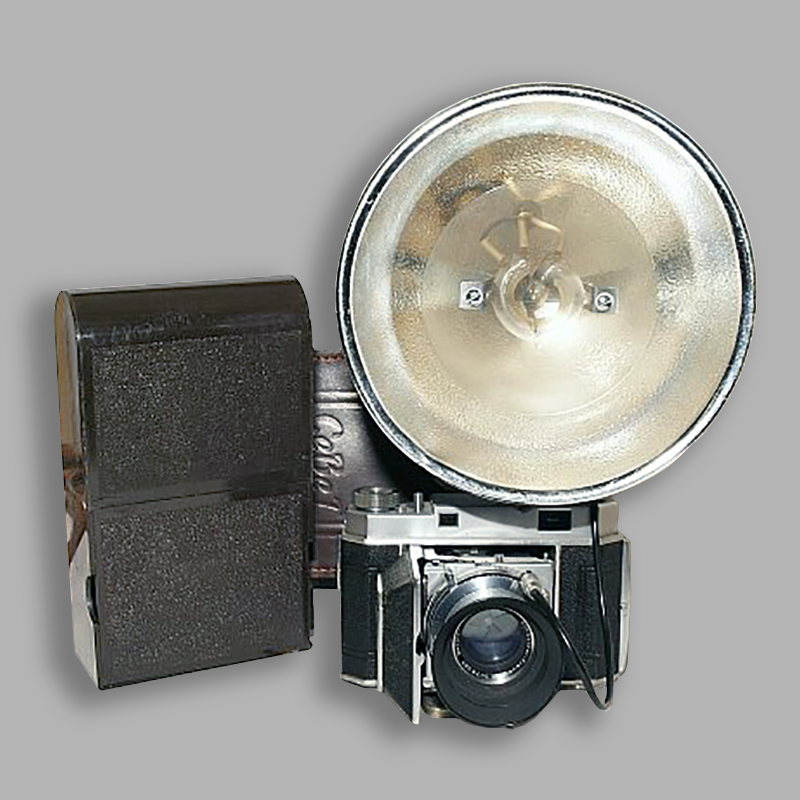
Despite having the same name, this CeBe-1 flash unit does not come from the manufacturer of Braun Hobby but from the Carl Braun Paxette factory in Nuremberg.
The power supply unit was quite small for the time and could be carried around the body in a leather bag or stored in a jacket pocket. In the early 1950s one of the smallest and cheapest electronic flash units.
If you find one of these rare devices today, it is unusable simply because of broken cables. A repair is possible, but requires a fair amount of enthusiasm. It is also problematic to find a functioning power supply.
So – a historically interesting piece, but only for collectors!
- Origin: Nuremberg, Germany
- Year of Construction: begin 1950s
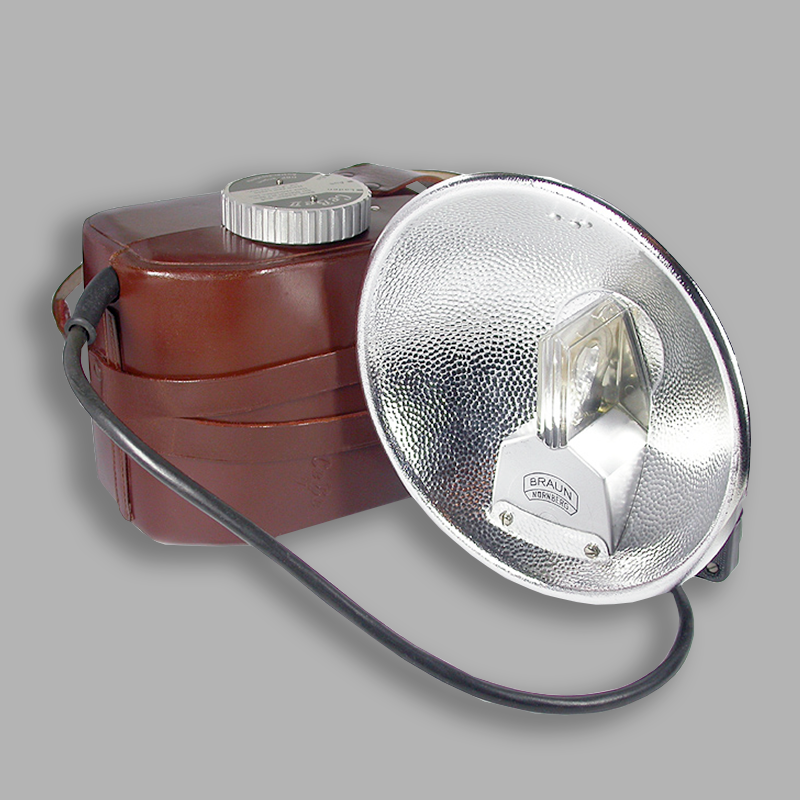
The CeBe II Permaflash electron flash from Carl Braun Nuremberg was a monster of a flash with high power and a high guide number of 36 at 17 DIN or 52 at 21 DIN. Two Permacell batteries of 90 volts each were required for operation, with which around 1000 flashes were possible when fully charged. If the batteries were always refreshed, up to 3000 flashes were possible, according to the manufacturer. The charger for mains voltage 220V is now installed.
Technical data according to the instructions: Light output: 70 watt seconds, flash duration 1/500 second, flash sequence 5-8s. The color temperature was designed for color films. The selling price in 1955 was 159 DM; 1 set of Permacell dry elements cost 27 DM. “Cost per flash: less than 1 pfennig”.
- Origin: Nuremberg, Germany
- Year of Construction: begin 1955
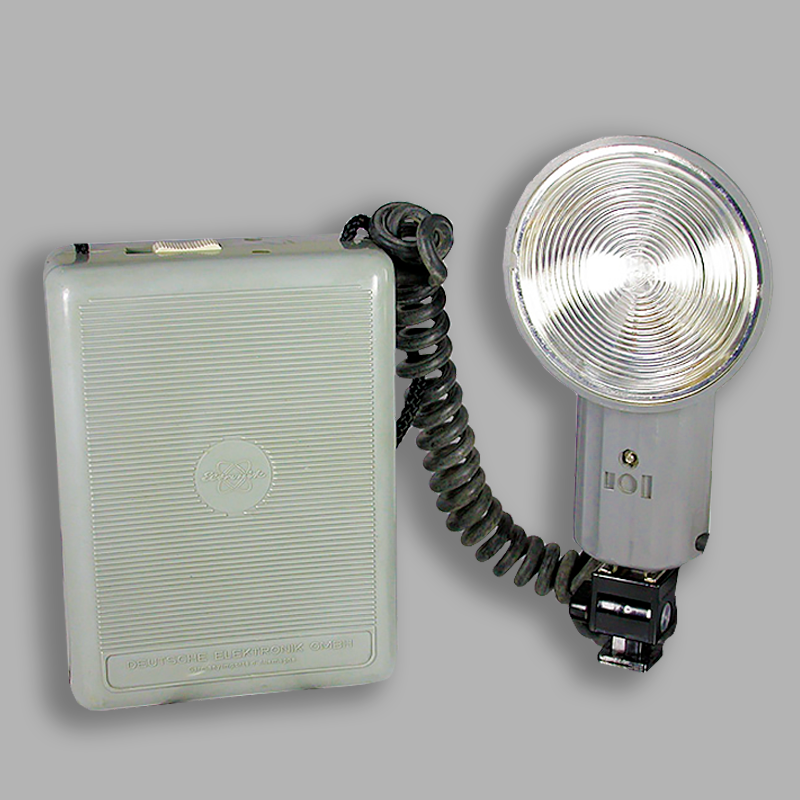
Although Porst did not produce any photo products itself, it had always had a number of “own brands” in its range since the 1930s. In the 1956 catalog there was also Porst’s first electronic flash, built by Deutsche Elektronik (Blaupunkt/Cornet Ultrablitz), the Hapotron-Blitz II from 1957. Just over a year later, this was replaced by the Hapotron III.
The flash unit, which was offered for 148 DM, was also quite convincing with its technical capabilities and attractive shape.
Unfortunately, the spiral cables that Porst flash units of those years were equipped with are now brittle and porous. Hapotrons are therefore only suitable for collection – unless you replace the cables and batteries.
- Origin: Berlin-Wilmersdorf, Germany
- Year of Construction: 1957
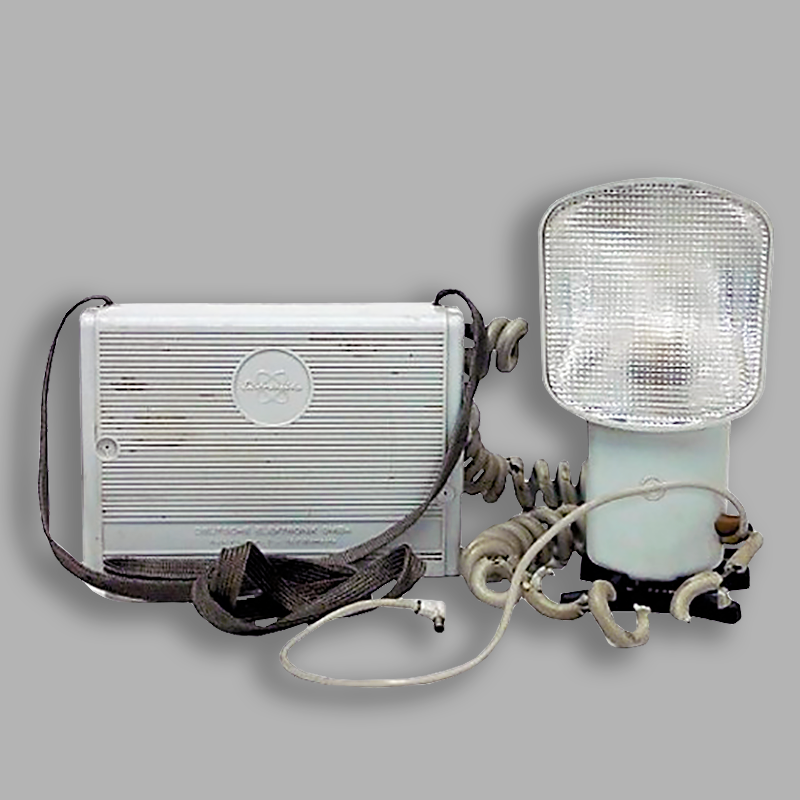
The Ultrablitz Comet L is an early battery flash from Deutsche Elektronik GmbH from Berlin-Wilmersdorf from the 1960s. Deutsche Elektronik GmbH was a subsidiary of Robert Bosch GmbH and was mainly active in the field of antenna technology. Their brand name was “Electronics”. The device also went through life as Hapotron 3.
The 3.6V battery is charged directly from the mains socket. It is quite compact and has a shoulder strap. According to the operating instructions, the battery can fit in a jacket pocket. As was usual at the time, the camera is connected via a cable to the camera’s flash socket. For the time, this was a fairly powerful device for the amateur sector. The guide numbers for color film are 14-16 at ISO 50/18° and for SW film 28-32 at ISO 40/17°.
- Origin: Berlin-Wilmersdorf, Germany
- Year of Construction: 1960s
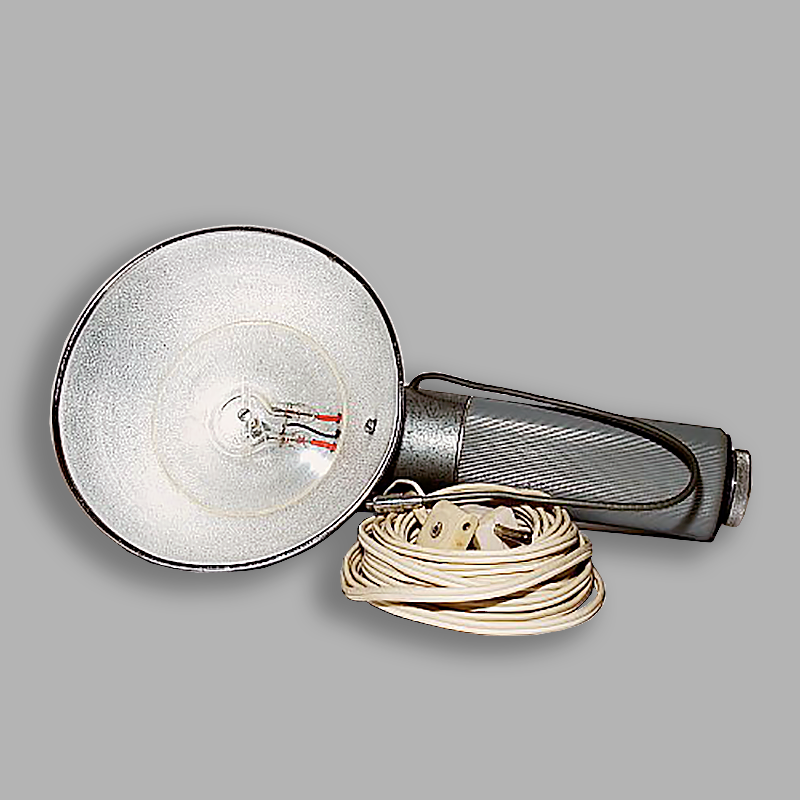
Talbot was a trading company for photographic products founded in Paris in the mid-19th century. During the Franco-German War around 1870, Romain Talbot moved his company to Berlin and offered photo products there as a wholesaler until World War II. After the end of the war, the company moved to Stuttgart and sold photographic and photochemical products there as a wholesaler until the end of the 1960s.
This mains-operated electron flash “Errtee-Fips” dates from the early 1950s. The large, one-piece flash unit was intended for professional use. The rod is screwed onto a tripod. In photo studios of those years, several such flashes were often operated simultaneously via a synchronous distributor. The xenon flash tube comes from Osram.
- Origin: Stuttgart, Germany
- Year of Construction: begin 1950s
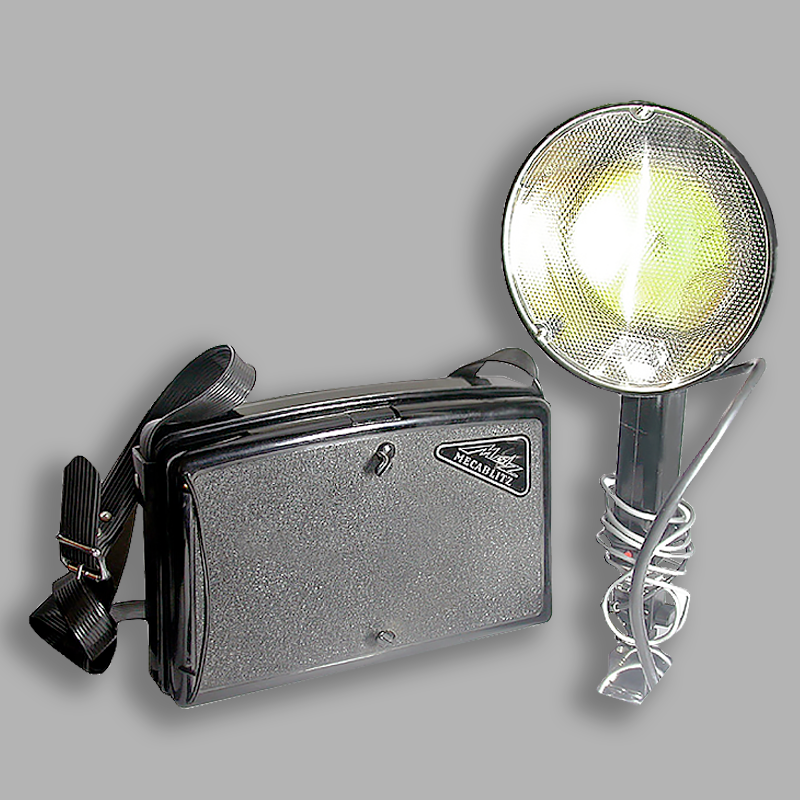
The Metz Mecablitz 300 was one of the dinosaurs of electronic flashes, probably built in the mid/late 1950s by Metz, Fürth in Bavaria, which still produces excellent flash units today. The price back in 1955 was 129 DM (without battery 20.50 DM).
It has a built-in charger and power supply for alternating current only, either 220 V, 127 V or 110 volts. Lead battery (4 volts, 3 Ah) or four mono cells 1.5 volts.
According to the operating instructions, the guide number was 46 at 21 DIN (32 at 17 DIN). The lighting angle (40 degrees) could be changed to 62 degrees (wide angle) by moving the flash tube in the reflector housing. Flash duration: 1/1,000 second.
- Origin: Fürth, Germany
- Year of Construction: 1950s
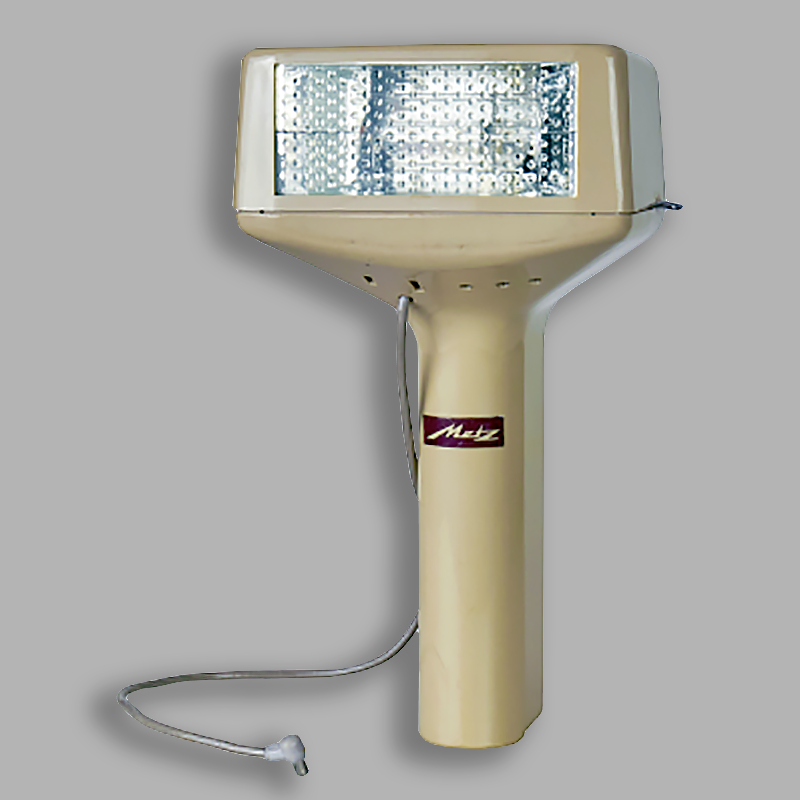
The Metz Mecablitz 107 is an early, one-piece flash unit in a beautiful light beige color. A permanently installed NC battery is used to supply energy and is charged using the charging cable in the device. The 4.8 volt battery is sufficient for a maximum of 70 flashes and has a flash sequence of just under 10 seconds. The connection for the charger is on the front below the flash reflector on the right side.
On the top of the speed camera there is a large and clear calculator on which the required aperture can be read. The speed camera is attached to the camera with a camera rail, and the camera connection is made via a cable to the PC socket. In order to be able to carry the camera together with this heavy flash, the Metz Mecablitz 107 has eyelets on the flash head for a strap. The selling price in 1960 was 159 DM.
- Origin: Fürth, Germany
- Year of Construction: 1960
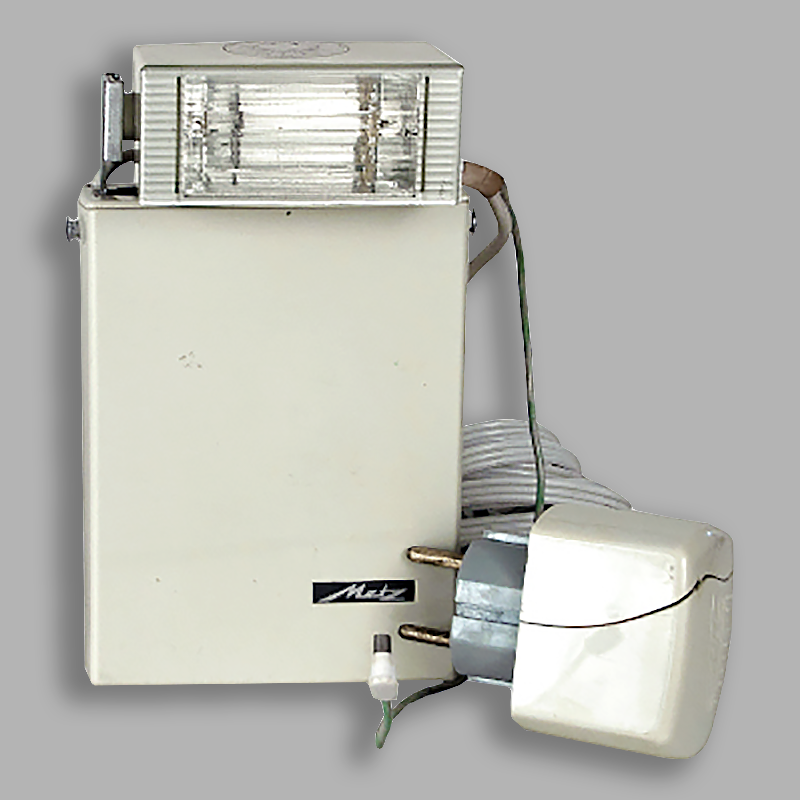
The Metz Mecablitz 108 is an early flash unit from Metz from the 1960s with a removable flash head. It is equipped with an external battery pack, which is carried over the shoulder with a strap and has a quite long cable to the separate flash head.
The flash head can only be mounted horizontally on the camera and is connected to it via a sync cable. When not in use, the flash head can be parked on an integrated hot shoe in the battery pack and is thus safely stored.
There is a calculator on the top of the flash head to determine the correct aperture. This type of flash was quite popular in the 1960s and can be found in a similar form, for example on the Braun F 65.
- Origin: Fürth, Germany
- Year of Construction: 1960
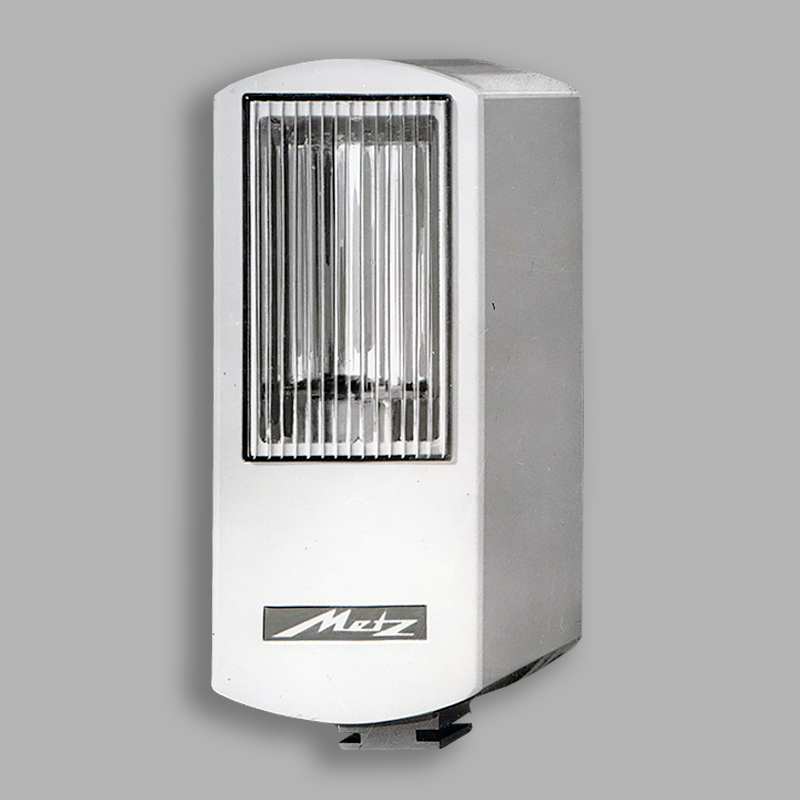
Metz also played a part in the concert of fashion photo equipment suppliers for a time and also installed its electronic flashers, which have now become much more manageable, in white housings. This case color was in vogue at the beginning of the 1960s, but after around 10 years it went back to drab black carbon cases.
The pretty Mecablitz 112 is an example of the possibilities of this time. By the way, he already has a hotshoe contact for wireless flashing with appropriately equipped cameras. A connection cable is of course also available. The flash unit has built-in NC batteries, which – as is now common with almost all manufacturers of compact flash units – are charged via an external plug-in charger. Mains operation is also possible if the batteries are empty.
- Origin: Fürth, Germany
- Year of Construction: 1960
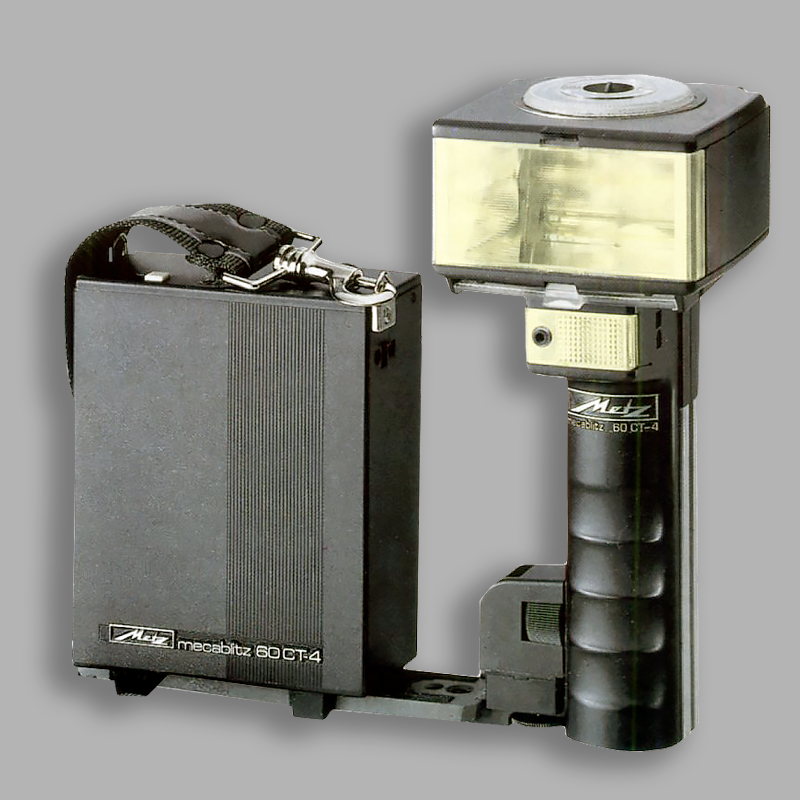
The mother of all flashlights probably comes from Metz Apparatefabrik, Fürth. Representing the multitude of similar-looking devices with different performance capabilities, here is the top Metz model from 1992, the Metz Mecablitz 60 CT 4.
Despite the now advanced and miniaturized technology, this professional device still comes with a separate generator part.
Some detailed data from the Internet: winder and motor drive settings from 2½ to 5½ flashes per sec.; Flash duration 1/200 to 1(20,000 seconds); Color Temperature 5600K; eight automatic aperture settings; self-compensating built-in wide angle diffuser; bounce and swivel capability: +90° vertical, -360° horizontal; fill flash for improved bounce light effect.
- Origin: Fürth, Germany
- Year of Construction: 1992
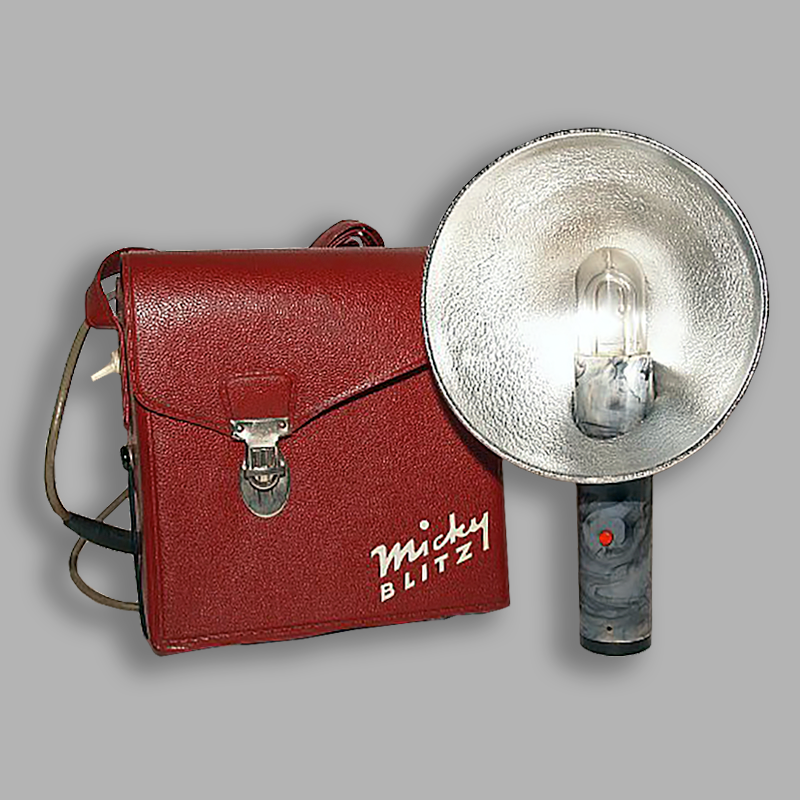
In 1946 Dipl.Ing. Heinz Blohm founded a company for the construction of hotplates, irons, radios, testing devices (ERWA), electronic organs, etc. Electronic flash devices were also part of the production program, which was expropriated in 1954 and given to VEB Elektronik, Plauen. This later resulted in ELGAWA in Plauen. A whole range of innovative flash units were produced there until 1991.
ELGAWA offered this “Micky Blitz” as early as the mid-1950s. The distinguishing features were the different colored versions in which the Mickey was available. The following power supply could be selected: 4xEJT rod elements (1.5 V mono cells), special NC battery, power supply with built-in charging device. Price: 190 DM/GDR.
- Origin: Plauen, Germany
- Year of Construction: 1955
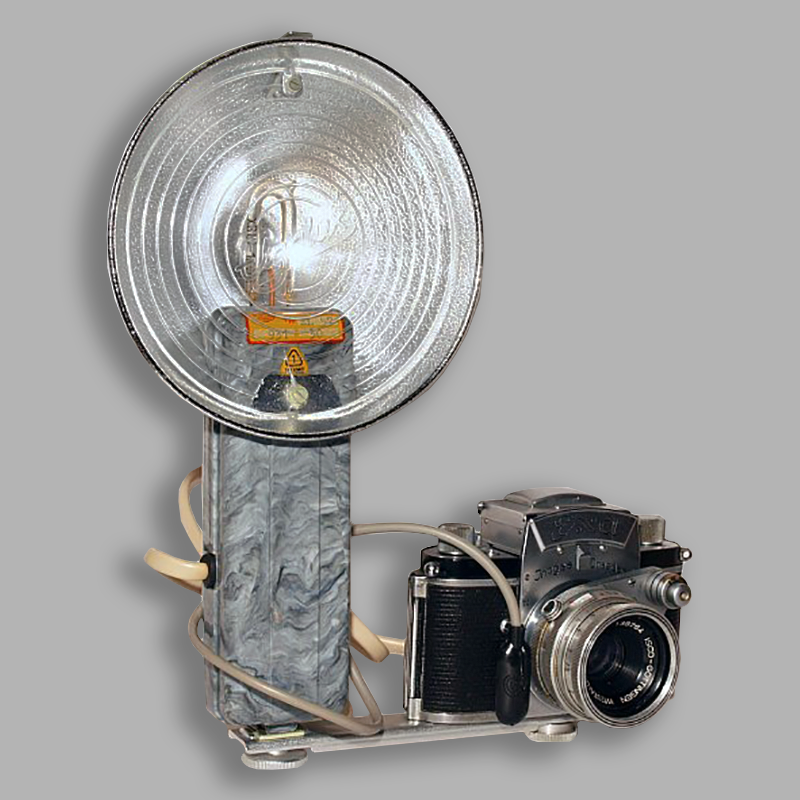
The Micky Blitz was replaced by the Elgalux towards the end of the 1950s, which was offered in this design as a pure mains flash unit. The Elgalux – like the Mickey – can be found in various marbled plastic housing versions.
Elgawa offered a powerful SBN 64 control unit to power its mains flash units. This could also be used to operate the ZB and RB ring flash units delivered to Ihagee. Inside there is a transformer that charges a high-voltage capacitor bank to 480V. These are available at two connection sockets. The flash units were connected via special high-current plug connections according to the GDR standard. The required energy can be set from 65-400 Ws using a 4-stage rotary switch. The SBN 64 also supplies 6 V voltage for the pilot light of the ring flash units.
- Origin: Plauen, Germany
- Year of Construction: 1958
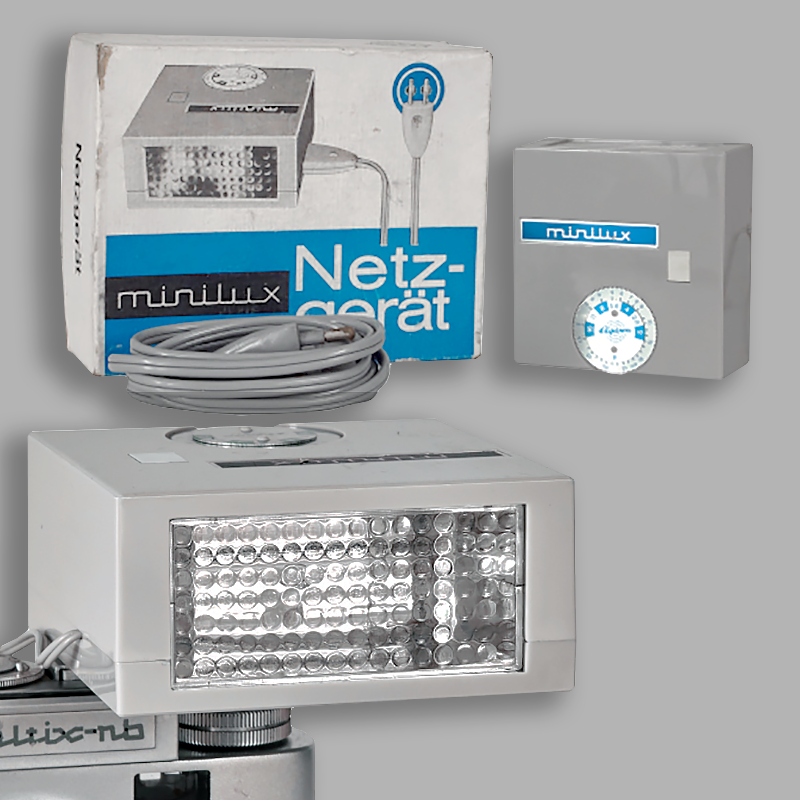
The Elgawa Minilux is an electronic flash unit from VEB Elgawa in Plauen. The voltage required for ignition is supplied by the 220 volt connection, but the cable can then be removed to trigger the flash.
There was also a battery housing as an accessory, which is pushed into the hot shoe under the speed camera. Both parts then form a unit, although somewhat bulky, but independent of the power grid. The guide number was 24 at ISO 80/20°
As was usual at the time, the flash connection was made using a cable and plug on the PC socket. The Elgawa Minilux has an aperture calculator and a test trigger on the top, there are no other accessories.
- Origin: Plauen, Germany
- Year of Construction: 1960
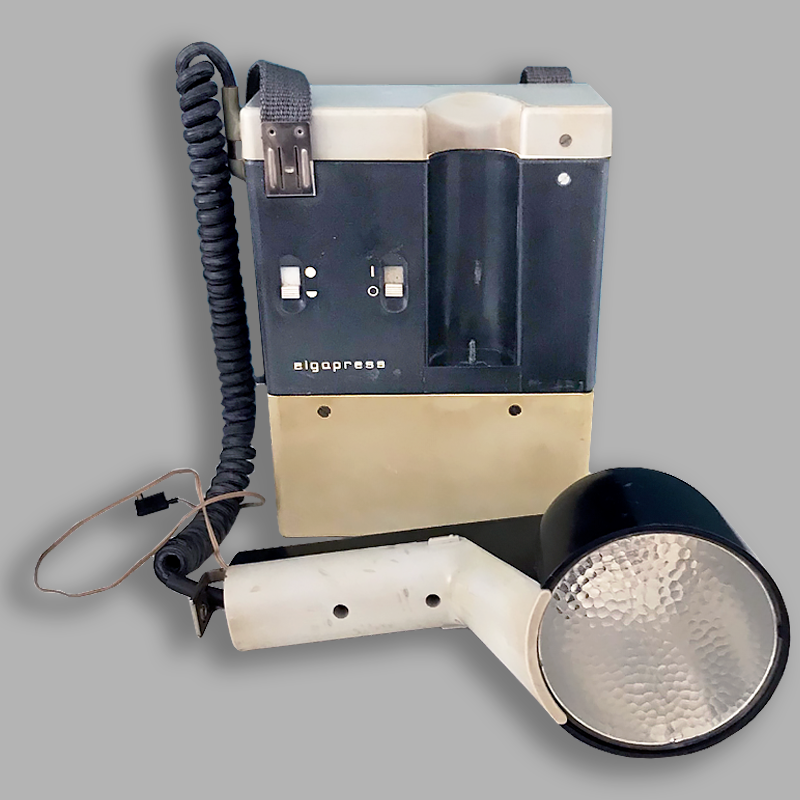
The counterpart to the Ultrablitz, Multiblitz or Meca-Stabblitz in West Germany was the Elgapress as a successor to the Elgablitz in the GDR. The device was designed to be so expandable that everything was possible, from a “simple” reporter flash to a complete studio flash system. The individual parts are the generator part, the battery part, the power supply and the light(s).
The performance data were impressive: guide number at 18 DIN: 45; Flash energy: 165 Ws; Flash sequence: 9-15 seconds with a flash duration of 1/600s. However, it was heavy! All together Flash rod, generator part , power supply and battery pack a proud 7.7 kg. The powerful SBN 64 control unit was available as a power supply for an extensive studio system.
- Origin: Plauen, Germany
- Year of Construction: 1960s
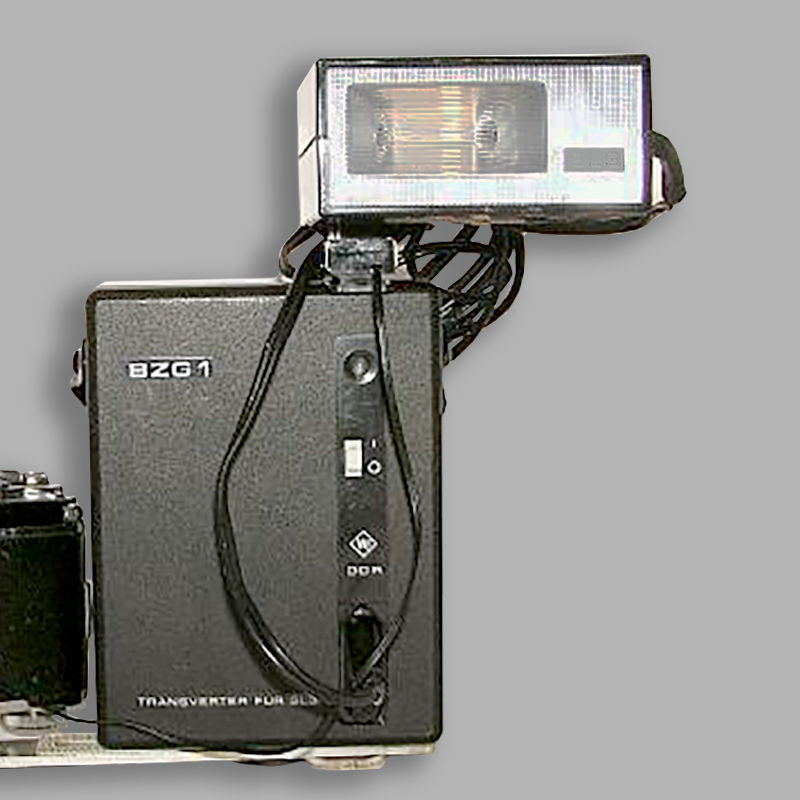
In the GDR, the SL3 was the electronic flash unit for connection via hotshoe, not particularly powerful, but reliable. Its guide number of 24 at ISO 100/21° was quite sufficient for home use. It was produced in large numbers from around 1970 and was only replaced by the more powerful N 128 in the mid-1980s. Even today you can still find tons of SL 3 or N 128.
Inserted batteries and an inverter circuit provided 220 volts alternating voltage on which the SL 3 flash could be operated. A small special feature was the BZG1 transverter that was available with the SL 3. With this – and with 4 mono cells 1.5 V – mains-independent flash operation of the SL3 was also possible. For easy use, the Elgawa SL 3 has an aperture calculator on the top.
- Origin: Plauen, Germany
- Year of Construction: 1970
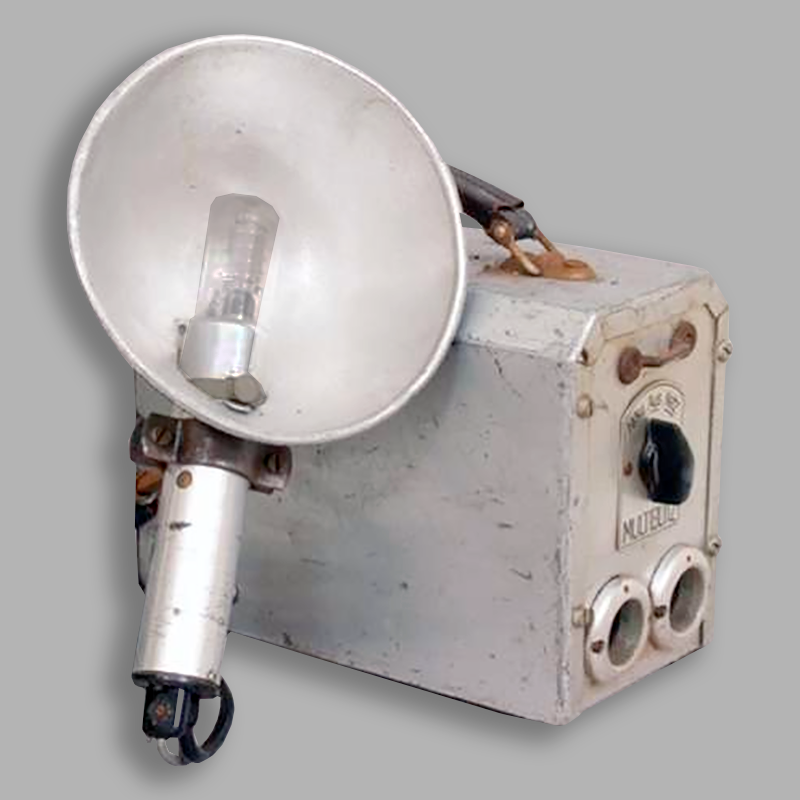
In 1948, Mannesmann GmbH, Cologne, introduced its first electronic flash unit in Germany, and series production began in 1949 (also at Blaupunkt and Elmed at the same time). The Mannesmann Multiblitz was the first German electronic flash unit ever in 1948 – it weighed more than 8kg without a battery!
The Cologne Mannesmann multi-flashes have remained on the photography market to this day. With professional devices such as Rekord or Sirius, but also in the semi-professional and amateur range such as Junior, Filius and later the Multiblitz Color, Mannesmann was always represented in the more demanding photography sector. The Multiblitz IIIa, for example, was the most powerful portable reporter device in the late 1950s.
- Origin: Westhoven/Cologne, Germany
- Year of Construction: 1948
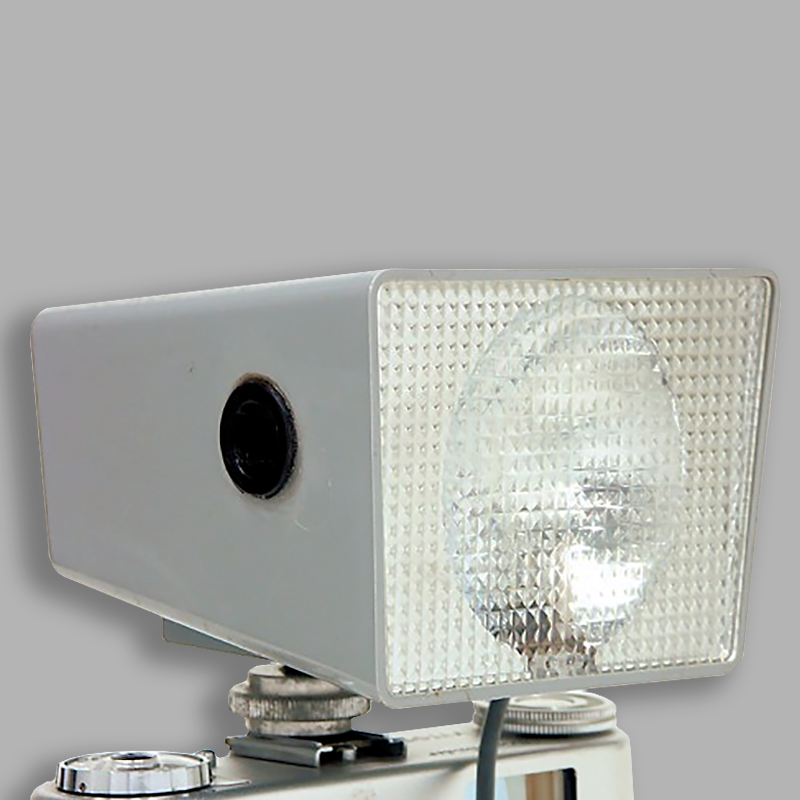
Electronic flash unit type Ariosa B 100 for connection to the camera PC socket, manufactured by Photographische Geräte Armin Sauer, Reutlingen.
The voltage required for ignition is supplied by the 220 volt connection. This compact electronic flash unit was built in the early 1960s when an easy hotshoe connection was not yet compulsory.
The connection socket is on the side and can be clearly seen in the photo. The cable can then be removed to trigger the flash.
The guide number is not so high, namely, 13 for color film at 18° DIN and 17 for black and white film at 17° DIN/40ASA.
- Origin: Reutlingen, Germany
- Year of Construction: 1960
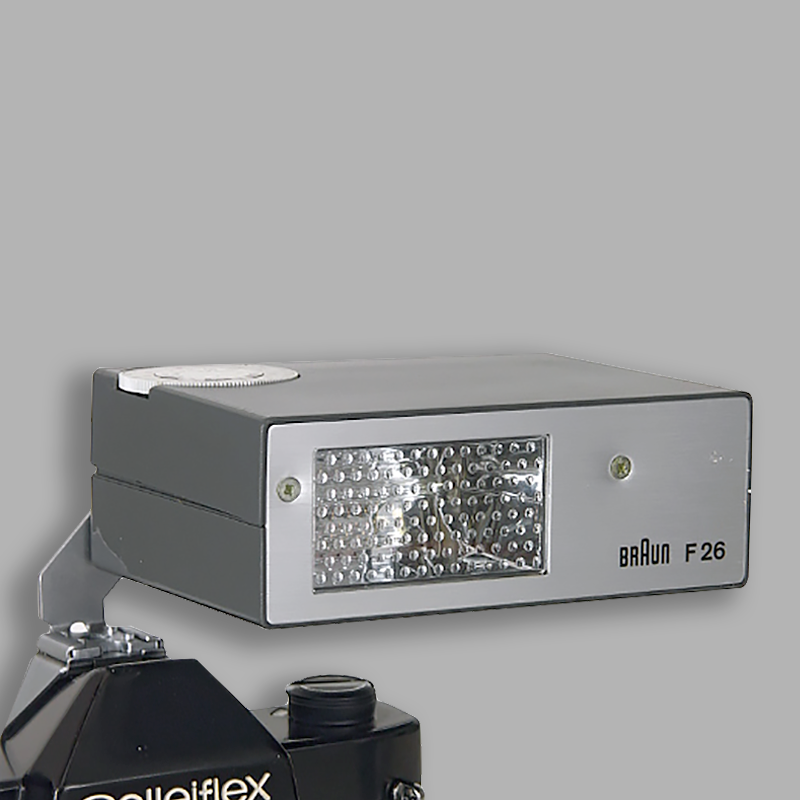
Powerful clip-on electronic flash type Braun Hobby F 26 from Braun AG, Frankfurt am Main, with built-in battery for power supply. The design was penned by the well-known Braun designer Dieter Rams, who introduced a functional and straightforward design.
On the top of the flash there is the necessary aperture calculator and on the left side the standby lamp and a test trigger. The connection for the charger is designed as a three-pin plug and is also located on the left side.
The flash base can be pushed in and removed, so the speed camera can be easily stowed away. The Braun Hobby F 26 is triggered by a removable sync cable. The guide number is 20 at ISO 50/18°.
- Origin: Frankfurt am Main, Germany
- Year of Construction: 1963
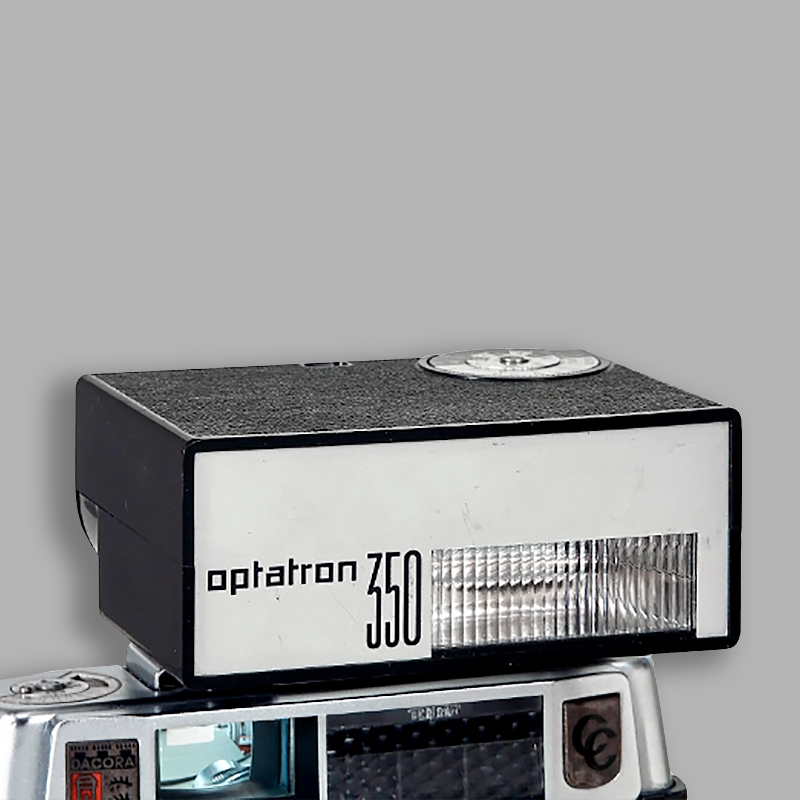
Like most radio and television manufacturers, Loewe Opta also manufactured accessories for the then booming photographic technology. There were a whole series of Loewe Optatron flash units in high-quality, compact designs.
The Loewe Optatron 350 electronic flash unit with guide number 16 at ISO 50/18° has a built-in NiCd battery that can be charged using an external charger. Pure mains operation or dual operation is also possible with this flashgun. The Loewe Optatron 350 is connected to the camera using a hotshoe and also a cable via a PC socket. A special feature of the Optatron 350 is a rotating flash base that allows the electronic flash unit to be positioned vertically. The calculator on the top is only used to determine the required aperture.
- Origin: Berlin, Germany
- Year of Construction: 1965
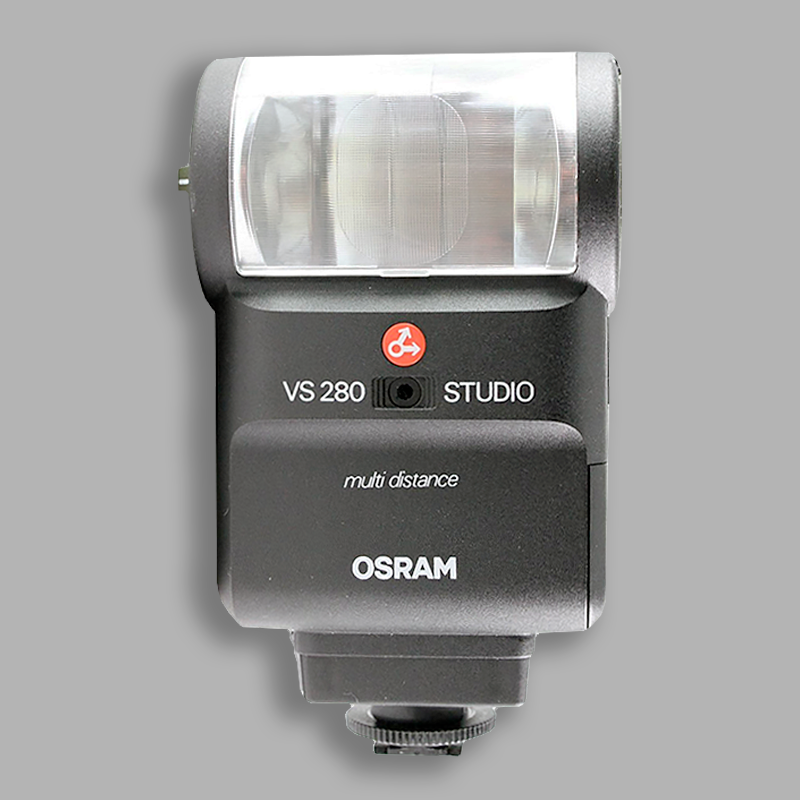
Although the lightning pioneer Osram manufactured xenon flash tubes for other manufacturers in the early 1950s, it was only from around 1980 that Osram offered its own electronic flash units. But, these flash devices were no longer built in-house but were taken from production in the Far East.
In 1978, the “Vario-Reflector” was the first electronic flash unit with a horizontally movable flash tube. The VS 280 Studio equipped with it is also a universal computer flash; its vario reflector can be adjusted for focal lengths of 28, 40 and 85 mm. It can also be swiveled through 90° and can therefore be adjusted for direct and indirect light. Thanks to the SCA 300 adapter system, it can work with all known system cameras and TTL flash control.
- Origin: Munich, Germany
- Year of Construction: 1978
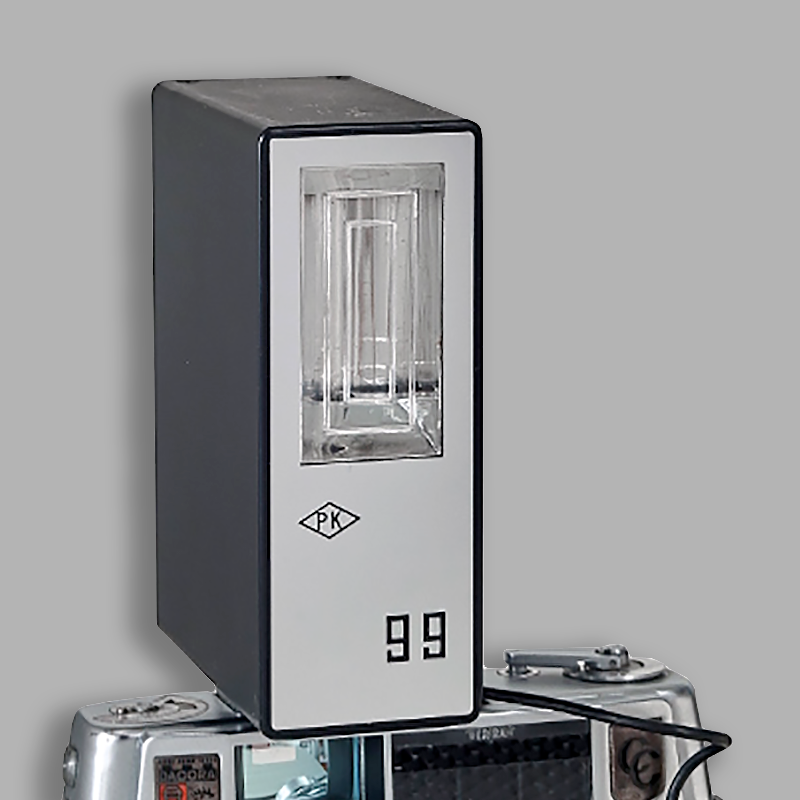
The PK 99 electronic flash unit from Paffrath & Kemper in Cologne is a well-equipped compact flash unit with a fairly high light output for the time.
As was common at the time, the PK 99 has a built-in NiCd battery that can be charged using an external charger. Pure mains operation or dual operation is also possible with this electronic flash unit.
There is no regulation of the flash output; the calculator on the back of the flash unit is only used to determine the required aperture.
The guide number is not so high, namely 18 at ISO 50/18°. The PK 99 can be connected to the camera using a hotshoe and also through a cable via a PC socket.
- Origin: Cologne, Germany
- Year of Construction: 1960s
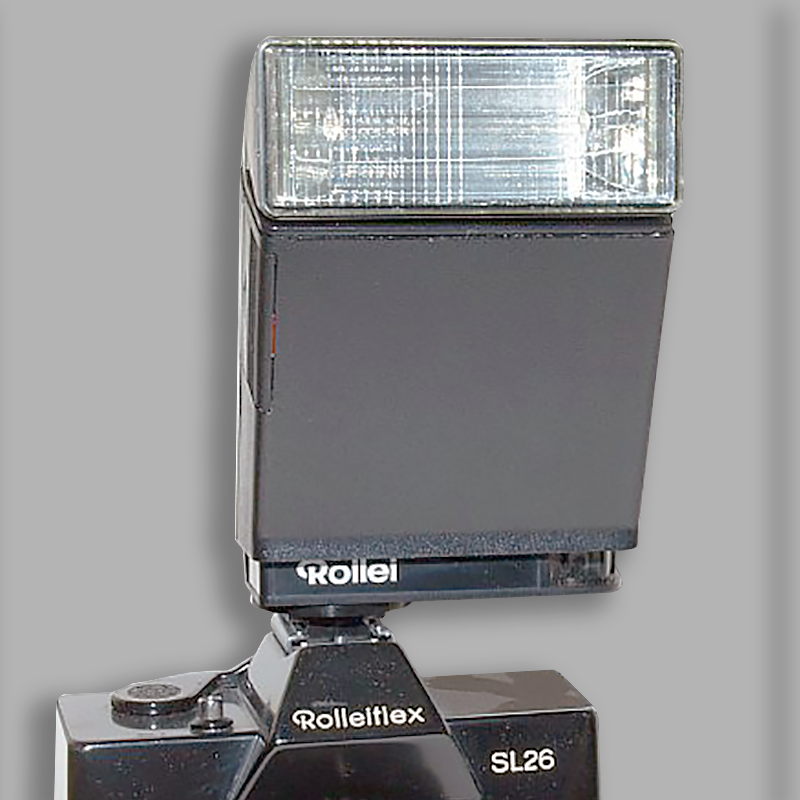
From around the mid-1960s, Franke & Heidecke also sold some electronic flash units with the Rollei label. However, these were no longer camera-specific and hardly any of them came from Braunschweig. The E15 and E20 were compact flash units that worked well together for the mother of all compact cameras, the Rollei 35, but could also be used with other cameras. There were also various flashlights and the usual cuboid speedlights.
One of the most universal compact electron flash units is the Rollei Beta 4. The flash with guide number 24 only requires 2 AA batteries and is widely adjustable horizontally (axially) and vertically in grids and thus enables flashing from and in all positions. Extra was a case with telephoto, wide angle and color attachments.
- Origin: Braunschweig, Germany
- Year of Construction: 1965
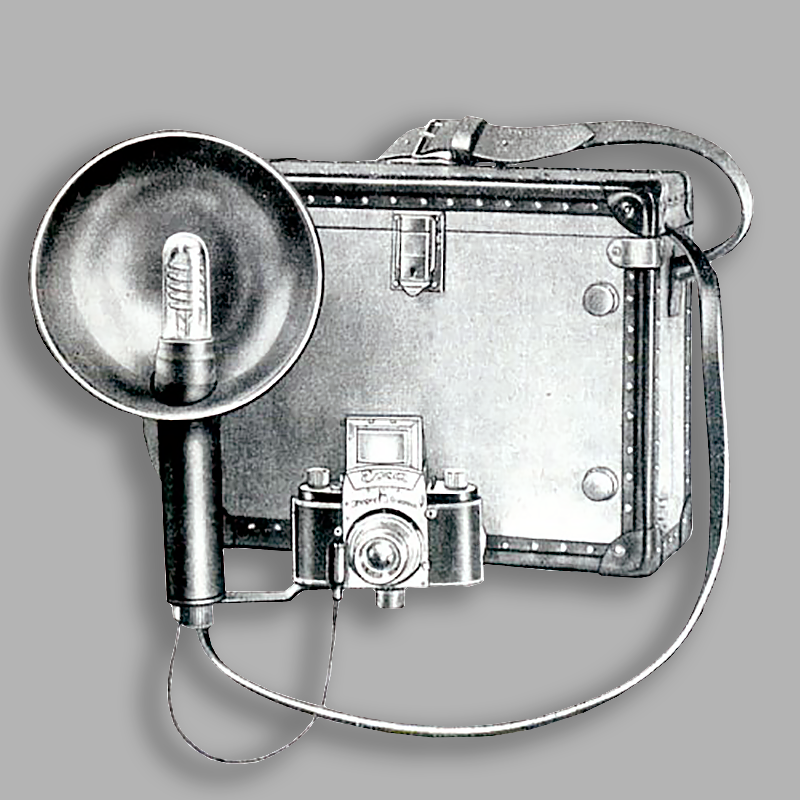
In addition to Mannesmann, Blaupunkt was one of the electron flash pioneers with the Ultrablitz-Reporter I. Such devices, which required a carrying case for the power supply and control electronics, could of course only be used for professional applications. Although this Ultrablitz Reporter, which came onto the market in 1950, “only” weighed 6.3 kg, it was certainly not an amateur device.
Although the case was half the size of its predecessor, its price of 490 DM (plus power supply for network operation 25 DM) usually did not fit the wallet of an Akarette or Paxette owner. The guide number as a performance measure did not yet exist at that time, but the light output of 12 million lumens in 1/5000 second suggests that this device could certainly brighten a small church.
- Origin: Hildesheim, Germany
- Year of Construction: 1950
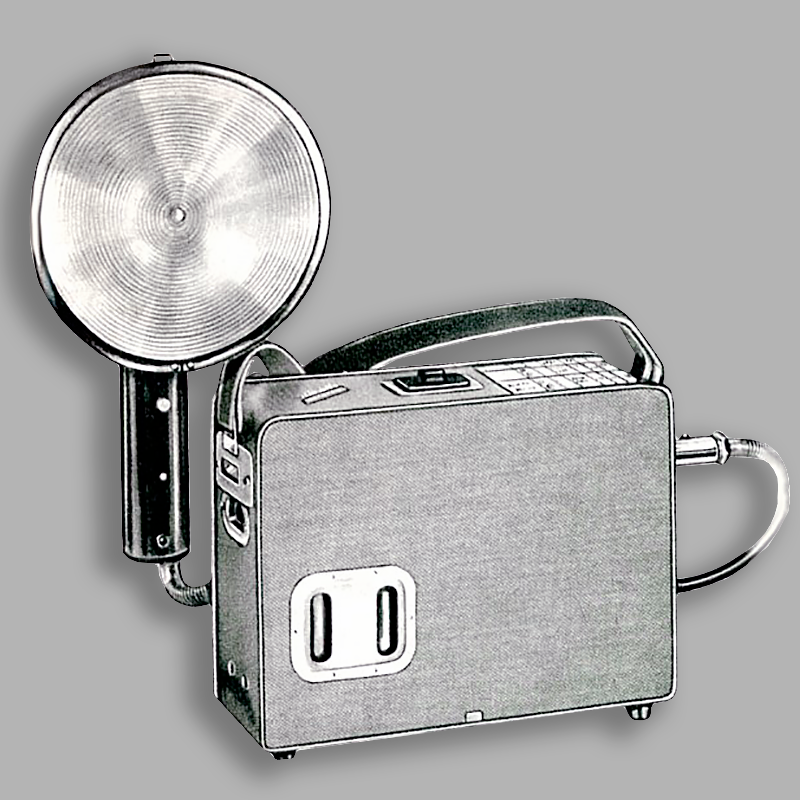
After Deutsche Elektronik GmbH took over the Ultrablitz devices, the Ultrablitz-Reporter II L was the most powerful electronic flash for industrial and professional applications in the mid-1950s. With 225 watts, it became the “king of flashlight” with universal expandability.
For color reversal film 18/10 DIN, the guide number was 34; it could be increased to 48 using an additional device. For B/W film 17/10 DIN and with a 20% longer development time the guide number grew to 80. In the basic configuration for mains and battery operation, with vario reflector, duplex flash tube, the device including charger cost 464 DM. With additional parts, such as the light output doubling device , second lamp rod, photo cell or pilot light, this price could easily be doubled.
- Origin: Hildesheim, Germany
- Year of Construction: 1955
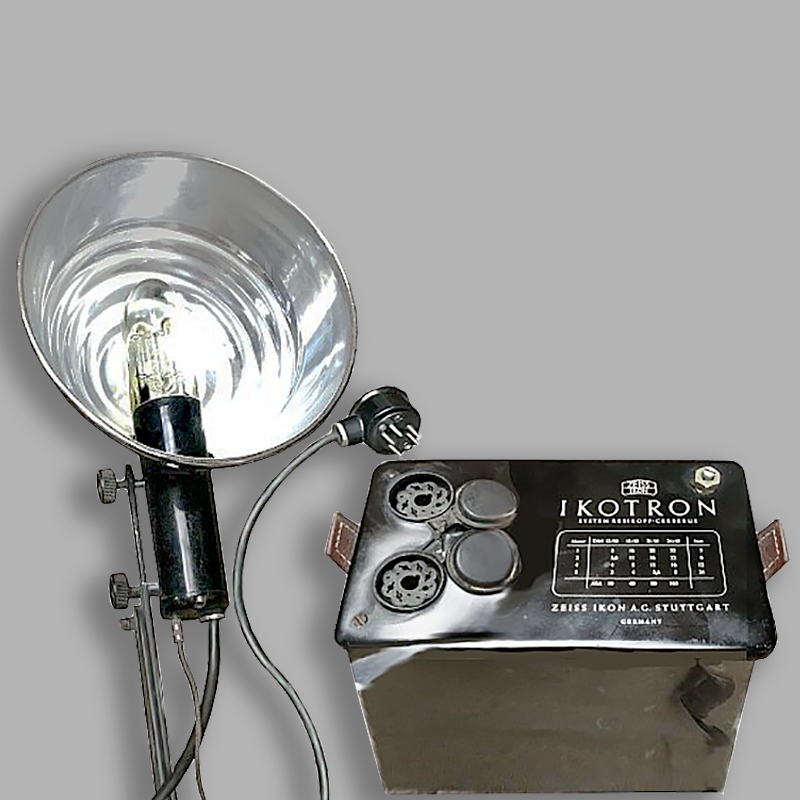
In the early 1950s, Zeiss Ikon took over the distribution of the Eclatron, developed by Dimitri Rebikoff and shown in the introductory text. In the mid-1950s, the “Ikotron (Rebikoff system)” was one of the best professional electronic flash units in Germany. Although the almost 5 kg device was not for the amateur, with 2000 flashes from one battery charge it gave the professional more continuous light than any other device. After that, however, a new high-voltage dry battery with 1200 volts was due.
At 75 watts, the Ikotron wasn’t exactly a light giant, but the charging time between two flashes was only 1 second. With 21/10 DIN and black and white film, the guide number of 44 was absolutely sufficient; Two flash lamps can be operated with the supply device.
- Origin: Stuttgart, Germany
- Year of Construction: 1951

